EXTREMELY RARE to FIND "Battlefield" Dug RELIC WW2 Nazi German SA / SS Officer Dagger ! ( Recovered Historic Kurland Pocket ! )
Here is a cool and rare display relic German
Officer SA/SS dagger blade and guard missing handle except for a couple
pieces. Nice relic condition was ground dug at Kurland.Displays Incredible
!
Kurland Pocket Battlefield area.At the start of Operation Barbarossa
in 1941, Courland, along with the rest of the Baltic, was overrun by
Army Group North headed by Field Marshal Wilhelm Ritter von Leeb. In
1944, the Red Army lifted the siege of Leningrad and re-conquered the
Baltic area along with much of Ukraine and Belarus. However, some 200,000
German troops held out in Courland. With their backs to the Baltic Sea.
they were trapped in what became known as the Courland Pocket, blockaded
by the Red Army and the Red Baltic Fleet. Colonel-General Heinz Guderian,
the Chief of the German General Staff, insisted to Adolf Hitler that
the troops in Courland should be evacuated by sea and used for the defense
of Germany. Hitler refused, and ordered the Wehrmacht, Waffen-SS, Luftwaffe
and Kriegsmarine forces in Courland to continue the defence of the area.
Hitler believed them necessary to protect Kriegsmarine submarine bases
along the Baltic coast. On January 15, 1945, Army Group Courland (Heeresgruppe
Kurland) was formed under Colonel-General Dr. Lothar Rendulic The blockade
by elements of the Leningrad Front remained until May 8, 1945, when
the Army Group Courland, then under its last commander, Colonel-General
Carl Hilpert, surrendered to Marshal Leonid Govorov, the commander of
the Leningrad Front (reinforced by elements of the 2nd Baltic Front)
on the Courland perimeter. At this time the group consisted of the remnants
of some 31 divisions. After May 9, 1945, approximately 203,000 troops
of Army Group Courland began moving to Soviet prison camps in the East.
The majority of them never returned to Germany.
SOLD
%20(627x261)%20(627x261).jpg)
%20(2).jpg)
%20(640x480)%20(640x480).jpg)
%20(2)%20(1).jpg)
%20(2).jpg)
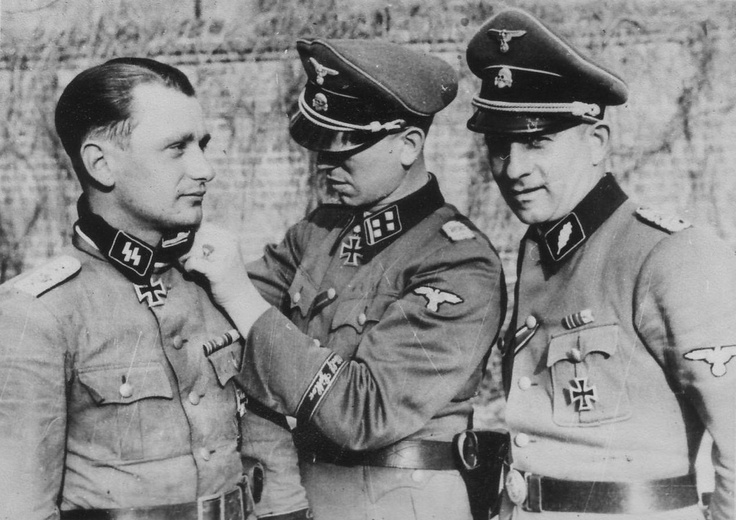
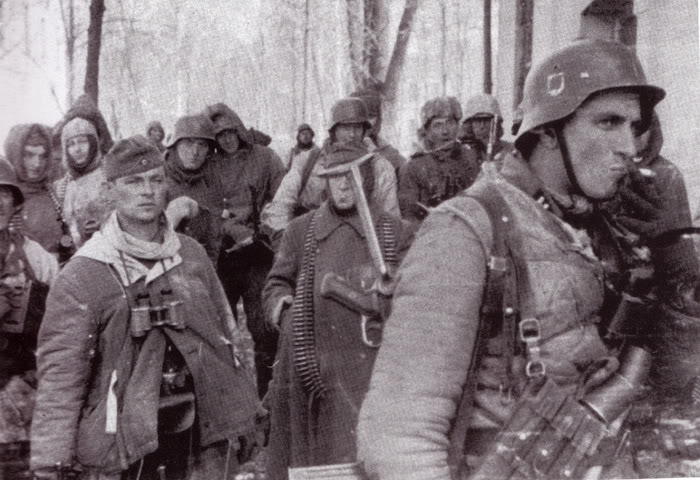
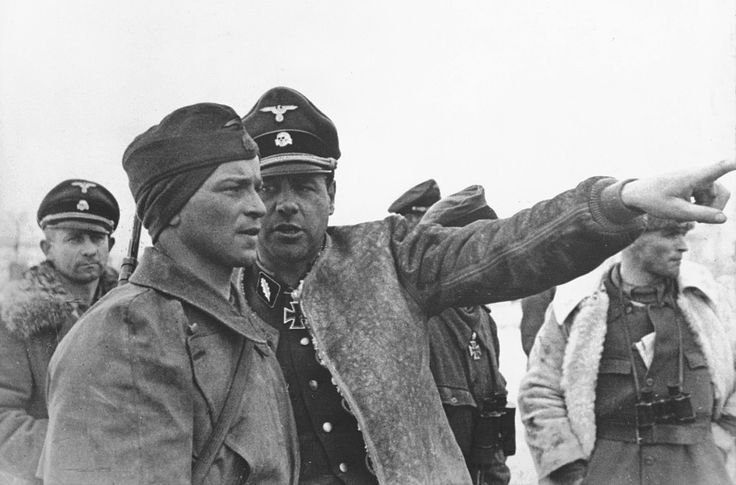
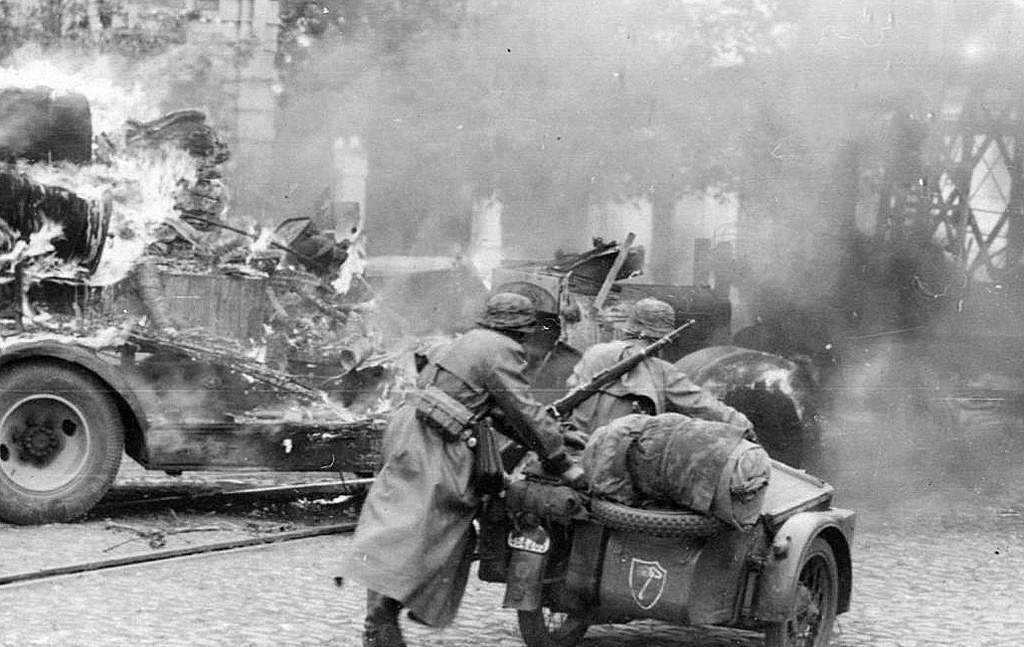
RARE FIND! German WW2 SS or PANZER DIVISION Painted SYMBOL Directional or VEHICLE Metal Marker Pennant SIGN ! ( Recovered Historic Stalingrad )
Here is a unique and rarely found German
WW2 divisional painted pennant sign from Stalingrad!
The Battle of Stalingrad was a major battle of World War II in which
Nazi Germany and its allies fought the Soviet Union for control of the
city of Stalingrad (now Volgograd) in southwestern Russia. The battle
took place between 23 August 1942 and 2 February 1943. It was among
the largest on the Eastern Front and was marked by its brutality and
disregard for military and civilian casualties. It was amongst the bloodiest
battles in the history of warfare with the higher estimates of combined
casualties amounting to nearly two million deaths. In its defeat, the
crippling losses suffered by Germany's military proved to be insurmountable
for the war. The battle was a turning point in the war, after which
the German forces attained no further strategic victories in the East.The
German offensive to capture Stalingrad commenced in late summer 1942,
supported by intensive Luftwaffe bombing which reduced much of the city
to rubble. The German offensive eventually became bogged down in house-to-house
fighting; and despite controlling over 90% of the city at times, the
Wehrmacht was unable to dislodge the last Soviet defenders clinging
tenaciously to the west bank of the Volga River.
SOLD
.jpg)
.jpg)
%20(2).jpg)
.jpg)
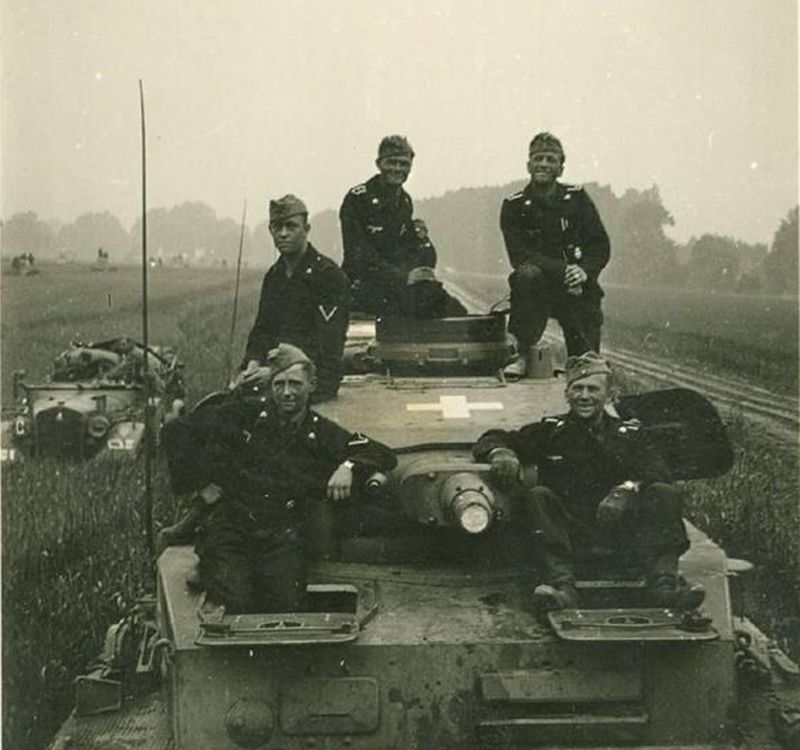
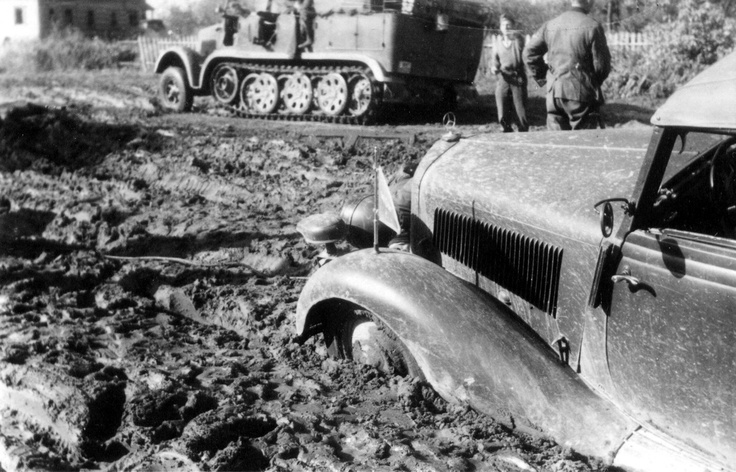
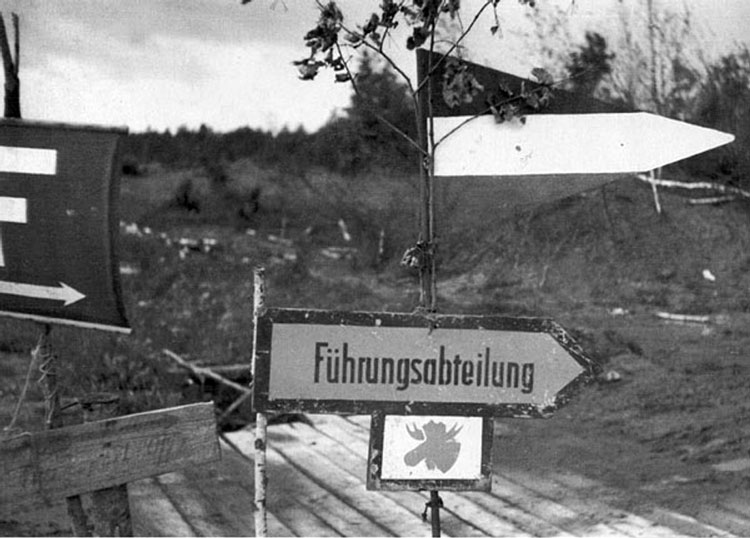
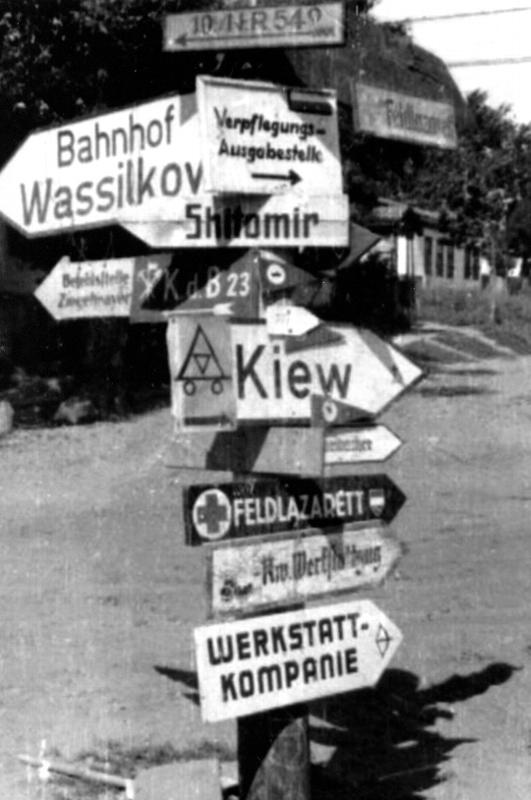
RARE FIND ! "Battlefield Recovered
and Battle Damaged" GERMAN WW2 AWARD "TANK ASSAULT BADGE"
Award for Bravery ( Recovered Radzymin, Poland Eastern Front - Largest
Tank Battle in Poland )
Here is a chance to own a solid and "Battle Damaged" German WW2 Tank Assault Badge that was lost in battle. These are my personal favorite awards as for 'eye appeal' . These are usually always found broken when dug with one end snapped off or missing the bar. This example still has the bar clasp intact and maker marked Peekhaus. it displays beautifully. In response to Vedeneev's thrust, the Germans started a tactical counter-attack near Radzymin on July 31. The offensive, carried out by 4 understrength Panzer divisions, was to secure the eastern approaches to Warsaw and Vistula crossings, and aimed to destroy the three tank corps of the Second Tank Army in detail. Under the leadership of German Field Marshal Model, the 4th, 19th, Hermann Göring, and 5th SS Panzer Divisions were concentrated from different areas with their arrival in the area of Wolomin occurring between July 31 and August 1, 1944. Although the 3rd Tank Corps gamely defended the initial assaults of the Hermann Göring and 19th Panzer Divisions, the arrival of the 4th Panzer and 5th SS Panzer Divisions spelled doom for the isolated and outnumbered unit.Already on August 1, the leading elements of the 19th and 5th SS Panzer Divisions, closing from the west and east respectively, met at Okuniew, cutting the 3rd Tank Corps off from the other units of the Second Tank Army. Pressed into the area of Wolomin, the 3rd Tank Corps was pocketed and destroyed on August 3, 1944. Attempts to reach the doomed tank corps by the 8th Guards Tank Corps and the 16th Tank Corps failed, with the 8th Guards Tank Corps taking serious losses in the attempt. Although Model had planned to attack the 8th Guards Tank Corps next, the withdrawal of the 19th and Hermann Göring Panzer Divisions to shore up the German defenses around the Magnuszew bridgehead forced the remaining German forces around Okuniew to go on the defensive.For unknown reasons, on August 2, 1944 all armies that were to assault Warsaw had their orders changed. The 28th, 47th and 65th Armies were ordered to turn northwards and seize the undefended town of Wyszków and the Liwiec river line. The 2nd Tank Army was left in place and had to fight the Germans alone, without support of the infantry. Also, 69th Army was ordered to stop while the 8th Guards Army under Vasily Chuikov was ordered to halt the assault and await a German attack from the direction of Garwolin. Further combat lasted until August 10, when the Germans finally withdrew. Soviet losses were heavy, but not heavy enough to affect the overall course of their thrust to the vicinity of Warsaw. The 3rd Tank Corps was destroyed, the 8th Guards Tank Corps took heavy losses, and the 16th Tank Corps took significant losses as well. Overall, the Second Tank Army's losses were significant enough that it was withdrawn from the front lines by August 5, 1944.
SOLD
%20(640x480).jpg)
.jpg)
.jpg)
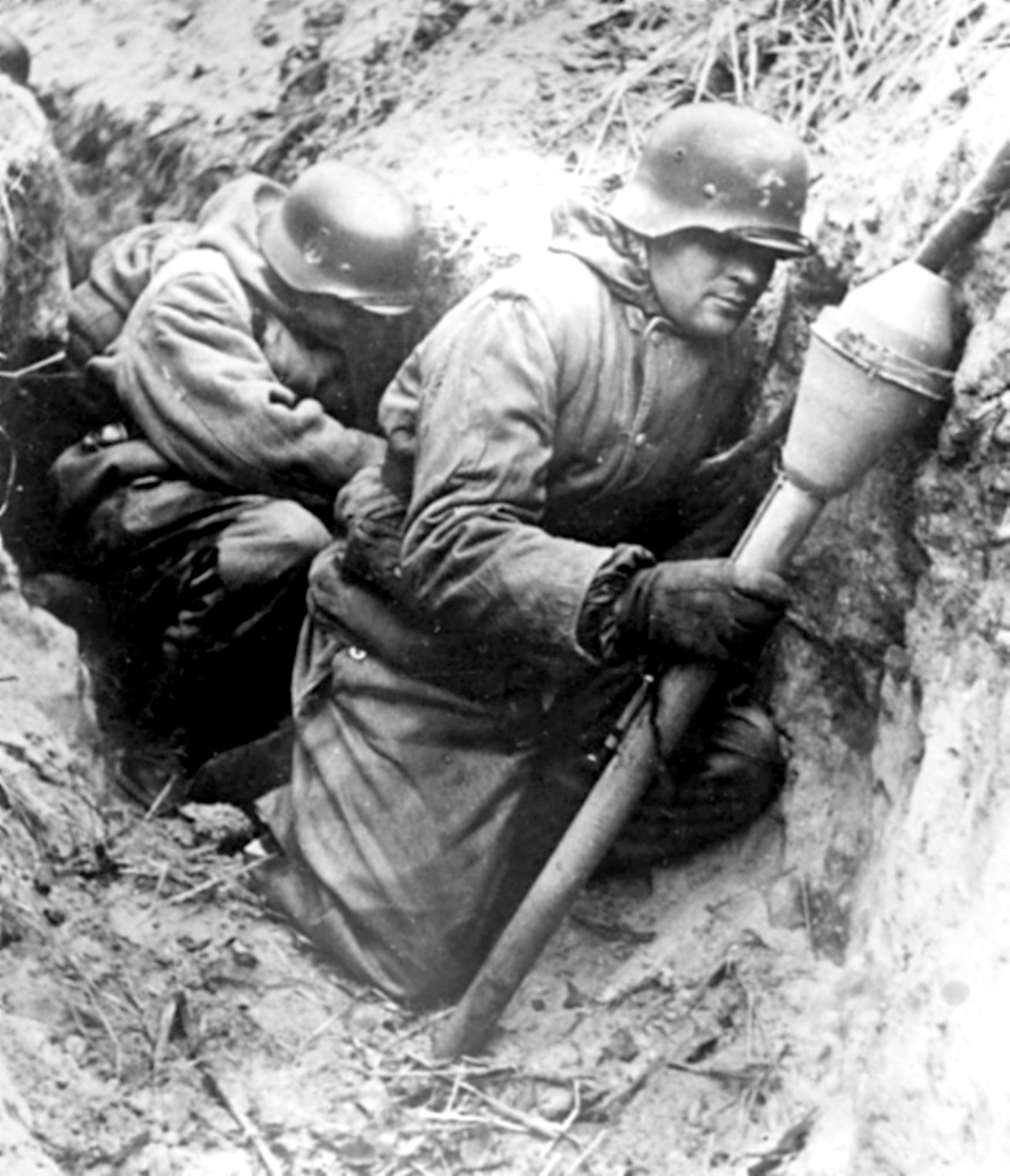
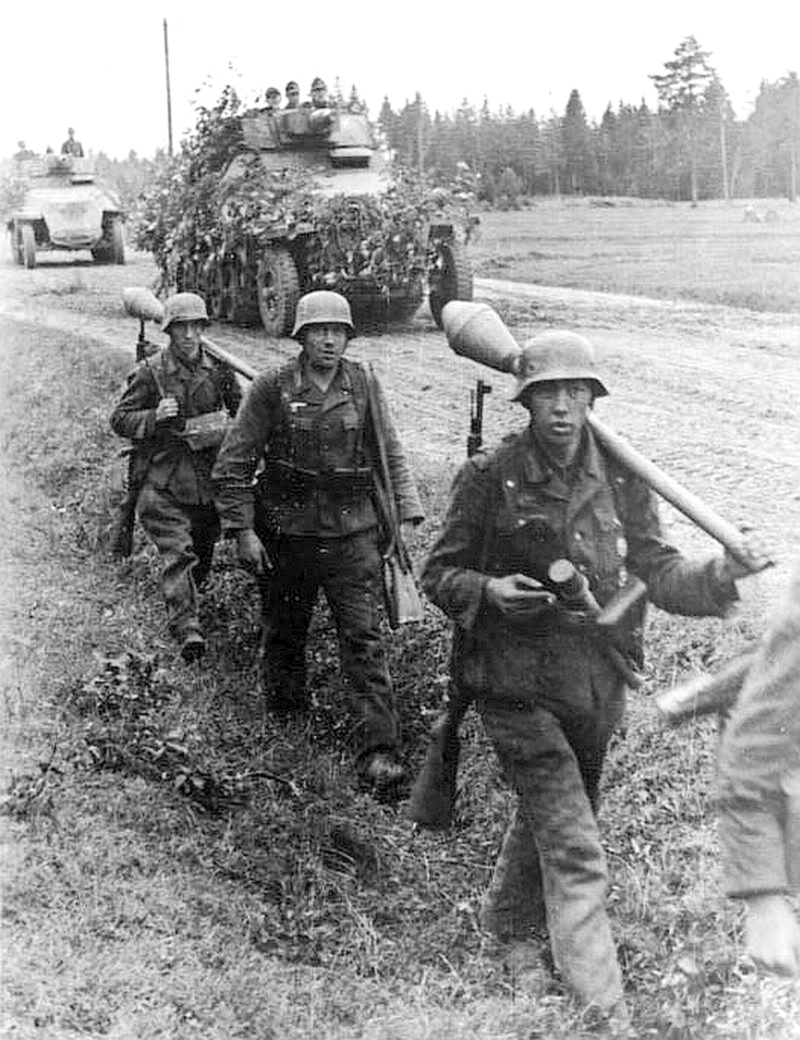
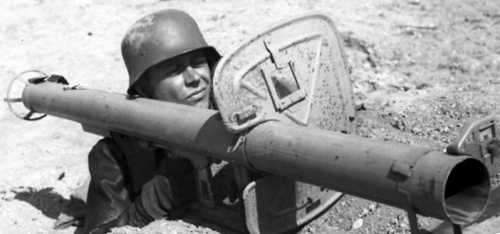
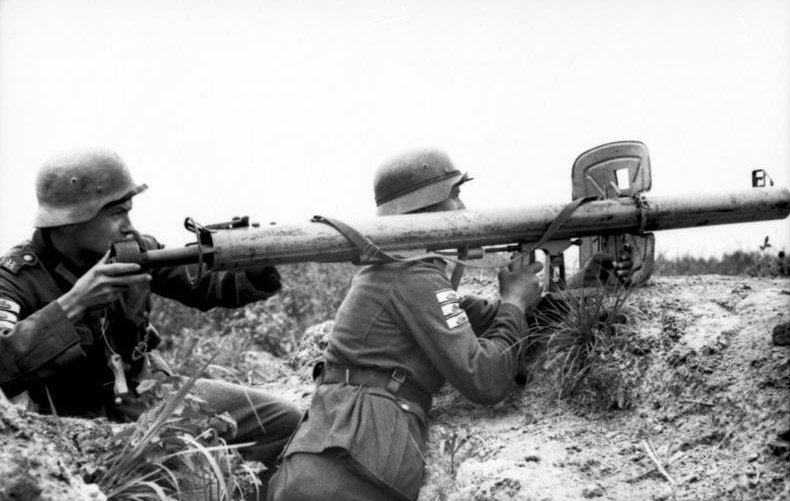
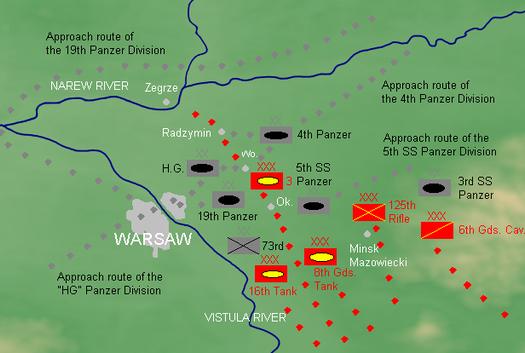
RARE WW2 "Battle Damaged"
and Battlefield Recovered German M35 SD "Waffen-SS" HELMET
SHELL !
( Recovered Kurland-Kessel )
Here is a nice Don't let this one get away! In the middle of October 1944, about 500,000 soldiers -- 32 German divisions and the 20,000 men of the Latvian Nineteenth Division of the Waffen–SS -- were cut off from the rest of the German army and encircled. To the east and the south was the Soviet army, to the north and the west -- the Baltic Sea. The Latvians called it Kurzemes katls, the Kurland kettle; the Germans called it Festung Kurland, Fortress Kurland. For the Nineteenth Division Kurland was truly the last stand. They took part in six major battles between October 12, 1944, and April 3, 1945. Together with the German army units they on the whole held the front line, keeping the Bolsheviks out of Kurland, until May 8, 1945, when Germany capitulated. These soldiers remained undefeated until the final moments of the war, im Felde unbesiegt, as the Germans say. In one of the last battles, Captain Miervaldis Adamsons' company in a single 24-hour period repelled seven attacks by the Russians, and after the battle the bodies of 400 fallen Soviet soldiers could be counted in front of the Latvians unconquered positions.The Soviet High Command asked the commanders of the First and Second Baltic Fronts to take forceful action in Kurland, in order to drive the enemy from the northern sector of the Baltic Sea and free their units for more important positions on the Soviet-German front. The first attempt occurred on October 16, 1944, but was stopped in the area around Tukums. The next Soviet offensive took place on October 27, but met with strong resistance from the outset and did not result in any gains. November 20 saw another offensive, but the Germans and Latvians stabilized their defensive line, utilizing favorable geographic features. Equally unsuccessful were the final attempts of the First and Second Baltic Front Armies to liquidate the German Army Group "Kurland" in December of 1944 and February and April of 1945.Soviet documents show that Stalin threw division after division into the Kurland inferno, disregarding the appallingly high losses. According to German estimates , the Soviet army lost 320,000 soldiers including those fallen, wounded, and taken prisoner and 2388 tanks, 659 planes, 900 cannons, and 1440 machine-guns.
SOLD
%20(640x480).jpg)
%20(2).jpg)
.jpg)
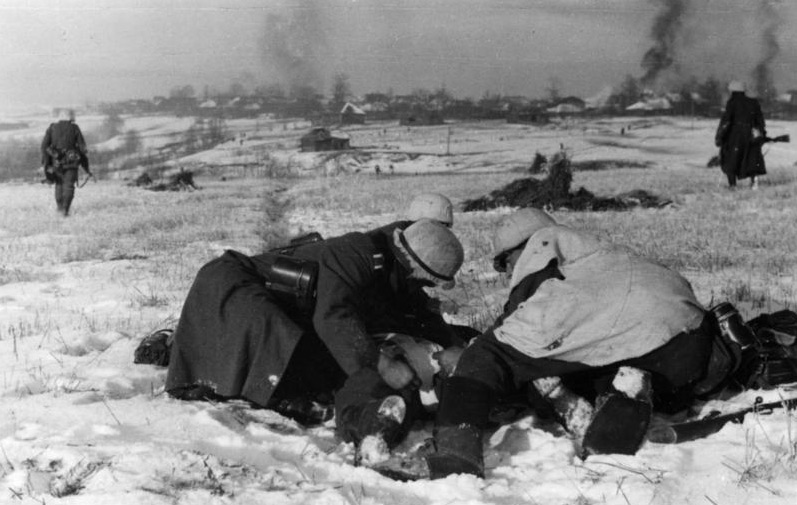
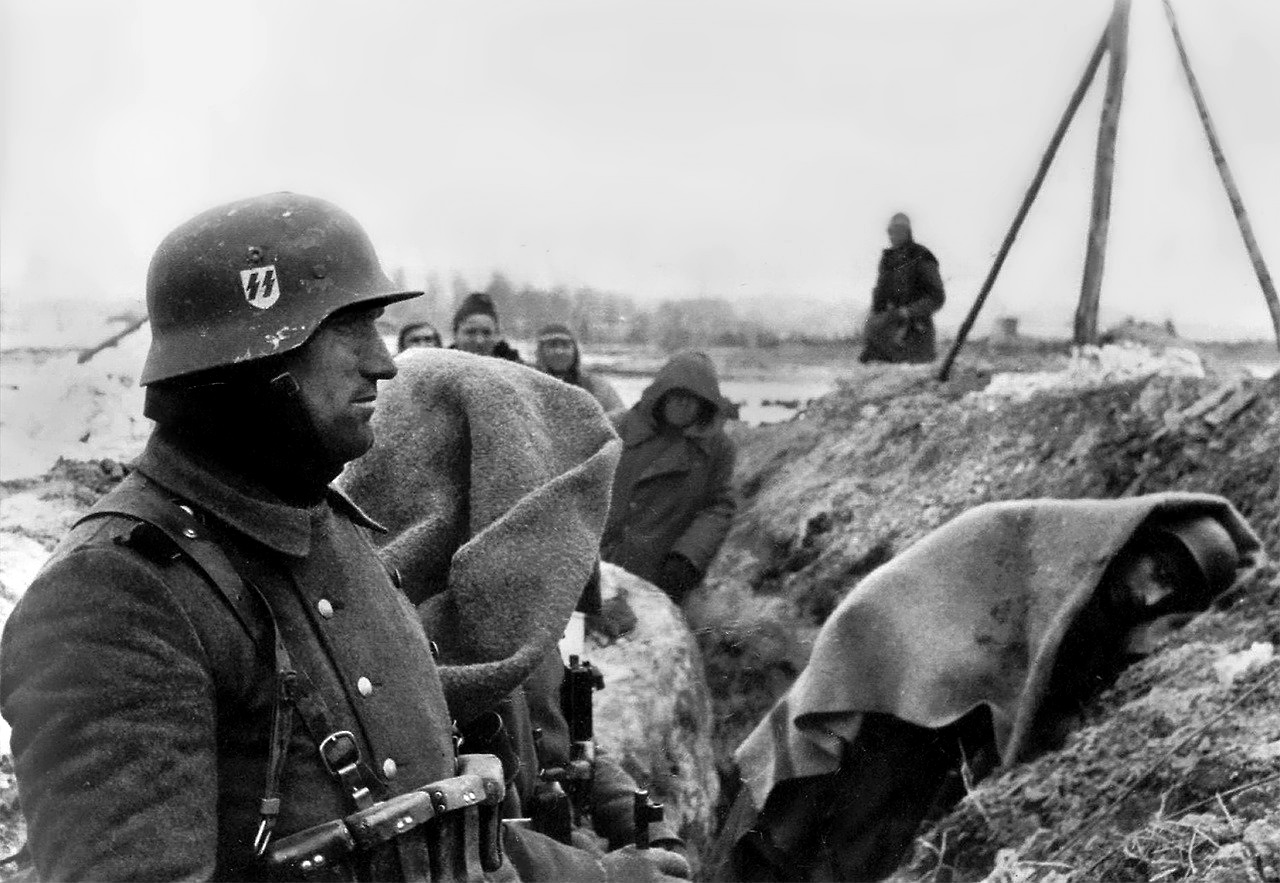
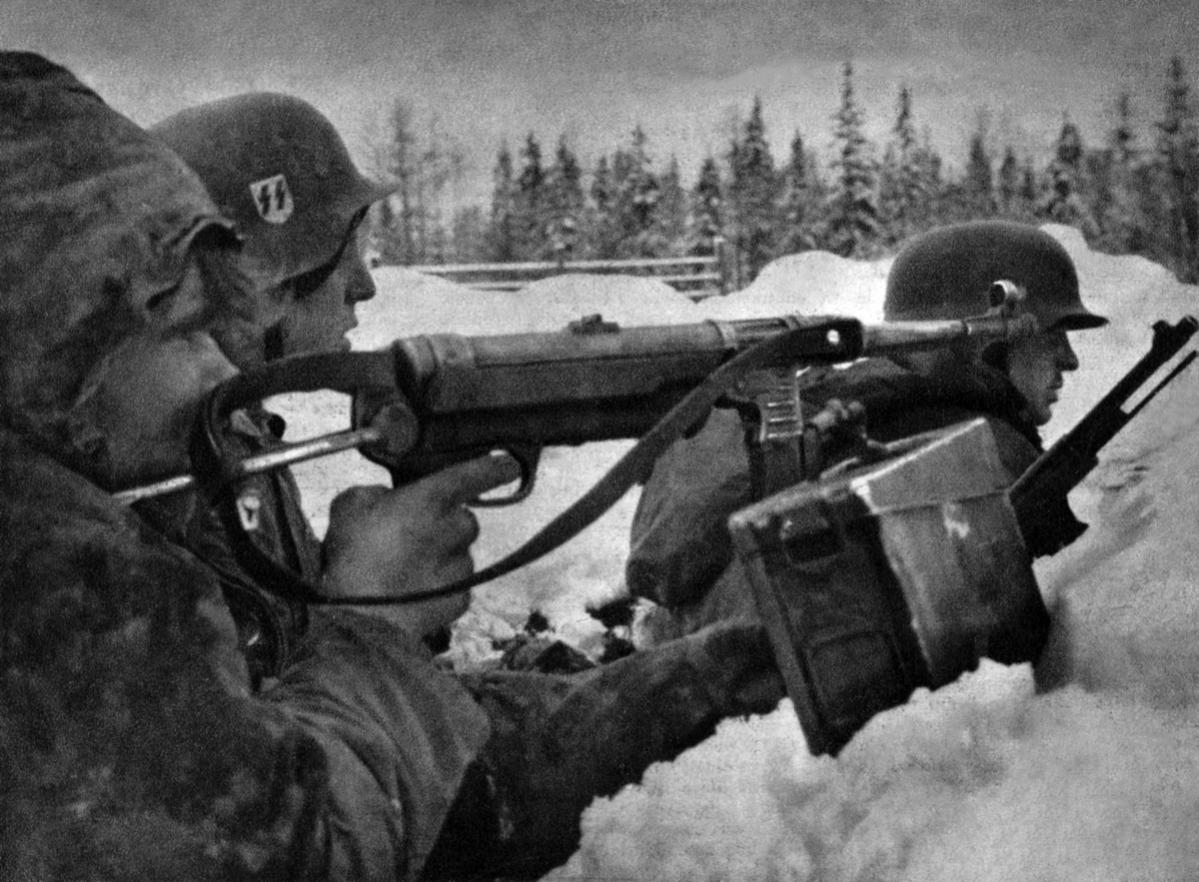
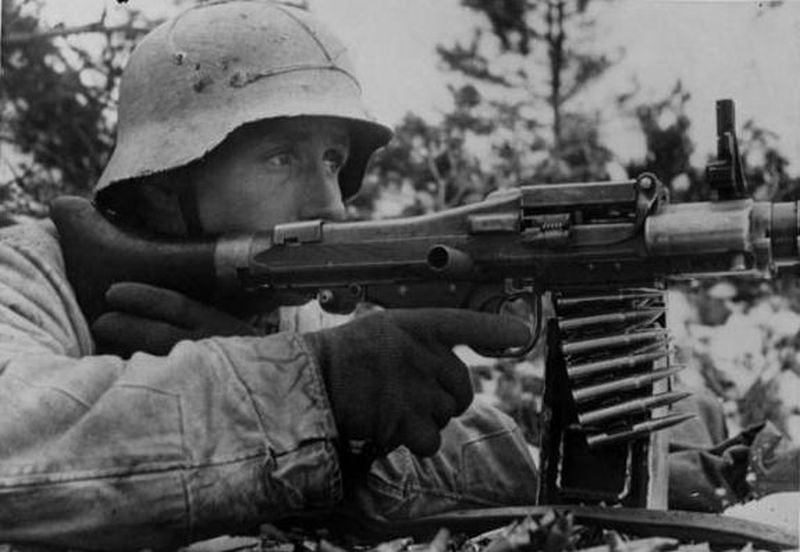
RARE AND HISTORIC ARTIFACT ! "Battle
Damaged" German WWII Ground Dug RELIC " SS Fallschirmjager
Battalion 600 " HELMET ! ( Ground Dug near Vilnius - Eastern Front
Campaign )
Here is as always a 100% original relic condition ground dug German
Fallschirmjager helmet that was recovered Villnius. German Para Helmets
are the rarest and most desireable collectible have in your collection.
The SS-Fallschirmjäger-Bataillon 500 was formed at Chlum, Czechoslovakia,
October 1943 (this was not the first attempt for form a paratroop unit
in the Waffen-SS, a failed attempt was made in 1937) and was made up
of volunteers from both regular Waffen-SS units and from men who had
been convicted of military offenses, such as falling asleep on guard
duty, the latter were given a chance to redeem themselves in combat.
It was sent to Luftwaffe Fallschirm-Schule Nr.3 at Mataruška banja,
Yugoslavia, for jump-training in November 1943 and later to Papa, Hungary,
where they completed their training. It was sent back to Yugoslavia
where they took part in anti-partisan operations until April 1944 when
the preparations for Operation Rösselsprung began. The men of the
batallion jumped and landed gliders near Partisan leader Josip "Tito"
Broz's headquarters in the mountains near Drvar 25 May 1944. The attack
was initially a surprise but Tito managed to escape and the paratroopers
were soon suffering heavy losses from the attacks by the partisans that
were arriving from the mountains around Drvar. The unit was relieved
by elements of 7. SS-Freiwilligen-Gebirgs Division Prinz Eugen and was
sent to Petrovac were it once again fought the partisans before being
sent to Ljubljana to rest in June.It took part in toppling Horthy in
Hungary with SS-Jäger-Bataillon 502. It was sent to Gotenhafen,
East Prussia, to take part in the occupation of the Aaland Islands in
the Baltic Sea together with the 416. Infanterie-Division, but the operation
had been cancelled when they arrived. They were instead transferred
to Riga and later to Vilnius were they took part in heavy fighting before
being sent to Memel October 1944.
It was disbanded October 1944 and the remaining soldiers were used to
form SS-Fallschirmjäger-Bataillon 600.
SOLD
.jpg)
.jpg)
.jpg)
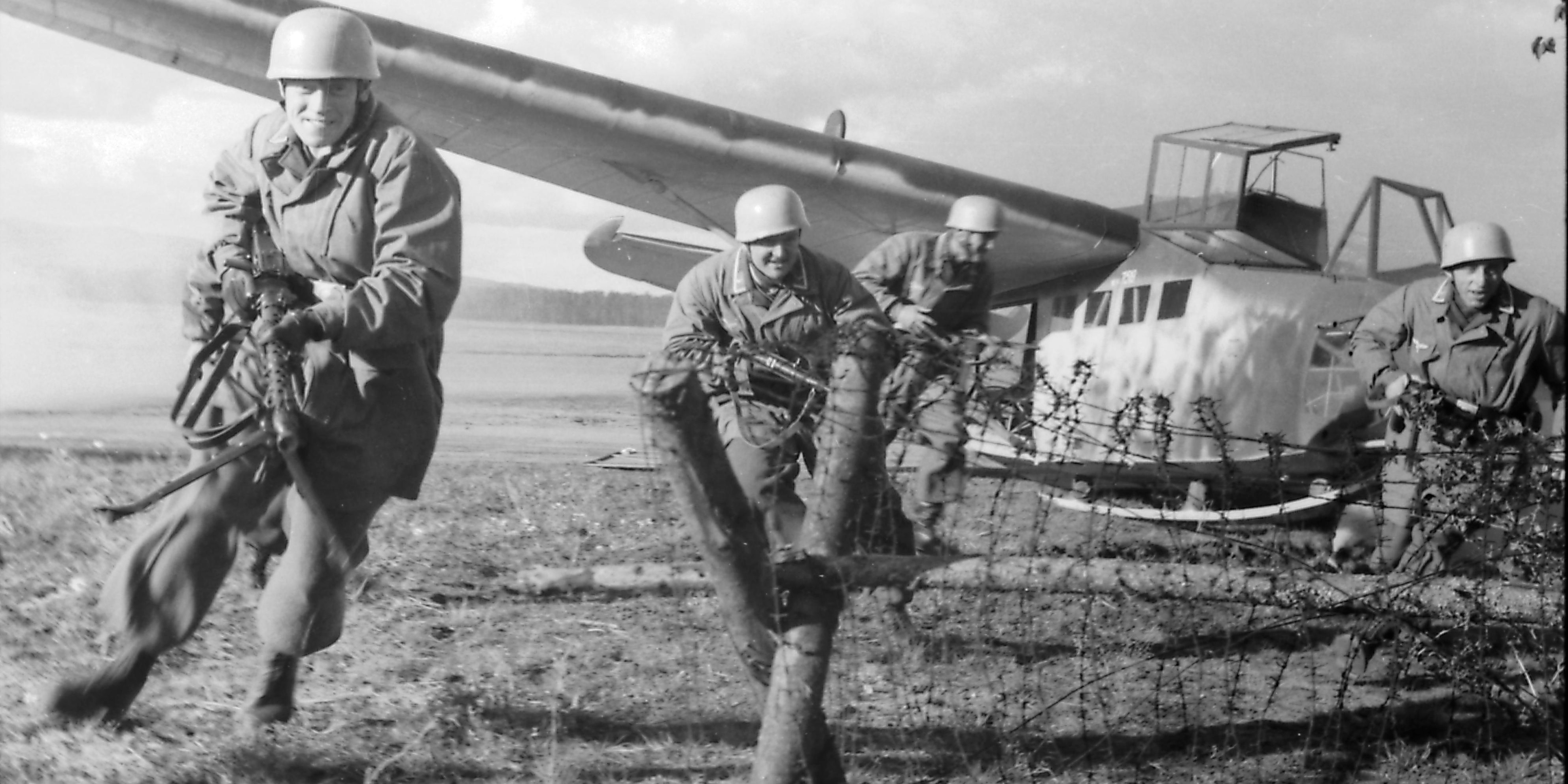
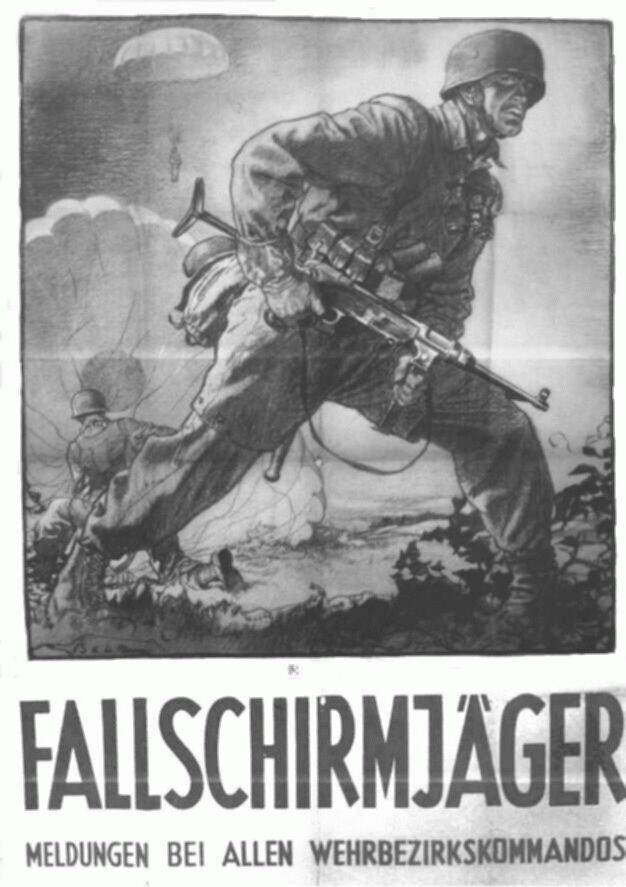
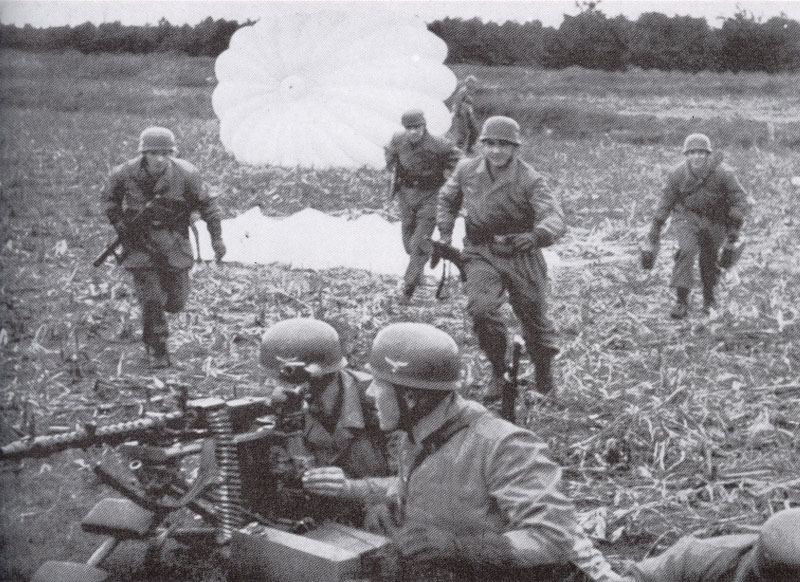
HIGHLY SOUGHT AFTER ! Original Lot
of 2 Ground Dug Relic GERMAN WAFFEN-SS Battle - Damaged M42 SD Raw Edge
HELMET Remains with Terrific Damage ! ( Recovered Kurland Battlefield
Surrender Site )
Here is relic helmet opportunity of 2 battle damaged relic helmets from
the collection that was dug in the 1980's in Kurland. The M42 raw edge
helmet has the "roof" blown off and displays incredible !
Priced right with the highly desireable visible SD SS Runes. Also a
DD SS Helmet solid with rust through damage. The price for the pair
is extremely affordable. At the start of Operation Barbarossa in 1941,
Courland, along with the rest of the Baltic, was overrun by Army Group
North headed by Field Marshal Wilhelm Ritter von Leeb. In 1944, the
Red Army lifted the siege of Leningrad and re-conquered the Baltic area
along with much of Ukraine and Belarus. However, some 200,000 German
troops held out in Courland. With their backs to the Baltic Sea. they
were trapped in what became known as the Courland Pocket, blockaded
by the Red Army and the Red Baltic Fleet. Colonel-General Heinz Guderian,
the Chief of the German General Staff, insisted to Adolf Hitler that
the troops in Courland should be evacuated by sea and used for the defense
of Germany. Hitler refused, and ordered the Wehrmacht, Waffen-SS, Luftwaffe
and Kriegsmarine forces in Courland to continue the defence of the area.
Hitler believed them necessary to protect Kriegsmarine submarine bases
along the Baltic coast. On January 15, 1945, Army Group Courland (Heeresgruppe
Kurland) was formed under Colonel-General Dr. Lothar Rendulic The blockade
by elements of the Leningrad Front remained until May 8, 1945, when
the Army Group Courland, then under its last commander, Colonel-General
Carl Hilpert, surrendered to Marshal Leonid Govorov, the commander of
the Leningrad Front (reinforced by elements of the 2nd Baltic Front)
on the Courland perimeter. At this time the group consisted of the remnants
of some 31 divisions. After May 9, 1945, approximately 203,000 troops
of Army Group Courland began moving to Soviet prison camps in the East.
The majority of them never returned to Germany.
SOLD
.jpg)
.jpg)
.jpg)
.jpg)
%20(2).jpg)

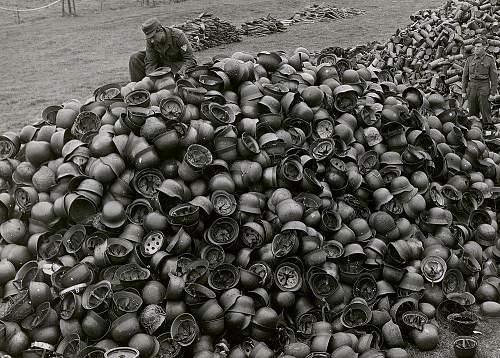
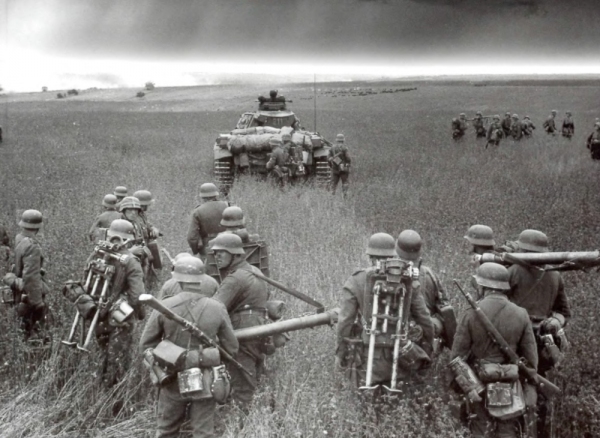
WW2 Battlefield Recovered "DUTCH SS HELMET" with "Wolfs Angel" DECAL - ( Found Kurland Pocket )
Rare chance to own a battlefield dug WW2 Dutch SS Volunteer Helmet. September 1944 the front could collapse at any moment. The Red Army was attacking Riga, and the whole Heeresgruppe was in great danger. The commanders therefore asked permission to withdraw and leave Estonia. Even Hitler realised that there was no choice and on September the 23rd 1944 he ordered the troops to head for Kurland (in Lithuania). 'Nederland', weakened by a high number of casualties, arrived on October the 14th and were ordered to immediately dig in again. The Brigade had only fought for a few days around Gumi-Wolmar, but lost a large number of soldiers due to the heavy Red Army attacks. The situation in the new region, the Kurland, was looking dismal. Although the frontlines were now shorter and therefore more defensible, the Red Army kept coming. Very briefly after the arrival of 'Nederland' in the Kurland the first attacking Soviet-Russian columns were spotted. Together with 'Nordland' and the 126.Infantry Division the Brigade was able to repel the attack. They had prevented the Red Army from conquering the city of Libau, which was very important from an infrastructural point of view. The first Kurland battle had ended, and hundreds of Red Army soldiers had died in their attempt to take the Dutch lines. The marshy and wooded Kurland region proved to be very suitable for partisan actions. It was therefore no surprise that the Dutch SS-men were confronted with this kind of guerrilla-warfare. After a number of raids and sabotage actions committed by groups of partisans, commander Wagner took drastic measures. The deaths of some SS-men were avenged on the orders of Wagner by shooting a (unknown) number of civilians. These kind of barbaric murders only had a temporary effect on the partisan actions, however STAVKA, the Red Army high command, launched a second Kurland-offensive on October the 27th. The Waffen-SS Division 'Nordland' and the X.Armycorps had an especially rough time. 'Nederland' was stationed just outside the area in which the main Soviet-Russian attack was taking place and the second Battalion of the Regiment 'De Ruyter' was hit very hard by two frontal infantry attacks. Halfway November the Red offensive had lost its power, however, and the Wehrmacht and Waffen-SS forces could recover as the front was stabilising. The time away from combat was used to dig new trenches and bunkers in the 'Krimhildestellung' (mainly at night because of the ever active Red Airforce).
SOLD
.jpg)
.jpg)
.jpg)
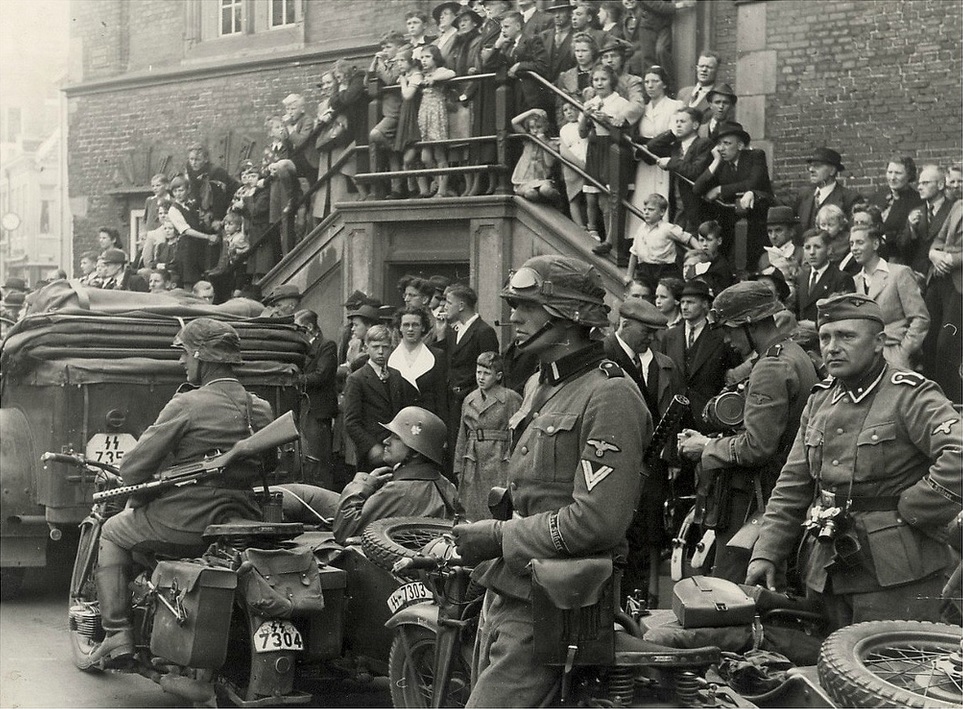
.jpg)
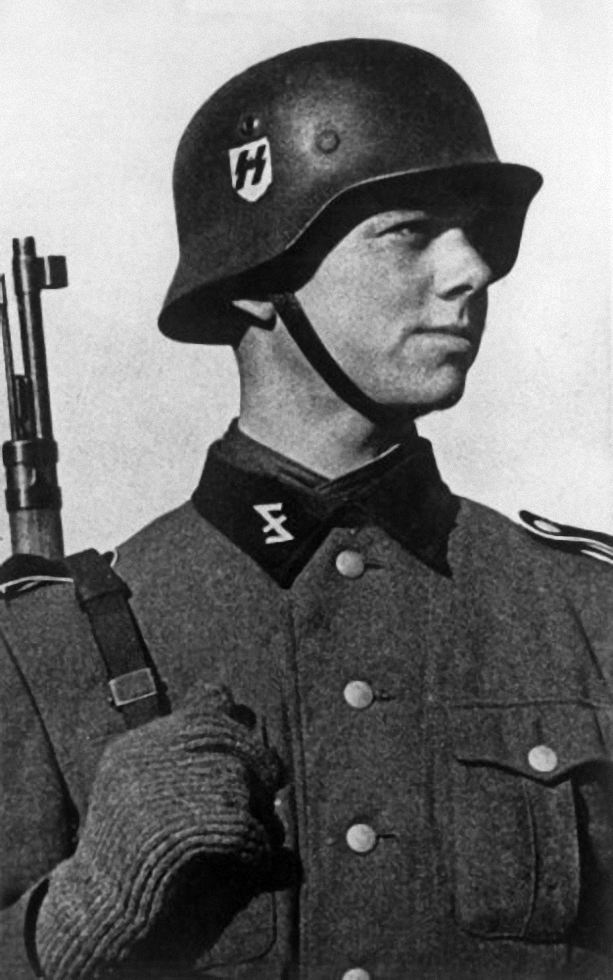
RARE OPPORTUNITY ! WW2 German Battlefield
Relic Panzer Battalion "KING TIGER" TANK Large ARTILLERY SHELL
Casing !
( Recovered Kurland Pocket Eastern Front )
Here is an opportunity to own and display
a battlefield dug German WW2 relic Tiger Tank shell casing that was
recovered Kurland Pocket.
In Latvia (Kurland), the 510th Heavy Panzer Battalion, re-equipped with
Tiger IIs, fought on in the pocket until May 1945. Another unit soldiering
on the eastern front was the former 102 SS S.Pz.Abt. which was almost
wiped out in Normandy, before being re-equipped with Tiger IIs in September
1944 and renamed the 502nd SS Schwere Panzer Abteilung. This unit was
stationed on the Oder front line and later tried to get through the
Soviet encirclement of Berlin. The remnants were destroyed in the Halbe
Pocket. Another former SS unit operating with Tiger Is in February 1944,
fought with the IIIrd (Germanic) SS Panzer Corps until October. It was
then re-equipped with Tiger IIs in November, and renamed the 503 s.Pz.Abt.,
taking part in the Army Group Weichsel, operating from February to March.
In April, the 503rd had destroyed 500 enemy tanks for the loss of 39.tvia
(Kurland), the 510th Heavy Panzer Battalion, re-equipped with Tiger
IIs, fought on in the pocket until May 1945. Another unit soldiering
on the eastern front was the former 102 SS S.Pz.Abt. which was almost
wiped out in Normandy, before being re-equipped with Tiger IIs in September
1944 and renamed the 502nd SS Schwere Panzer Abteilung. This unit was
stationed on the Oder front line and later tried to get through the
Soviet encirclement of Berlin. The remnants were destroyed in the Halbe
Pocket. Another former SS unit operating with Tiger Is in February 1944,
fought with the IIIrd (Germanic) SS Panzer Corps until October. It was
then re-equipped with Tiger IIs in November, and renamed the 503 s.Pz.Abt.,
taking part in the Army Group Weichsel, operating from February to March.
In April, the 503rd had destroyed 500 enemy tanks for the loss of 39.
The 56-calibre long 88 mm KwK 36 was chosen for the Tiger. A combination
of a flat trajectory from the high muzzle velocity and precision Leitz
Turmzielfernrohr TZF 9b sight (later replaced by the monocular TZF 9c)
made it very accurate. In British wartime firing trials, five successive
hits were scored on a 410 by 460 mm (16 by 18 in) target at a range
of 1,100 metres (3,600 ft). Compared to the other contemporary German
tank guns, the 7.5 cm KwK 40 on the Sturmgeschütz III and Panzer
IV and the 7.5 cm KwK 42 on the Panther tank, the Tiger's gun had superior
penetration and high-explosive firepower PzGr. 39 (armour-piercing,
capped, ballistic cap)The ammunition for the Tiger had electrically
fired primers. Four types of ammunition were available but not all were
fully available; the PzGr 40 shell used tungsten which was in short
supply as the war progressed.
• PzGr. 40 (armour-piercing, composite rigid)
• Hl. Gr. 39 (high explosive anti-tank)
• sch. Sprgr. Patr. L/4.5 (incendiary shrapnel)
SOLD
.jpg)
.jpg)
.jpg)
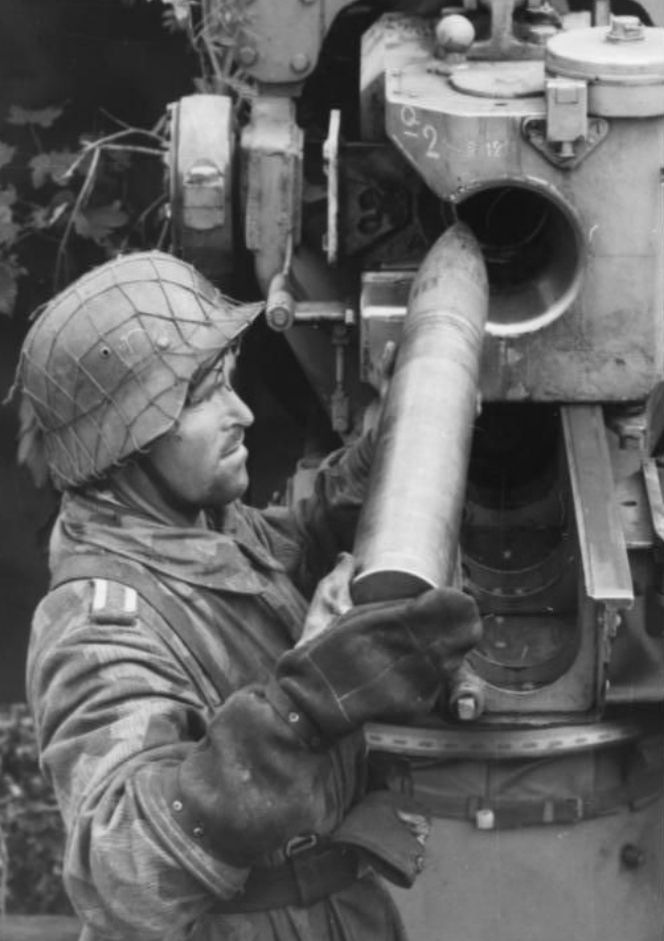
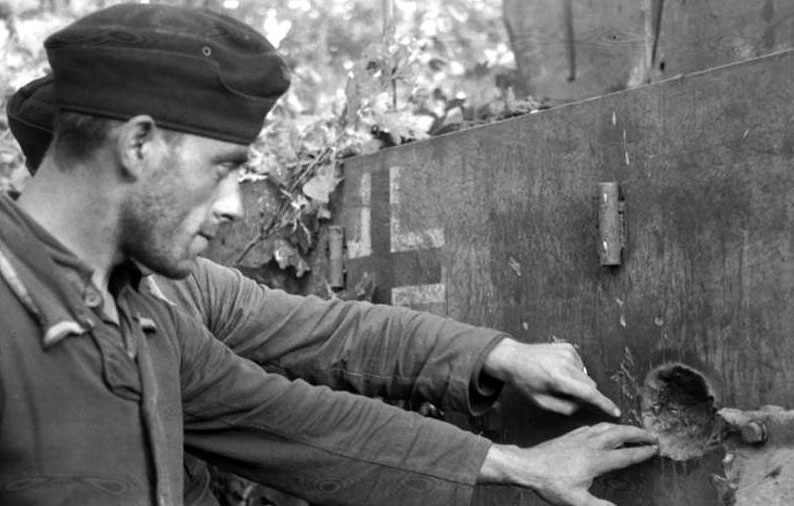
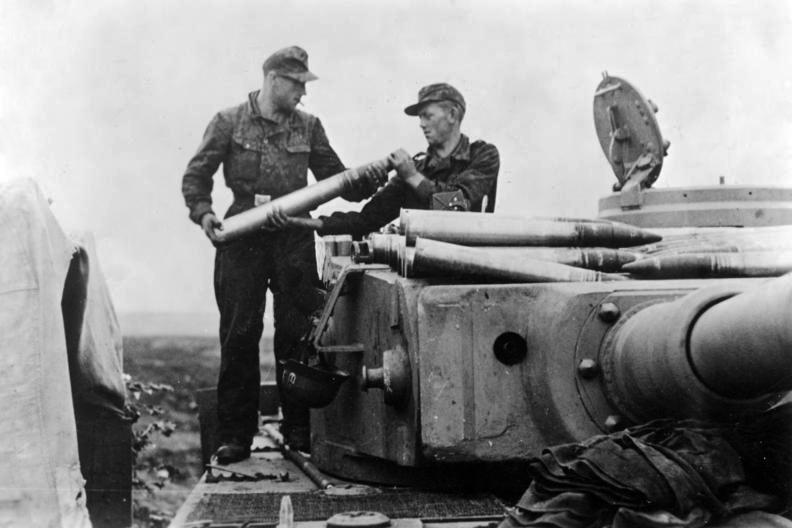
.jpg)
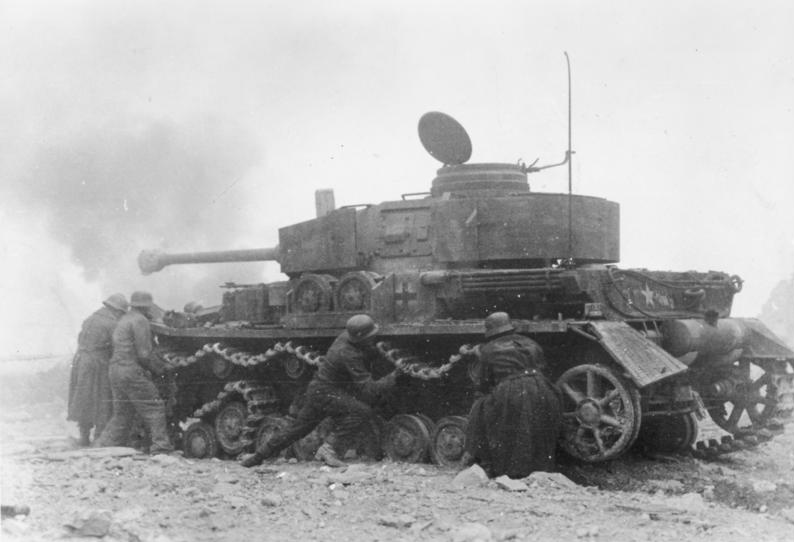
RARE and HISTORIC Artifact ! German
WW2 "Battlefield Relic" FALLSCHIRMJAGER PARATROOPER"
STAFF CAR Divisional PENNANT !
( Recovered Volkhov Front Leningrad )
Here is a chance to own an original battlefield excavated German WW2
Fallschirmjager Paratrooper Division Metal Staff Car Pennant that was
dug on the Eastern Front Leningrad. Rough condition but symbols still
visible and beautifully display. In August 1941, the 7th Flieger returned
to Germany. The invasion of the Soviet Union was now underway, but the
Division would play no role during the first summer. The losses suffered
in the Crete landings were made good with newly trained recruits, and
by September 1941 the Division was back up to strength. On 24 September,
the Division received orders to move to the Leningrad front in Russia.
As in past campaigns, the élite 7th Flieger Division was again
frequently to be used in Company and Battalion-strength units, patching
up battle lines whenever the German defenders started to waver against
Soviet attacks. This experience led the Paratroopers to name themselves
"The Führer's Firemen". Beginning 29 September, the 1st
and 3rd Regiments of the 7th Flieger Division joined the defense of
the salient along the Neva River. The battle continued into the winter,
with units taking heavy losses during the conflict. Finally in mid-December
the Division was relieved and returned to Germany. Meanwhile, in November,
the 2nd Regiment was deployed to the southern sector to participate
in the defense against the Russian winter offensive. They remained on
the front throughout the winter, suffering more from the difficult climatic
conditions than from enemy actions. By March 1942, the 2nd Regiment
was posted to the Volkhov front, to the southeast of Leningrad, defending
against the fierce and continuing Russian attacks. When the 2nd Regiment
was returned to Germany in June 1942, it was detached from the 7th Flieger
Division and would form the nucleus of the German 2nd Parachute Division.
The 7th Flieger Division was now recovering in Normandy, France. To
replace the 2nd Regiment, the 4th Parachute Regiment was raised. Later
in the year, plans were made to use the division in the German summer
offensive in Russia. However the operation was canceled, and the division
was deployed in the Rzhev sector near Smolensk in October. Much of the
winter months were spent patrolling and performing limited attacks along
the front. The Battle of Stalingrad was underway, and Soviet attentions
were focused on the southern part of the front. This situation changed
in March 1943 when the Soviet army assaulted the divisional front. This
attack was beaten back with heavy Russian losses.
SOLD
.jpg)
.jpg)
.jpg)
.jpg)
.jpg)
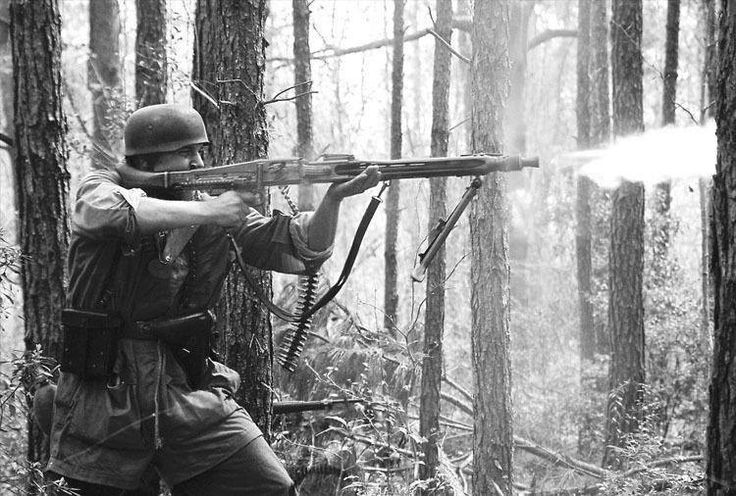
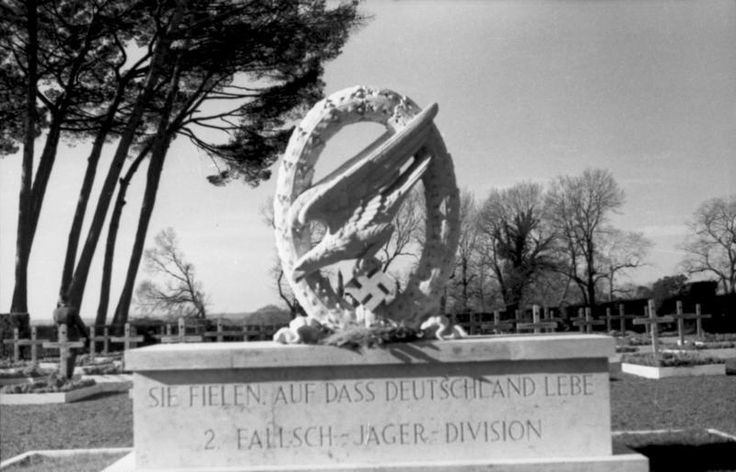
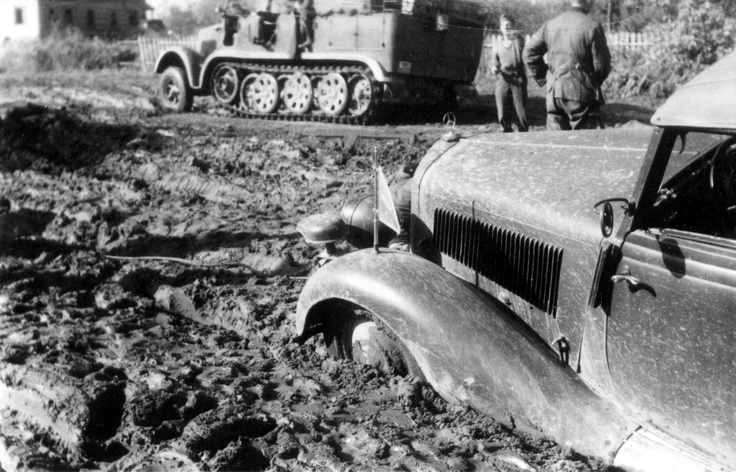
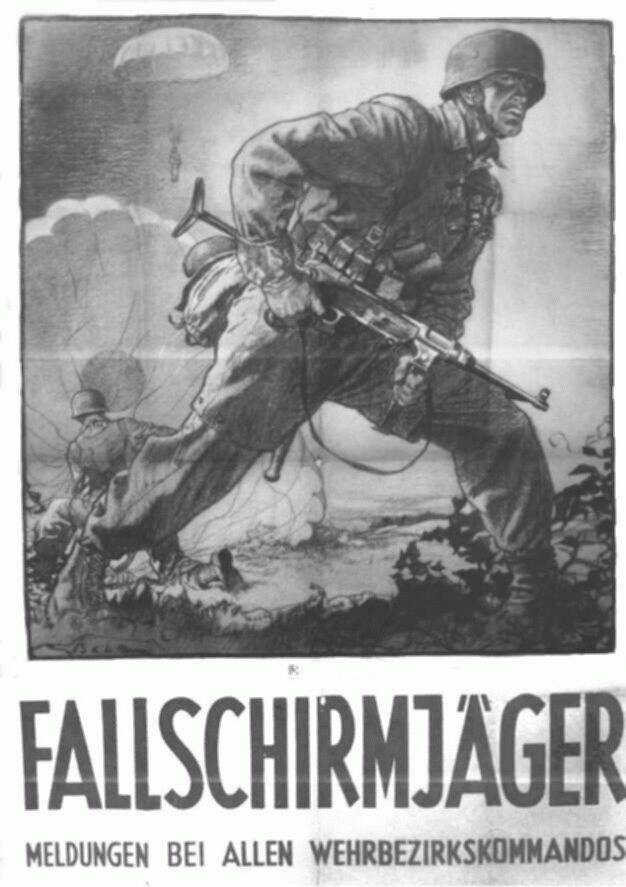
RARE WW2 Battlefield Dug Complete
! 4 Section RUSSIAN BODY ARMOR "Battle Damaged" SNIPER STRUCK
in Chest Plate - ( Recovered HISTORIC STALINGRAD Eastern Front )
Here is a rare opportunity, from my personal collection, A Battlefield
Dug "BULLET PIERCED" Complete 4 Piece Russian Army Sniper
Body Armor recovered Historic Stalingrad. Fantastic Display Relic !
The Battle of Stalingrad (23 August 1942 – 2 February 1943) was
a major battle of World War II in which Nazi Germany and its allies
fought the Soviet Union for control of the city of Stalingrad (now Volgograd)
in Southern Russia, on the eastern boundary of Europe. Marked by constant
close quarters combat and direct assaults on civilians by air raids,
it is often regarded as the single largest and bloodiest battle in the
history of warfare.The heavy losses inflicted on the German Wehrmacht
make it arguably the most strategically decisive battle of the whole
war. It was a turning point in the European theatre of World War II;
German forces never regained the initiative in the East and withdrew
a vast military force from the West to replace their losses.The German
offensive to capture Stalingrad began in late summer 1942, using the
6th Army and elements of the 4th Panzer Army. The attack was supported
by intensive Luftwaffe bombing that reduced much of the city to rubble.
The fighting degenerated into building-to-building fighting, and both
sides poured reinforcements into the city. By mid-November 1942, the
Germans had pushed the Soviet defenders back at great cost into narrow
zones generally along the west bank of the Volga River. On 19 November
1942, the Red Army launched Operation Uranus, a two-pronged attack targeting
the weaker Romanianand Hungarian forces protecting the German 6th Army's
flanks.The Axis forces on the flanks were overrun and the 6th Army was
cut off and surrounded in the Stalingrad area. Adolf Hitler ordered
that the army stay in Stalingrad and make no attempt to break out; instead,
attempts were made to supply the army by air and to break the encirclement
from the outside. Heavy fighting continued for another two months. By
the beginning of February 1943, the Axis forces in Stalingrad had exhausted
their ammunition and food. The remaining elements of the 6th Army surrendered.
The battle lasted five months, one week, and three days.
SOLD
%20(480x640).jpg)
.jpg)
.jpg)
.jpg)
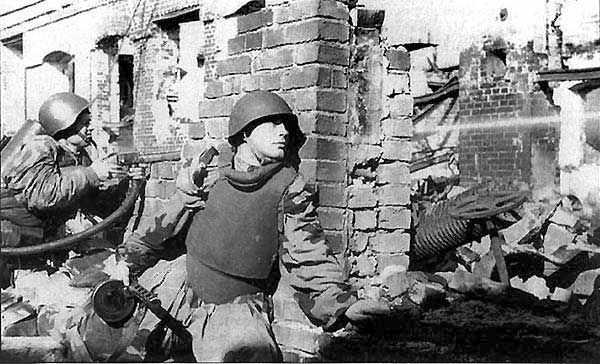
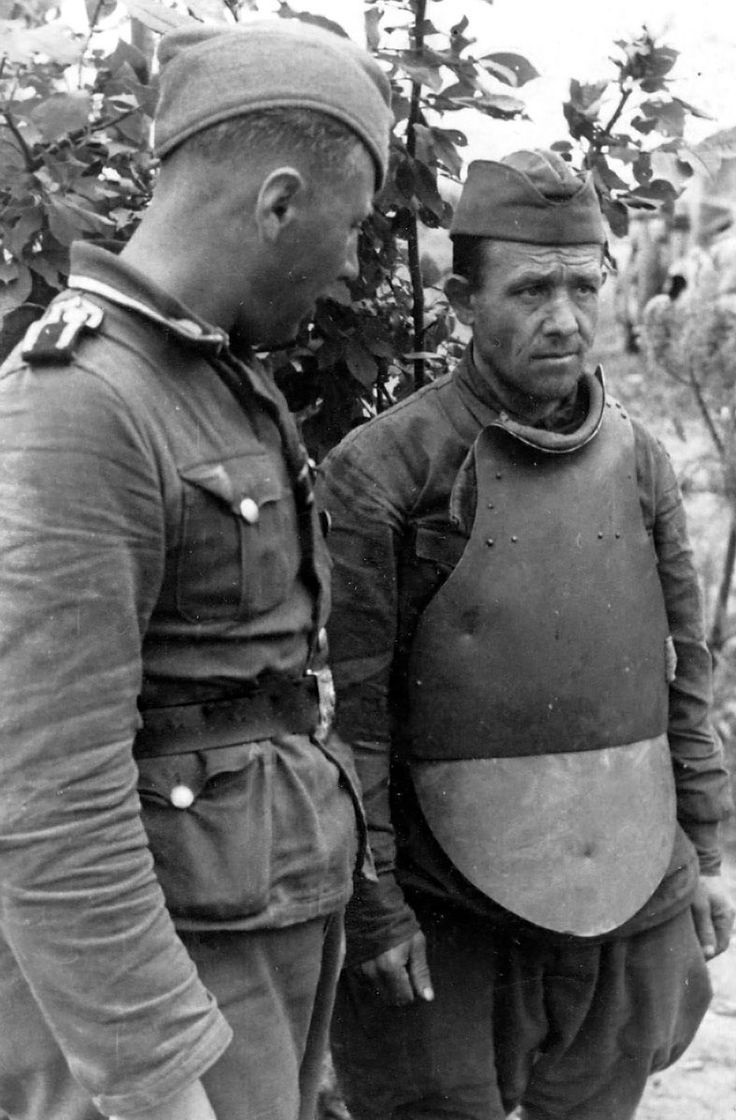
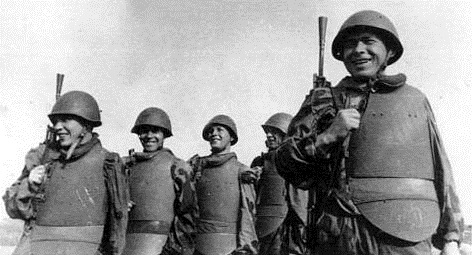
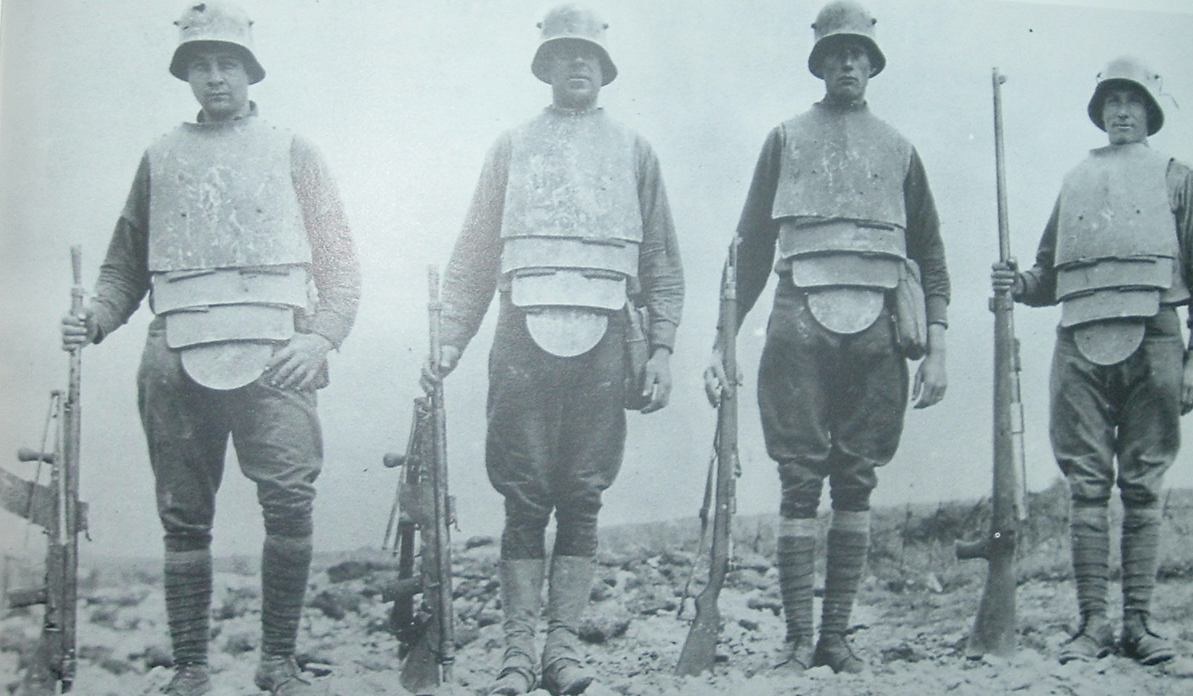
EXTREMELY RARE and "COLLECTIBLE
ARTIFACT" ! WW2 German Navy "KRIEGSMARINE" Officer's
DAGGER - ( Dug Schivelbein )
Here is a cool Battlefield Dug WW2 German Kriegsmarine Navy Dagger Dug
up at Schivelbein. The Hela peninsula and Hela town, northwest of Danzig,
were defended by the German army until the end of the war on May 9,
1945. 900,000 people where evacuated by ship, mainly by the Kriegsmarine.
200,000 could flee to the more western provinces of Germany on land
(most before March, 1945). Only 3% of those who fled per ship died on
the Baltic sea due to Soviet torpedoes. On land, due to the harsh winter
and due to Sovietair raids, the losses among civilians were much higher.
The roving cauldron of Hans von Tettau's corps was defended by some
10,000 to 16,000 troops, stemming primarily from the remnants of the
"Holstein" and "Pommerland" Panzer Divisions,taking
with them about 40,000 civilians. This group had managed to break through
the Soviet encirclement north of Schivelbein and fought their way toward
the coastline. Hoping for evacuation by the German navy, they secured
a bridgehead near Hoff and Horst. As evacuation did not happen, they
moved on to Dievenow, from where they were ferried to Wollin island
on March 11 and 12.
$180
.jpg)
.jpg)
.jpg)
.jpg)
.jpg)
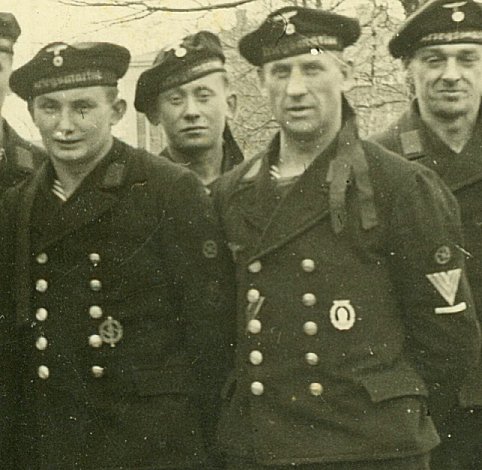
RARE WW2 "Battle Damaged" and Battlefield Recovered German M35 DD "Waffen-SS" HELMET SHELL ! ( Recovered Kurland-Kessel )
Here is a spectacular artifact. A Bullet Riddled DD M35 German SS Black Helmet possible a Allgemeine SS Police unit. Don't let this one get away! In the middle of October 1944, about 500,000 soldiers -- 32 German divisions and the 20,000 men of the Latvian Nineteenth Division of the Waffen–SS -- were cut off from the rest of the German army and encircled. To the east and the south was the Soviet army, to the north and the west -- the Baltic Sea. The Latvians called it Kurzemes katls, the Kurland kettle; the Germans called it Festung Kurland, Fortress Kurland. For the Nineteenth Division Kurland was truly the last stand. They took part in six major battles between October 12, 1944, and April 3, 1945. Together with the German army units they on the whole held the front line, keeping the Bolsheviks out of Kurland, until May 8, 1945, when Germany capitulated. These soldiers remained undefeated until the final moments of the war, im Felde unbesiegt, as the Germans say. In one of the last battles, Captain Miervaldis Adamsons' company in a single 24-hour period repelled seven attacks by the Russians, and after the battle the bodies of 400 fallen Soviet soldiers could be counted in front of the Latvians unconquered positions.The Soviet High Command asked the commanders of the First and Second Baltic Fronts to take forceful action in Kurland, in order to drive the enemy from the northern sector of the Baltic Sea and free their units for more important positions on the Soviet-German front. The first attempt occurred on October 16, 1944, but was stopped in the area around Tukums. The next Soviet offensive took place on October 27, but met with strong resistance from the outset and did not result in any gains. November 20 saw another offensive, but the Germans and Latvians stabilized their defensive line, utilizing favorable geographic features. Equally unsuccessful were the final attempts of the First and Second Baltic Front Armies to liquidate the German Army Group "Kurland" in December of 1944 and February and April of 1945.Soviet documents show that Stalin threw division after division into the Kurland inferno, disregarding the appallingly high losses. According to German estimates , the Soviet army lost 320,000 soldiers including those fallen, wounded, and taken prisoner and 2388 tanks, 659 planes, 900 cannons, and 1440 machine-guns.
$ 470
%20(640x480).jpg)
.jpg)
.jpg)
.jpg)
.jpg)
.jpg)


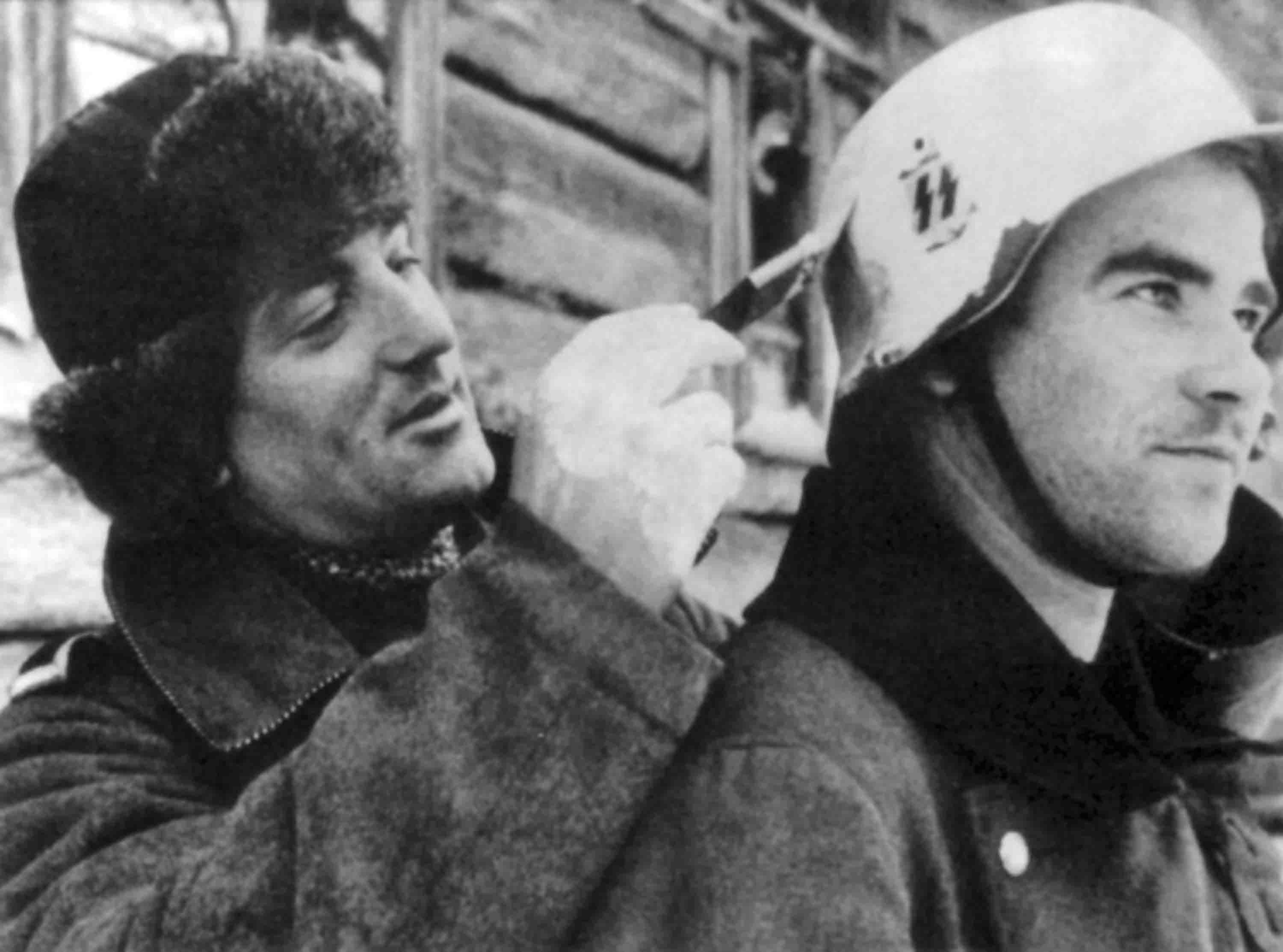
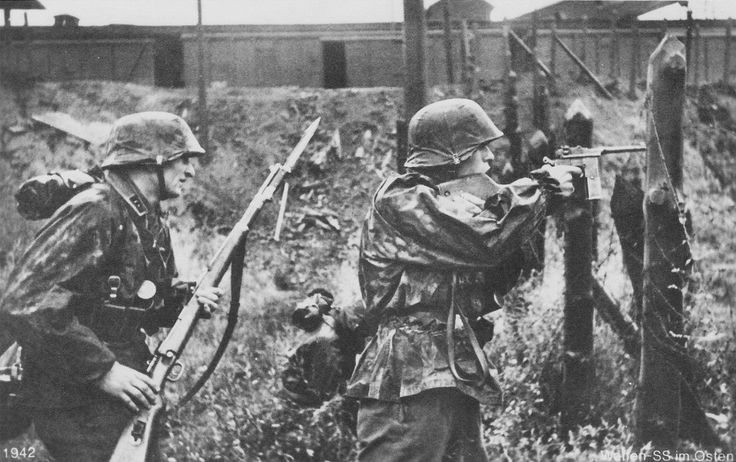
RARE AND HISTORICALLY IMPORTANT ! Lot of Omaha Beach D-DAY Relics - M1 Clip German Buckle, Shrapnel Piece, and Large Calibre Shell Casings OMAHA BEACH , NORMANDY !
Here is a chance to own an affordable historic lot of US / German relics that were dug at Omaha Beach D-Day Landing Site. Omaha Beach was the code name for one of the five sectors of the Allied invasion of German-occupied France in theNormandy landings on 6 June 1944, during World War II. Omaha is located on the coast of Normandy, France, facing theEnglish Channel, and is 8 kilometres (5 mi) long, from east of Sainte-Honorine-des-Pertes to west of Vierville-sur-Mer on the right bank of the Douve River estuary. Landings here were necessary in order to link up the British landings to the east atGold with the American landing to the west at Utah, thus providing a continuous lodgement on the Normandy coast of theBay of the Seine. Taking Omaha was to be the responsibility of United States Army troops, with sea transport and naval artillery support provided by the U.S. Navy and elements of the British Royal Navy. On D-Day, the untested 29th Infantry Division, along with nine companies of U.S. Army Rangers redirected from Pointe du Hoc, were to assault the western half of the beach. The battle-hardened 1st Infantry Division was given the eastern half. The initial assault waves, consisting of tanks, infantry, and combat engineer forces, were carefully planned to reduce the coastal defenses and allow the larger ships of the follow-up waves to land. The primary objective at Omaha was to secure a beachhead of some eight kilometres (5 miles) depth, between Port-en-Bessin and the Vire River, linking with the British landings at Gold to the east, and reaching the area of Isigny to the west to link up with VII Corps landing at Utah. Opposing the landings was the German 352nd Infantry Division, a large portion of whom were teenagers, though they were supplemented by veterans who had fought on the Eastern Front. The 352nd had never had any battalion or regimental training. Of the 12,020 men of the division, only 6,800 were experienced combat troops, detailed to defend a 53 kilometres (33 mi) front. The Germans were largely deployed in strongpoints along the coast—the German strategy was based on defeating any seaborne assault at the water line. Nevertheless, Allied calculations indicated that Omaha's defenses were three times as strong as those they had encountered during the Battle of Kwajalein, and its defenders were four times as many.
$ 220 for the lot !
.jpg)
.jpg)
.jpg)
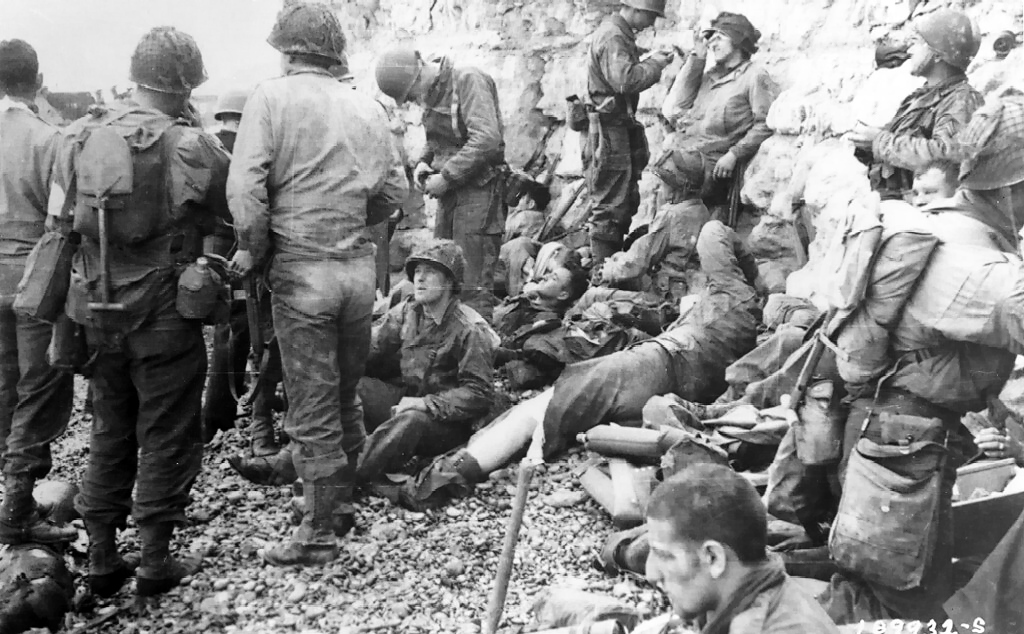
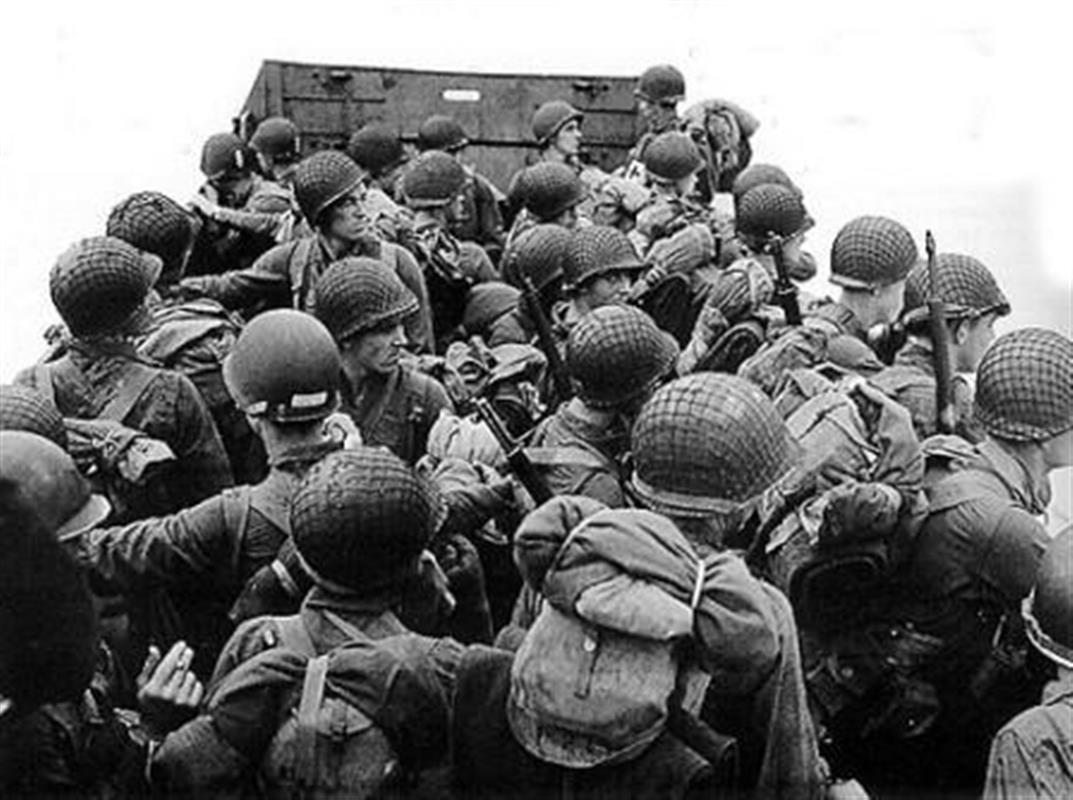
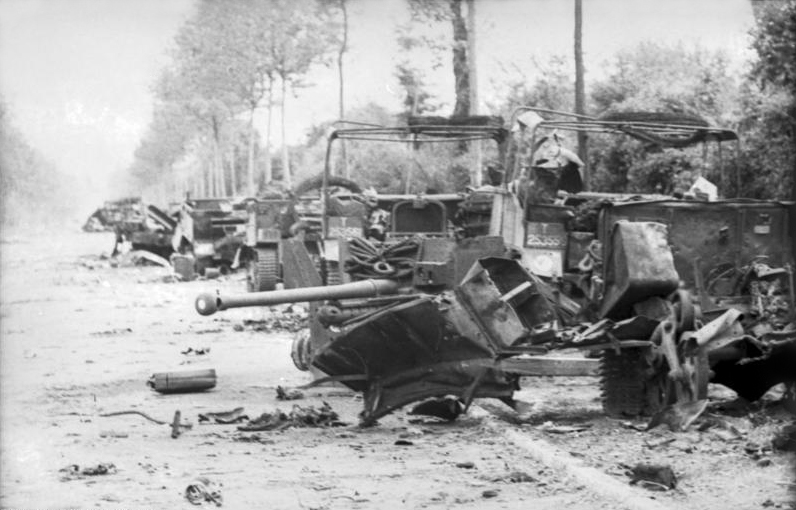
RARE WW2 Battlefield Dug German LUFTWAFFE Flight Privilege Token Lot from HISTORIC "STALINGRAD" - Bunker Dug Pitomnik Airfield
Here is a unique lot of battlefield dug up German Luftwaffe Flight Permit Token/Tags from historic Pitomnik Airfield, Stalingrad. Authentic German Luftwaffe WWII Permit Token to Fly out of the Stalingrad Pocket that were found at Pitomnik Airfield. The permits were issued to Luftwaffe in order to leave the besieged 6th German Army by means of airplane. These were painted white,red,yellow,etc. The colors were used to designate Were issued only to hard wounded soldiers, and also in special cases of subordinates to approval of the high command. There were two types of such permits - the first in the form of a square, the second was round. Stalingrad permits were painted in different colors: red – for wounded, white - for the other reasons (For example evacuation of the valuable military staff), yellow (round) - give out in case of heavy illness.
SOLD
.jpg)
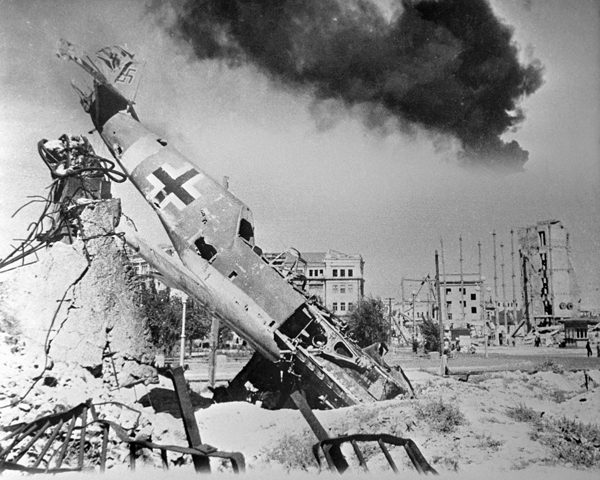
.jpg)
RARE WW2 "Battlefield" Dug Relic BATTLE-DAMAGED German WAFFEN-SS
SD M35 HELMET - ( Recovered Kurland Pocket Eastern Front )
Here is a cool and AFFORDABLE! dug relic German Waffen-SS SD M35 Helmet
with a clearly visible runes that appears to be crushed by an armored
vehicle. The M38 helmet still has camo clip attached and part of the
original chinstrap and liner present, was dug up at Kurland Pocket Eastern
Front.Kurland Pocket Battlefield area.At the start of Operation Barbarossa
in 1941, Courland, along with the rest of the Baltic, was overrun by
Army Group North headed by Field Marshal Wilhelm Ritter von Leeb. In
1944, the Red Army lifted the siege of Leningrad and re-conquered the
Baltic area along with much of Ukraine and Belarus. However, some 200,000
German troops held out in Courland. With their backs to the Baltic Sea.
they were trapped in what became known as the Courland Pocket, blockaded
by the Red Army and the Red Baltic Fleet. Colonel-General Heinz Guderian,
the Chief of the German General Staff, insisted to Adolf Hitler that
the troops in Courland should be evacuated by sea and used for the defense
of Germany. Hitler refused, and ordered the Wehrmacht, Waffen-SS, Luftwaffe
and Kriegsmarine forces in Courland to continue the defence of the area.
Hitler believed them necessary to protect Kriegsmarine submarine bases
along the Baltic coast. On January 15, 1945, Army Group Courland (Heeresgruppe
Kurland) was formed under Colonel-General Dr. Lothar Rendulic The blockade
by elements of the Leningrad Front remained until May 8, 1945, when
the Army Group Courland, then under its last commander, Colonel-General
Carl Hilpert, surrendered to Marshal Leonid Govorov, the commander of
the Leningrad Front (reinforced by elements of the 2nd Baltic Front)
on the Courland perimeter. At this time the group consisted of the remnants
of some 31 divisions. After May 9, 1945, approximately 203,000 troops
of Army Group Courland began moving to Soviet prison camps in the East.
The majority of them never returned to Germany.
SOLD
.jpg)
.jpg)
.jpg)
.jpg)
%20(2).jpg)

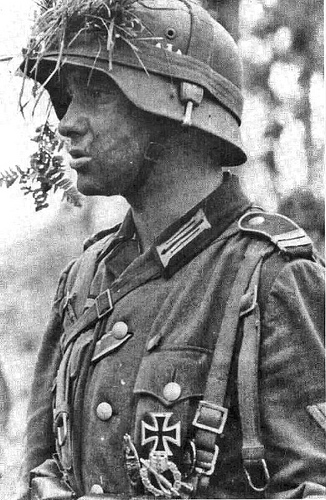

RARE ! "Battlefield Dug"
Relic German "TANK" Panzer Assault Badge in BRONZE ! Still
retains the pin intact. ( Recovered Radzymin Tank Battlefield Poland
)
These do not last long when featured. Rare to find Battlefield dug up.
This example still retains the pinback. The Battle of Radzymin was one
of a series of engagements between the Red Army's 1st Byelorussian Front
and theWehrmacht Heer's XXXIXth Panzer Corps that occurred as part of
the Lublin-Brest Offensive between 1 and 10 August 1944 at the conclusion
of the Belorussian strategic offensive operation near the town of Radzymin
in the vicinity of Warsaw, part of which entailed a large tank battle
at Wolomin. It was the largest tank battle on the territories of Poland
during World War II.Approach of the Red Army forces into the proximity
of Warsaw served to initiate the Warsaw Uprising by the Home Army with
expectation of help from the Red Army. The battle ended with Soviet's
defeat; it is unclear to what extent this defeat contributed to Soviet's
decision not to aid the Warsaw Uprising.
SOLD
.jpg)
.jpg)
.jpg)
.jpg)
.jpg)
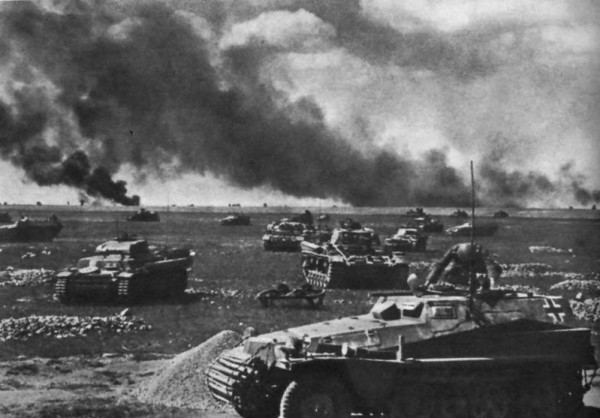
ABSOLUTELY THE RAREST !! A Russian
Front Battlefield Dug RELIC Battle Damaged "MG RIDDLED" AXIS
NAZI HUNGARIAN 2nd Army HELMET !!
( Recovered Hungarian 2nd Army Positions Vorenzh Eastern front )
This is one of the most impressive large size helmets with bullet piercings
that I have had come available. The Hungarian M37 has the strap loop
still intact on back and shows multiple bullet strikes and exit holes..
possibly shrapnel strikes as well. This helmet was dug at Vorenzh.
In 1942, the Hungarian Second Army was given the task of protecting
the 8th Italian Army's northern flank between Novaya Pokrovka on the
Don River and Rossosh.This allowed the German Sixth Army to continue
to attack Soviet General Vasily Chuikov's 62nd Army defending Stalingrad.
The Hungarian Second Army, as almost all of the armies protecting the
flanks of the Sixth Army, was annihilated when the Soviets launched
Operation Uranus, Operation Saturn, and Operation Little Saturn. As
part of these operations, two Soviet pincers drove through the Romanian
Third Army to the north of Stalingrad and the Romanian Fourth Army to
the south, cutting off the Sixth Army. On December 12, 1942, as a counter
move, the Germans launched Operation Winter Storm to relieve their Sixth
Army by attacking through the pincers of the Soviet armies participating
in Operation Uranus. The Soviets counter-attacked on December 16, 1942,
and launched Operation Little Saturn, penetrating between the Italian
Eighth Army and the Hungarian Second Army near the junction held by
the Italian Alpini and threatening the flank of German forces attempting
to relieve the Sixth Army by cutting the would-be relievers off at the
Donets river. With heavy losses the Soviets conquered some areas west
of the Don river, but were temporarily stopped and delayed in their
advance.But on January 13, 1943, Russian forces, overwhelming in numbers
and equipment, began the Voronezh-Kharkov Strategic Offensive Operation
with the Bryansk, Voronezh, and Southwestern Fronts simultaneously.
The Soviet Red Army was totally successful this time: during this offensive
the Russians rapidly destroyed the Hungarian Second Army near Svoboda
on the Don River. An attack on the German Second Army further north
threatened to bring about an encirclement of that army as well, though
it managed to withdraw and was forced to retreat. By February 5, 1943,
troops of the Russian Voronezh Front were approaching Kharkov.
During its twelve months of activity on the Russian front, the Second
Hungarian Army's losses were enormous. Of an initial force of about
200,000 Hungarian soldiers and 50,000 Jewish forced-laborers,[4] about
100,000 were dead, 35,000 wounded, and 60,000 taken prisoners of war.
Only about 40,000 men returned to Hungary, scapegoated by Hitler for
the catastrophic Axis defeat. "No nation lost as much blood during
World War II in such a short period of time
SOLD
.jpg)
.jpg)
.jpg)
.jpg)
.jpg)
.jpg)
.jpg)
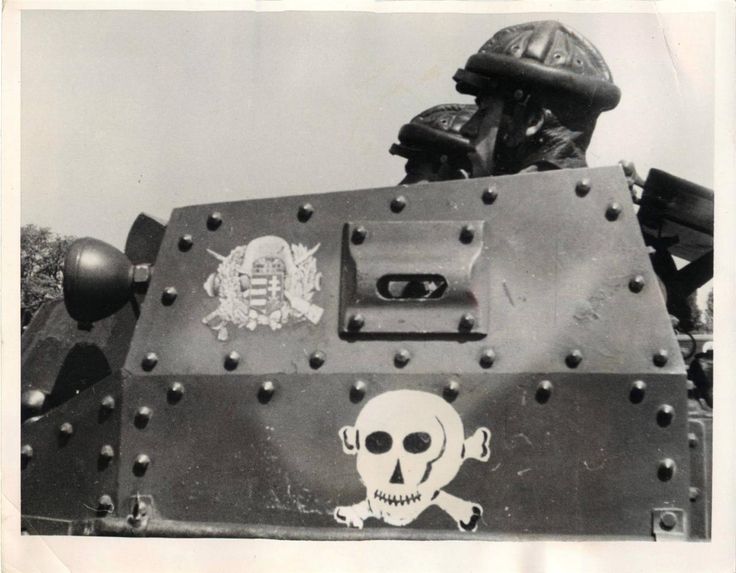
HISTORIC "Battlefield Dug Relic US GI or "82ND AIRBORNE" FLASHLIGHT - ( Recovered St. Vith, Ardennes )
In all my years of dealing and collecting
in WW2 I have never seen a battlefield dug WW2 US issue torch flashlight.
The flashlight was dug at St. Vith.
St. Vith is built on a low hill surrounded on all sides by slightly
higher rises. On the south the Braunlauf Creek swings past St. Vith
and from the stream a draw extends to the west edge of the town. About
a mile and a half to the east a large wooded hill mass rises as a screen.
This is crossed by the road to Schönberg, which then dips into
the Our valley and follows the north bank of the river until the Schönberg
bridge is reached, approximately six miles from St. Vith. Suddenly,
on December 16, 1944, the Germans launched a surprise offensive through
the Ardennes Forest which caught the Allies completely by surprise.
The 82nd moved into action on December 17th in reponse to the German's
Ardennes Counteroffensive and blunted General Von Runstedt's northern
penetration in the American lines. On December 20th the 82nd attacked
in the Vielsalm-St. Vith region and the 504th PIR took Monceau. This
fiece attack forced the German units back across the Ambleve River the
next day.
SOLD
%20(800x600).jpg)
.jpg)
.jpg)
.jpg)
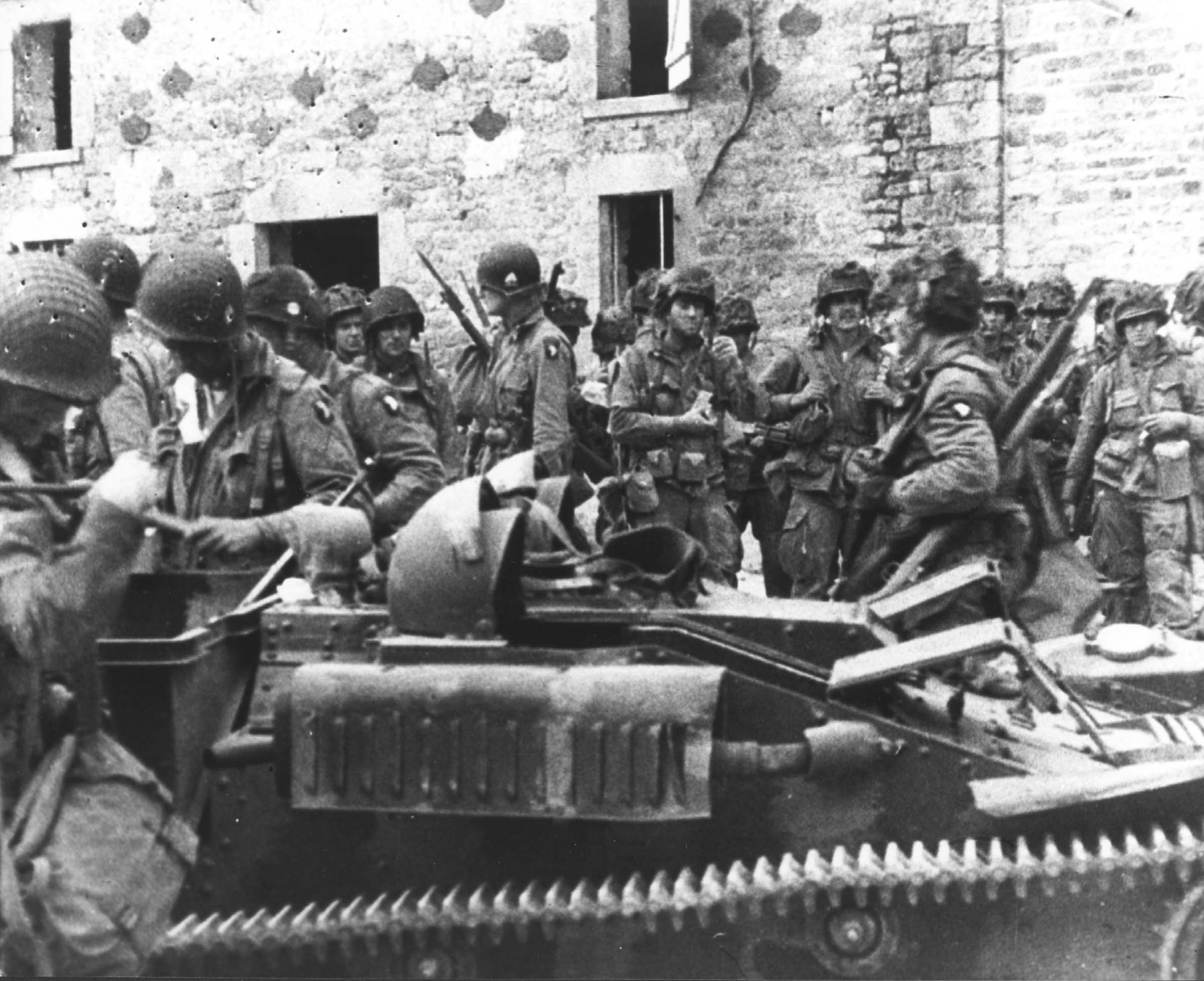
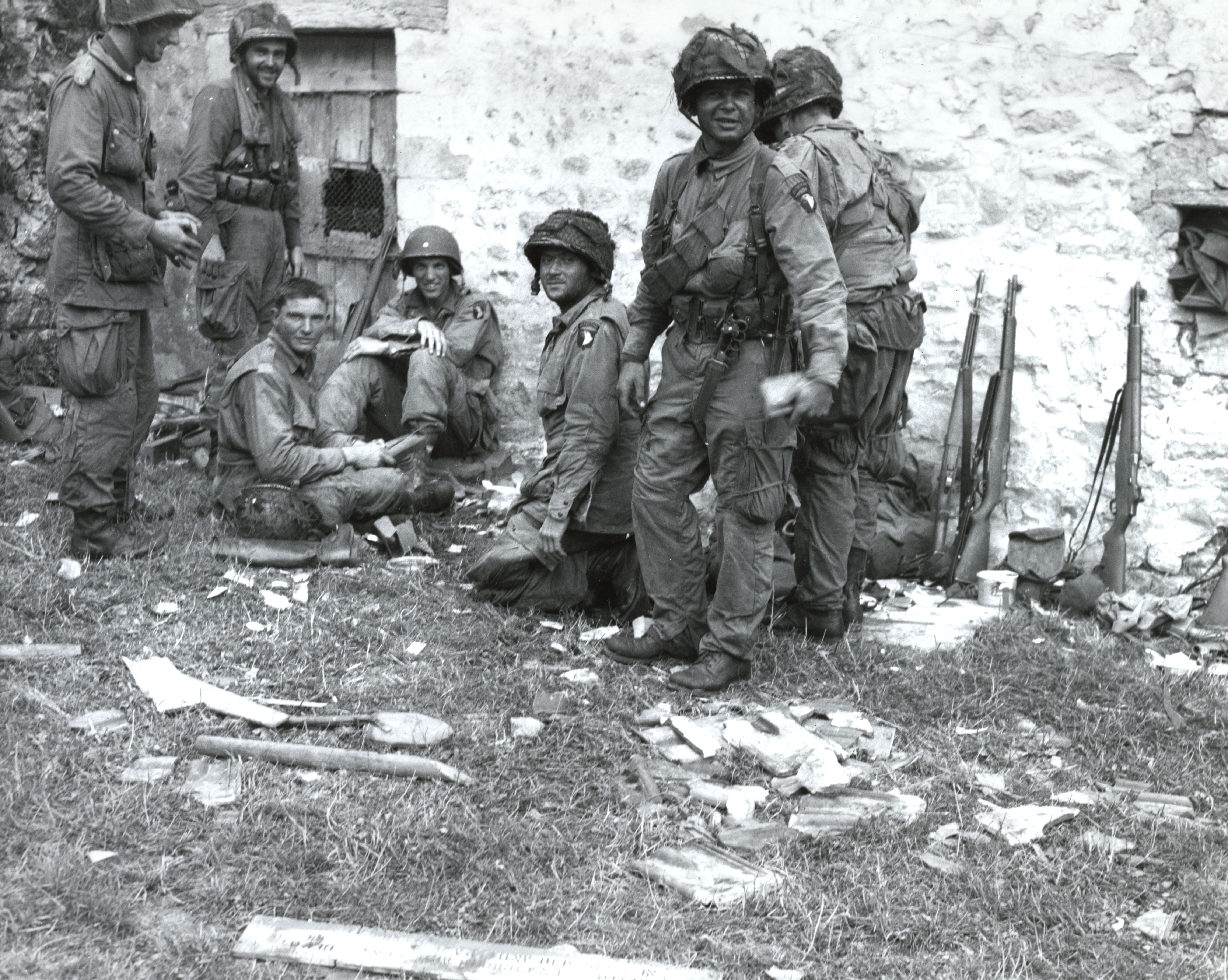
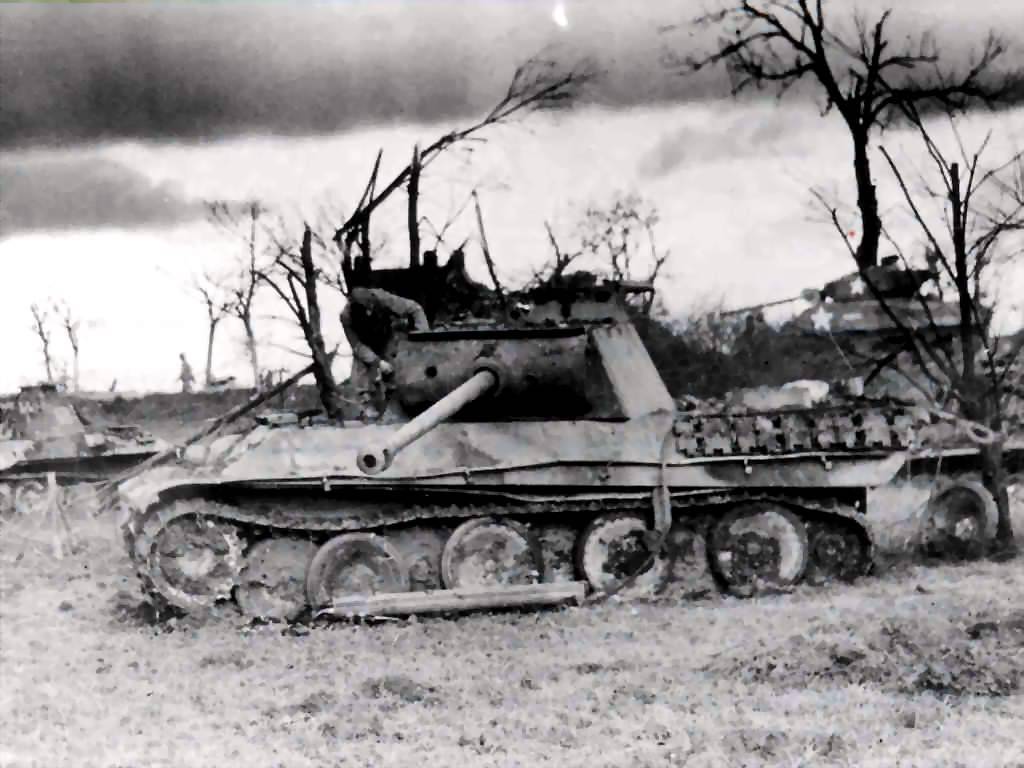
RARE in Excavated WW1 Battlefield Relic German Bavarian Merit AWARD CROSS - Dug YPRES
Here is a great little dug battlefield relic
WWI Merit Award. Excavated at Ypres. The German defensive line had been
fortified during the previous months in their expectation of an attack
here. The British advance turned into a battle of 8 phases, inching
closer to the Passchendaele Ridge in a series of actions with limited
objectives. The capture of the Passchendaele Ridge eventually took over
8 weeks to achieve.
The cost to both sides in human casualties was immense at between 200,000
and 400,000, although exact figures for British and German casualties
continue to be a matter of discussion for military historians. The great
tragedy for the British Army and the Imperial Forces of Australia, New
Zealand and Canada, who suffered so many losses in the fight for the
few miles from Ypres to the Passchendaele Ridge, is that only five months
later almost all of the ground gained in the mud and horror of the battles
for Passchendaele was recaptured by the German Army during its April
offensive in 1918.
SOLD
.jpg)
%20(1).jpg)
.jpg)
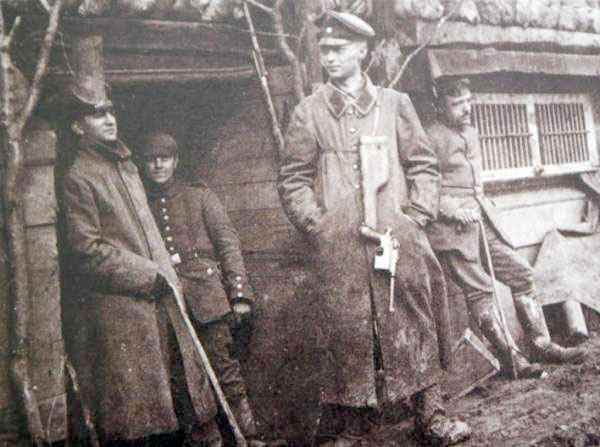
.jpg)
RARE WW2 Dug Relic Battle Damaged German Nazi "TOTENKOPF" -SS "Deathhead" Painted M35 Size 60 HELMET ! ( Recovered Lithuania )
Here is an incredible display rare relic Totenkopf-SS helmet with the soldier painted faint but visible "skull and bones" designation on the face. The helmet is a small size M35 that may have been worn by a HJ. Has a battle damage and rust through to one side of crown but otherwise very solid. In April 1941, the division was ordered East to join Generalfeldmarschall Wilhelm Ritter von Leeb's Army Group North.Totenkopf saw action in Lithuania and Latvia, and by July had breached the vaunted Stalin Line. The division then advanced by Demjansk to Leningrad where it was involved in heavy fighting from July 31st to August 25th. During Autumn and Winter of 1941, the Soviets launched a number of operations against the German lines in the Northern sector of the Front. During one of these operations, the Division was encircled for several months near Demjansk in what would come to be known as the Demjansk Pocket. Totenkopf suffered so greatly during these battles that it was re-designated Kampfgruppe Eicke because of its reduced size. In April 1942, the division broke out of the pocket and managed to reach friendly lines. The remnants of the Division were pulled out of action in late October, 1942 and sent to France to be refitted. While in France, the Division took part in Case Anton, the takeover of Vichy France in November 1942. For this operation, the division was supplied with a Panzer abteilung and redesignated 3.SS-Panzergrenadier-Division Totenkopf . The division remained in France until February, 1943, when their old commander, Theodor Eicke, resumed control.
SOLD
.jpg)
.jpg)
.jpg)
.jpg)
.jpg)
.jpg)


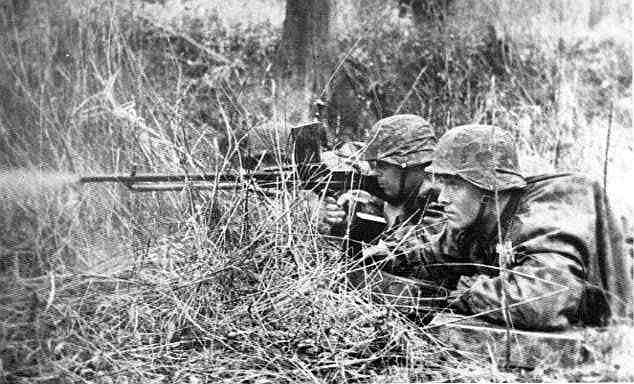
RARE WW2 Bullet-Struck GERMAN VILLAGE ROAD Directional SIGN - "NEAR WILHELMSTHAL 8 Km" ( Recovered Near Orienburg Germany )
Here is a great WW2 relic "bullet-struck" German road-sign.
Most likely shot at by Allied troops following up the retreating Germans.
Here is a little history of the region and what occured. Wilhelmsthal
in the region of Brandenburg, Germany - some 16 mi (or 25 km) North-West
of Berlin. Stationed near there were units of SS-Totenkopfverbände,
rendered in English as "Deaths-Head Units," the SS organization
responsible for administering the Nazi concentration camps for the Third
Reich. Oranienburg concentration camp was an early concentration camp,
one of the first detention facilities established by the Nazis when
they gained power in 1933. It held the Nazis political opponents from
the Berlin region, mostly members of the Communist Party of Germany
and social-democrats. On Thursday, March 15, 1945. The pilot was commanding
one of the 612 aircraft of the US Eighth Air Force, which was flying
a mission against Oranienburg that day. He dropped 11 bombs on the small
town, each weighing 500 kilos (1,100 pounds). In the 45 minutes between
2:51 and 3:36 p.m., a total of 4,977 explosive bombs and 713 incendiary
bombs rained down from the sky.The air raid wasn't targeting the town's
roughly 26,000 inhabitants. With its military infrastructure, Oranienburg
ranked among the top targets of the American bomber fleet. The railway
station was a point of departure for soldiers headed for the Eastern
Front. At the nearby Auer Werke, uranium was processed for the Nazi's
top-secret nuclear research program. A few hundred meters from there
stood the Heinkel Aircraft Works and the main vehicle depot of the SS.Allied
Bombing also targeted nearby in Kassel The most severe bombing of Kassel
in World War II destroyed 90% of the downtown area, some 10,000 people
were killed, and 150,000 were made homeless. Most of the casualties
were civilians or wounded soldiers recuperating in local hospitals,
whereas factories survived the attack generally undamaged. Karl Gerland
replaced the regional Gauleiter, Karl Weinrich, soon after the raid.
The US Army captured Kassel on April 3, 1945.
RESERVED FOR G.F.
.jpg)
.jpg)
%20(2).jpg)
.jpg)
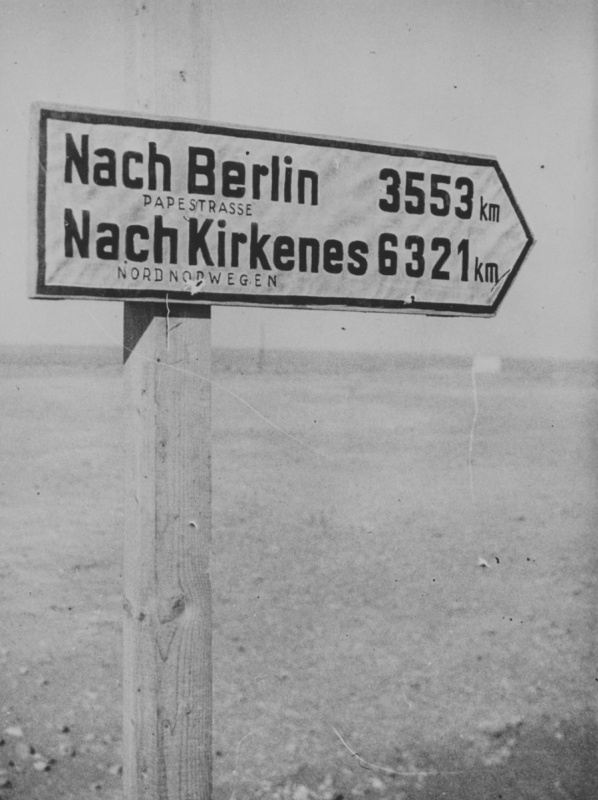
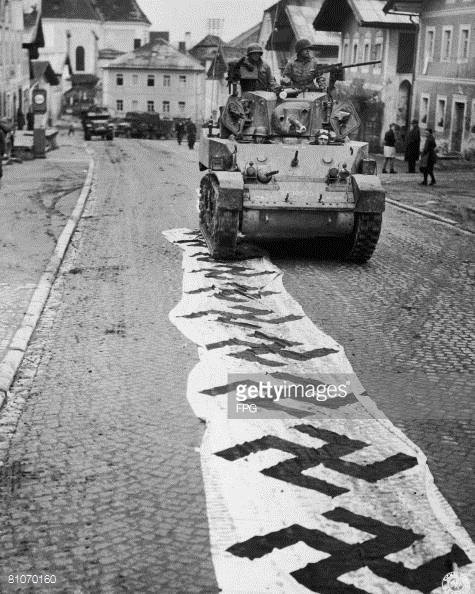
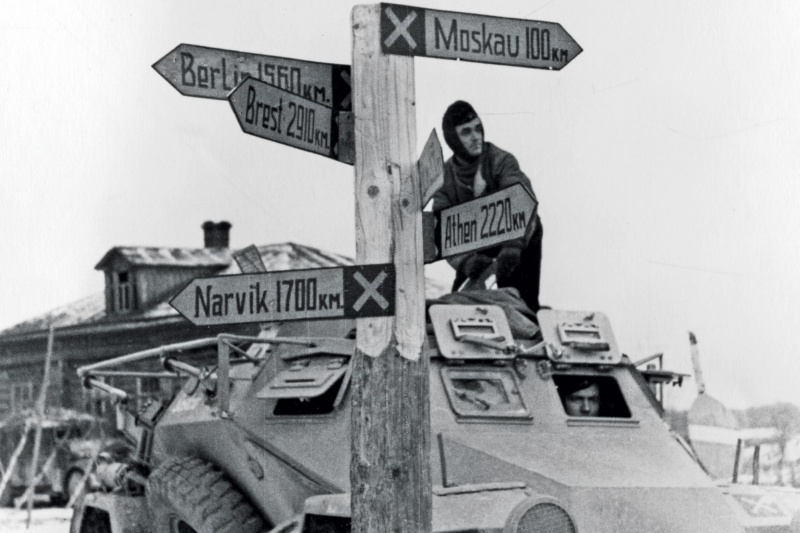
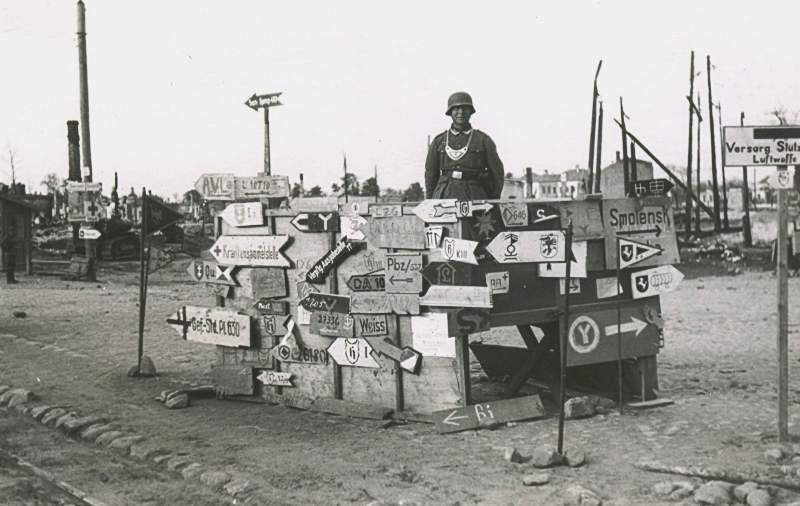
VERY RARE GROUND DUG WW2 "German PANZERSCHRECK ANTI-TANK HEAT SHIELD - ( Recovered RADZYMIN-Wolomin POLAND )
Here is a sharp and desirable Panzerchreck relic flash shield with glass view and tube collar still intact that was dug on the Radzymin Battlefield. The panzerschreck anti-tank weapon was feared by the Russian Tank battalions. In response to Vedeneev's thrust, the Germans started a tactical counter-attack near Radzymin on 31 July. The offensive, carried out by 4 understrength Panzer divisions, was to secure the eastern approaches to Warsaw and Vistula crossings, and aimed to destroy the three tank corps of the Second Tank Army in detail. Under the leadership of German Field Marshal Model, the 4th, 19th, Hermann Göring, and 5th SS Panzer Divisions were concentrated from different areas with their arrival in the area of Wolomin occurring between 31 July and 1 August 1944. Although the 3rd Tank Corps gamely defended the initial assaults of the Hermann Göring and 19th Panzer Divisions, the arrival of the 4th Panzer and 5th SS Panzer Divisions spelled doom for the isolated and outnumbered unit.Already on 1 August, the leading elements of the 19th and 5th SS Panzer Divisions, closing from the west and east respectively, met at Okuniew, cutting the 3rd Tank Corps off from the other units of the Second Tank Army. Pressed into the area of Wolomin, the 3rd Tank Corps was pocketed and destroyed on 3 August 1944. Attempts to reach the doomed tank corps by the 8th Guards Tank Corps and the 16th Tank Corps failed, with the 8th Guards Tank Corps taking serious losses in the attempt. Although Model had planned to attack the 8th Guards Tank Corps next, the withdrawal of the 19th and Hermann Göring Panzer Divisions to shore up the German defenses around the Magnuszew bridgehead forced the remaining German forces around Okuniew to go on the defensive. The largest tank battle in Poland.
SOLD
.jpg)
.jpg)
.jpg)


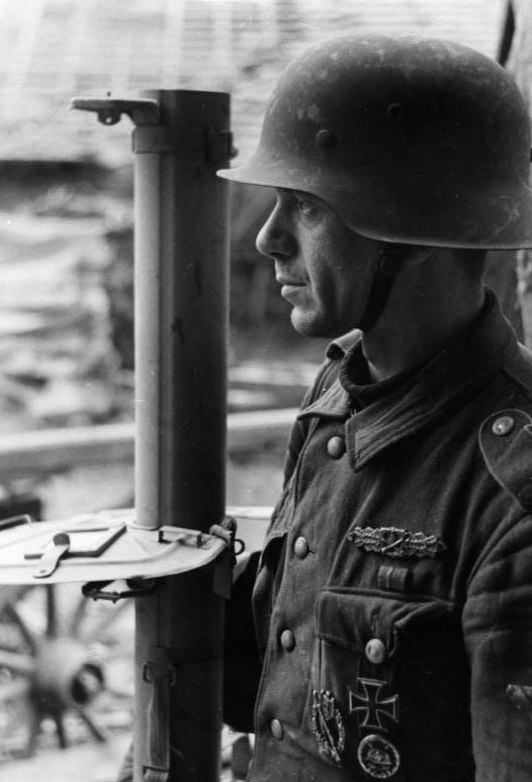
HIGHLY COLLECTIBLE "Battlefield
Dug" Battle Damaged - German P08 "LUGER PISTOL RELIC"
- ( Recovered 5th SS Panzer Division Positions, Radzymin )
Here is a great dug collectible German Luger Section from Radzymin a
huge tank battle area. The section is solid and any more than this left
in a luger would never make it through customs. A beautiful historic
relic ! Already on 1 August, the leading elements of the 19th and 5th
SS Panzer Divisions, closing from the west and east respectively, met
at Okuniew, cutting the 3rd Tank Corps off from the other units of the
Second Tank Army. Pressed into the area of Wolomin, the 3rd Tank Corps
was pocketed and destroyed on 3 August 1944. Attempts to reach the doomed
tank corps by the 8th Guards Tank Corps and the 16th Tank Corps failed,
with the 8th Guards Tank Corps taking serious losses in the attempt.
Although Model had planned to attack the 8th Guards Tank Corps next,
the withdrawal of the 19th and Hermann Göring Panzer Divisions
to shore up the German defenses around the Magnuszew bridgehead forced
the remaining German forces around Okuniew to go on the defensive.For
unknown reasons, on 2 August 1944 all armies that were to assault Warsaw
had their orders changed. The 28th, 47th and 65th Armies were ordered
to turn northwards and seize the undefended town of Wyszków and
the Liwiec river line. The 2nd Tank Army was left in place and had to
fight the Germans alone, without support of the infantry. Also, 69th
Army was ordered to stop while the 8th Guards Army under Vasily Chuikov
was ordered to halt the assault and await a German attack from the direction
of Garwolin. Further combat lasted until 10 August, when the Germans
finally withdrew. Soviet losses were heavy, but not heavy enough to
affect the overall course of their thrust to the vicinity of Warsaw.
The 3rd Tank Corps was destroyed, the 8th Guards Tank Corps took heavy
losses, and the 16th Tank Corps took significant losses as well. Overall,
the Second Tank Army's losses were significant enough that it was withdrawn
from the front lines by 5 August 1944.
SOLD
.jpg)
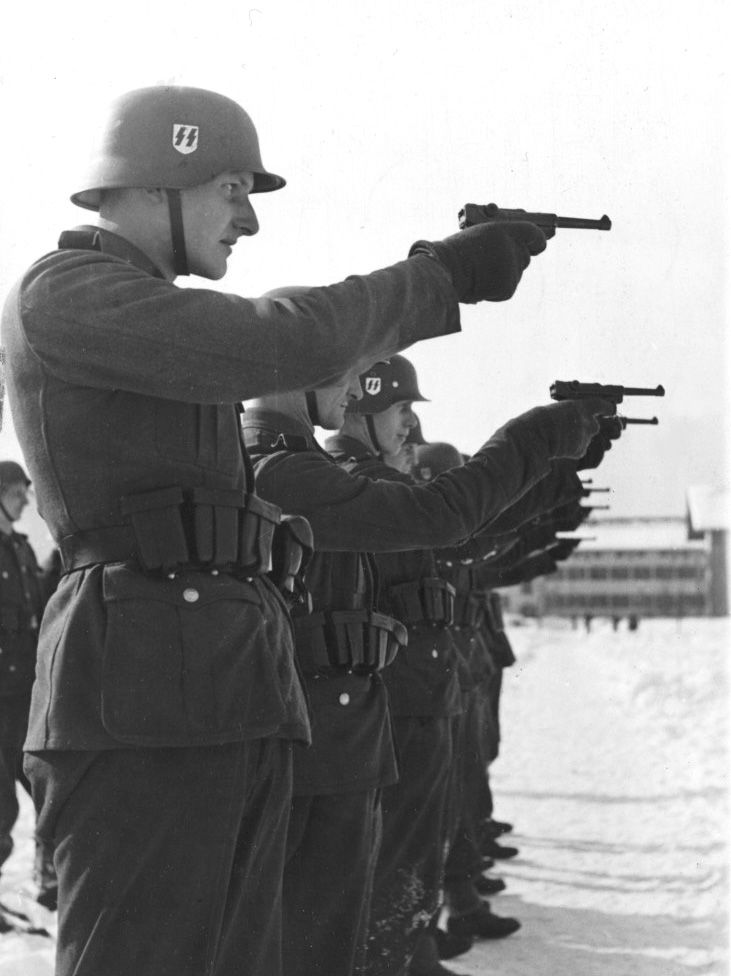
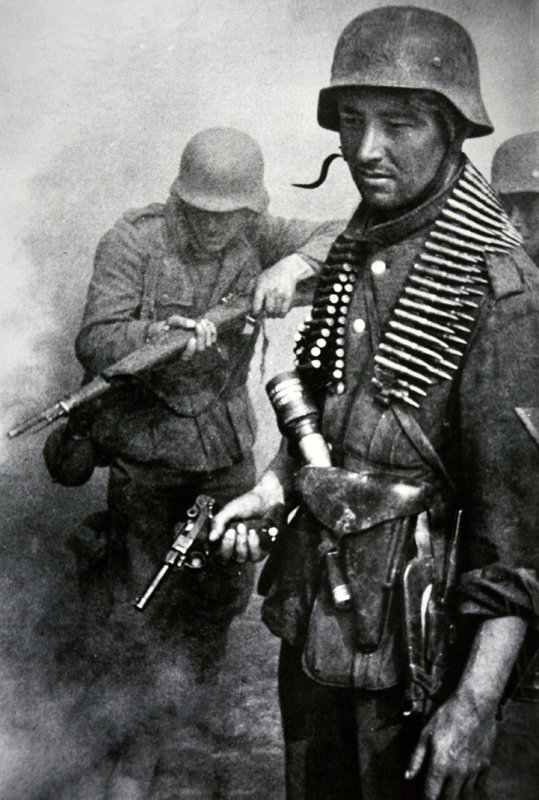
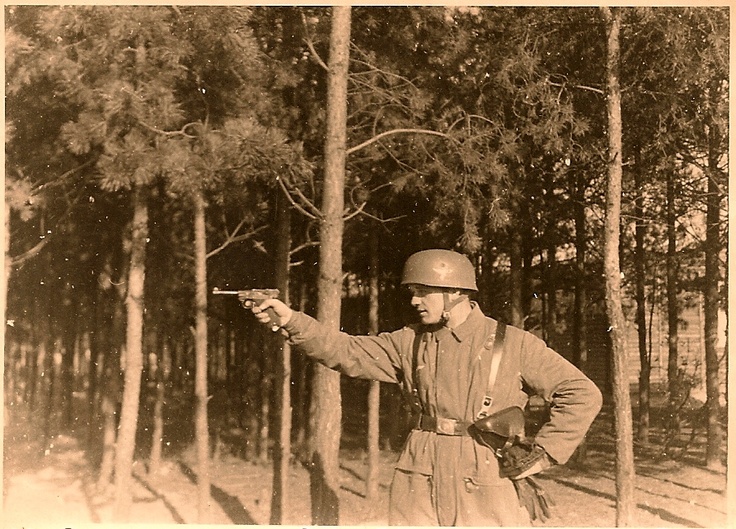
( Recovered STALINGRAD Battlefield )
Here is a wonderful original relic WW2 German Motorcycle Fender with License Plate still attached with tactical paint that was recovered historic Stalingrad. A Fantastic Display relic !The Battle of Stalingrad was a major battle of World War II in which Nazi Germany and its allies fought the Soviet Union for control of the city of Stalingrad (now Volgograd) in southwestern Russia. The battle took place between 23 August 1942 and 2 February 1943. It was among the largest on the Eastern Front and was marked by its brutality and disregard for military and civilian casualties. It was amongst the bloodiest battles in the history of warfare with the higher estimates of combined casualties amounting to nearly two million deaths. In its defeat, the crippling losses suffered by Germany's military proved to be insurmountable for the war. The battle was a turning point in the war, after which the German forces attained no further strategic victories in the East.The German offensive to capture Stalingrad commenced in late summer 1942, supported by intensive Luftwaffe bombing which reduced much of the city to rubble. The German offensive eventually became bogged down in house-to-house fighting; and despite controlling over 90% of the city at times, the Wehrmacht was unable to dislodge the last Soviet defenders clinging tenaciously to the west bank of the Volga River.
LAYAWAY FOR D.S.
.jpg)
.jpg)
%20(2).jpg)
.jpg)
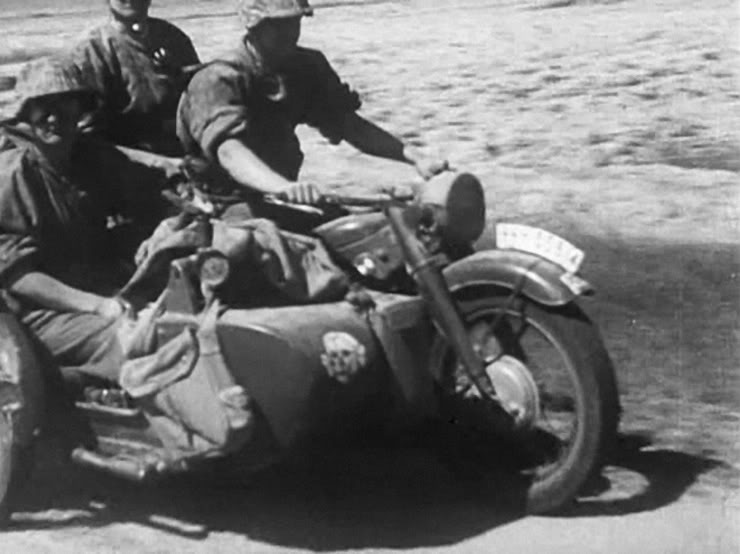
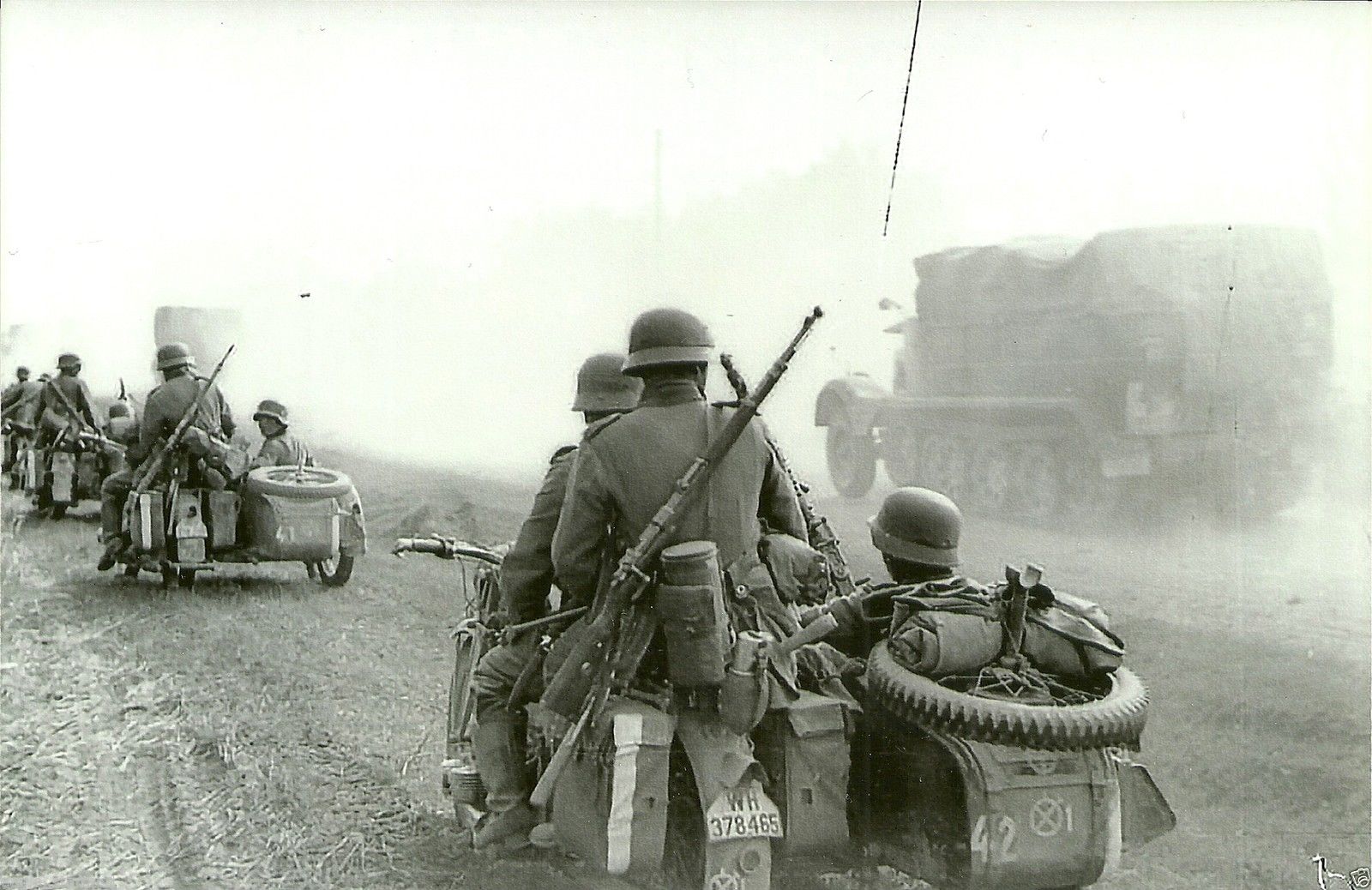
VERY HARD TO FIND in Any Condition
! WW2 16th PANZER Division German Wehrmacht Officer STAFF CAR or ARMORED
VEHICLE Metal Vehicle Fender PENNANT
( Recovered STALINGRAD )
Here is a very unique dug relic from the
Stalingrad Battlefield. The Large Metal Fender Pennant was adorned on
a Wehrmacht Officers Staff Car from the 16th Panzer Division area of
operations. Pennants Vehicles used by officers and commanders were marked
with pennants, usually affixed to the fenders of staff cars, though
some commanders also used armoured halftracks as command vehicles. The
different levels of command had different pennants; a Divisional pennant
was triangular, black over white over red Independent battalions within
a division had a black cross across a waffenfarbe background. The 16th
Panzer Division reached the outskirts of Stalingrad on 23rd of August
brushing aside the Soviet defences, anti-aircraft guns manned by female
factory workers, possibly the 1077th AA regiment. The 16th Panzer Division
was encircled and ultimately destroyed at Stalingrad during the winter
of 1942-43. The battle took place between 23 August 1942 and 2 February
1943. It was among the largest on the Eastern Front and was marked by
its brutality and disregard for military and civilian casualties. It
was amongst the bloodiest battles in the history of warfare with the
higher estimates of combined casualties amounting to nearly two million
deaths. In its defeat, the crippling losses suffered by Germany's military
proved to be insurmountable for the war. The battle was a turning point
in the war, after which the German forces attained no further strategic
victories in the East.The German offensive to capture Stalingrad commenced
in late summer 1942, supported by intensive Luftwaffe bombing which
reduced much of the city to rubble. The German offensive eventually
became bogged down in house-to-house fighting; and despite controlling
over 90% of the city at times, the Wehrmacht was unable to dislodge
the last Soviet defenders clinging tenaciously to the west bank of the
Volga River.
SOLD
%20(2).jpg)
.jpg)
.jpg)
.jpg)
.jpg)
.jpg)
.jpg)
.jpg)
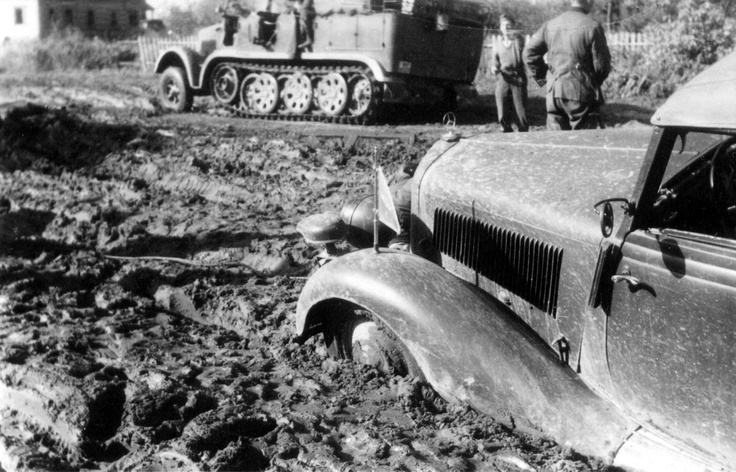
UNIQUE ARTIFACT ! Battlefield Relic
TRENCH ART "KRIM" and the Dates WW2 BAKELITE DECONTAMINATION
KIT - ( Recovered UKRAINE )
Here is a cool soldier carved trench art relic bakelite decontamination
kit that was recovered Ukraine. The Crimea Campaign was an eight-month-long
campaign by Axis forces to conquer the Crimea peninsula, and was the
scene of some of the bloodiest battles on the Eastern Front during World
War II. The German, Romanian, and defending Soviet troops suffered heavy
casualties as the Axis forces tried to advance through the Isthmus of
Perekop linking the Crimean peninsula to the mainland at Perekop, from
summer of 1941 through to the first half of 1942.From the 26 September
1941 the German 11th Army and troops from the Romanian Third Army and
Fourth Army were involved in the fighting,opposed by the Red Army's
51st Army and elements of the Black Sea Fleet. After the campaign, the
peninsula was occupied byArmy Group A with the 17th Army as its major
subordinate formation.Once the Axis (German and Romanian troops) broke
through, they occupied most of Crimea, with the exception of the city
of Sevastopol, which was given the title of Hero City for its resistance,
and Kerch, which was recaptured by the Soviets during an amphibious
operation near the end of 1941 and then taken once again by the Germans
during Operation Bustard Hunt on 8 May.The Siege of Sevastopol lasted
250 days from 30 October 1941 until 4 July 1942, when the Axis finally
captured the city.
SOLD
.jpg)
.jpg)
.jpg)
.jpg)
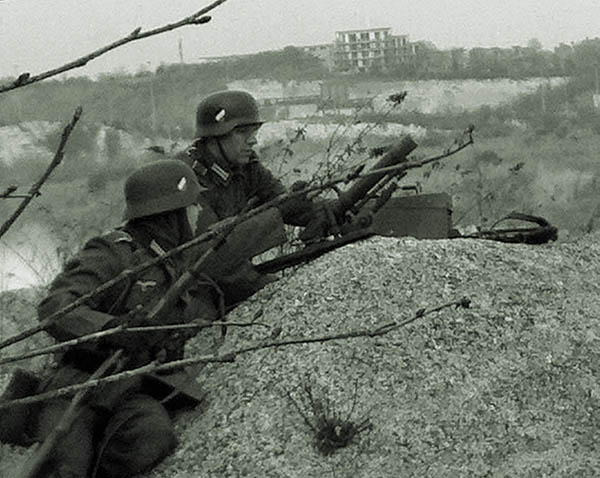
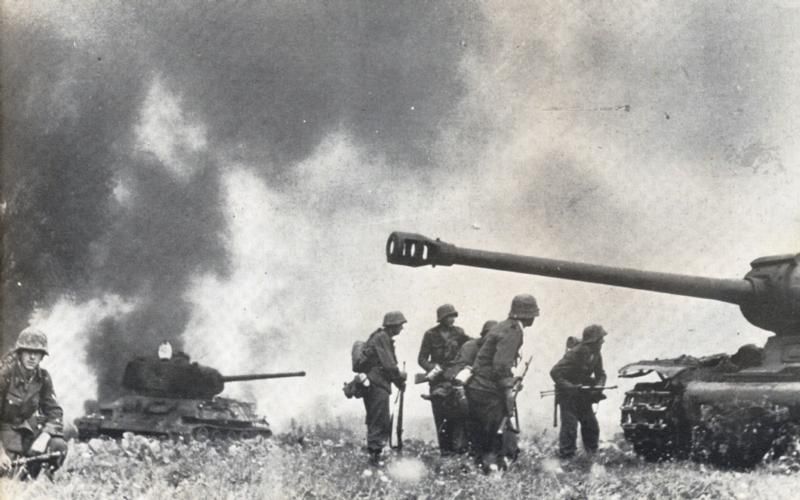
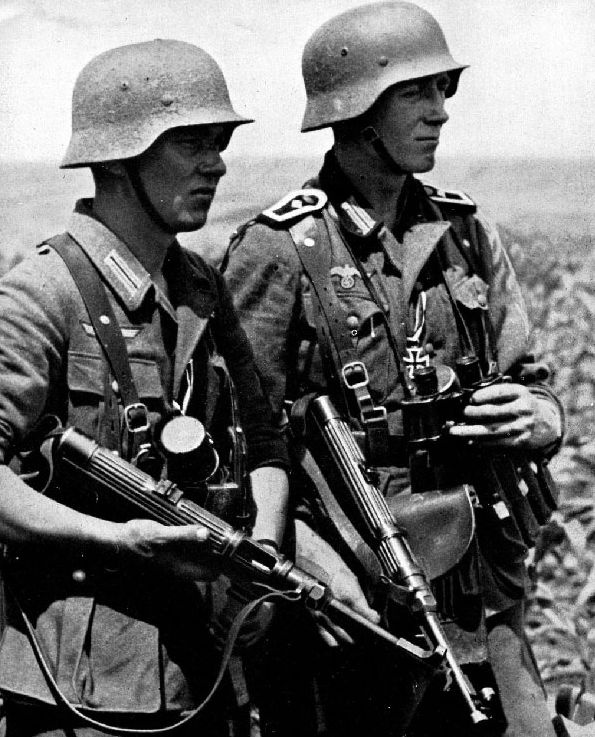
RARE "Battlefield" FIND!
German SA ( "Sturmabteilung "or Storm Troops ) NAZI Officers
DAGGER ! - ( Excavated Wolomin / Radzymin )
Here is a great find ! A Battlefield recovered skeleton blade and crossbar
of a German SA Officers Dagger with motto still clearly visible "Everything
for Germany" In response to Vedeneev's thrust, the Germans started
a tactical counter-attack near Radzymin on July 31. The offensive, carried
out by 4 understrength Panzer divisions,was to secure the eastern approaches
to Warsaw and Vistula crossings, and aimed to destroy the three tank
corps of the Second Tank Army in detail. Under the leadership of German
Field Marshal Model, the 4th, 19th, Hermann Göring, and 5th SS
Panzer Divisions were concentrated from different areas with their arrival
in the area of Wolomin occurring between July 31 and August 1, 1944.
Although the 3rd Tank Corps gamely defended the initial assaults of
the Hermann Göring and 19th Panzer Divisions, the arrival of the
4th Panzer and 5th SS Panzer Divisions spelled doom for the isolated
and outnumbered unit.Already on August 1, the leading elements of the
19th and 5th SS Panzer Divisions, closing from the west and east respectively,
met at Okuniew, cutting the 3rd Tank Corps off from the other units
of the Second Tank Army. Pressed into the area of Wolomin, the 3rd Tank
Corps was pocketed and destroyed on August 3, 1944. Attempts to reach
the doomed tank corps by the 8th Guards Tank Corps and the 16th Tank
Corps failed, with the 8th Guards Tank Corps taking serious losses in
the attempt. Although Model had planned to attack the 8th Guards Tank
Corps next, the withdrawal of the 19th and Hermann Göring Panzer
Divisions to shore up the German defenses around the Magnuszew bridgehead
forced the remaining German forces around Okuniew to go on the defensive.For
unknown reasons, on August 2, 1944 all armies that were to assault Warsaw
had their orders changed. The 28th, 47th and 65th Armies were ordered
to turn northwards and seize the undefended town of Wyszków and
the Liwiec river line. The 2nd Tank Army was left in place and had to
fight the Germans alone, without support of the infantry. Also, 69th
Army was ordered to stop while the 8th Guards Army under Vasily Chuikov
was ordered to halt the assault and await a German attack from the direction
of Garwolin. Further combat lasted until August 10, when the Germans
finally withdrew. Soviet losses were heavy, but not heavy enough to
affect the overall course of their thrust to the vicinity of Warsaw.
The 3rd Tank Corps was destroyed, the 8th Guards Tank Corps took heavy
losses, and the 16th Tank Corps took significant losses as well. Overall,
the Second Tank Army's losses were significant enough that it was withdrawn
from the front lines by August 5, 1944.
SOLD
.jpg)
.jpg)
.jpg)
.jpg)
.jpg)
.jpg)
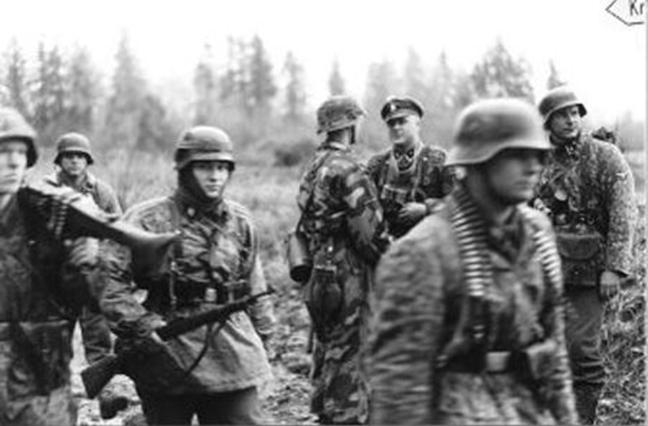
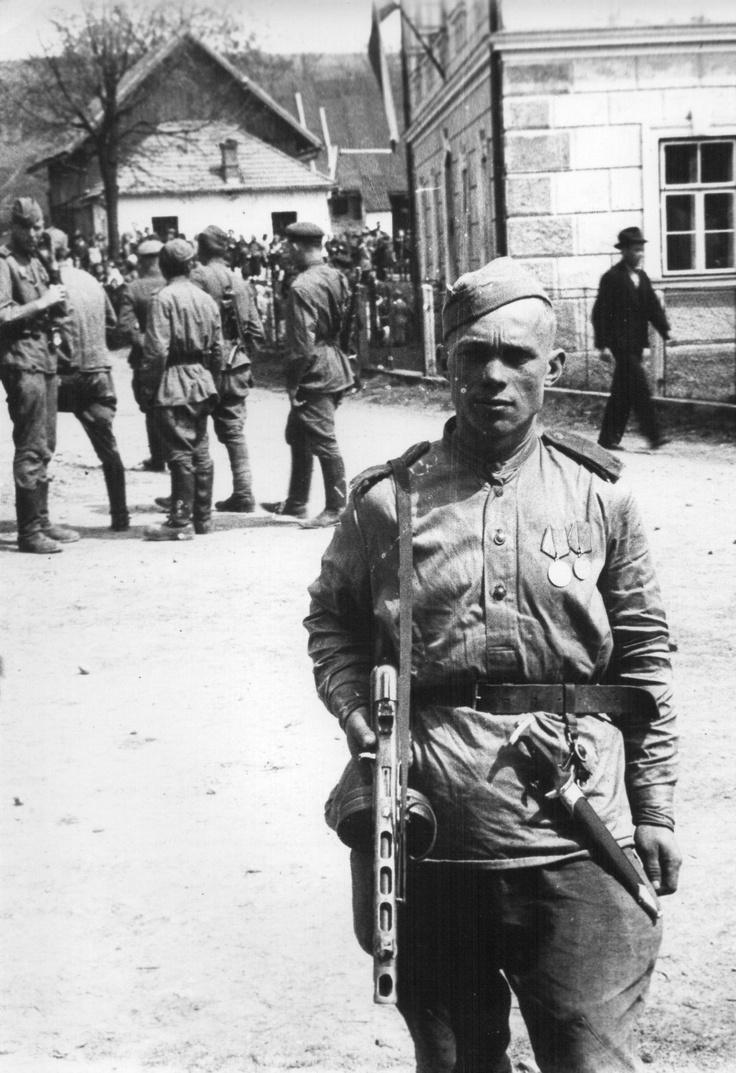
ABSOLUTELY IMPRESSIVE RELIC !! "
DIRECT STRIKE " Artillery Strike RUSSIAN T-34 " Shark Fin
" TANK TRACK LINK " Battle Damaged with a chunk blown off
! - ( Recovered NARWA Battlefield Site ! )
Here is an impressive relic that would be the centerpiece of your man-cave
! A Battlefield relic T-34 Russian Tank Track Link with a chunk missing
where a shell had a direct strike ! As the Soviet tanks moved south,
Gen. Steiner called on Kausch's panzers to counterattack. While SS and
Soviet infantry fought in the forward areas, the panzers and Govorov's
T 34s played a deadly game of cat and mouse at the approaches to Narva.
The hulls of burned out vehicles littered the landscape as Soviet and
German fought each other, often at point blank range.The Soviet commander,
realizing the bridges were beyond his reach, ordered his tanks to retreat
and dig in. Kausch's panzers followed, but were met with a withering
fire that then forced them to halt. Even though the bridges were safe,
the breach in the German lines still threatened to unhinge the Lilienbach
area.By this time, Collani knew his battered regiment could not hold
out any longer in front of Lilienbach. His companies had taken heavy
casualties and the survivors were at the end of their endurance. If
the Soviets attacked in force again, there would be little hope of repelling
them. In the end, there was no real choice. Collani ordered his troops
to prepare to withdraw to new positions farther south. The shorter line
of defense would compensate somewhat for the gaps in the ranks left
by the violent fighting of the last few days.But the Soviet commander
was also aware of the situation and immediately brought up reinforcements
to attack the retreating Germans. If his men could catch the enemy unaware,
the retreat could be turned into a rout.
RESERVED FOR D.S.
.jpg)
.jpg)
.jpg)
.jpg)
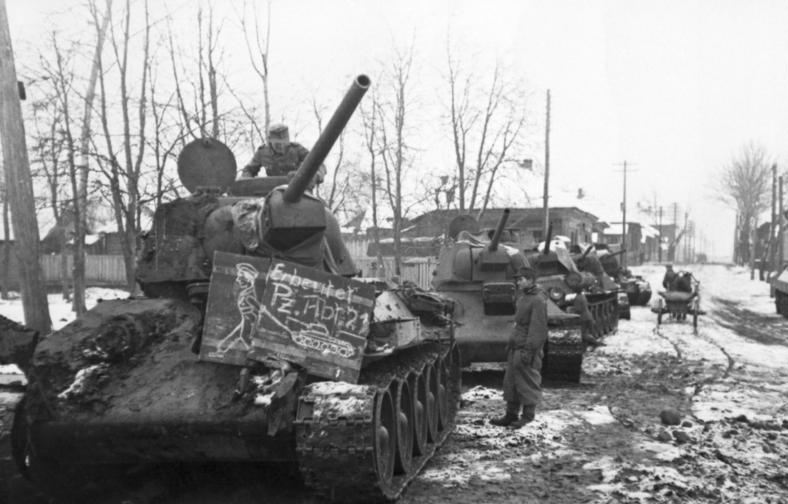
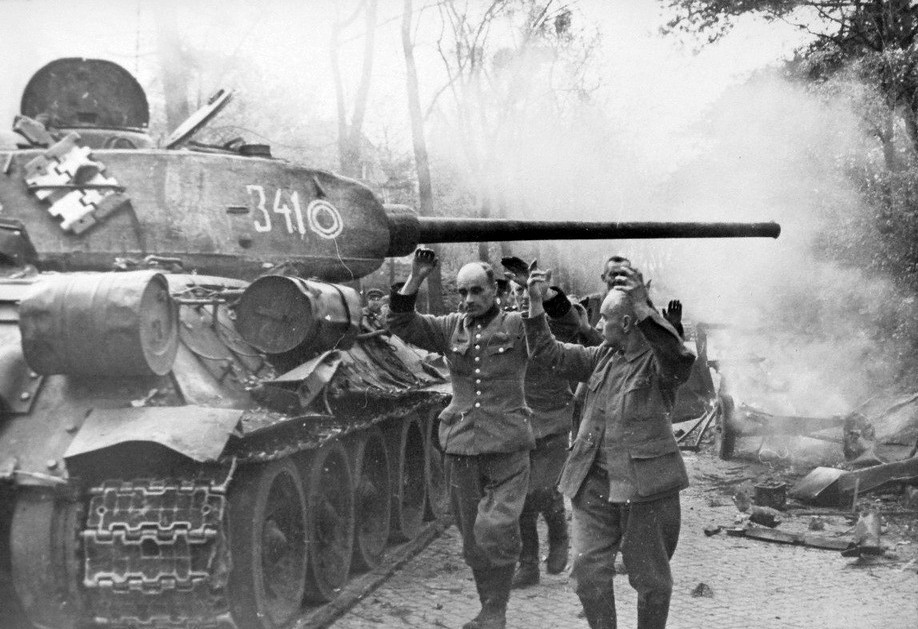
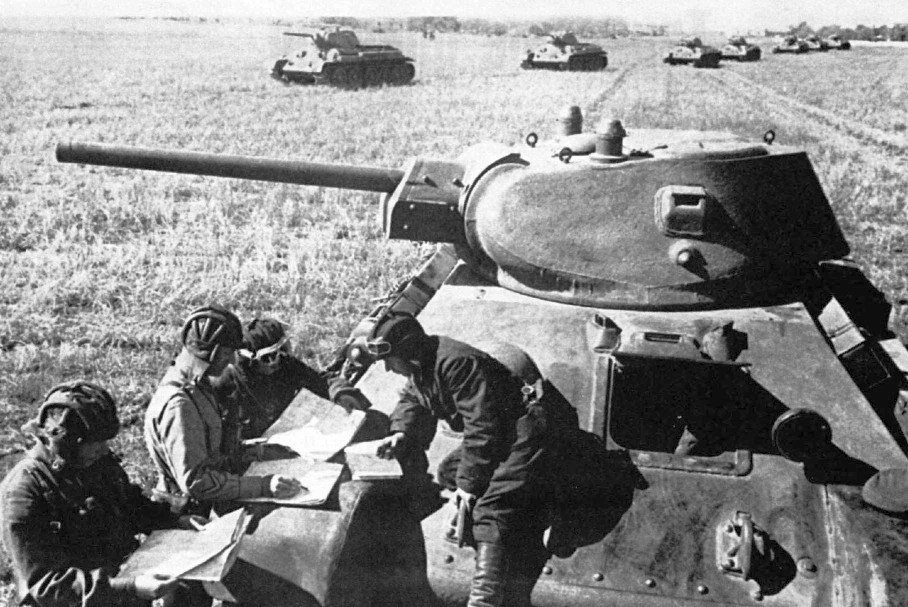
OUTSTANDING WW2 "ARTIFACT" FROM STALINGRAD !! Battlefield Excavated GERMAN "ENIGMA MACHINE" Bunker Found at Gumrak Airstrip - STALINGRAD
Here is a relic from my personal collection that is fantastic, historic and extremely collectible! The German "Field" Enigma Cypher Machine was battlefield excavated at a dug -out bunker site at the Gumrak Airfield in Stalingrad ! This impressive artifact is ghostly in appearance and historic as seen below in the Intelligence report. Although the German army, SS, police, and railway all used Enigma with similar procedures, it was the Luftwaffe (Air Force) that was the first and most fruitful source of Ultra intelligence during the war. The messages were decrypted in Hut 6 at Bletchley Park and turned into intelligence reports in Hut 3.The network code-named ‘Red’ at Bletchley Park was broken regularly and quickly from 22 May 1940 until the end of hostilities. Indeed, the Air Force section of Hut 3 expected the new day’s Enigma settings to have been established in Hut 6 by breakfast time. The relative ease of breaking this network’s settings was a product of plentiful cribs and frequent German operating mistakes.[132]Luftwaffe chief Hermann Göring was known to use it for trivial communications, including informing squadron commanders to make sure the pilots he was going to decorate had been properly deloused. Such messages became known as "Göring funnies" to the staff at Bletchley Park.
After the surrender of the encircled German
forces in Stalingrad in early 1943 Enigma machines and documents plus
signals personnel fell into Soviet hands. According to the memoirs of
Admiral Golovko documents were retrieved from the sunken U-boat 639
in August 1943: ‘Submarine S-101, which sank U 639 and recovered
lists of call-signs and codes which made it possible to keep track of
enemy submarines throughout the Northern theatre. During the summer
’44 battles several German units were encircled and destroyed.
It is safe to assume that a lot of crypto material was lost.During WWII
their spy John Cairncross was able to infiltrate Bletchley Park and
he gave the Soviets copies of the documents that he had access to. Some
dealt with the Enigma. So it is certain that the Soviets were able to
solve Enigma messages thanks to compromised material and the possibility
that during the war they managed to retrieve the daily Enigma settings
cryptanalytically cannot be discounted. The only way to know for sure
is for the Russian government to give researchers access to the wartime
files of the NKVD 5th Department. Another way is to look for information
from other available sources. One such source is the report ‘Russian
signal intelligence 1941-45’ by Lt Col Fritz Neeb, head of evaluation
for NAAS 2 (Signal Intelligence Evaluation Center) of KONA 2 (Signals
intelligence Regiment 2) assigned to Army Group Centre in the Eastern
Front. According to Neeb the Soviet signals intelligence organization
was as good as or better than the Germans in traffic analysis and direction
finding. However it doesn’t seem like they were able to solve
German Enigma traffic, at least up to late 1942.In page 17 of his report
he says that during the Stalingrad battle a Soviet 5-figure message
was decoded and it contained a signals intelligence report. The report
showed that the German units in the area were correctly identified but
there was a mistake in their numerical designation. This would imply
that the information came from sources other than cryptanalysis since
in German messages numbers had to be spelled out.
Despite an estimated 30,000 Enigma machines manufactured, there are
currently only about 350 known to exist today, with less than half of
these in private hands. Enigma machines are now a collector's item for
the über geek - a standard Army Enigma has increased in value from
$20K to over $200K in the past decade. A record price of $269,000 for
a 3-wheel Enigma was fetched in April, 2015 at Bonhams. Here is an even
rarer battlefield recovered example although nowhere near these prices...
Reserved for GW
.jpg)
.jpg)
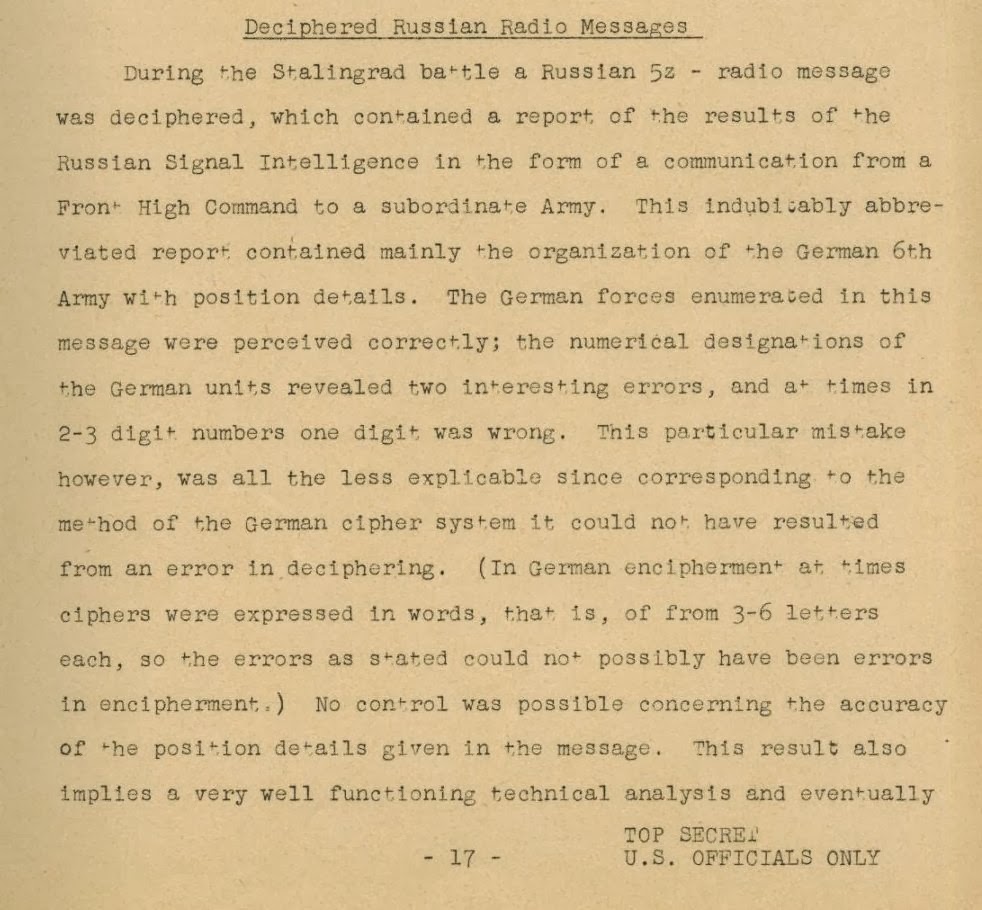
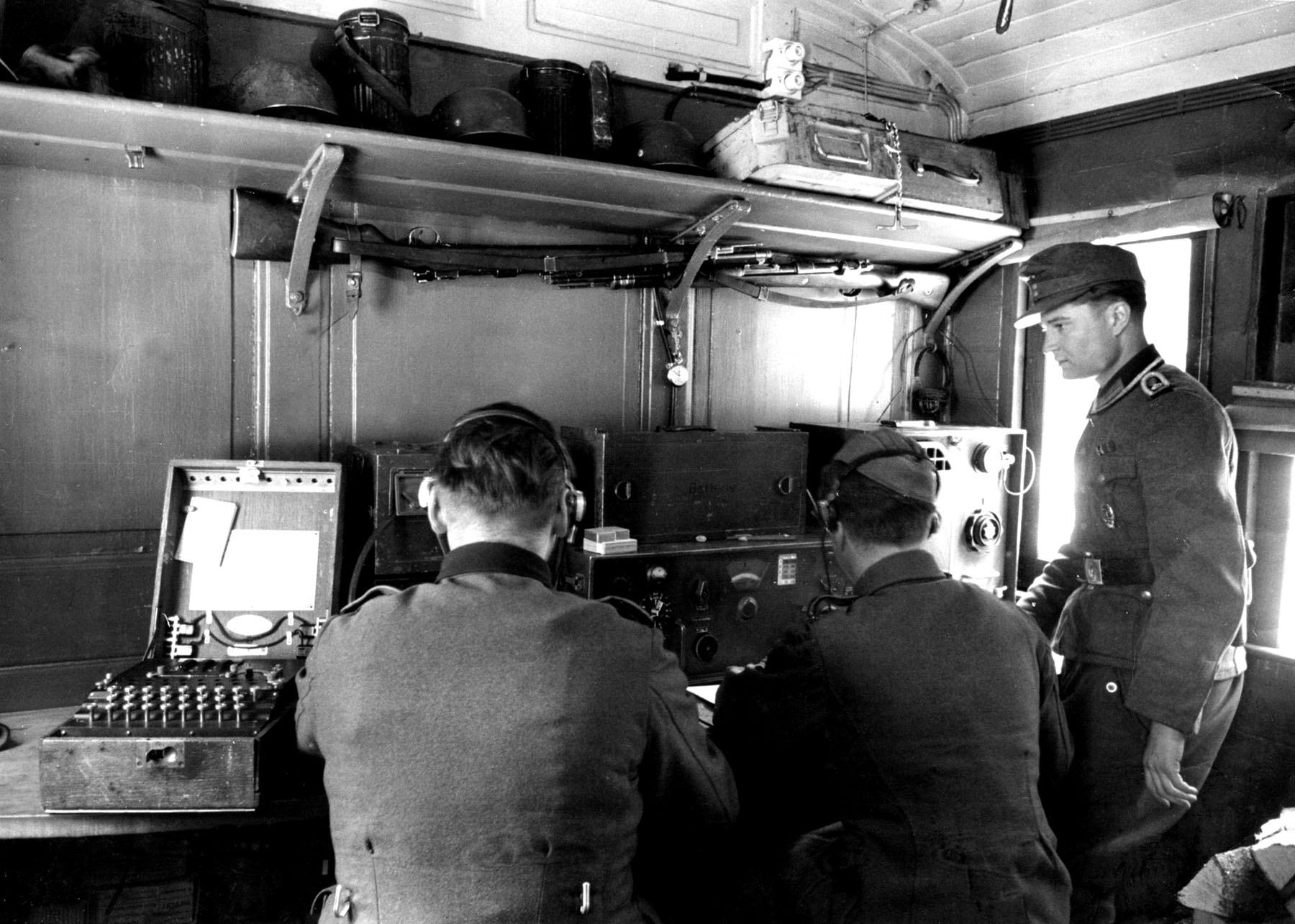
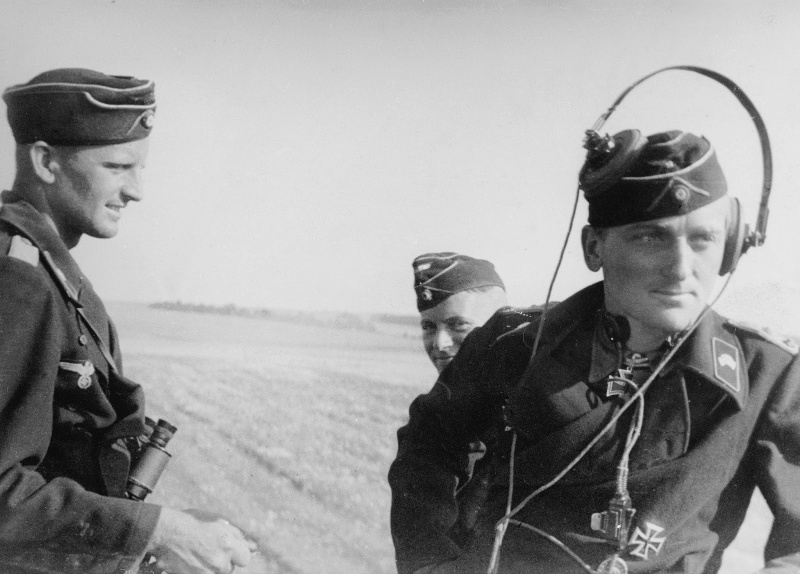
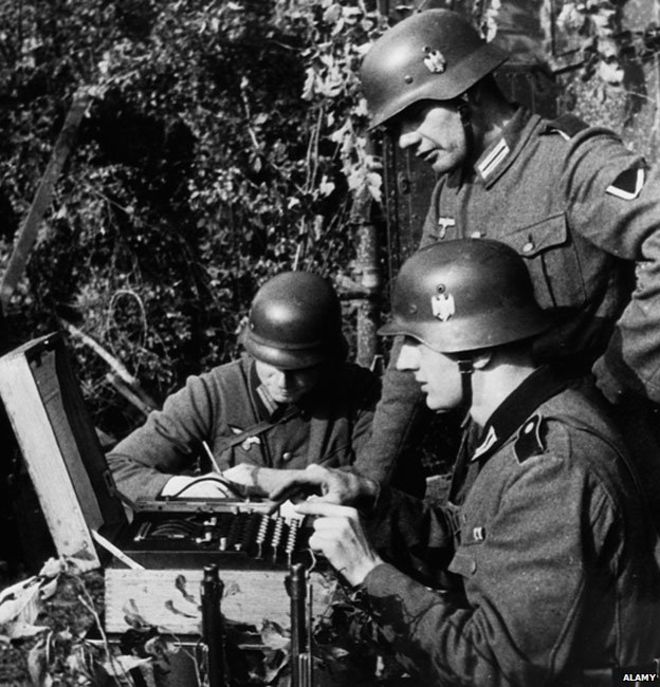
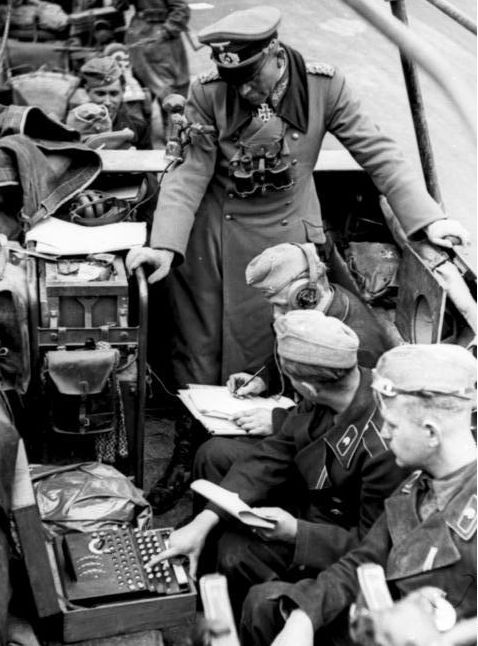
"UNIQUE TRENCH ART" WW2
"Russian Battle Damaged" Large Size HELMET "TO BERLIN
FOR MOSCOW"
( Recovered KURLAND BATTLEFIELD )
Here is a Fantastic Relic WW2 Russian Helmet with TRENCH ART soldier painted " TO BERLIN for MOSCOW " and STAR. The helmet has battle damage to the crown. The large size helmet is an incredible display artifact with soldier art. Kurland Pocket Battlefield area.At the start of Operation Barbarossa in 1941, Courland, along with the rest of the Baltic, was overrun by Army Group North headed by Field Marshal Wilhelm Ritter von Leeb. In 1944, the Red Army lifted the siege of Leningrad and re-conquered the Baltic area along with much of Ukraine and Belarus. However, some 200,000 German troops held out in Courland. With their backs to the Baltic Sea. they were trapped in what became known as the Courland Pocket, blockaded by the Red Army and the Red Baltic Fleet. Colonel-General Heinz Guderian, the Chief of the German General Staff, insisted to Adolf Hitler that the troops in Courland should be evacuated by sea and used for the defense of Germany. Hitler refused, and ordered the Wehrmacht, Waffen-SS, Luftwaffe and Kriegsmarine forces in Courland to continue the defence of the area. Hitler believed them necessary to protect Kriegsmarine submarine bases along the Baltic coast. On January 15, 1945, Army Group Courland (Heeresgruppe Kurland) was formed under Colonel-General Dr. Lothar Rendulic The blockade by elements of the Leningrad Front remained until May 8, 1945, when the Army Group Courland, then under its last commander, Colonel-General Carl Hilpert, surrendered to Marshal Leonid Govorov, the commander of the Leningrad Front (reinforced by elements of the 2nd Baltic Front) on the Courland perimeter. At this time the group consisted of the remnants of some 31 divisions. After May 9, 1945, approximately 203,000 troops of Army Group Courland began moving to Soviet prison camps in the East. The majority of them never returned to Germany.
SOLD
.jpg)
.jpg)
.jpg)
.jpg)
.jpg)
.jpg)
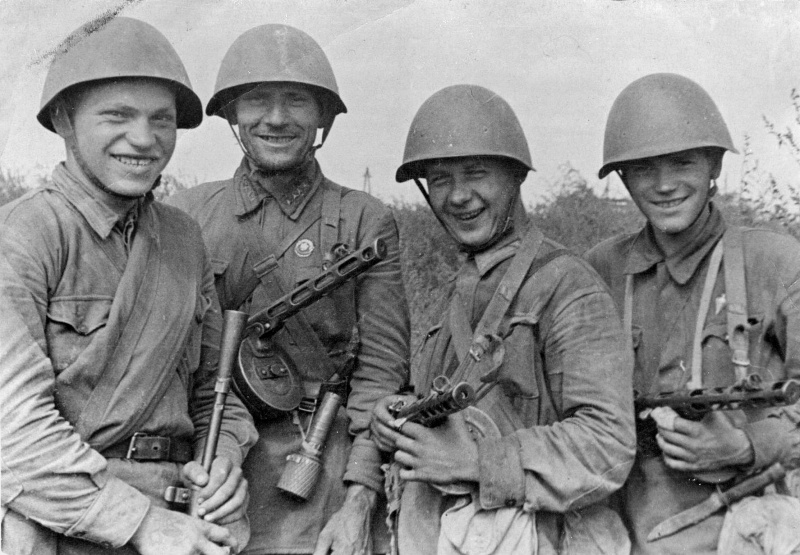
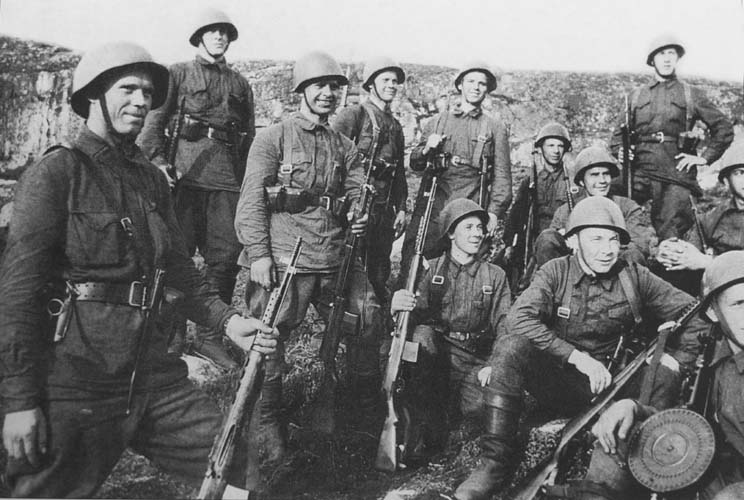
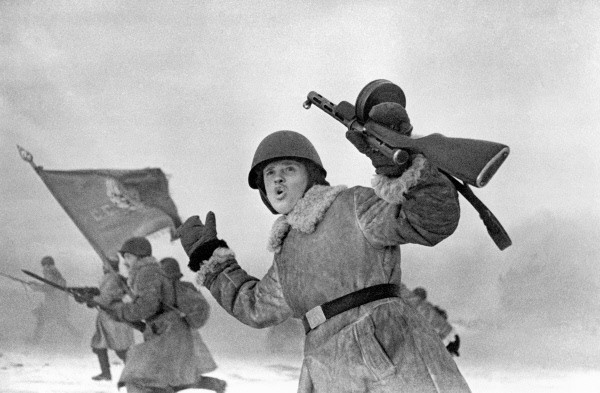
WOW !! A Great Historic WW2 Artifact ! GERMAN FIGHTER AIRCRAFT
- JU-87- RELIC Piece of a Panel with SIGN - Translated " Aim High
for the fuhrer ?" ( Recovered Historic STALINGRAD Pitomnik )
Here is a unique relic. A piece of a downed German aircraft the digger
believes to be a JU-87. The piece of panel has an applied sign with
German text. I tried to translate some of the words and only could make
out part of it. Aim high for the fuhrer. Pitomnik During the Battle
of Stalingrad, Stukas flew thousands of sorties against Soviet positions
in the city. StG 1, 2 and 77 flew 320 sorties on 14 October 1942. As
the German Sixth Army pushed the Soviets into a 1,000 metre enclave
on the west bank of the Volga River, 1,208 Stuka sorties were flown
against this small strip of land. The intense air attack, though causing
horrific losses on Soviet units, failed to destroy them.The Luftwaffe's
Stuka force made a maximum effort during this phase of the war. They
flew an average of 500 sorties per day and caused heavy losses among
Soviet forces, losing an average of only one Stuka per day. The Battle
of Stalingrad marked the high point in the fortunes of the Junkers Ju
87 Stuka Pitomnik was captured by the German 6th Army when it linked
up there with the 4th Panzer Army on 3 September 1942The airfield at
Pitomnik was one of seven airfields within the Stalingrad Pocket after
the 6th Army was encircled and the only one properly equipped to handle
large amounts of air traffic. The field was equipped with lights for
night operation.Along with anti aircraft guns, the airfield was protected
by fighter planes of Jagdgeschwader 3, elements of which were based
there (the remainder of JG 3 was stationed outside the pocket).In mid-January,
the remaining planes of the group were ordered to leave the pocket.
The airfield was used to fly out the remaining female hospital staff
of the 6th Army, when the hopelessness of the situation became apparent.
Male medical staff were not permitted to leave. The edges of the runway
were filled with wounded German soldiers whose conditions were deemed
not serious enough for evacuation, and only ambulatory cases were actually
evacuated by air.From 15 January, Pitomnik came under artillery fire
of the Red Army and two days later, the airfield was captured, leaving
the 6th Army with Gumrak as its only supply airfield. Karpovka had already
fallen on 13 January and alongside Pitomnik, four other airfields fell
on 17 January. Gumrak eventually fell on 23 January, leaving the 6th
Army without any means of direct support. As of 2009, the location of
the Pitomnik Airfield is used as farmland. Great Display Relic !
SOLD
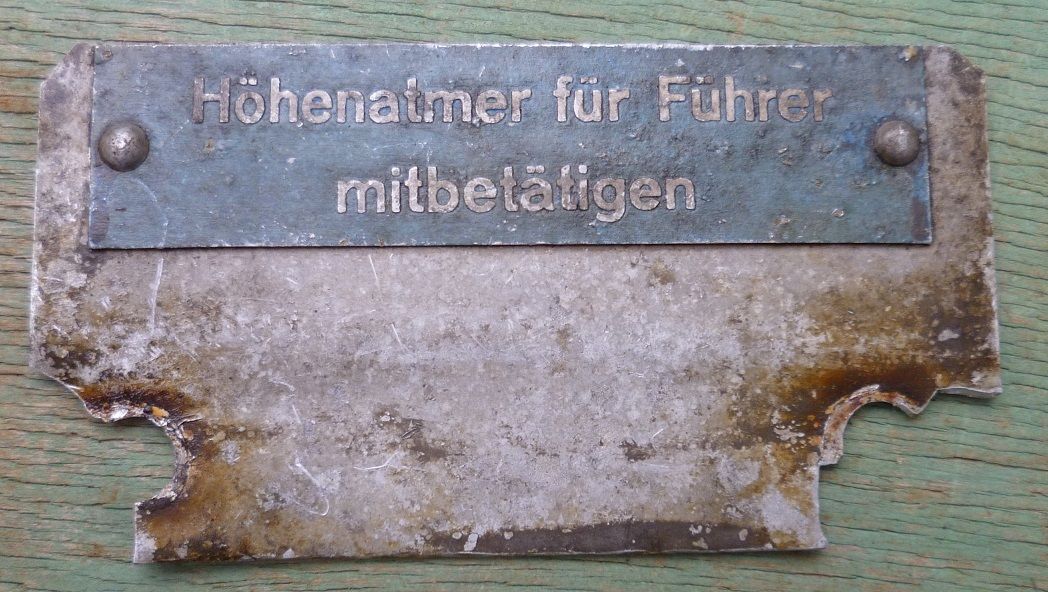
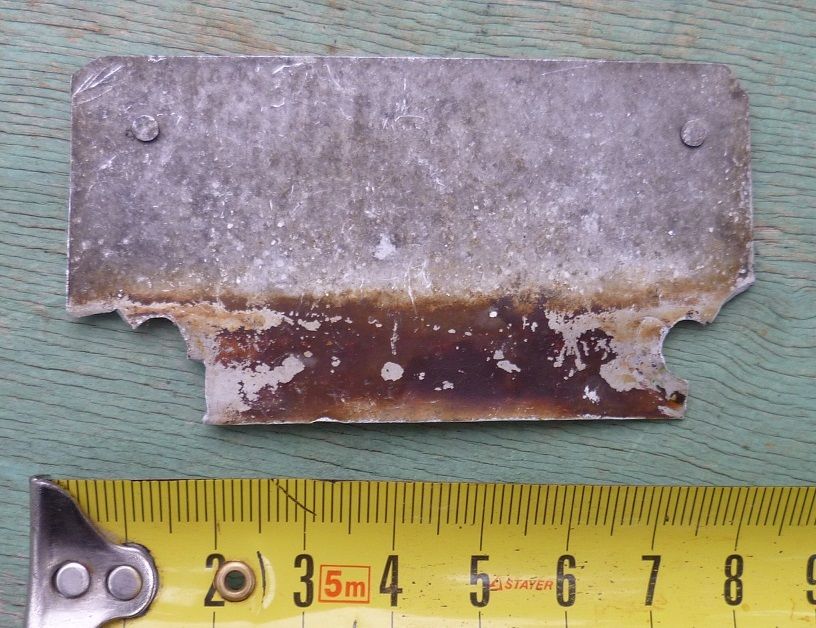
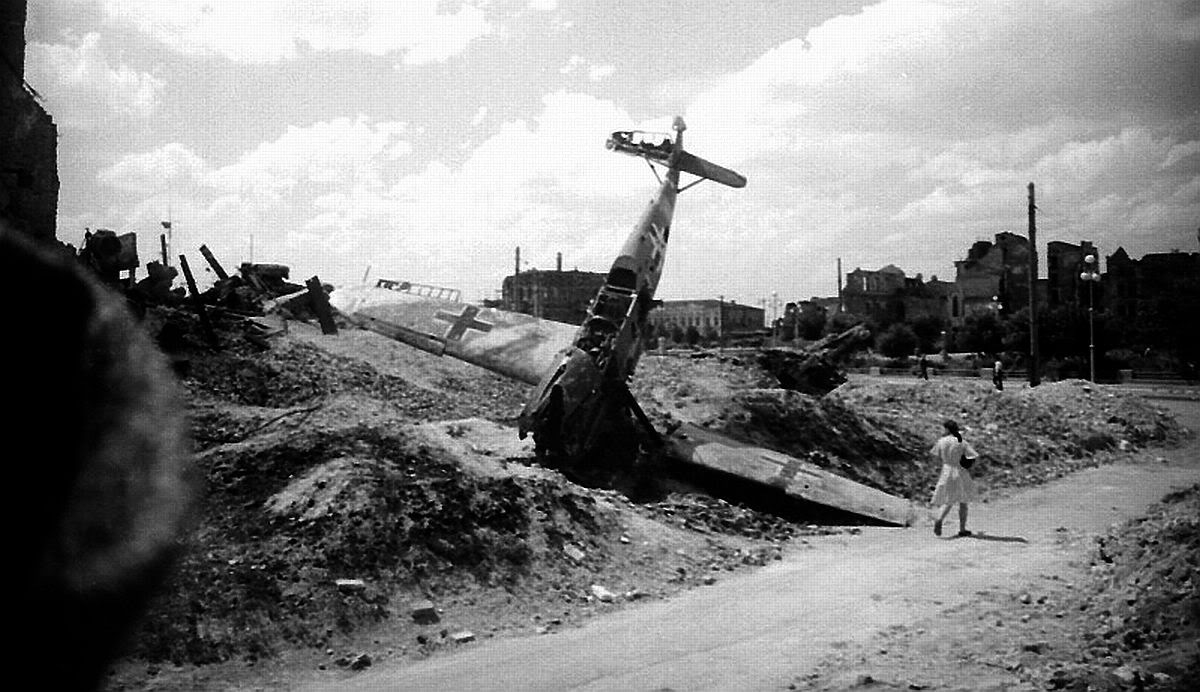
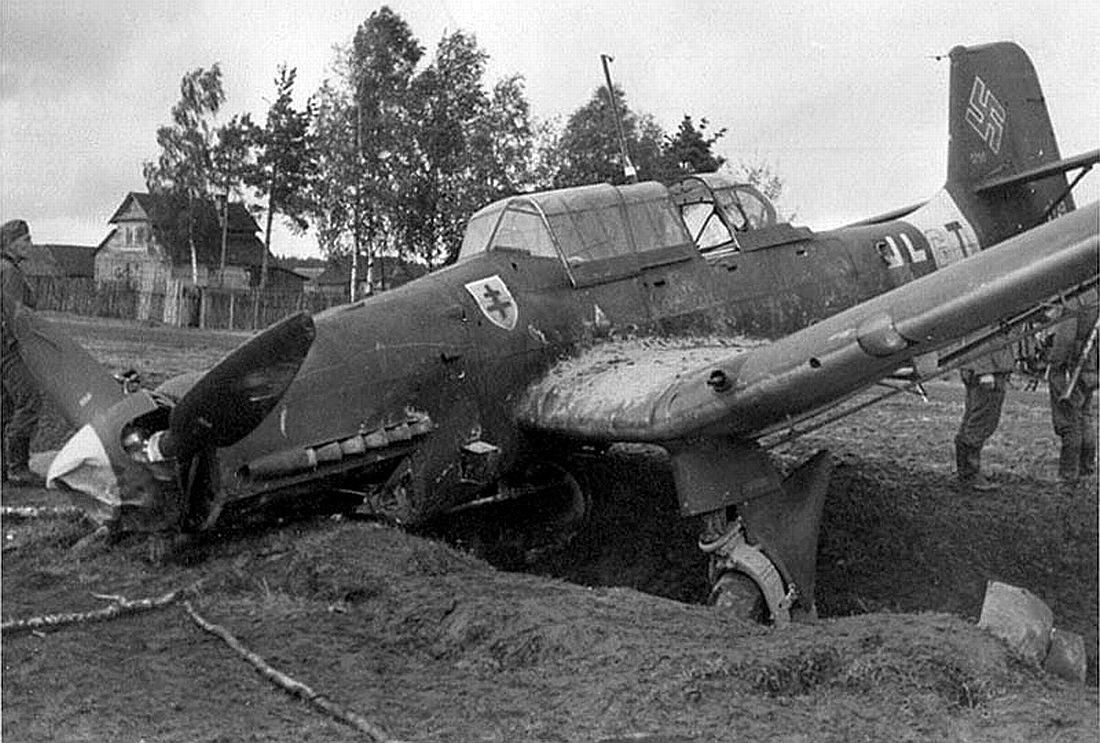
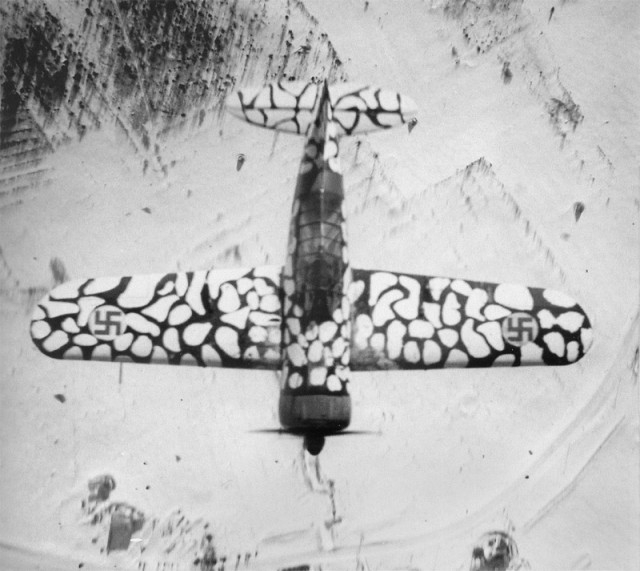
HISTORICAL WW2 ARTIFACT ! "Battle-Damaged"
RELIC German Luftwaffe "FALLSCHIRMJAGER" ( Paratrooper ) HELMET
"Winter Camo"
( Personal Collection Dug NEVA / Leningrad !! )
Wow ! Artifacts don't get better than this ! A battlefield found highly
desireable German Luftwaffe Para Helmet "Fallschirmjager"
both battle damaged "blown apart one side and the highly sought
after Snow Camouflage paint ! part of liner band and bolts remain. A
Historic "affordable relic that was THERE ! After the battle for
Crete, the 7th Flieger Division was ordered back to its bases in Germany
for rest and refitting. Operation Barbarossa (the invasion of Russia),
was to start without the Fallschirmtruppe. However, at the end of September
1941 parts of the division were mobilized, ready to be sent eastwards
to fight as conventional Infantry. The 1st & 3rd Battalion's, 1st
Regiment under the command of Generalmajor Bruno Bräuer
and the 2nd Battalion of the Sturm Regiment under the command of Major
Edgar Stentzler were sent to the German 18th Army (Army Group North)
on the Leningrad front. Leningrad was situated on the eastern end of
the Gulf of Finland, the river Neva ran through it and 30 miles to the
east was Lake Ladoga. The German forces backed by the Finns attacking
from the North, had partially encircled the city. The Russians held
some ground on the western side of Lake Ladoga but their foothold was
being pressurized by Finnish forces in the North. Army Group North's
battle line was only partial in the east of the city, the Russians were
only willing to exploit this weakly held line.Facing this line were
the troops of the Volkhov Front consisting of several Russian armies.
If they could break through this German line they could hook up with
forces within the city who were trying to break through the western
side of the line. The Russians began the first of several attacks to
exploit the weakly held line to link up with Leningrad's forces with
the aim of crossing the River Neva.
SOLD
.jpg)
.jpg)
.jpg)
.jpg)
.jpg)
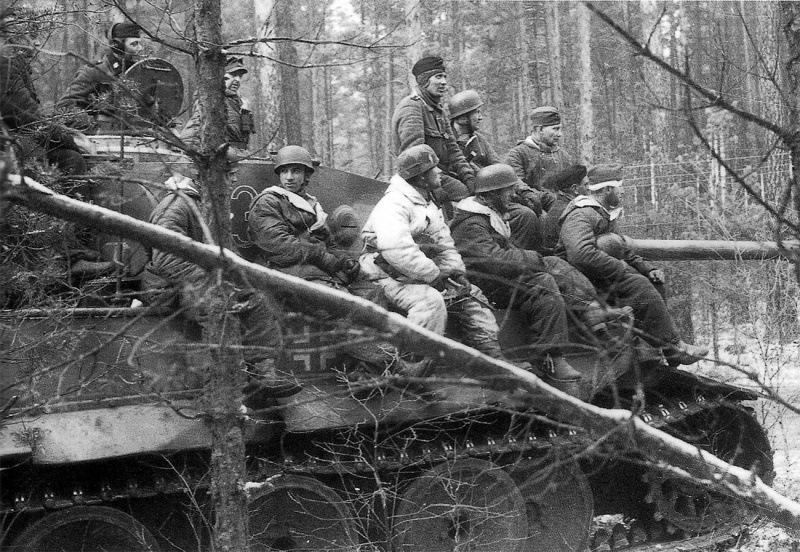
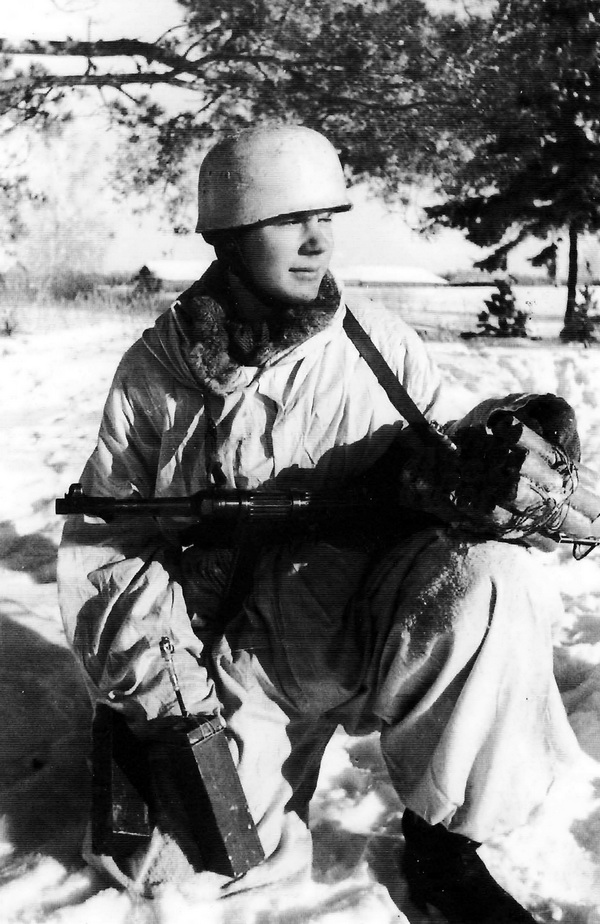
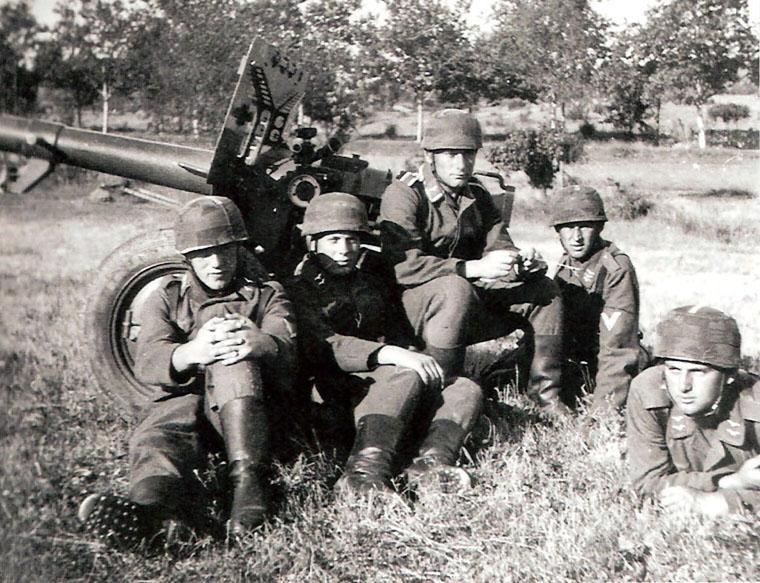
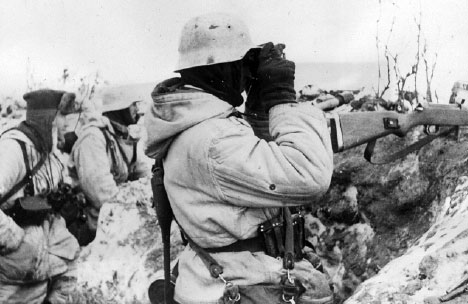
.jpg)
HISTORIC Unique PIECE of HISTORY !!
- RARE "Handle Grip Section of Trigger and part of barrel US WW2
FLAMETHROWER - ( IWO JIMA, Pacific Theatre )
Here is a cool Historic Veteran Bring-Back Souvenir Piece from IWO.
A handle piece of a Battle Damaged Flamethrower weapon. The Battle of
Iwo Jima (19 February – 26 March 1945) was a major battle in which
the United States Armed Forces landed and eventually captured the island
of Iwo Jima from the Japanese Imperial Army during World War II. The
American invasion, designated Operation Detachment, had the goal of
capturing the entire island, including the three Japanese-controlled
airfields (including the South Field and the Central Field), to provide
a staging area for attacks on the Japanese main islands.This five-week
battle comprised some of the fiercest and bloodiest fighting of the
War in the Pacific of World War.The Japanese heavy artillery in Suribachi
opened their reinforced steel doors to fire, and then closed them immediately
to prevent counterfire from the Marines and naval gunners. This made
it difficult for American units to destroy a piece of Japanese artillery.To
make matters worse for the Americans, the bunkers were connected to
the elaborate tunnel system so that bunkers that were cleared with flamethrowers
and grenades were reoccupied shortly afterwards by Japanese troops moving
through the tunnels. This tactic caused many casualties among the Marines,
as they walked past the reoccupied bunkers without expecting to suddenly
take fresh fire from them.The Marines advanced slowly under heavy machine
gun and artillery fire. With the arrival of armored tanks, and by the
use of heavy naval artillery and aerial bombing on Mount Suribachi,
the Marines were able to advance past the beaches.Seven hundred and
sixty Marines made a near-suicidal charge across to the other side of
Iwo Jima on that first day. They took heavy casualties, but they made
a considerable advance. By the evening, the mountain had been cut off
from the rest of the island, and 30,000 Marines had landed. About 40,000
more would follow.
SOLD
.jpg)
.jpg)
.jpg)
.jpg)
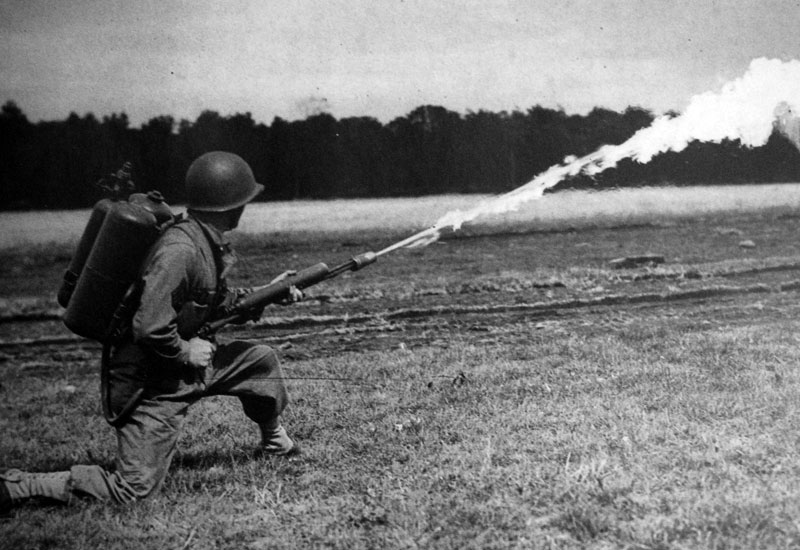
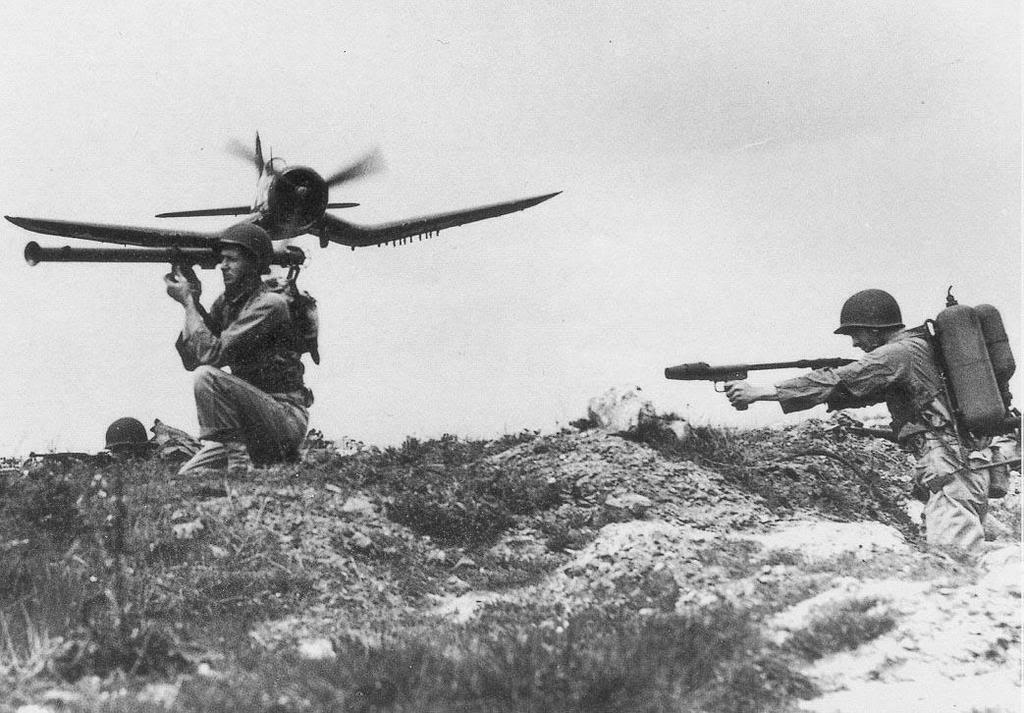
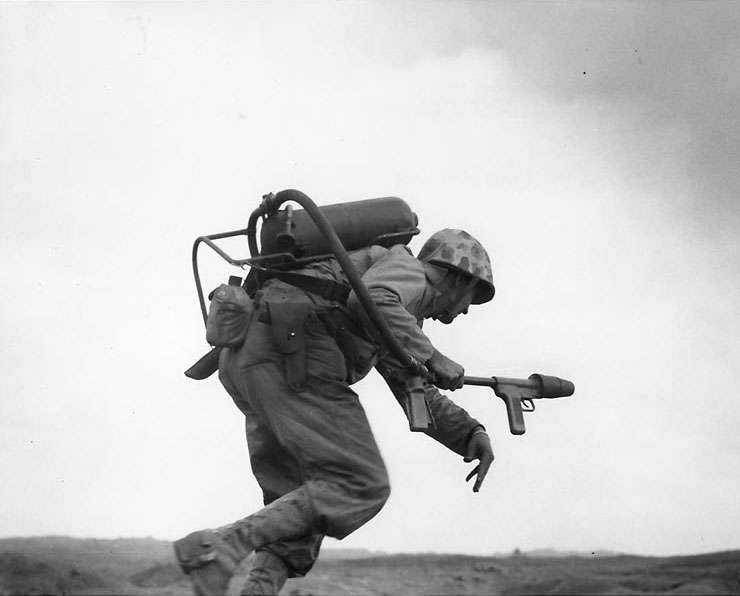
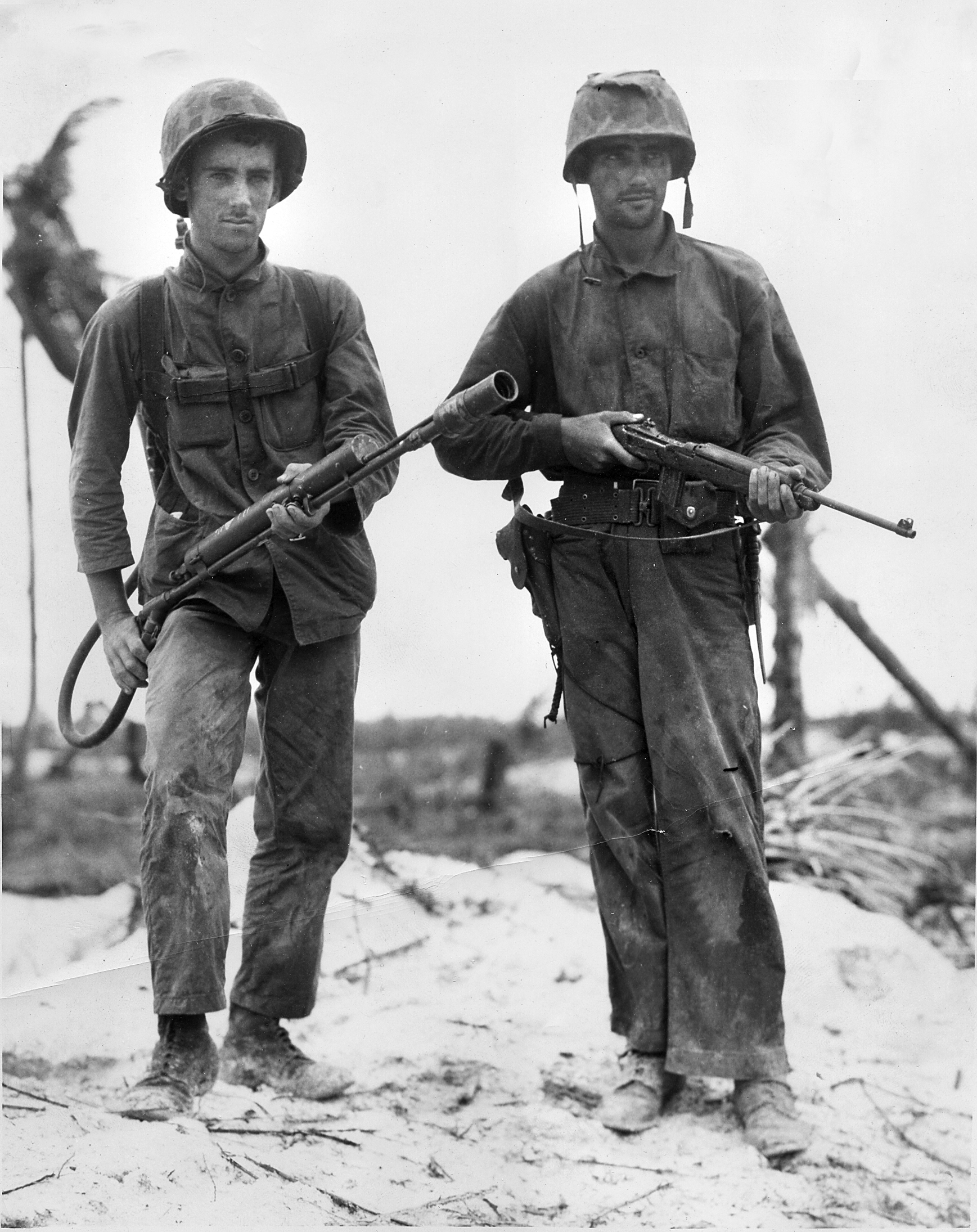
RARE WW2 "Battlefield Dug"
RELIC German ARMOURED VEHICLE Key Ring and Designation Fobs - ( Recovered
Historic STALINGRAD )
Here is unique relic that was excavated at the site of the Gumrak airfield
in Stalingrad. The lot of WW2 German Wehrmacht Armored Vehicle motor
trunk lid key and registration fobs designating the vehicle. A historic
relic for your Stlaingrad relic collection. The Battle of Stalingrad
was a major battle of World War II in which Nazi Germany and its allies
fought the Soviet Union for control of the city of Stalingrad (now Volgograd)
in southwestern Russia. The battle took place between 23 August 1942
and 2 February 1943. It was among the largest on the Eastern Front and
was marked by its brutality and disregard for military and civilian
casualties. It was amongst the bloodiest battles in the history of warfare
with the higher estimates of combined casualties amounting to nearly
two million deaths. In its defeat, the crippling losses suffered by
Germany's military proved to be insurmountable for the war. The battle
was a turning point in the war, after which the German forces attained
no further strategic victories in the East.The German offensive to capture
Stalingrad commenced in late summer 1942, supported by intensive Luftwaffe
bombing which reduced much of the city to rubble. The German offensive
eventually became bogged down in house-to-house fighting; and despite
controlling over 90% of the city at times, the Wehrmacht was unable
to dislodge the last Soviet defenders clinging tenaciously to the west
bank of the Volga River.
SOLD
.jpg)
.jpg)
.jpg)
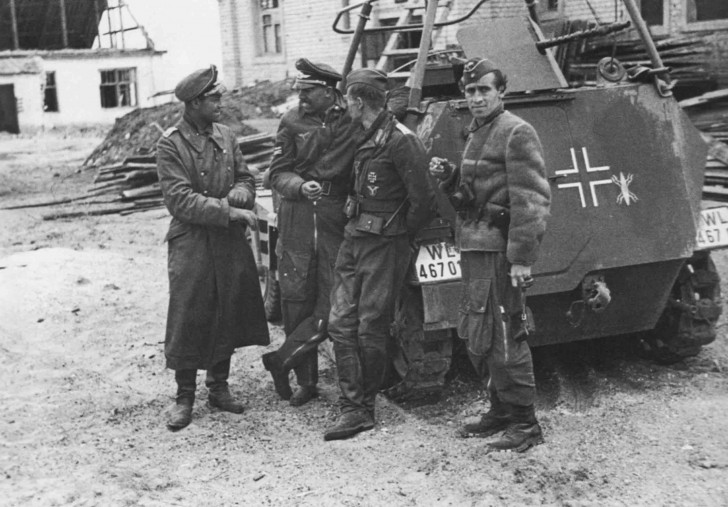
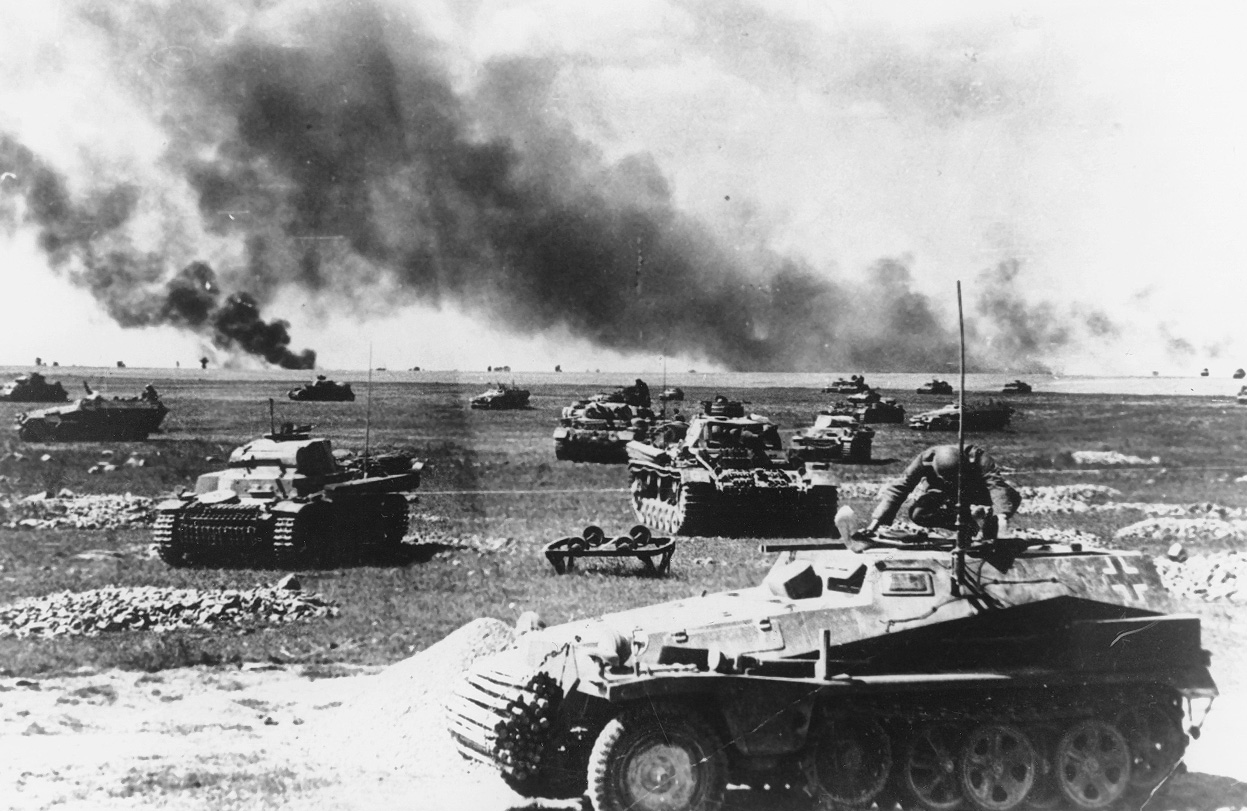
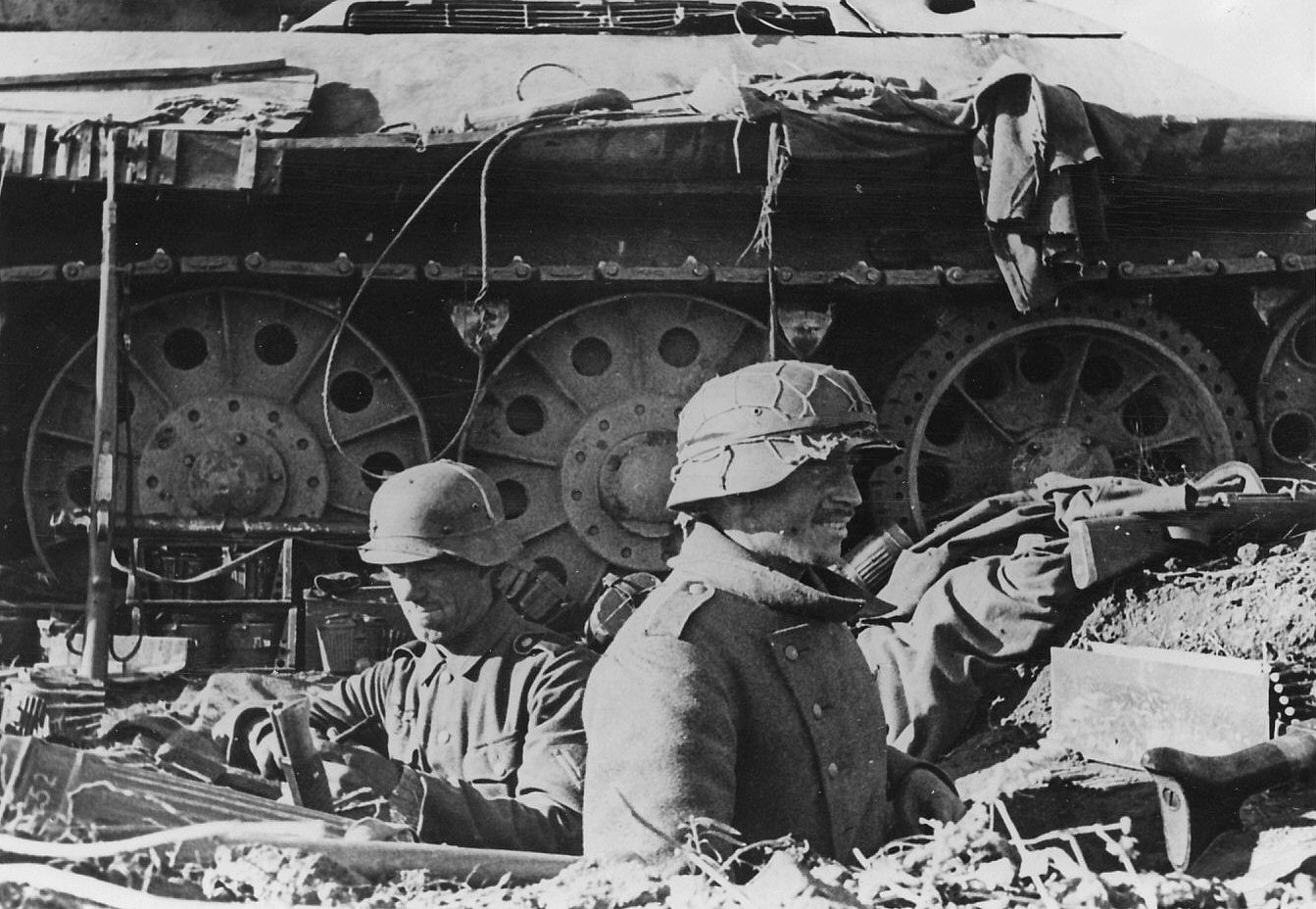
RARE "Battlefield Found"
WW2 RELIC German WAFFEN-SS Panzer Officers BUCKLE DISC ! - ( Recovered
Tank Battle RADZYMIN, POLAND )
Here is a very nice battle damaged example of a Waffen-SS Panzer Officers
Buckle Disc,excavated near Radzymin Tank Battle
The Battle of Radzymin was fought between the Wehrmachtâ??s XXXIX
Panzer Corps and the the Soviet 1st Byelorussian Front, from August
1 to August 10, 1944, during the Second World War. The Battle of Radzymin
consisted of a series of engagements which took place near the Polish
town of Radzymin at the conclusion of the Belorussian strategic offensive
operation. This tank battle in Poland ended with a German victory.
Approach of the Red Army forces into the proximity of Warsaw served
to initiate the Warsaw Uprising by the Polish Home Army with expectation
of help from the Red Army. It is unclear to what extent the Soviet defeat
contributed to the Red Armyâ??s decision not to intervene in the
Warsaw Uprising. The Battle of Radzymin is also known as the Battle
of Wolomin. The victorious XXXIX was commanded by General Dietrich von
Saucken and consisted of 19th Panzer Division, the 4th Panzer Division,
the 5th SS Panzer Division, and 73rd Infantry Division.
SOLD
.jpg)
.jpg)
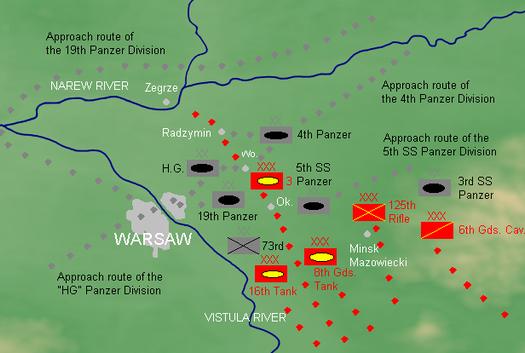

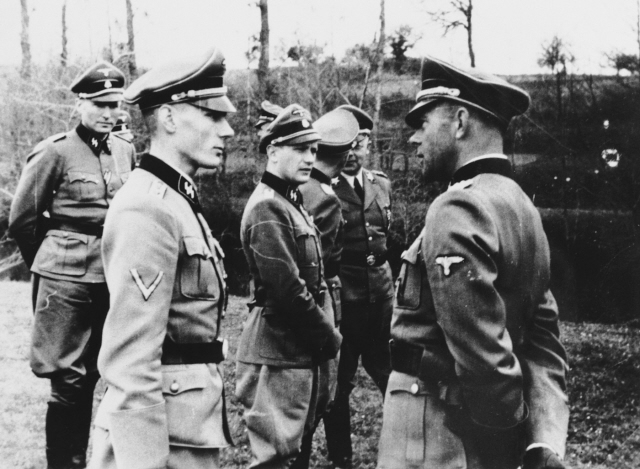
INCREDIBLE "HISTORIC FIND"
German "Paratrooper" Battlefield Dug "Fallschirmjager"
HELMET - ( Recovered Maleme, CRETE or KRETA of GREEK ISLANDS )
Here is a historic relic find "huge" size German Fallschirmjager
that came from a digger in Crete. The digger included pictures of where
he found it under the trestle in Maleme. As collectors know the German
Fallschirmjager helmets can fetch multiple thousands in nice condition.
Personally I prefer an example that was found on the battlefield..any
day of the week ! This one is solid with part of the aluminum liner
still inside, but the best part is "where it was found" !
The Battle of Crete began on May 20, 1941 and ended on June 1, 1941.
Crete was an important target for Germany because it provided territory
close to the Mediterranean sea that could be used for offensive air
and naval operations. German control over Crete would have also denied
the Allied powers access to Germany's Ploesti oil fields in Romania
where Germany gathered fifty percent of its oil. Germany launched a
large-scale airdrops in which the entire 7th Air Division was deployed
with the German 5th Mountain Division as the follow-up. Crete was captured
after fierce fighting against the Allied troops, but the high casualties
suffered by the Fallschirmjäger as they parachuted in
(like the brothers von Blücher) convinced Hitler that
such mass airdrops were no longer feasible. High casualties occurred
because the Allied powers knew of the Operation Merkur which meant the
surprise attack on Crete. Allied soldiers set up anti-air defense against
the paratroopers. This resulted in a high casualty count, over 3250
airborne soldiers killed or MIA and 3400 wounded.This battle however,
resulted in a German victory but due to the inefficiency and high loss
of paratroopers Hitler halted the use of large airborne attacks. The
German paratroopers conquered Crete, but at a heavy cost of thousands
dead and thousands wounded, mostly of Germanyâ??s finest soldiers,
and the loss of 170 transport aircraft and dozens of fighters and bombers.
These losses were dwarfed just months later by the tremendous German
losses in the fighting in Russia which began a month later, but in mid
1941, at the peak of his triumph, Adolf Hitler was shocked by the heavy
losses of the paratroopersâ?? invasion of Crete and he decided
that there will be no more large scale German airborne operations. In
the rest of World War 2, other than a few insignificant small operations,
the Fallschirmjager fought on the ground, as elite infantry. They proved
themselves again and again as formidable opponents, especially in Monte
Cassino (early 1944), in Normandy, and in Holland, where they defeated
the British paratroopers in Arnhem. The lessons of large scale operation
of paratroopers by the Germans were learned by The Allies, which later
during the war made several such operations.
SOLD
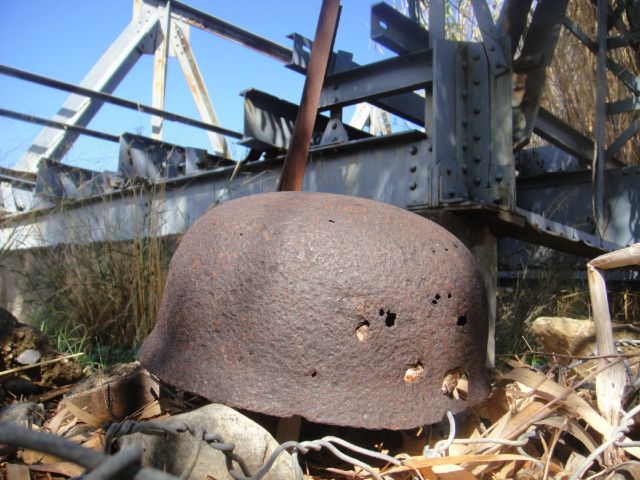
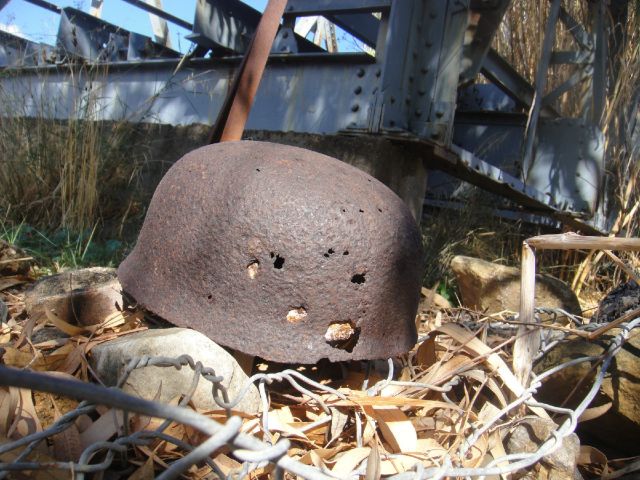
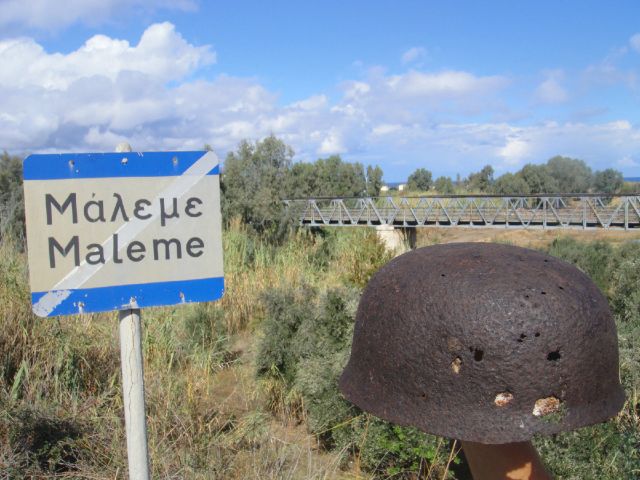
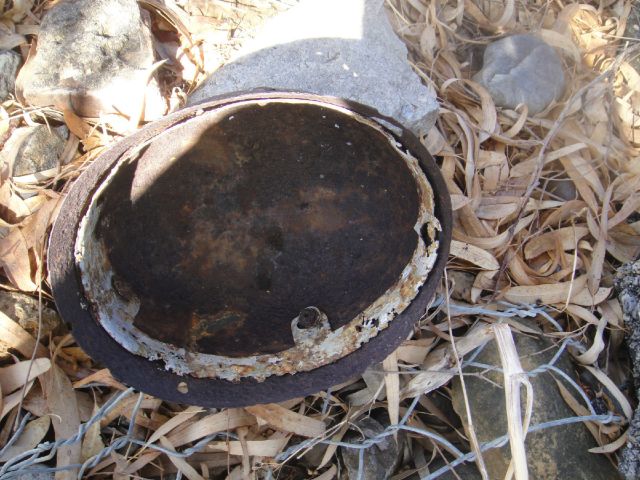
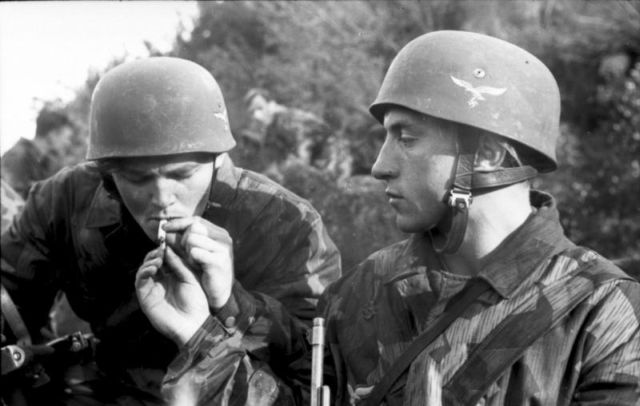
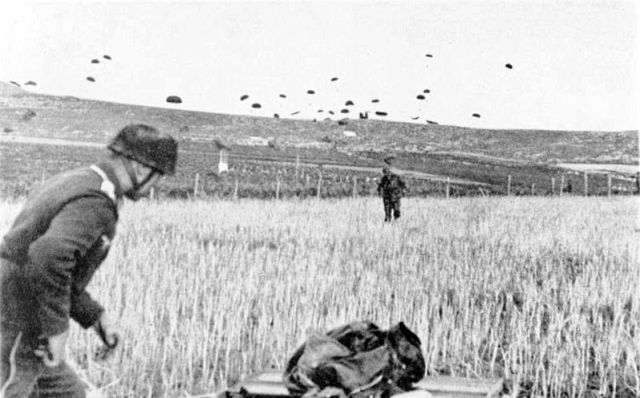
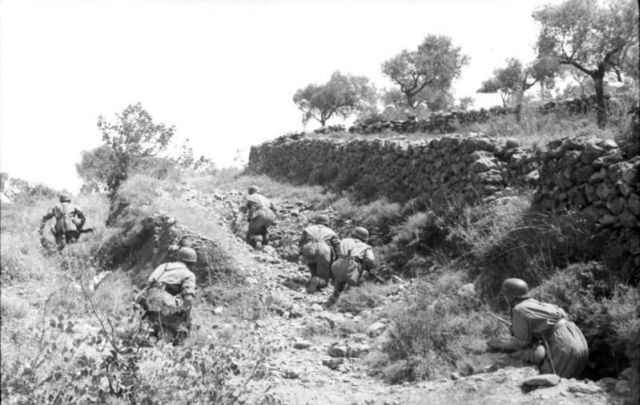
Here is an original ground dug relic WW2 German Luftwaffe SD2 or Butterfly Bomb Casing ( 100% excavated Inert casing for historic display only ) that was dug in Poland and still retains original Luftwaffe feldgrau paint . A Butterfly Bomb (or Sprengbombe Dickwandig 2 kg or SD2) was a German 2 kilogram anti-personnel submunition used by the Luftwaffe during the Second World War. It was so named because the thin cylindrical metal outer shell which hinged open when the bomblet deployed gave it the superficial appearance of a large butterfly. The design was very distinctive and easy to recognise. SD2 bomblets were not dropped individually, but were packed into containers holding between 6 and 108 submunitions e.g. the AB 23 SD-2 and AB 250-3 submunitions dispensers. The SD2 submunitions were released after the container was released from the aircraft and had burst open. Because SD2s were always dropped in groups (never individually) the discovery of one unexploded SD2 was a reliable indication that others had been dropped nearby. This bomb type was one of the first cluster bombs ever used in combat and it proved to be a highly effective weapon. The bomb containers that carried the SD2 bomblets and released them in the air were nicknamed the "Devil's Eggs" by Luftwaffe air and ground crew.
SOLD
_(2).jpg)
.jpg)
.jpg)

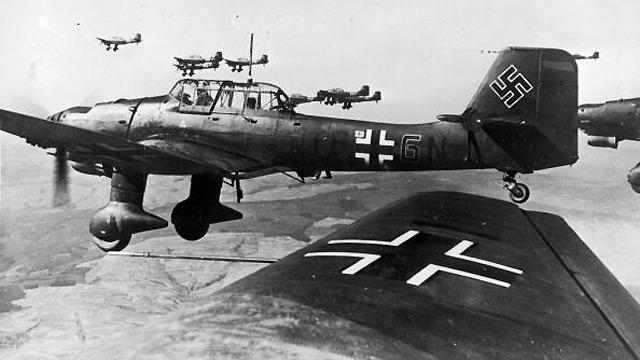
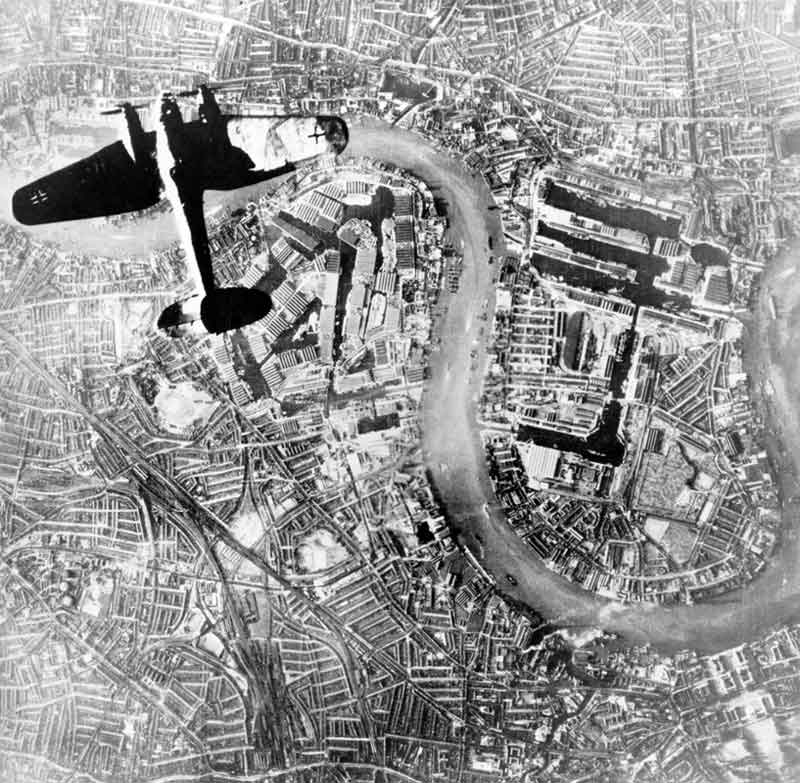
RARE to find Dug ! WW2 German GROUND
DUG "Battlefield Found" Relic WEHRMACHT Officer COLLAR TAB
- ( Recovered Kurland Pocket Battlefield )
Here is a chance to own an original ww2 officers collar tab that "was
there" actually worn in the battle of Kurland and excavated. At
the start of Operation Barbarossa in 1941, Courland, along with the
rest of the Baltic, was overrun by Army Group North headed by Field
Marshal Wilhelm Ritter von Leeb. In 1944, the Red Army lifted the siege
of Leningrad and re-conquered the Baltic area along with much of Ukraine
and Belarus. However, some 200,000 German troops held out in Courland.
With their backs to the Baltic Sea. they were trapped in what became
known as the Courland Pocket, blockaded by the Red Army and the Red
Baltic Fleet. Colonel-General Heinz Guderian, the Chief of the German
General Staff, insisted to Adolf Hitler that the troops in Courland
should be evacuated by sea and used for the defense of Germany. Hitler
refused, and ordered the Wehrmacht, Waffen-SS, Luftwaffe and Kriegsmarine
forces in Courland to continue the defence of the area. Hitler believed
them necessary to protect Kriegsmarine submarine bases along the Baltic
coast. On January 15, 1945, Army Group Courland (Heeresgruppe Kurland)
was formed under Colonel-General Dr. Lothar Rendulic The blockade by
elements of the Leningrad Front remained until May 8, 1945, when the
Army Group Courland, then under its last commander, Colonel-General
Carl Hilpert, surrendered to Marshal Leonid Govorov, the commander of
the Leningrad Front (reinforced by elements of the 2nd Baltic Front)
on the Courland perimeter. At this time the group consisted of the remnants
of some 31 divisions. After May 9, 1945, approximately 203,000 troops
of Army Group Courland began moving to Soviet prison camps in the East.
The majority of them never returned to Germany.
SOLD
.jpg)
.jpg)
.jpg)
.jpg)
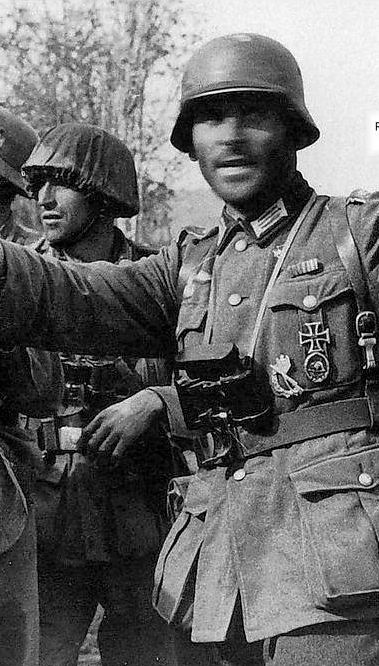
.jpg)
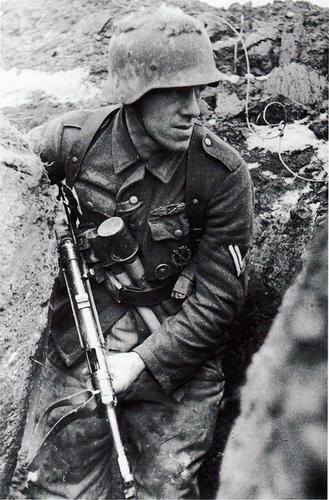
RARE Ground Dug RELIC Lot of WW2 BATTLEFIELD
found GERMAN "SS PANZER" Skulls Collar Tabs ! ( Recovered
Narva Battlefield )
Rare and highly collectible original battlefield dug found pair of relic
SS panzer "deaths head" collar tabs from Narva. In February
1944, the L and LIV Army Corps along with the III (Germanic) SS Panzer
Corps were on the left flank of the 18th Army as they retreated to Narva.
On 4 February, the Sponheimer Group was released from the 18th Army
and subordinated directly to the Army Group North. In support of the
forces already in place, Hitler ordered reinforcements. The Panzer Corps
Feldherrnhalle, with over 10,000 troops and their equipment, was airlifted
from Belorussia into Estonia via the airfield at Tartu on 1 February.
A week later, the 5th Battalion of the Panzergrenadier GroÃ?deutschland
Division arrived at the front. The Grenadier Regiment Gnesen (an ad
hoc regiment formed from replacement army units in Poland) was sent
from Germany and arrived on 11 February. Three days later, the 214th
Infantry Division was transferred from Norway. Over the next two weeks
various units were added to the group, including the 11th SS Volunteer
Panzergrenadier Division "Nordland", several divisions of
the Wehrmacht, the Estonian Division and local Estonian border guard
and Estonian Auxiliary Police battalions. Infantry General Otto Sponheimer
was replaced by General Johannes Friener and the Sponheimer Group was
renamed Army Detachment "Narwa" on 23 February. The Army Group
North ordered the deployment of "Narwa" on 22 February in
the following positions: III SS Panzer Corps deployed to Narva, Ivangorod
Bridgehead on the east bank of the river and north of Narva; the XXXXIII
Army Corps against the Krivasoo Bridgehead south of the city; and the
XXVI Army Corps to the sector between the Krivasoo Bridgehead and Lake
Peipus. As of 1 March 1944, there were a total of 123,541 personnel
subordinated to the Army Group in the following order of battle.
SOLD
.jpg)
.jpg)
.jpg)
.jpg)
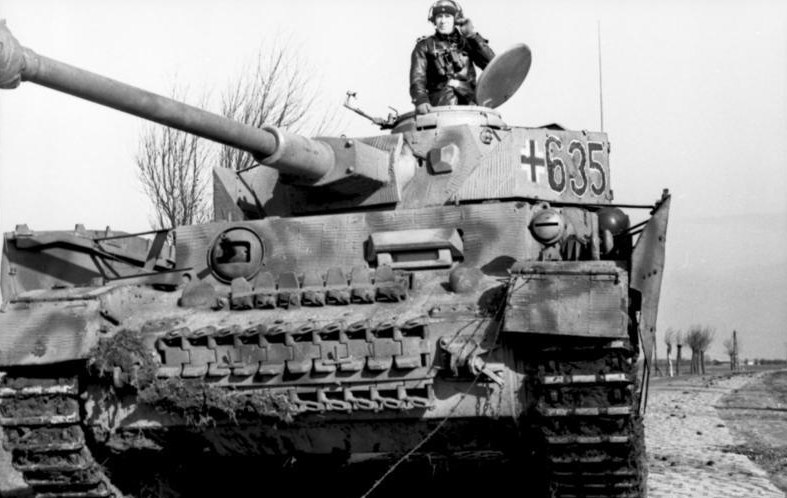
.jpg)
RARE AND HISTORIC " Battle Damaged
Shrapnel / Bullet Hole ? " M1 "Fixed Bale HELMET SHELL - (
Recovered Battlefield LA GLEIZE / Malmedy BULGE CAMPAIGN )
Here is historic US WW2 M1 Helmet Shell that was Battlefield recovered
in Malmedy by my UK collector. The shell has a shrapnel strike to the
crown as can be seen in the pictures. US battlefield relics are highly
collectible.In 1944, during the Battle of the Bulge, the area was the
site of the Malmedy massacre, where 84 American prisoners of war were
executed by Nazi SS troops under the command of Joachim Peiper. This
was one of a number of such massacres of prisoners and Belgian civilians
which took place in the Malmedy area. On 21 December the town itself,
which was then held by US troops, was attacked by German forces under
the command of Otto Skorzeny who were repelled. Moreover, on 23, 24
and 25 December 1944 the city was bombed repeatedly by the United States
Army Air Forces in a series of friendly fire incidents.
"Soon after the Americans surrendered, around 1330, the surviving
Americans started to hear random shooting. Survivors later stated that
German soldiers began shooting prisoners as soon as the fighting was
over. One American was shot when he protested the stealing of his watch
and another was shot when he didn't have his hands high enough. While
all of this was going on other Germans were looting and destroying B
Company's vehicles. Soon 88 (some reports have as many as 111) Americans
were lined up in eight rows in a field near the crossroads awaiting
their fate.Soon Lt Col Peiper arrived at the head of the main body of
his Kampfgruppe. He was outraged at the actions of his men and ordered
them to immediately stop looting and destroying the American trucks
and, more importantly, their precious fuel. He directed that the remaining
operable vehicles were to be driven to the rear and, since the Germans
were unfamiliar with operating the American trucks, he had some of the
prisoners detailed to drive them with German escort. Leaving a Maj Poetschke
in charge, Lt Col Peiper moved his column towards Ligneuville. "
SOLD
%20(2).jpg)
.jpg)
.jpg)
.jpg)
.jpg)
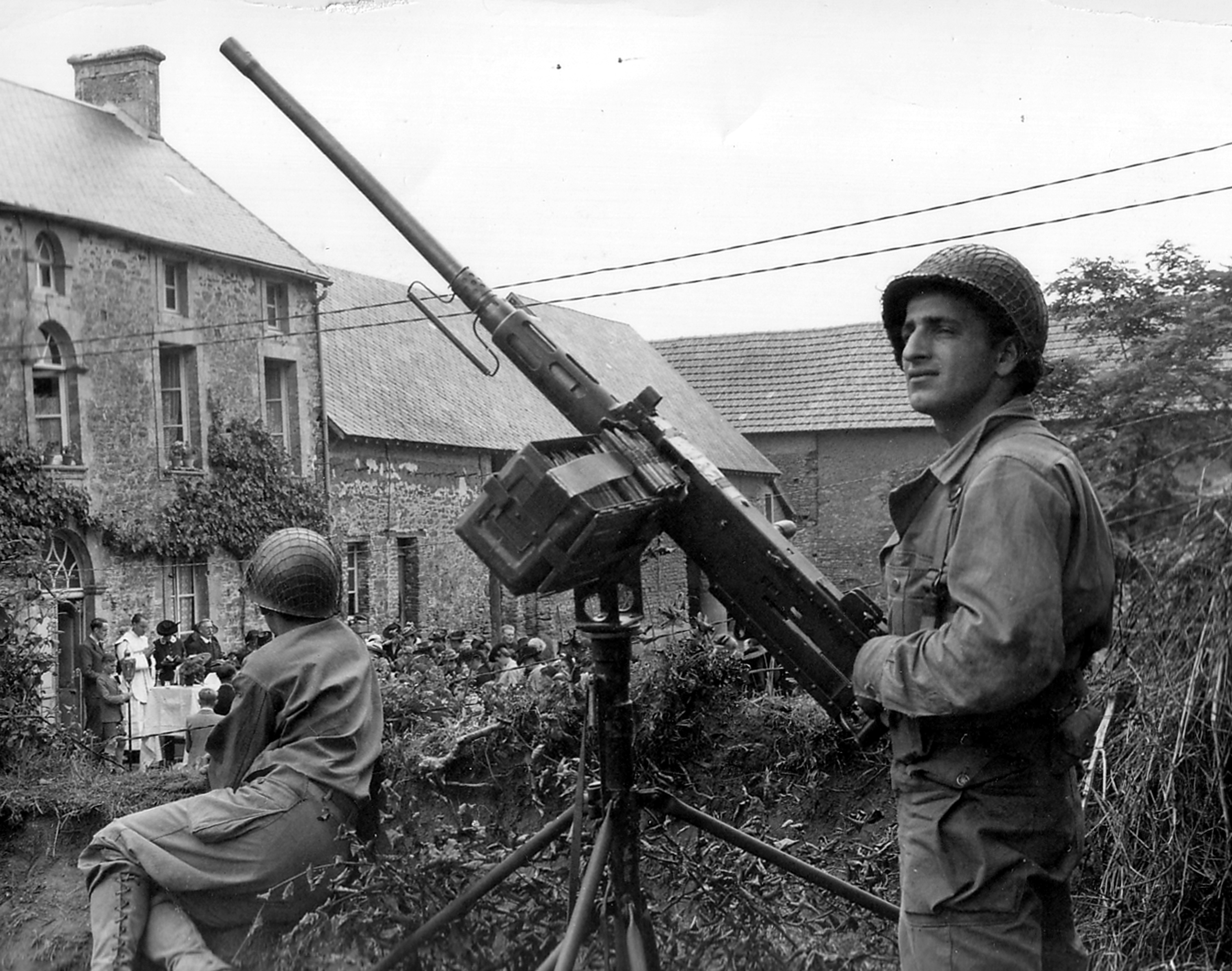
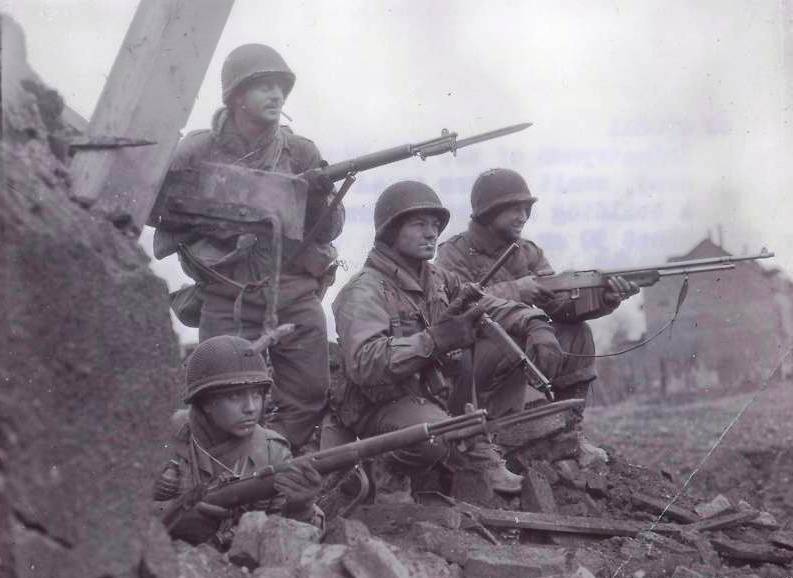
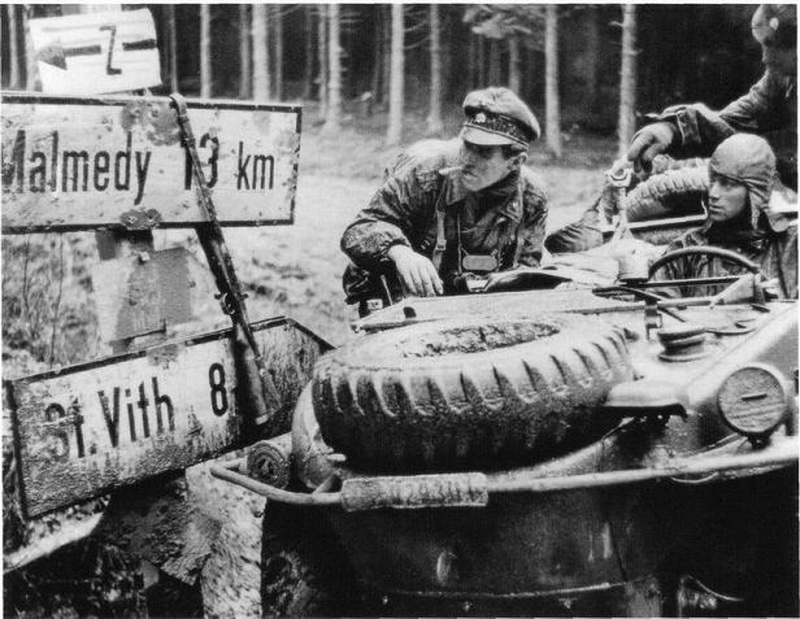
.jpg)
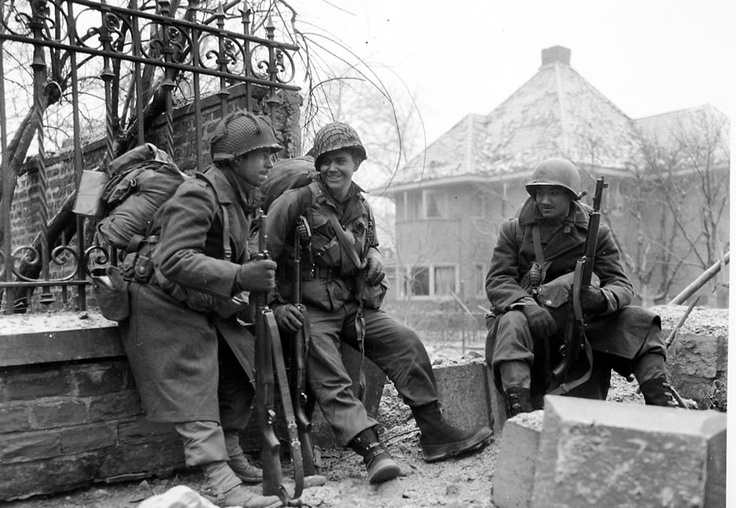
RARE CHANCE TO OWN A "Historic"
PIECE OF A WW2 "Panzer Tank" Battlefield Dug German Tank "
Wheel Spike" - ( Recovered Kurland Eastern Front )
Here is an incredible battle damaged displayable section of a WW2 German
Panzer T-4 Tank Wheel Rim section that was dug Kurland Pocket Battlefield.
The 510th was formed June 1944 in Paderborn and in July it was sent
to Lithuania, where it fought in the Kurland pocket until the end of
the war, attached to the 14. Panzer-Division and 30. Infanterie-Division.Elements
of the battalion were evacuated from Kurland. Via Kassel and Putlos
they reached the Western Front and were engaged in the last fighting
there. This group went into captivity with the Western Allies. A Kampfgruppe
with the last 15 Tiger tanks did stay in Kurland
Kurland Pocket Battlefield area.At the start of Operation Barbarossa
in 1941, Courland, along with the rest of the Baltic, was overrun by
Army Group North headed by Field Marshal Wilhelm Ritter von Leeb. In
1944, the Red Army lifted the siege of Leningrad and re-conquered the
Baltic area along with much of Ukraine and Belarus. However, some 200,000
German troops held out in Courland. With their backs to the Baltic Sea.
they were trapped in what became known as the Courland Pocket, blockaded
by the Red Army and the Red Baltic Fleet. Colonel-General Heinz Guderian,
the Chief of the German General Staff, insisted to Adolf Hitler that
the troops in Courland should be evacuated by sea and used for the defense
of Germany. Hitler refused, and ordered the Wehrmacht, Waffen-SS, Luftwaffe
and Kriegsmarine forces in Courland to continue the defence of the area.
Hitler believed them necessary to protect Kriegsmarine submarine bases
along the Baltic coast. On January 15, 1945, Army Group Courland (Heeresgruppe
Kurland) was formed under Colonel-General Dr. Lothar Rendulic The blockade
by elements of the Leningrad Front remained until May 8, 1945, when
the Army Group Courland, then under its last commander, Colonel-General
Carl Hilpert, surrendered to Marshal Leonid Govorov, the commander of
the Leningrad Front (reinforced by elements of the 2nd Baltic Front)
on the Courland perimeter. At this time the group consisted of the remnants
of some 31 divisions. After May 9, 1945, approximately 203,000 troops
of Army Group Courland began moving to Soviet prison camps in the East.
The majority of them never returned to Germany.
SOLD
.jpg)
.jpg)
.jpg)
.jpg)
.jpg)
.jpg)
.jpg)
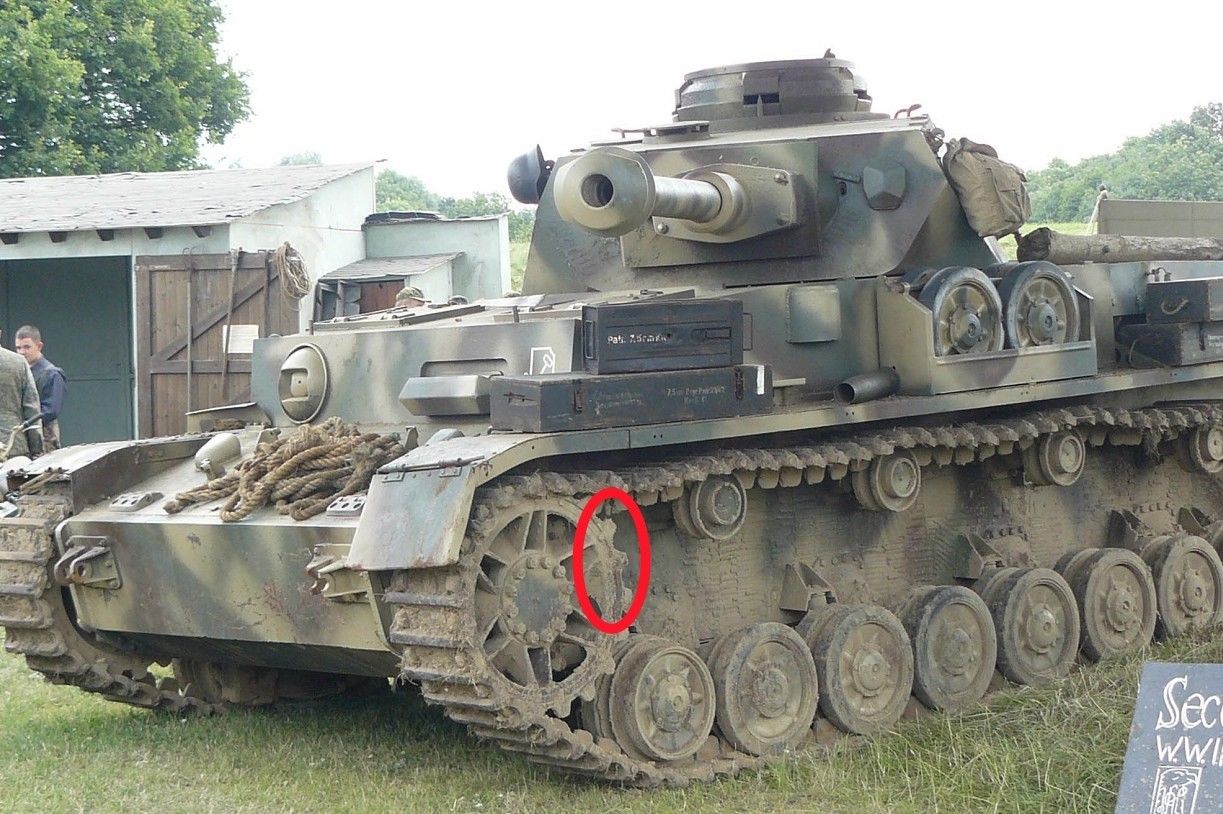
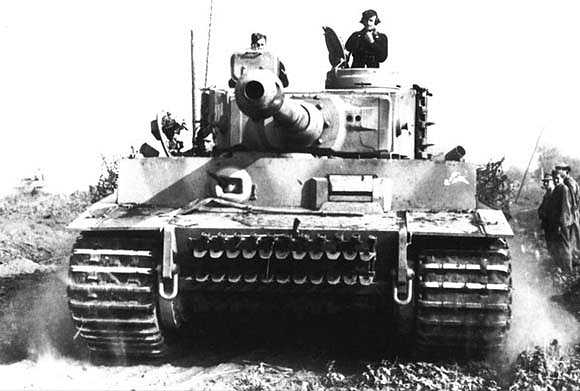
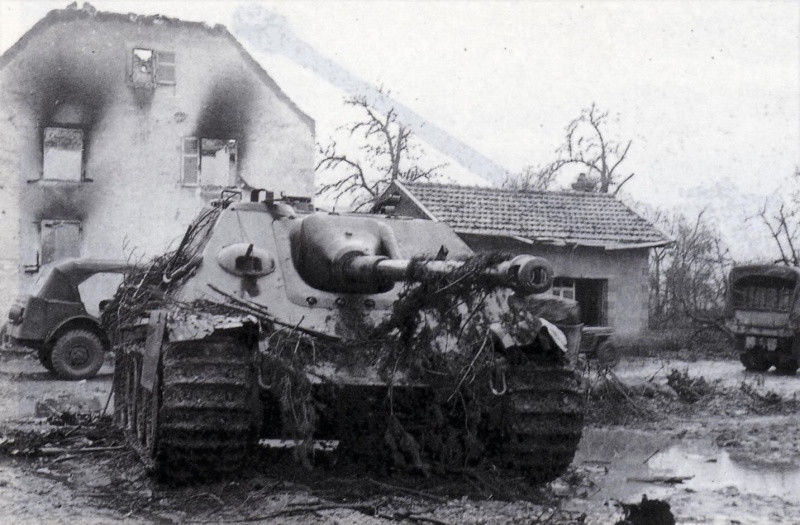

EXTREMELY RARE ARTIFACT ! German WW2 "TANK DESTROYER"
Wehrmacht Award Badge ( Recovered Battle Area METZ, France / Germany
Border )
Here is an incredible relic that is rare in any condition and to own
a battlefield found example is extremely rare ! This award was issued
to a Wehrmacht soldier that has taken out a tank sigle-handedly usually
with a Panzerschreck rocket. dug near the Metz battlefield. The Battle
of Metz was a three-month battle fought between the United States Army
and the German Army during World War II. It took place at the city of
Metz following the Allied breakout after the Normandy landings. The
attack on the city by the U.S. Third Army faced heavy resistance from
the defending German forces, and resulted in heavy casualties for both
sides The heavily fortified city of Metz was captured by U.S. forces
before the end of November 1944, and the battle ended in victory for
the U.S. following the surrender of the remaining German forces.The
Tank Destruction Badge (German: Sonderabzeichen für das
Niederkämpfen von Panzerkampfwagen durch Einzelkämpfer)
was a World War II German military decoration awarded to individuals
of the Wehrmacht who had single-handedly destroyed an enemy tank using
a hand-held weapon. Anti-tank units were ineligible for this award.
It was established by Adolf Hitler on 9 March, 1942, but could be awarded
for actions dating back to June 22, 1941 (the start of Operation Barbarossa
the German invasion of the Soviet Union).On 18 December, 1943, a gold
class was introduced that recognised the single-handed destruction of
five tanks. A soldier could therefore have four silver badges which
would all be replaced by a gold version upon the destruction of a fifth
tank (to which separate silver could be added thereafter).
SOLD
.jpg)
.jpg)
.jpg)
.jpg)
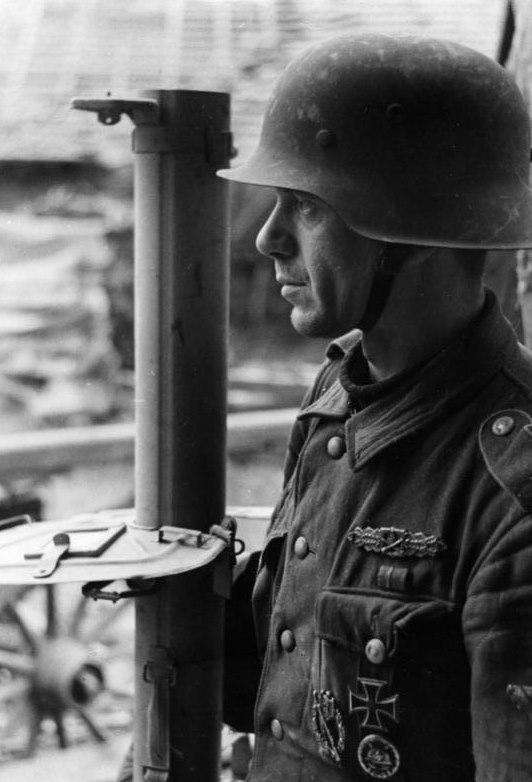
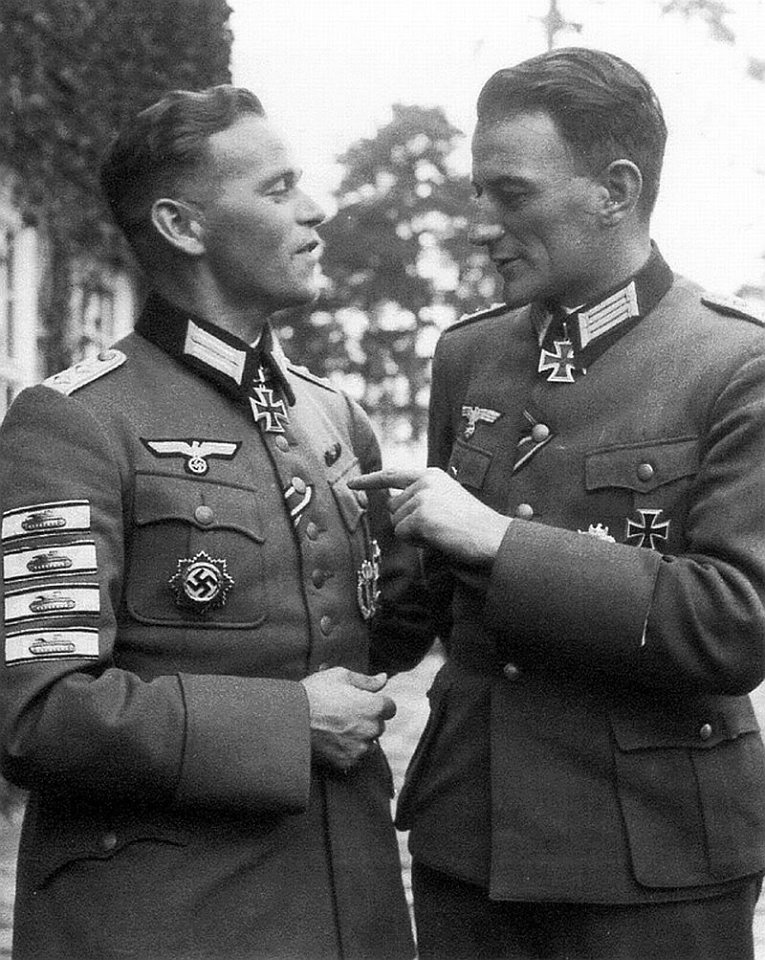
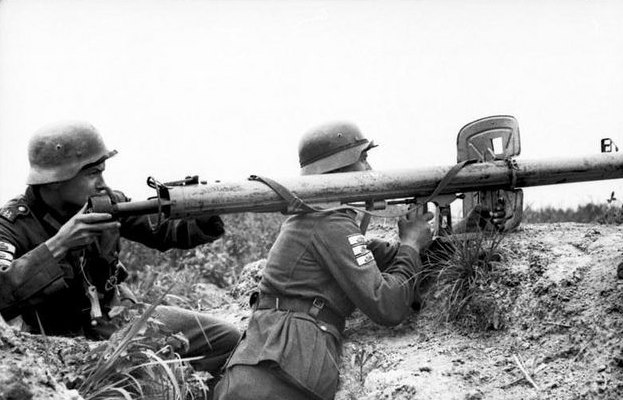
EXTREMELY RARE FIND ! WW2 Excavated
German Issued "GOLD" CLOSE COMBAT BADGE Award RELIC ! - (
Recovered Huertgen Forest Battlefield )
Here is a very rare battlefield dug WW2 German highly prized "gold
wash close combat badge of which only 630 were issued ! This example
was dug in the Huertgen Forest. The Battle of Hürtgen Forest Schlacht
im Hürtgenwald was a series of fierce battles fought from 19 September
to 16 December 1944 between U.S. and German forces during World War
II in the Hürtgen Forest about 50 sq mi (130 km2) east of the Belgian–German
border. It was the longest battle on German ground during World War
II, and is the longest single battle the U.S. Army has ever fought.
The U.S. commanders' initial goal was to pin down German forces in the
area to keep them from reinforcing the front lines further north in
the Battle of Aachen, where the Allies were fighting a trench war between
a network of fortified towns and villages connected with field fortifications,
tank traps and minefields. A secondary objective may have been to outflank
the front line. The Americans' initial tactical objectives were to take
Schmidt and clear Monschau. In a second phase the Allies wanted to advance
to the Rur River as part of Operation Queen.
Generalfeldmarshall Walter Model intended to bring the Allied thrust
to a standstill. While he interfered less in the day-to-day movements
of units than at Arnhem, he still kept himself fully informed on the
situation, slowing the Allies' progress, inflicting heavy casualties
and taking full advantage of the fortifications the Germans called the
Westwall, better known to the Allies as the Siegfried Line. The Hürtgen
Forest cost the U.S. First Army at least 33,000 killed and wounded,
including both combat and non-combat losses; German casualties were
28,000.
The award was bestowed in three classes:
• For 15 battles of close combat a Bronze Class was awarded.
• For 25 battles of close combat a Silver Class was awarded.
• For 50+ battles of close combat a Gold Class was awarded.
In order to receive this distinguished decoration, all battles and their
dates had to be officially documented by the battle commander, verified
by the general in charge and authenticated by several divisions of the
war department. It was possible that more than one close combat battle
per day was fought and therefore recorded as a separate entity.An exemption
was made if the soldier was wounded in battle so badly that his injuries
precluded a return to the front. In such a case, the criteria were reduced
to 10, 20 and 40 battles. The highest number of battles in combat recorded
is listed at 84 by SS-Hauptscharführer Hermann Maringgele.
The Gold Close Combat Clasp was often regarded in higher esteem than
the Knight's Cross of the Iron Cross by the German infantry. Of the
roughly 18–20 million soldiers of the German Wehrmacht and Waffen-SS,
36,400 received the Bronze Class, 9,500 the Silver Class and only "
631 the Gold Class ! "
SOLD
.jpg)
.jpg)
.jpg)
.jpg)
.jpg)
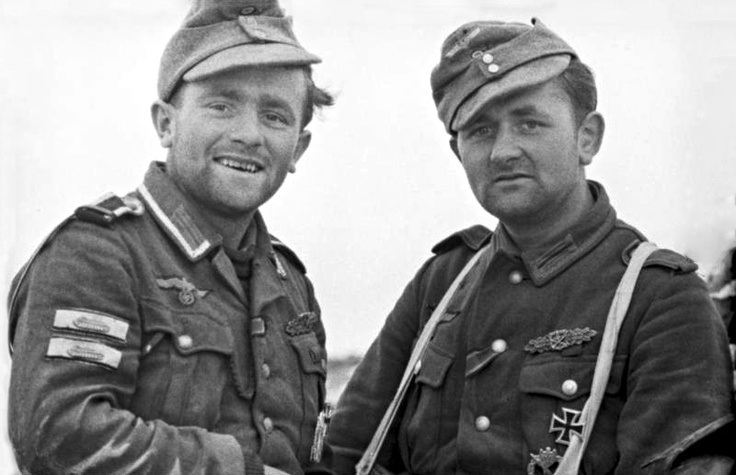
EXTREMELY RARE WW2 German LUFTWAFFE
Motorcycle Front Fender Plate with Inspection Stamp - BMW ZUNDAPF KATENKRADT-
( Recovered Kurland Pocket Eastern Front )
Here is a very nice and rare WW2 Battlefield excavated German Luftwaffe
Motorcycle front fender plate with inspection stamp. Recovered Kurland
Pocket. Kurland Pocket battlefield area. At the start of Operation Barbarossa
in 1941, Courland, along with the rest of the Baltic, was overrun by
Army Group North headed by Field Marshal Wilhelm Ritter von Leeb. In
1944, the Red Army lifted the siege of Leningrad and re-conquered the
Baltic area along with much of Ukraine and Belarus. However, some 200,000
German troops held out in Courland. With their backs to the Baltic Sea.
they were trapped in what became known as the Courland Pocket, blockaded
by the Red Army and the Red Baltic Fleet. Colonel-General Heinz Guderian,
the Chief of the German General Staff, insisted to Adolf Hitler that
the troops in Courland should be evacuated by sea and used for the defense
of Germany. Hitler refused, and ordered the Wehrmacht, Waffen-SS, Luftwaffe
and Kriegsmarine forces in Courland to continue the defence of the area.
Hitler believed them necessary to protect Kriegsmarine submarine bases
along the Baltic coast. On January 15, 1945, Army Group Courland (Heeresgruppe
Kurland) was formed under Colonel-General Dr. Lothar Rendulic The blockade
by elements of the Leningrad Front remained until May 8, 1945, when
the Army Group Courland, then under its last commander, Colonel-General
Carl Hilpert, surrendered to Marshal Leonid Govorov, the commander of
the Leningrad Front (reinforced by elements of the 2nd Baltic Front)
on the Courland perimeter. At this time the group consisted of the remnants
of some 31 divisions. After May 9, 1945, approximately 203,000 troops
of Army Group Courland began moving to Soviet prison camps in the East.
The majority of them never returned to Germany.
SOLD
.jpg)
.jpg)
.jpg)
.jpg)
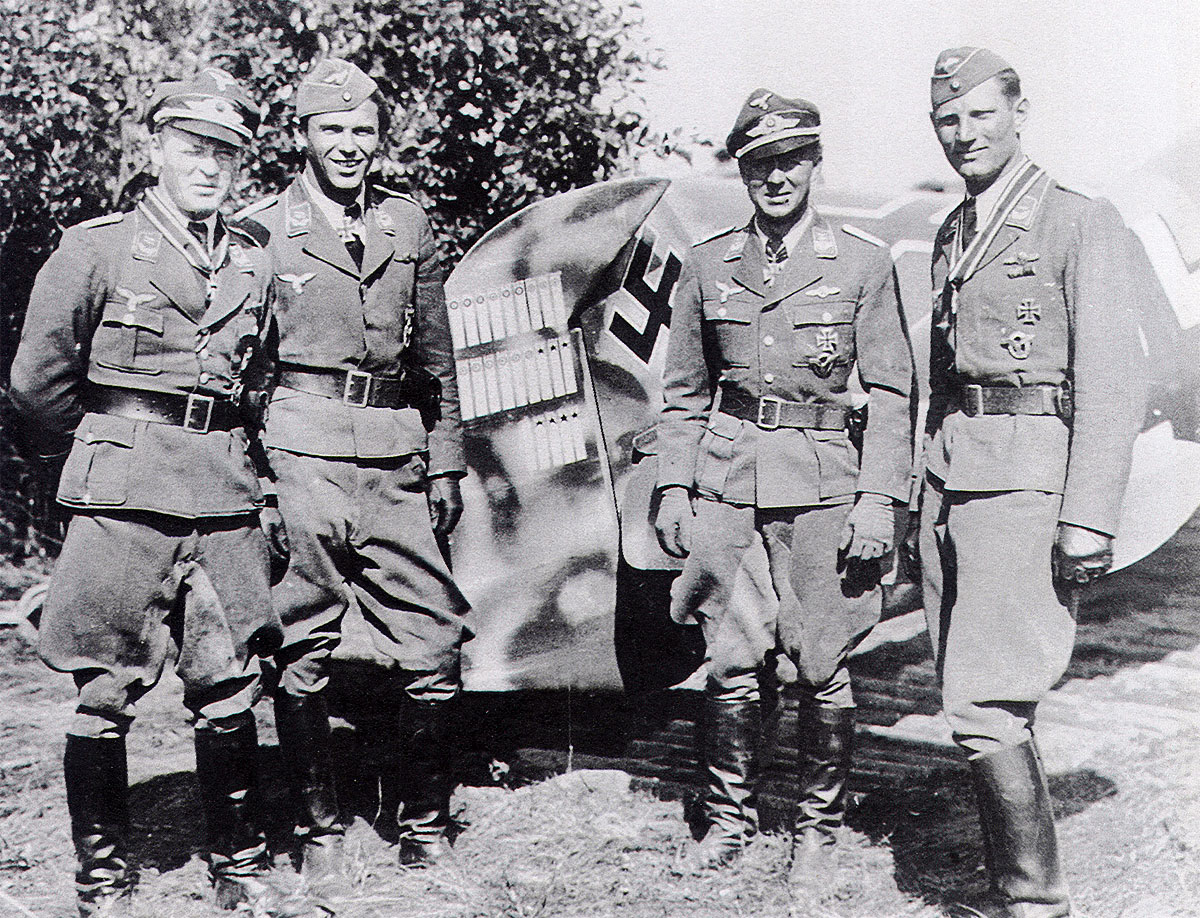
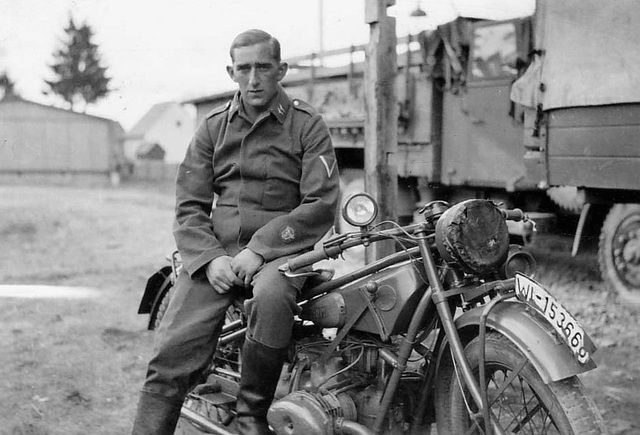
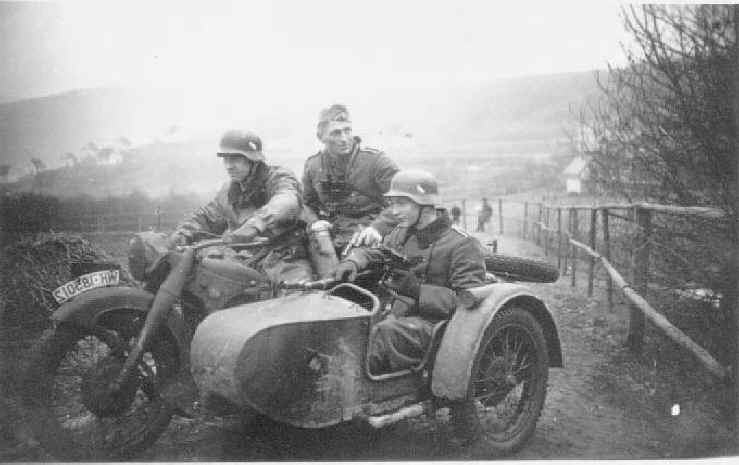
RARE "Battlefield" RELIC
German TANK ASSAULT BADGE with maker marks still visible ! HISTORIC
Site found Surrender Site of Army Group North KURLAND POCKET !
Here is a cool relic tank badge with pinbar still intact and maker marks
faintly visible that was excavated eastern front site of the surrender
of army group north. Kurland Pocket. Recovered Kurland Pocket. Kurland
Pocket battlefield area. At the start of Operation Barbarossa in 1941,
Courland, along with the rest of the Baltic, was overrun by Army Group
North headed by Field Marshal Wilhelm Ritter von Leeb. In 1944, the
Red Army lifted the siege of Leningrad and re-conquered the Baltic area
along with much of Ukraine and Belarus. However, some 200,000 German
troops held out in Courland. With their backs to the Baltic Sea. they
were trapped in what became known as the Courland Pocket, blockaded
by the Red Army and the Red Baltic Fleet. Colonel-General Heinz Guderian,
the Chief of the German General Staff, insisted to Adolf Hitler that
the troops in Courland should be evacuated by sea and used for the defense
of Germany. Hitler refused, and ordered the Wehrmacht, Waffen-SS, Luftwaffe
and Kriegsmarine forces in Courland to continue the defence of the area.
Hitler believed them necessary to protect Kriegsmarine submarine bases
along the Baltic coast. On January 15, 1945, Army Group Courland (Heeresgruppe
Kurland) was formed under Colonel-General Dr. Lothar Rendulic The blockade
by elements of the Leningrad Front remained until May 8, 1945, when
the Army Group Courland, then under its last commander, Colonel-General
Carl Hilpert, surrendered to Marshal Leonid Govorov, the commander of
the Leningrad Front (reinforced by elements of the 2nd Baltic Front)
on the Courland perimeter. At this time the group consisted of the remnants
of some 31 divisions. After May 9, 1945, approximately 203,000 troops
of Army Group Courland began moving to Soviet prison camps in the East.
The majority of them never returned to Germany.
SOLD
.jpg)
.jpg)
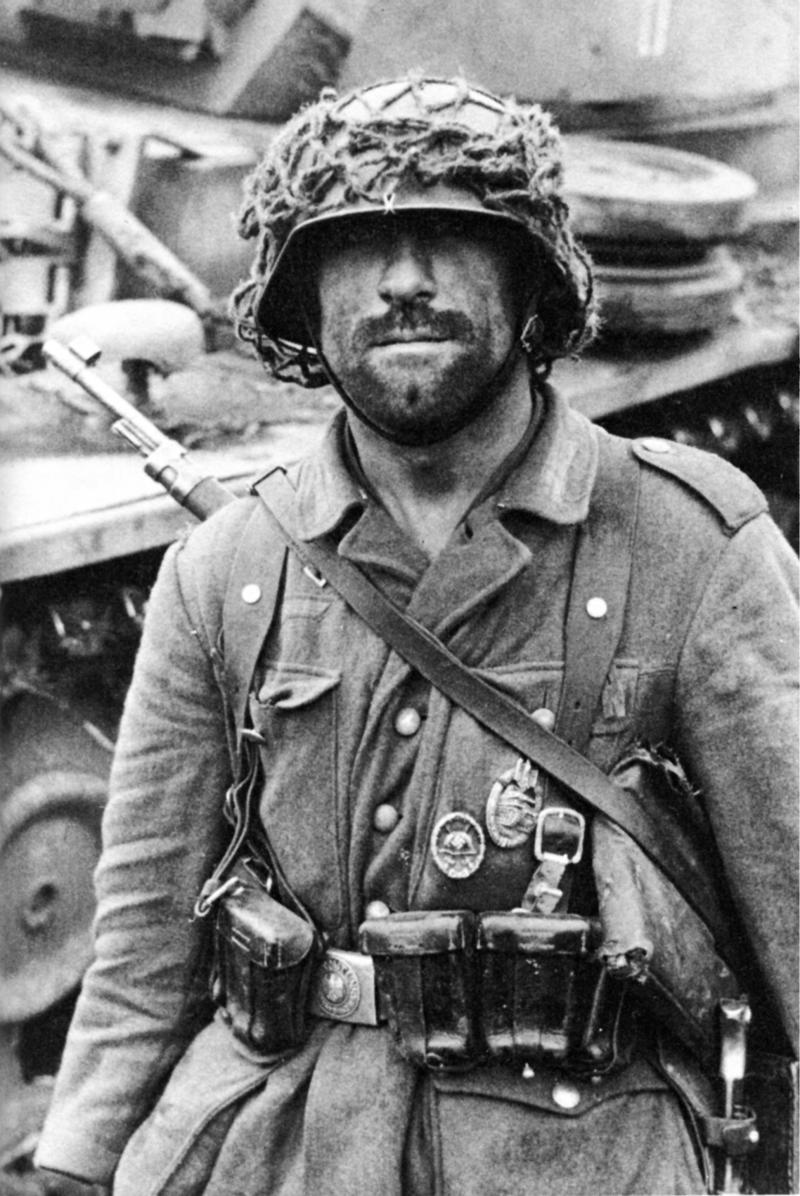
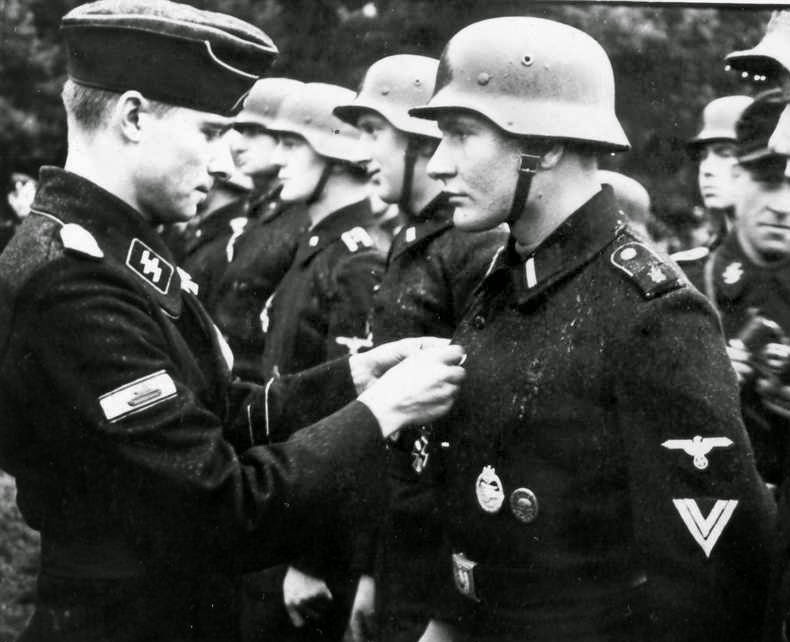
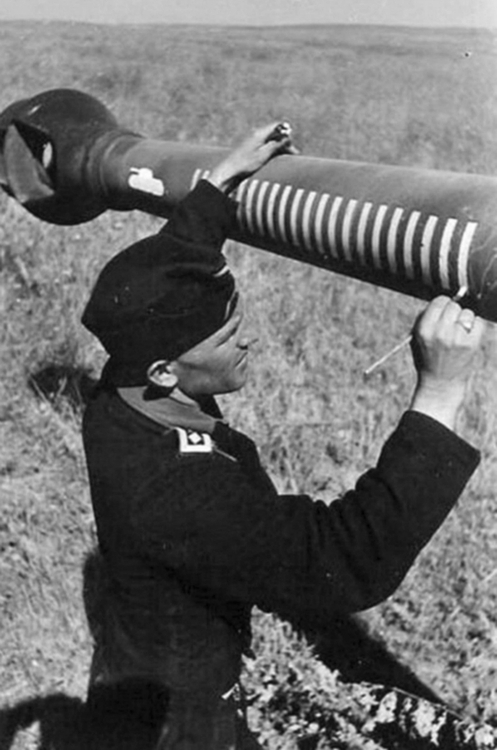
RARE WW2 Battlefield Relic German
LUFTWAFFE MOTORCYCLE FENDER with PLATE and TRI-COLOR Paint still intact
! - ( Dug "STALINGRAD" Battlefield )
Here is a wonderful chance to own an original relic and extremely rare
WW2 German Luftwaffe Motorcycle Fender with License Plate still attached
with tactical paint that was recovered near the historic Stalingrad
Gumrak airfield Eastern Front. A Fantastic Display relic !The Battle
of Stalingrad was a major battle of World War II in which Nazi Germany
and its allies fought the Soviet Union for control of the city of Stalingrad
(now Volgograd) in southwestern Russia. The battle took place between
23 August 1942 and 2 February 1943. It was among the largest on the
Eastern Front and was marked by its brutality and disregard for military
and civilian casualties. It was amongst the bloodiest battles in the
history of warfare with the higher estimates of combined casualties
amounting to nearly two million deaths. In its defeat, the crippling
losses suffered by Germany's military proved to be insurmountable for
the war. The battle was a turning point in the war, after which the
German forces attained no further strategic victories in the East.The
German offensive to capture Stalingrad commenced in late summer 1942,
supported by intensive Luftwaffe bombing which reduced much of the city
to rubble. The German offensive eventually became bogged down in house-to-house
fighting; and despite controlling over 90% of the city at times, the
Wehrmacht was unable to dislodge the last Soviet defenders clinging
tenaciously to the west bank of the Volga River.
SOLD
.jpg)
.jpg)
.jpg)
.jpg)
.jpg)
.jpg)
RARE FIND ! "Battlefield Recovered" GERMAN WW2 AWARD " CLOSE COMBAT BADGE CLASP " Bronze Award for Bravery Maker Marked FEC WE Peekhaus still retains crossbar and clasp ! ( Recovered Radzymin, Poland Eastern Front - Largest Tank Battle in Poland )
Here is a chance to own a solid German WW2
Close Combat Badge that was lost in battle. These are my personal favorite
awards as for 'eye appeal' . These are usually always found broken when
dug with one end snapped off or missing the bar. This example still
has the bar clasp intact and maker marked Peekhaus. it displays beautifully.
In response to Vedeneev's thrust, the Germans started a tactical counter-attack
near Radzymin on July 31. The offensive, carried out by 4 understrength
Panzer divisions, was to secure the eastern approaches to Warsaw and
Vistula crossings, and aimed to destroy the three tank corps of the
Second Tank Army in detail. Under the leadership of German Field Marshal
Model, the 4th, 19th, Hermann Göring, and 5th SS Panzer Divisions
were concentrated from different areas with their arrival in the area
of Wolomin occurring between July 31 and August 1, 1944. Although the
3rd Tank Corps gamely defended the initial assaults of the Hermann Göring
and 19th Panzer Divisions, the arrival of the 4th Panzer and 5th SS
Panzer Divisions spelled doom for the isolated and outnumbered unit.Already
on August 1, the leading elements of the 19th and 5th SS Panzer Divisions,
closing from the west and east respectively, met at Okuniew, cutting
the 3rd Tank Corps off from the other units of the Second Tank Army.
Pressed into the area of Wolomin, the 3rd Tank Corps was pocketed and
destroyed on August 3, 1944. Attempts to reach the doomed tank corps
by the 8th Guards Tank Corps and the 16th Tank Corps failed, with the
8th Guards Tank Corps taking serious losses in the attempt. Although
Model had planned to attack the 8th Guards Tank Corps next, the withdrawal
of the 19th and Hermann Göring Panzer Divisions to shore up the
German defenses around the Magnuszew bridgehead forced the remaining
German forces around Okuniew to go on the defensive.For unknown reasons,
on August 2, 1944 all armies that were to assault Warsaw had their orders
changed. The 28th, 47th and 65th Armies were ordered to turn northwards
and seize the undefended town of Wyszków and the Liwiec river
line. The 2nd Tank Army was left in place and had to fight the Germans
alone, without support of the infantry. Also, 69th Army was ordered
to stop while the 8th Guards Army under Vasily Chuikov was ordered to
halt the assault and await a German attack from the direction of Garwolin.
Further combat lasted until August 10, when the Germans finally withdrew.
Soviet losses were heavy, but not heavy enough to affect the overall
course of their thrust to the vicinity of Warsaw. The 3rd Tank Corps
was destroyed, the 8th Guards Tank Corps took heavy losses, and the
16th Tank Corps took significant losses as well. Overall, the Second
Tank Army's losses were significant enough that it was withdrawn from
the front lines by August 5, 1944.
SOLD
.jpg)
.jpg)
.jpg)
.jpg)
.jpg)
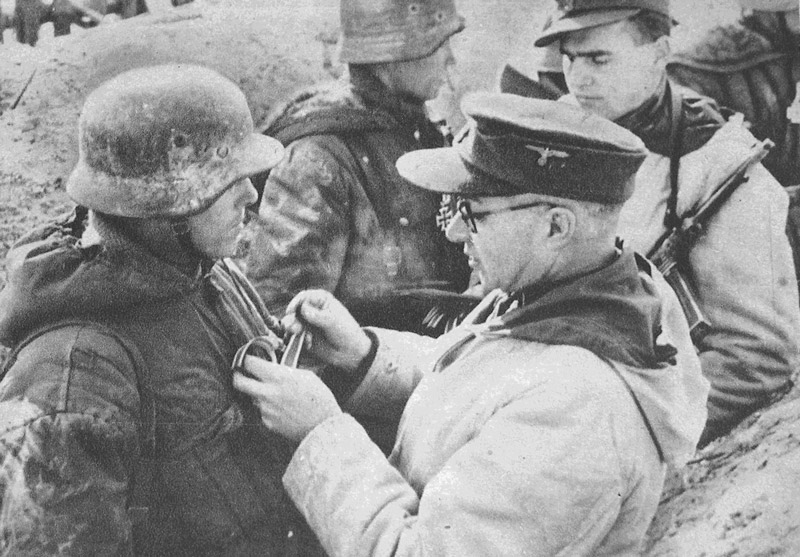
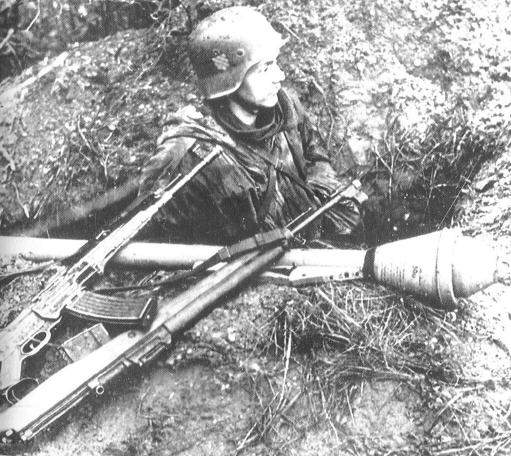
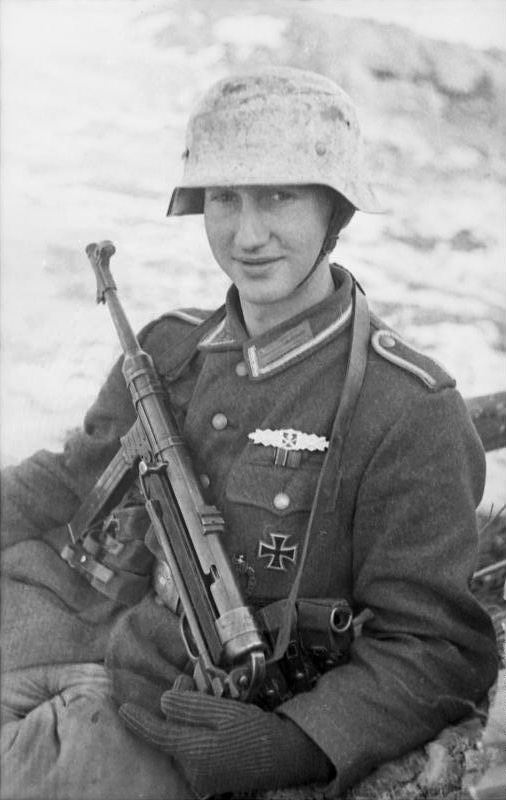

FANTASTIC ! "Battlefield"
RELIC German TANK ASSAULT BADGE with maker marks ( Historic "KOLBERG
POCKET Battlefield" German Retreat Route - 200km from Berlin !
)
Here is a nice relic German Tank Assault Badge with makers marks and
pinback still intact that was recovered from Kolberg Pocket, German
retreat route roughly 200km from Berlin. The other Kolberg battle was
the Battle of Kolberg (a Baltic seaport city in Pomeria located about
halfway between Berlin and Koenigsberg), which took place from 4-18
March 1945. It was a fight between the Germans and combined forces of
the Soviet and Polish armies--it ended in Polish hands on the 18th following
the retreat of the Germans and the destruction of most of the city.The
German defence forces represented various formations from the Army Group
'Vistula,' some tasked with defending the fortress, others simply cut
off in the Kolberg pocket. The most notable units included elements
of the Third Panzer Army; the 33rd Waffen Grenadier Division of the
SS Charlemagne (1st French) and the 15th Waffen Grenadier Division of
the SS (1st Latvian ). Estimates of the German defenders â?? including
local militia and volunteers (Volkssturm) â?? range from 8,000
to 15,000, supported by some artillery (about 60 pieces), an armored
train and about 18 tanks and a dozen support vehicles of various types.
The German units also received some air and sea support (including artillery
fire from pocket battleships Lützow and Admiral Scheer).
SOLD
.jpg)
.jpg)
.jpg)
.jpg)
.jpg)


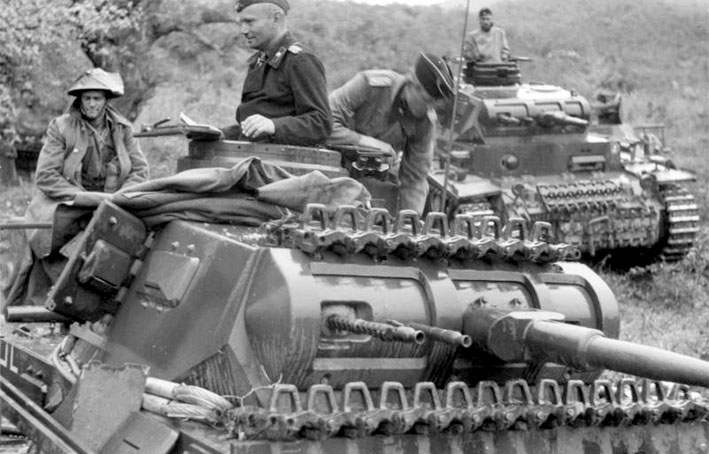
HISTORIC WW2 US M1 Lot of HELMET
and SPENT SHELL CASINGS Battlefield Dug CARENTAN / NORMANDY Campaign
!
Authentic US WW2 Battlefield Helmet Shells are becoming extremely rare
to find anymore. have included below the diggers note to me with information.
A wonderful addition to your collection. "Hello Mark , I am just
on my way into town now to post your helmet , on the 4th July 1944 ,
331st inf regt of 83rd div attacked the rear of my house which was defended
by FJR 6 and later 2nd Panzer Das Reich ,and 17th panzer , in the surrounding
fields when the civil population returned 3 weeks later were found over
2000 dead cattle , 98 knocked out vehicles and no houses undamaged .
These particular relics are from the field infront of La Meslerie and
the village of Hottot , it was terrible fighting for both sides , Hottot
is the first village that the US used the teeth welded to the tanks
to burst the hedgerows . Also on 6th June 501 reg 101st Airborne were
misdropped all over this area , so you never know it could be an airborne
helmet .but it is absolutely genuine as are the relics with it , an
empty mg42 round , a empty garand round and an exploded .50, within
20 yds of each other. "
The Battle of Carentan was an engagement in World War II between airborne
forces of the United States Army and the German Wehrmacht during the
Battle of Normandy. The battle took place between 10 and 15 June 1944,
on the approaches to and within the city of Carentan, France. The objective
of the attacking American forces was consolidation of the U.S. beachheads
(Utah Beach and Omaha Beach) and establishment of a continuous defensive
line against expected German counterattacks. The defending German force
attempted to hold the city long enough to allow reinforcements en route
from the south to arrive, prevent or delay the merging of the lodgments,
and keep the U.S. First Army from launching an attack towards Lessay-Périers
that would cut off Carentan was defended by the 506th Parachute Regiment,
two Ost battalions and remnants of other German forces. The 17th SS
Panzergrenadier Division, ordered to reinforce Carentan, was delayed
by transport shortages and attacks by Allied aircraft. The attacking
101st Airborne Division, landed by parachute on 6 June as part of the
American airborne landings in Normandy, was ordered to seize Carentan.
In the ensuing battle, the 101st forced passage across the causeway
into Carentan. A lack of ammunition forced the German forces to withdraw.
The 17th SS PzG Division counter-attacked the 101st Airborne. Initially
successful, its attack was thrown back by Combat Command A (CCA) of
the U.S. 2nd Armored Division.
SOLD
.jpg)
.jpg)
.jpg)
.jpg)
.jpg)
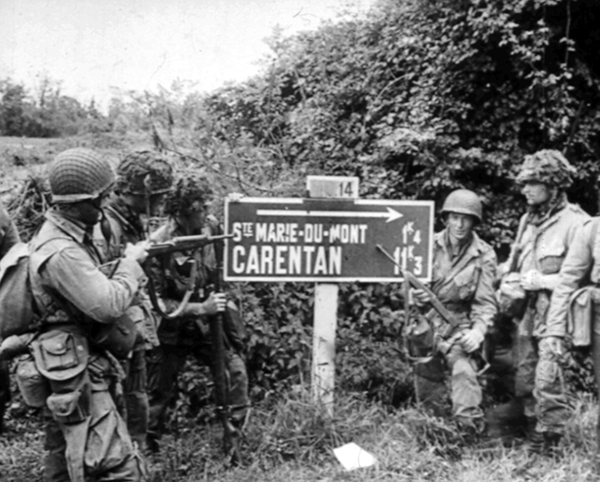
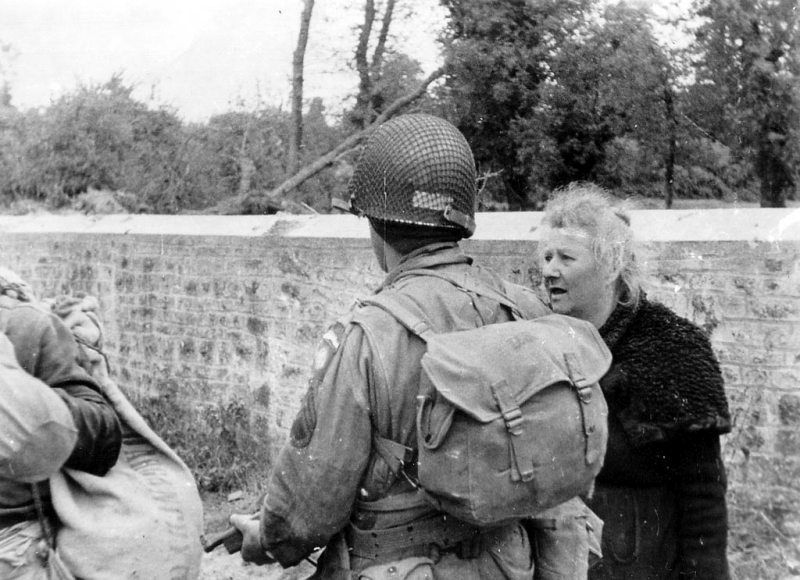
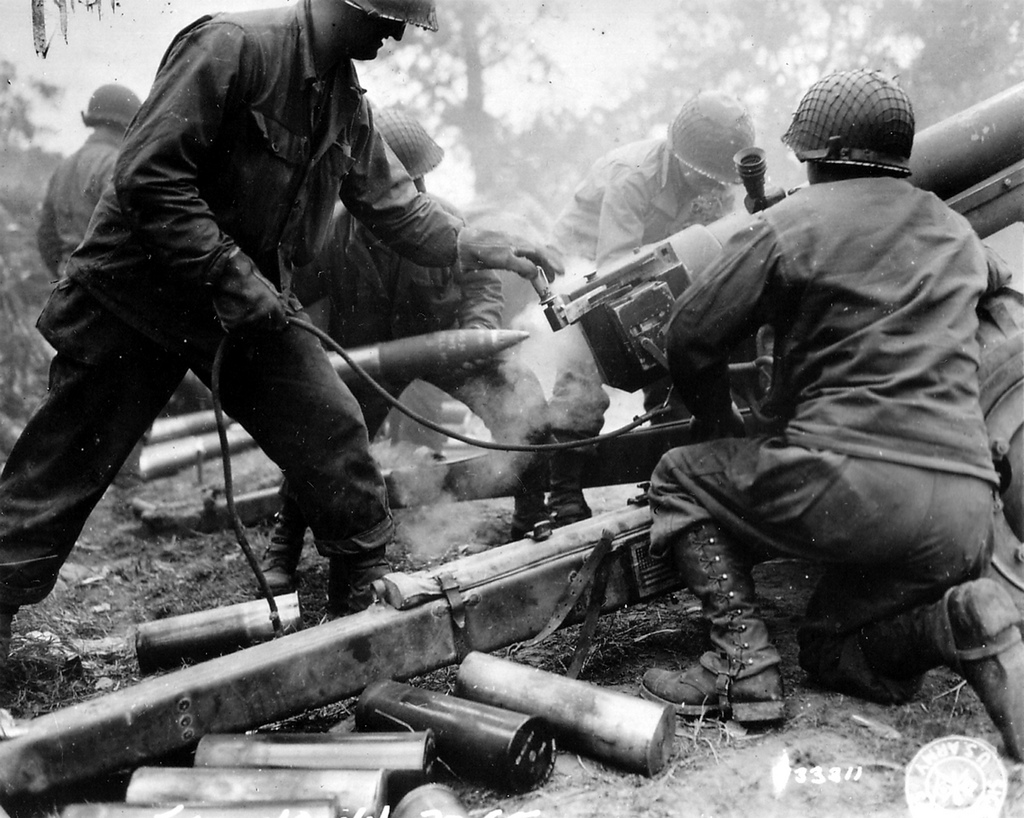
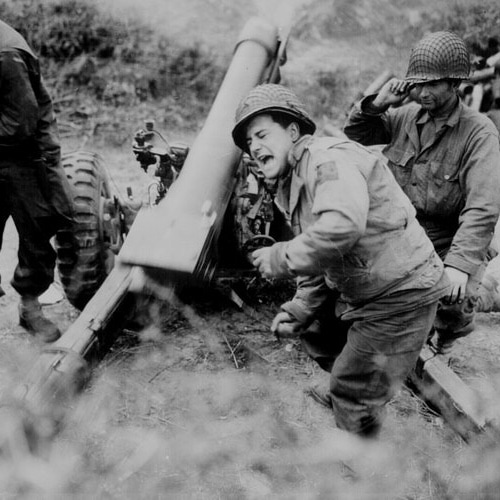
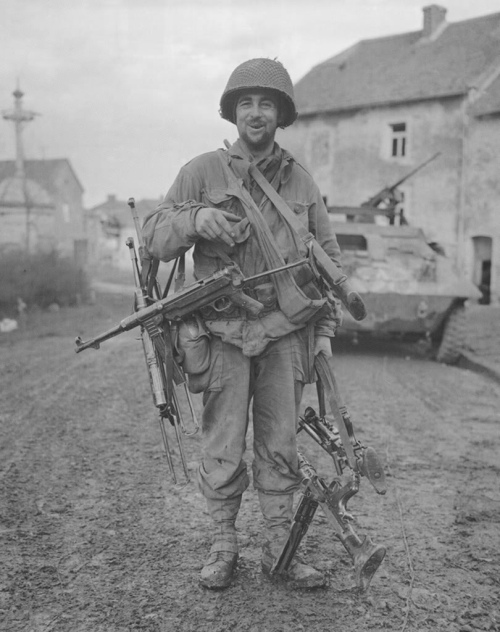
RARE AND HIGHLY SOUGHT AFTER !!
Battlefield Dug Nazi German "WAFFEN-SS SD M42" "Raw Edge"
HELMET ! - ( Recovered Narwa, Leningrad Front )
Here is a great helmet relic from my personal collection. Only parting
with due to needing some finances for a collection purchase. The helmet
is a large size with part of the inner rim and clearly visible runes
that was excavated Narva. The Narva Offensive (1–4 March 1944)
(Estonian:Putki lahing) was an operation conducted by the Soviet Leningrad
Front. It was aimed at the conquest of the Narva Isthmus from the German
army detachment "Narwa". At the time of the operation, Joseph
Stalin, the supreme commander of the Soviet Armed Forces, was personally
interested in taking Estonia, viewing it as a precondition to forcing
Finland out of the war.The Soviet 59th Army attacked westwards from
the Krivasoo Bridgehead south of the city of Narva and encircled the
strong-points of the 214th Infantry Division and the Estonian 658th
and 659th East Battalions. The resistance of the encircled units gave
time for the command of the "Narwa" to move in all available
forces and stop the Soviet advance. To the north of Narva, the fresh
SS 45th and 46th (1st and 2nd Estonian) Volunteer Grenadier Regiments
accompanied by units of the 11th SS Volunteer Panzergrenadier Division
"Nordland" counter-attacked and reduced the Soviet bridgehead.
SOLD
.jpg)
.jpg)
.jpg)
.jpg)



RARE FIND ! "Battlefield Recovered"
GERMAN WW2 AWARD " CLOSE COMBAT BADGE CLASP " Bronze Award
for Bravery - ( Recovered Konigsberg Pocket Eastern Front )
Here is a chance to own a solid German WW2 Close Combat Badge that was
lost in battle. These are my personal favorite awards as for 'eye appeal'
. These are usually always found broken when dug with one end snapped
off or missing the bar. This example still has the bar clasp intact
although missing hook it displays beautifully. The Battle of Konigsberg,
also known as the Konigsberg Offensive, was one of the last operations
of the East Prussian Offensive during World War II. In four days of
violent urban warfare, Soviet forces of the 1st Baltic Front and the
3rd Belorussian Front captured the city of Konigsberg - now Kaliningrad,
Russia. The siege started in late January 1945 when the Soviets initially
surrounded the city. There was heavy fighting for the overland connection
between Konigsberg and the port of Pillau, but by March 1945 Konigsberg
was hundreds of kilometres behind the main front line. The battle finished
when the German garrison surrendered to the Soviets on 9 April after
a three-day assault made their position untenable Assaulting Konigsberg
was not to be an easy task. Garrisoned inside the city were five full-strength
divisions, for a total of 130,000 troops, along with impressive defensive
positions constructed in 1888 that included fifteen forts interconnected
by tunnels with integrated accommodations for the troops, and designed
to withstand the bombardment of super-guns being designed in that era
following the Siege of Paris (1870-1871). The Germans still held a narrow
land connection to the adjacent German pocket on the Samland peninsula.
The capture of the city required that this desperately defended link
be severed. The German troops on the peninsula, the so-called Samland
group, could be expected to stage counter-attacks to prevent this from
happening. Konigsberg was, according to Winston Churchill, "a modernised
heavily defended fortress".Three concentric rings of fortifications
surrounded the city: the outer ring of defences reinforced by 12 forts
outside the town, the middle ring in the outskirts and the inner city,
a single fortress of anti-tank defences, barricades and landmines, along
with several other forts.In order to face such defensive power, the
Soviet command planned to heavily rely on aviation and artillery support,
with densities reaching 250 guns per kilometre in some areas. The German
troops were also subjected to propaganda, explaining that their resistance
was futile, and that the front line was far behind them that they were
trapped in a "pocket and that it would be best to surrender. However,
this propaganda had little to no effect.After four days of preparatory
artillery bombardment, the assault started on 6 April 1945. The assault
was planned to be "star-like". Troops would attack from many
points around the perimeter and meet in the center of the city, compartmentalising
the remaining defenders into isolated groups incapable of mutual support.
There were two main fronts: North (held by the 39th and 43rd Armies
which included the 208th Rifle Division) and South (11th Guards Army).
The 50th army was stationed in the northeast part of the front, but
took only a limited part in the operation.
SOLD
.jpg)
.jpg)
.jpg)
.jpg)
.jpg)
.jpg)
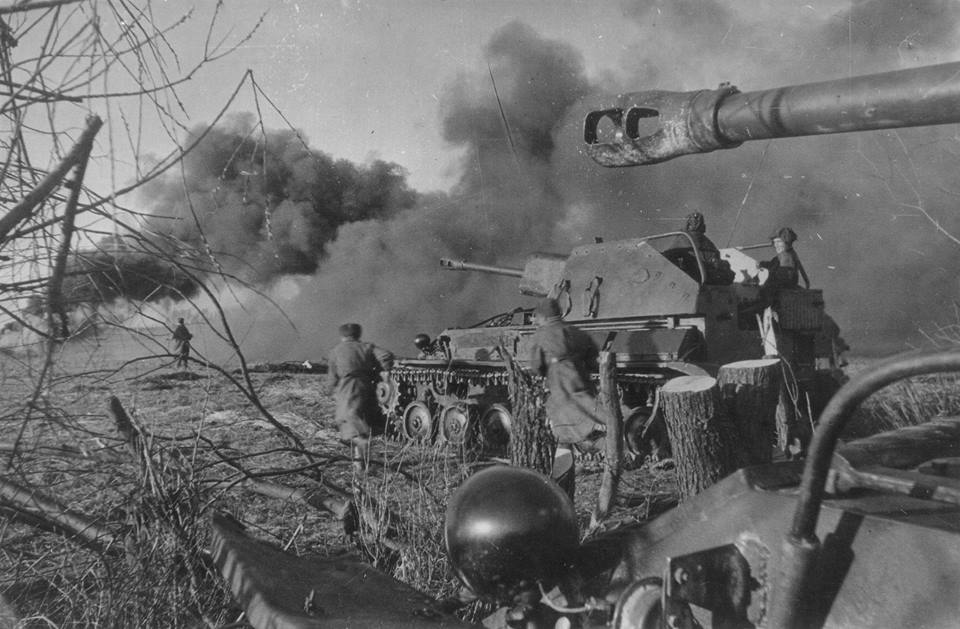
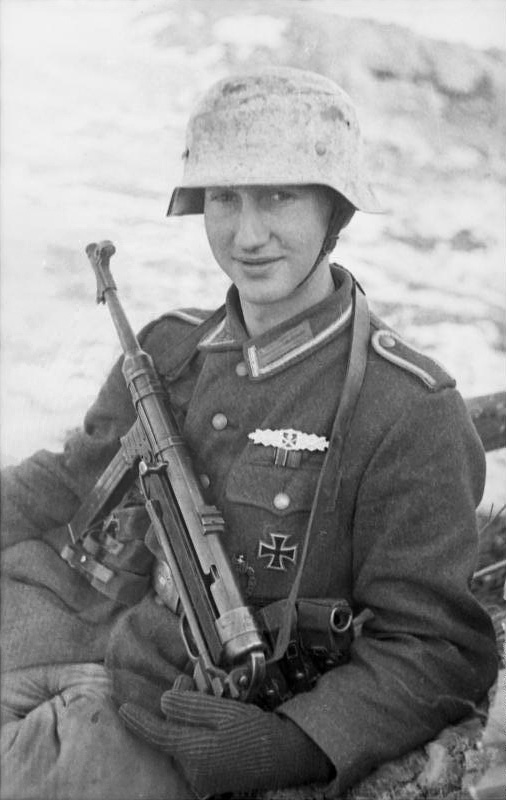
INCREDIBLE RELIC !! Ground Dug Battlefield
"BATTLE DAMAGED" NAZI German Wehrmacht Officers BINOCULARS
Exploded SECTION !!
( Recovered STALINGRAD, GUMRAK )
Here is a very cool relic that shows the
horror of warfare around the historic city of Stalingrad. A "blown-apart"
by a direct hit, battle damaged section of binoculars. The Battle of
Stalingrad was a major battle of World War II in which Nazi Germany
and its allies fought the Soviet Union for control of the city of Stalingrad
(now Volgograd) in southwestern Russia. The battle took place between
23 August 1942 and 2 February 1943. It was among the largest on the
Eastern Front and was marked by its brutality and disregard for military
and civilian casualties. It was amongst the bloodiest battles in the
history of warfare with the higher estimates of combined casualties
amounting to nearly two million deaths. In its defeat, the crippling
losses suffered by Germany's military proved to be insurmountable for
the war. The battle was a turning point in the war, after which the
German forces attained no further strategic victories in the East.The
German offensive to capture Stalingrad commenced in late summer 1942,
supported by intensive Luftwaffe bombing which reduced much of the city
to rubble. The German offensive eventually became bogged down in house-to-house
fighting; and despite controlling over 90% of the city at times, the
Wehrmacht was unable to dislodge the last Soviet defenders clinging
tenaciously to the west bank of the Volga River.
SOLD
.jpg)
.jpg)
.jpg)
.jpg)
.jpg)
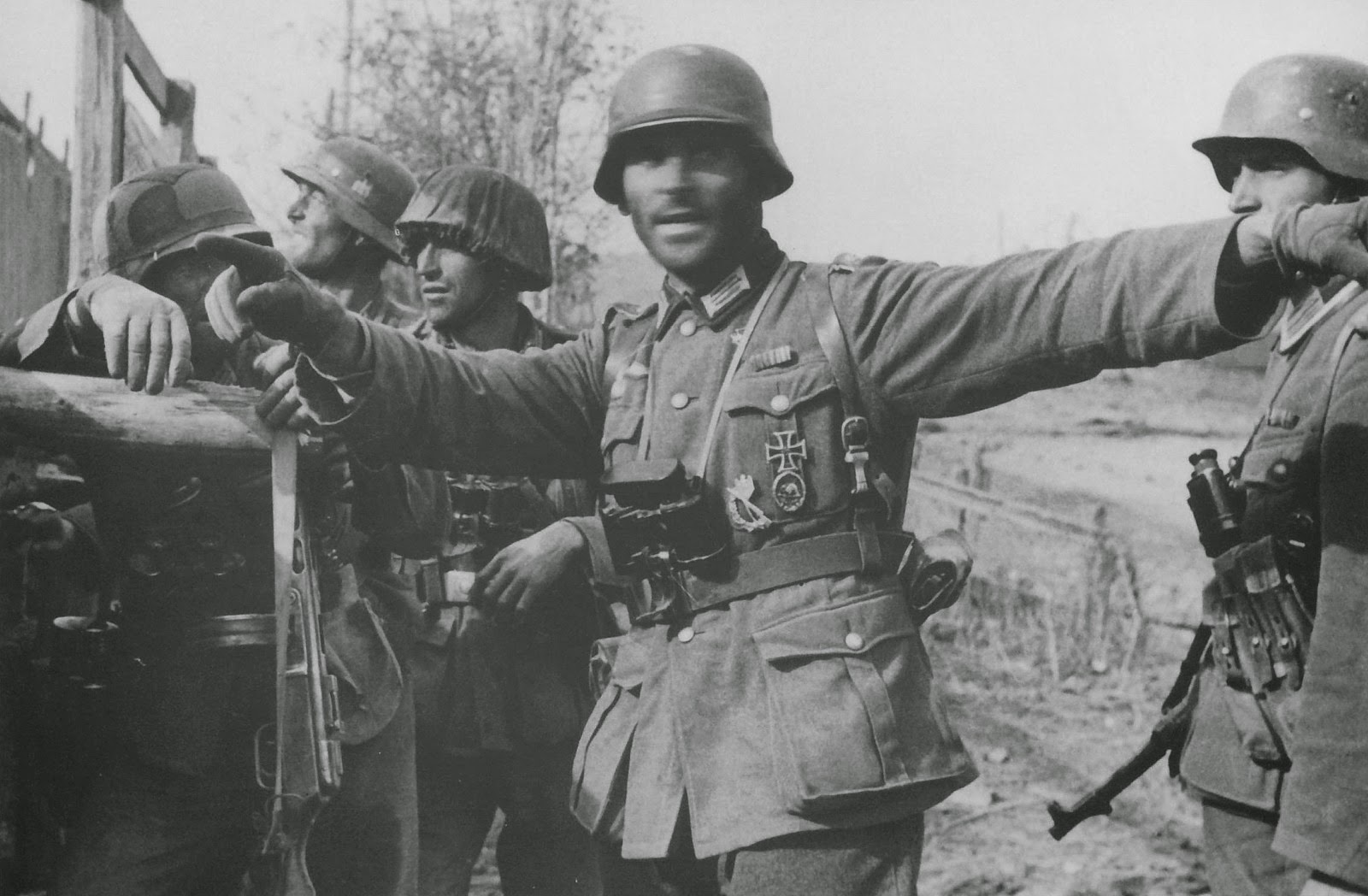
.jpg)
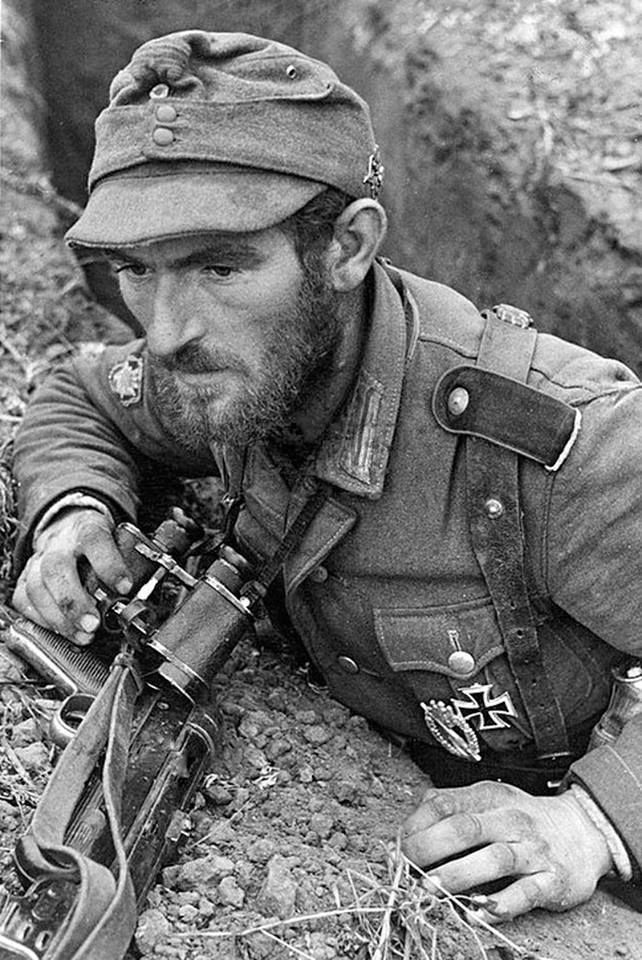
EXTREMELY RARE ! WWII US "Serviceman's
DOG TAG Recovered SOLOMON ISLANDS - GUADALCANAL / SOLOMON ISLANDS !
Here is a just arrived fantastic and historic ground dug US ID Dog Tag
from Guadalcanal of Allen Johnson from Guadalcanal in the Solomon Islands,
invaded by the Japanese in July, 1942, was one of the most important
Japanese strongholds due to its proximity to Australia. The Japanese
built an airfield at Lunga Point and artillery positions in the hills
nearby and had about 8,400 men on the island by August.On August 7,
1942, U.S. Marines landed on the northern beaches of Guadalcanal after
Navy ships fired onto the island ahead of them. Over the next three
months, the Marines secured the airfield and a 6 mile wide section of
the beach. On October 13, an Army unit arrived to reinforce the Marines.
The Marines and Army soldiers repelled a Japanese attack on the 23rd,
inflicting heavy losses on the Japanese and pushing the Japanese out
further during the rest of the month. On November 4th, the U.S. Infantry
fought 1,500 Japanese troops that landed on the beach at Koli Point.
They killed half the Japanese force. The rest escaped into the jungle.In
mid-November, the U.S. Navy fought the Japanese at the Battle of Guadalcanal,
when the Japanese attempted a major reinforcement of troops via the
"Tokyo Express" run of supply-laden destroyers. In this four-day
battle, the U.S. Navy foiled the reinforcement effort, and only 4,000
of 10,000 Japanese troops reached land.After this battle, the American
troops pushed on in an effort to take Mount Austen. Thrashing through
the jungle, they faced heavy fire from Japanese troops. Finally, during
the first two days of 1943, in a two-pronged attack on the Mount Austen
stronghold at Gifu, American troops succeeded in securing most of the
Gifu area and the west slopes of the mountain. Overall, between 400
and 500 Japanese troops died, and over 100 American troops died in the
effort to take Mount Austen. During January, 1943, the American troops
battled Japanese strongholds on Mount Austen to take areas known as
Galloping Horse and Sea Horse and secure the Gifu area. In the third
week of January, the American troops took the Japanese headquarters
at Kokumbona. American troops mounted attacks by land and sea to annihilate
the Japanese, but in the end, about 13,000 Japanese troops escaped.
Nevertheless, by February 9, 1943, the U.S. troops took control of the
island, helping to turn back the Japanese drive toward Australia and
secure a base from which to launch attacks at the Japanese in the South
Pacific. All told, 1,592 American troops were killed in action and 4,183
were wounded. Thousands more were disabled by tropical diseases like
malaria. The Japanese lost 14,800 in battle and 9,000 from disease.
About 1,000 Japanese men were taken prisoner.
SOLD
.jpg)
.jpg)
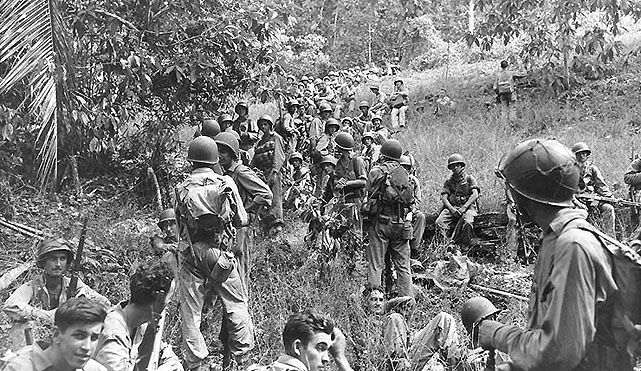
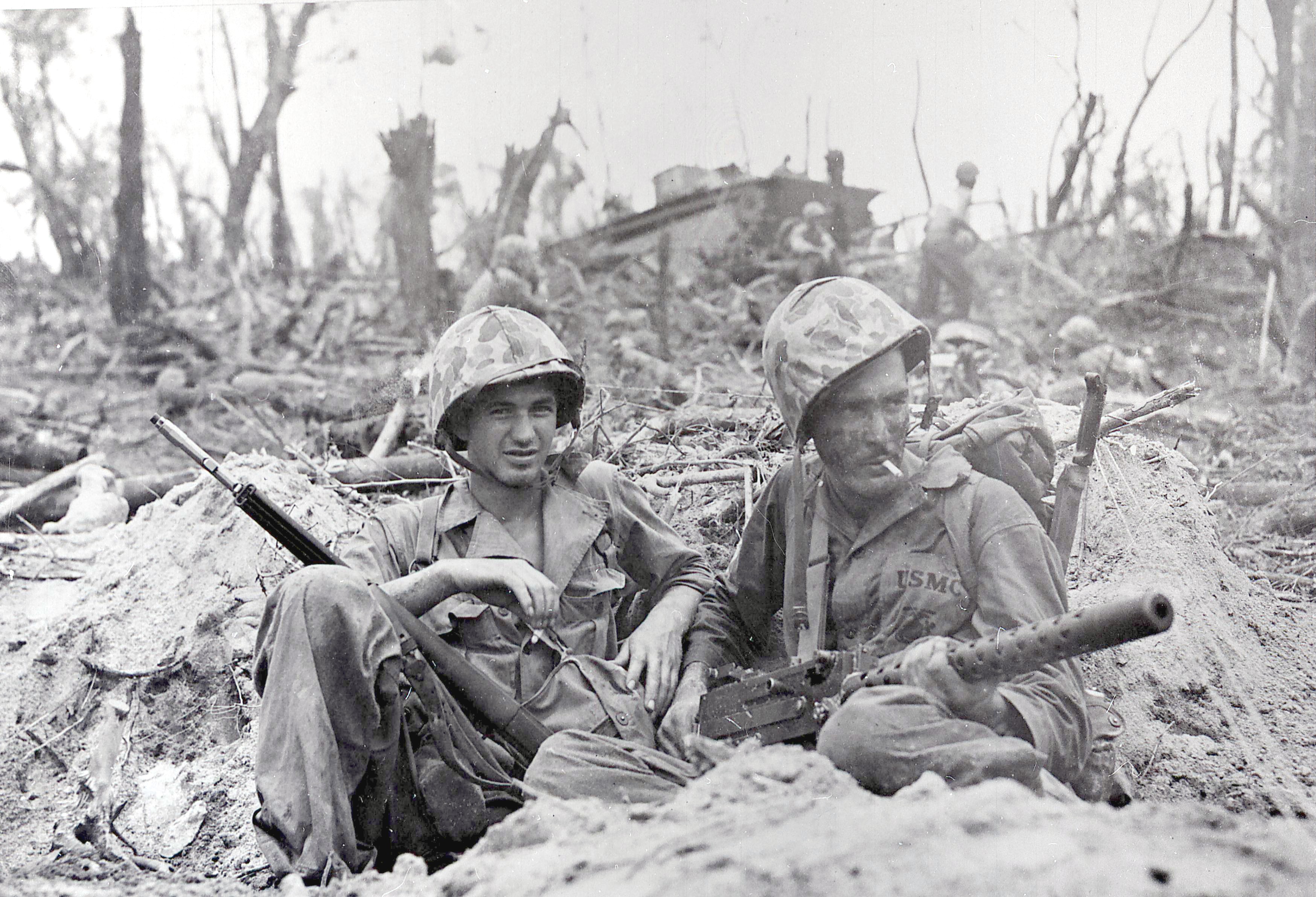
.jpg)
RARE WW2 Ground Dug BATTLEFIELD Relic
German PANZER-GRENADIER BATTALION ID/Dog Tag - ( Eastern Front Stalingrad
Russia Recovery )
Here is a rare original battlefield dug German ID Tag to a Motorized
Panzer Grenadier Battalion. A rare tag to add to your collection. The
Battle of Stalingrad (23 August 1942 – 2 February 1943)[ was a
major battle of World War II in which Nazi Germany and its allies fought
the Soviet Union for control of the city of Stalingrad (now Volgograd)
in the south-western Soviet Union. Marked by constant close quarters
combat and disregard for military and civilian casualties, it is amongst
the bloodiest battles in the history of warfare. The heavy losses inflicted
on the Wehrmacht make it arguably the most strategically decisive battle
of the whole war. It was a turning point in the European theatre of
World War II–the German forces never regained the initiative in
the East and withdrew a vast military force from the West to replace
their losses.The German offensive to capture Stalingrad began in late
summer 1942 using the 6th Army and elements of the 4th Panzer Army.
The attack was supported by intensive Luftwaffe bombing that reduced
much of the city to rubble. The fighting degenerated into building-to-building
fighting, and both sides poured reinforcements into the city. By mid-November
1942, the Germans had pushed the Soviet defenders back at great cost
into narrow zones generally along the west bank of the Volga River.
SOLD
.jpg)
.jpg)
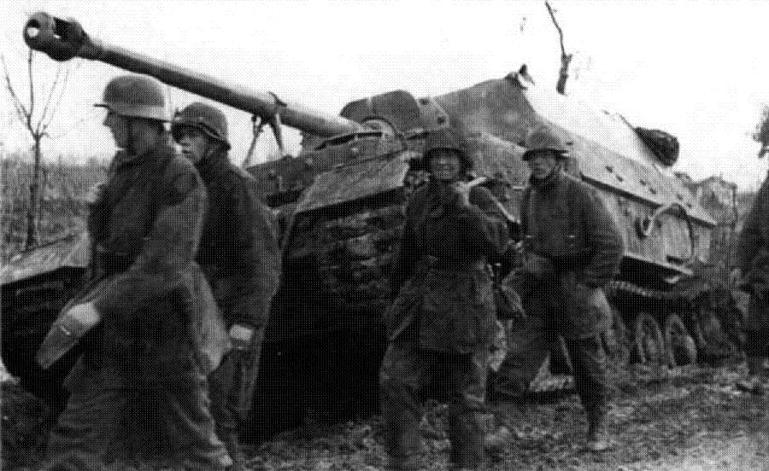

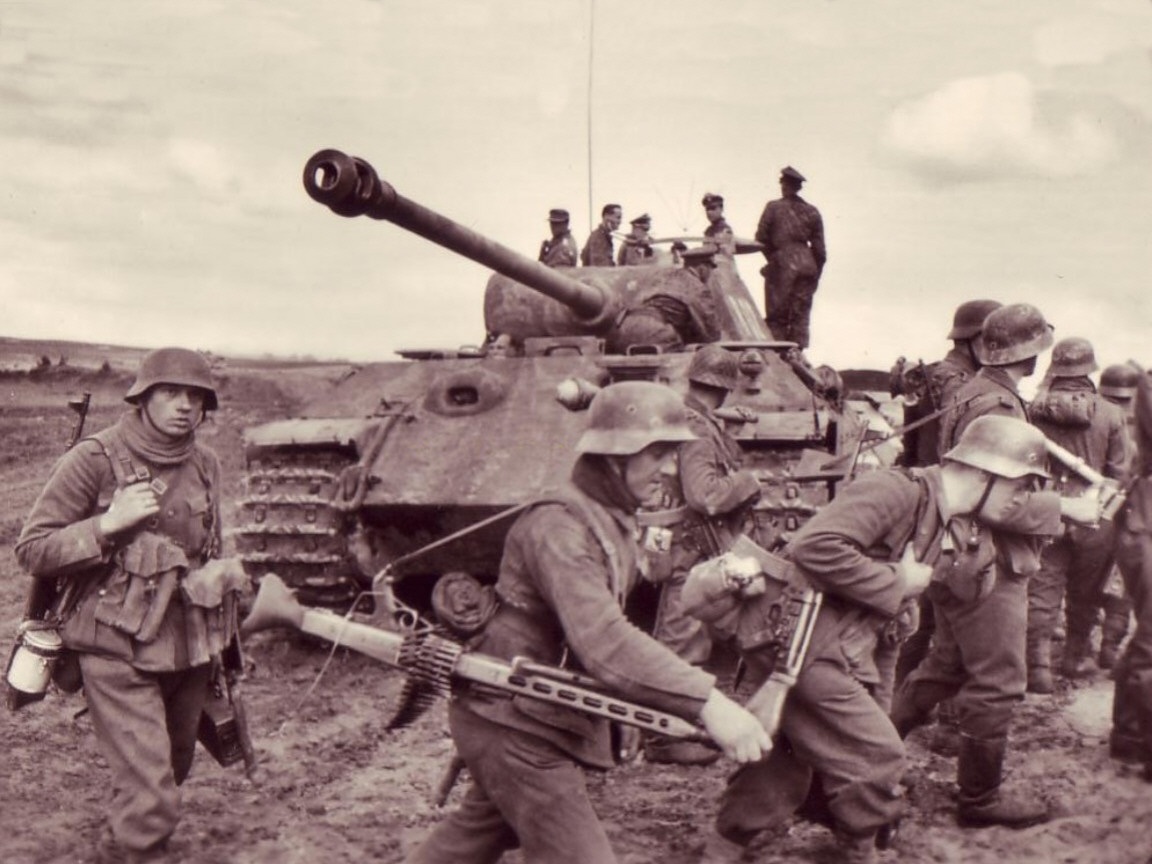
RARE Original Ground Dug Relic Eastern
Front WW2 German Dog Tag - 12 / SS GEB. ARTILLERY REGIMENT 6 ( 6th SS
Mountain Division "Nord" )
Here is a neat rare German
Dog Tag that is marked 12/ SS Geb. Arty. Regiment 6. The SS runes are
faint but visible. A nice ground dug relic ID Tag to add to the collection.The
6th SS Mountain Division Nord was a German unit of the Waffen SS during
World War II, formed in February 1941 as SS Kampfgruppe Nord (SS Battle
Group North).The Division was the only Waffen SS unit to fight in the
Arctic Circle when it was stationed in Finland and northern Russia between
June and November 1941. It fought in Karelia until the Finnish armistice
in September 1944 when it marched on foot 1,600 km through Finland and
Norway. It arrived in Denmark in December and then transferred to western
Germany. It fought in the Nordwind offensive in January 1945, where
it suffered heavy losses. In early April 1945 the division was destroyed
after several days of combat against the US 71st Infantry Division near
Budingen, Germany.The Brigade got a new unit attached, SS Gebirgsjäger
(Mountain) Artillery Regiment 6, and was now designated as a Division,
the SS Division "Nord". In September 1941 SS Division "Nord"
was attached to the Finnish III Corps under Finnish General Hjalmar
Siilasvuo (this was the only time that an SS Division was under the
command of a non-German officer), and took up new positions at Louhi,
Kiestinki. By the end of 1941, it had suffered severe casualties. Over
the winter of 1941–42 it received replacements from the general
pool of Waffen SS recruits, supposedly younger and better trained than
the SS men of the original formation.
RESERVED
.jpg)
.jpg)
.jpg)
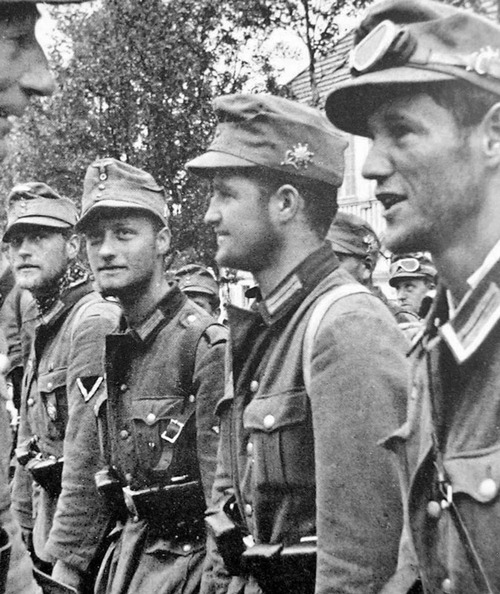
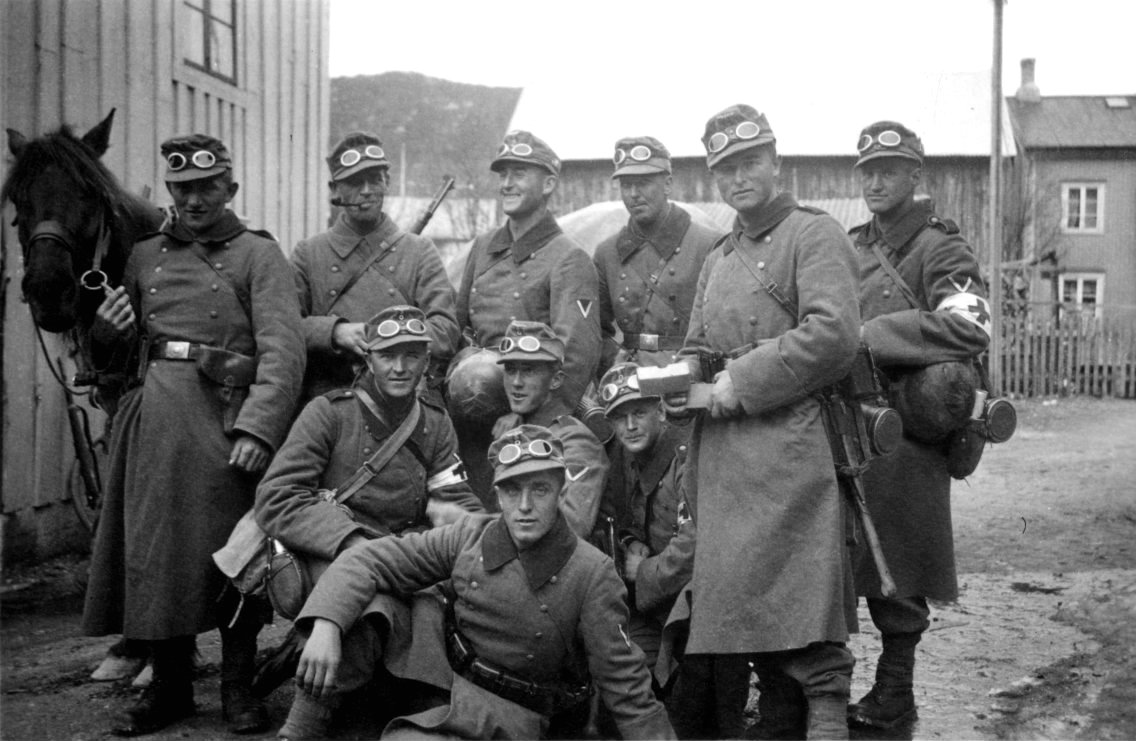
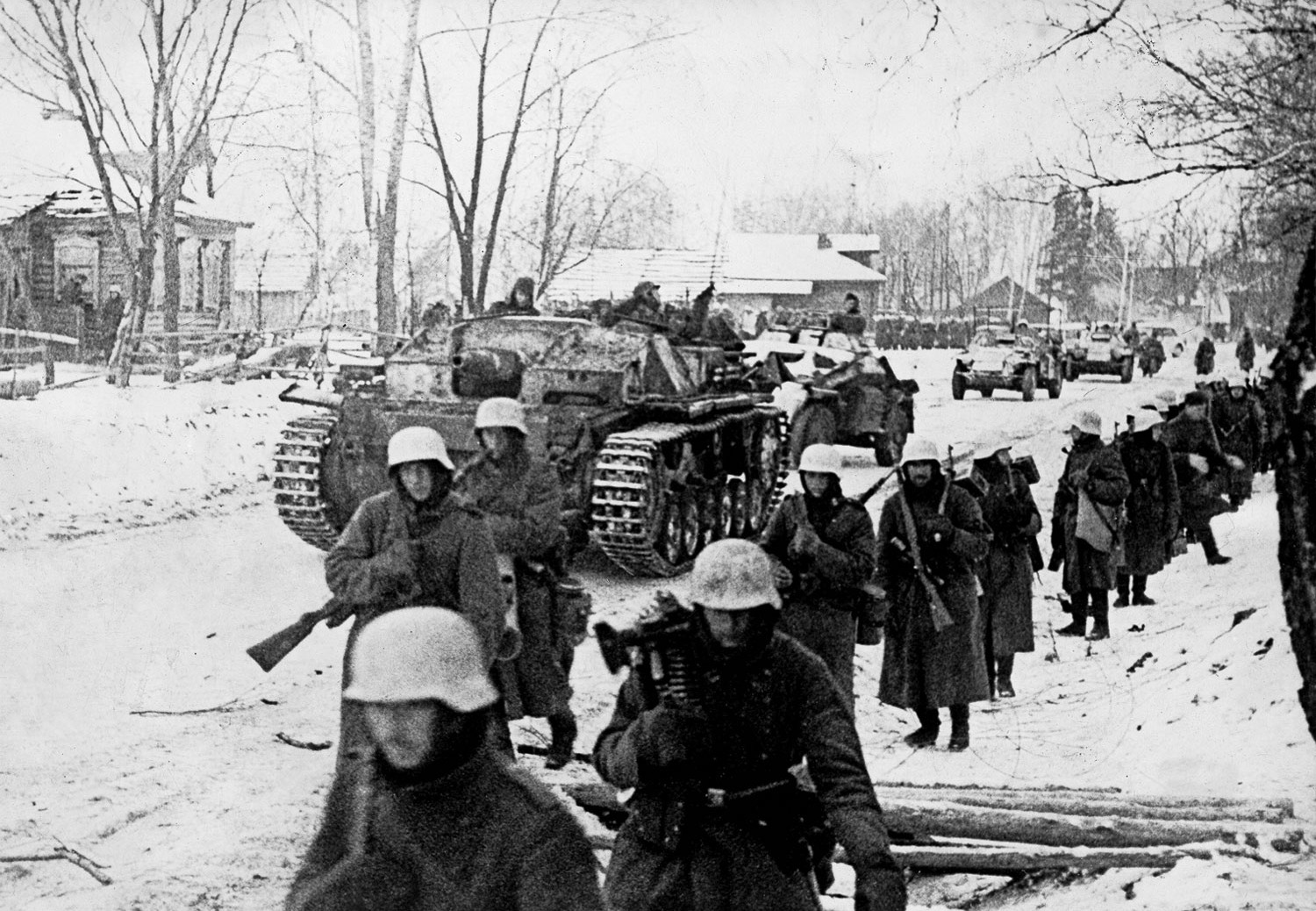
RARE WW2 Battlefield Dug GERMAN M40
Helmet - "Terrific Machine Gun Riddled with Exploded Side"
- ( Excavated Tannenberg Line "Narwa" Positions )
Battle Damaged Helmet Shells are highly collectible! and this one has
a fantastic ghostly look on display. On 26 July, pursuing the withdrawing
Germans, the Soviet attack fell onto the Tannenberg Line before the
vastly outnumbered Army Detachment "Narwa" had dug-in. The
Soviet Air Force and artillery covered the German positions with bombs
and shells, destroying most of the forest on the hills.The headquarters
of the newly arrived Flemish 6th SS Volunteer Sturmbrigade Langemarck
were destroyed and almost all of their officers wounded. Sturmbannführer
Wilhelm Rehmann left the battlefield, as Leutnant George D'Haese stepped
in to bring the brigade back to combat-readiness.The German batteries
were badly hit; the commander of one of them was killed. It took a few
days for Steiner to repair the assault guns and until this had been
completed the impact of the German artillery remained modest.Benefiting
from the disorder, the Soviet 201st and 256th Rifle Divisions supported
by the 98th Tank Regiment assaulted the positions of the "Nordland"
Division seizing the eastern side of the Lastekodumägi. In the
darkness of the following night, the Anti-Tank Company, SS Panzergrenadier
Regiment 24 "Danmark" destroyed the Soviet tanks and regained
their positions.
SOLD
.jpg)
.jpg)
.jpg)
.jpg)
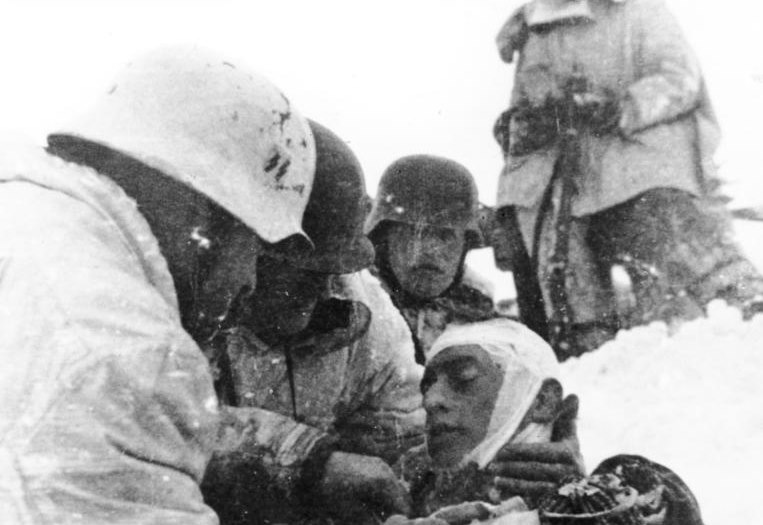
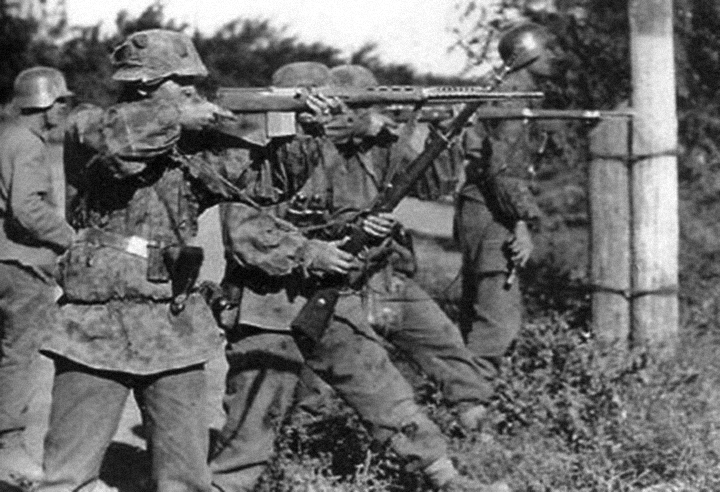
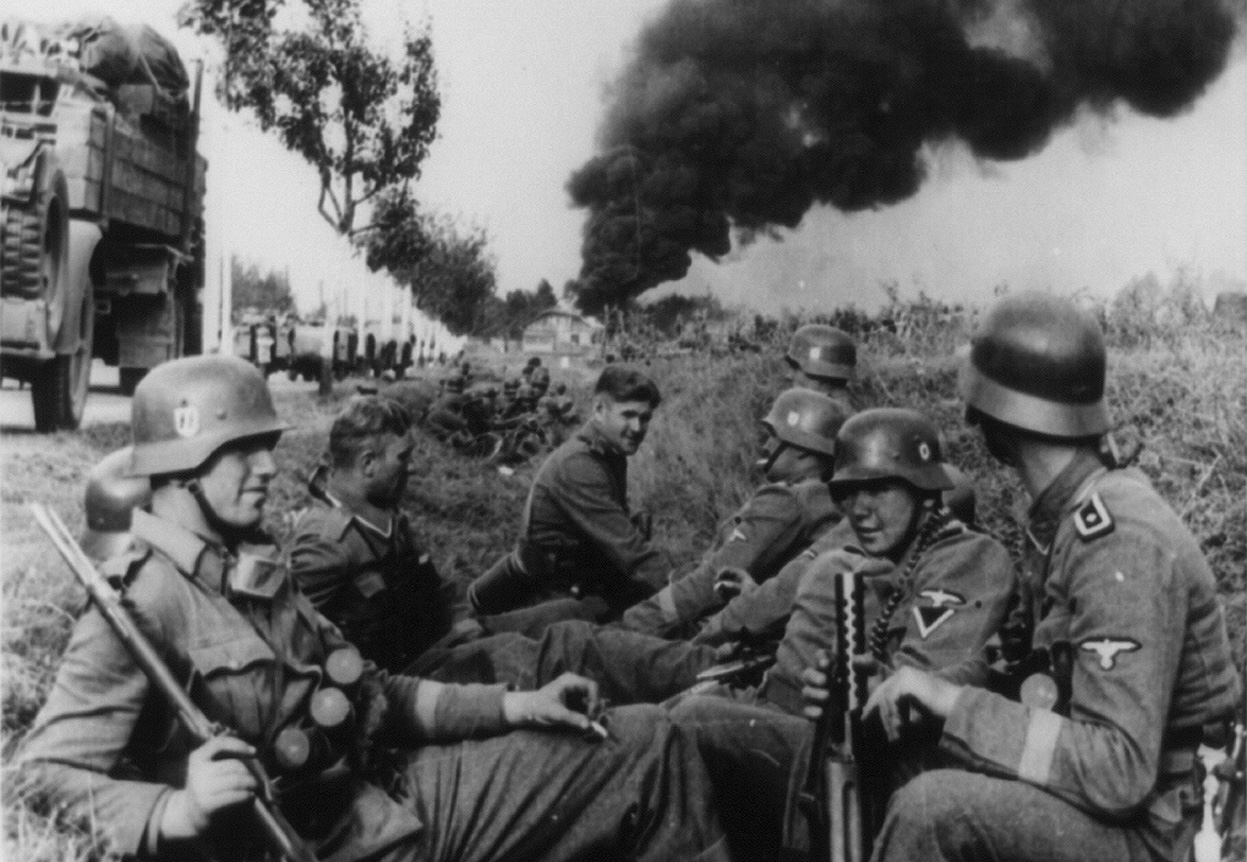
RARE AND HIGHLY COLLECTIBLE Ground
Dug BATTLEFIELD Recovered "HJ" HITLER YOUTH Relic DAGGER /
Side -KNIFE
( Konigsberg, Battlefield )
Here is a highly collectible battlefield recovered Hitler Youth Knife
/ Dagger from Konigsberg. In the East, by the middle of January 1945,
Kanigsberg was the first important target of the Red Army. There were
many Hitler Youth troops on the East Prussian front, in defense of that
one-time bastion of the Teutonic Knights. Stalin had intelligence reports
of a German atomic program, had intelligence reports of the A-9/A-10
ICBM and futuristic jet air planes ready to unleash Hitlers vengeance,
not to mention continuous mobile V-2 ballistic missile launches into
London. The dominant theme for the Red Army's all-out thrust into Germany
was formulated by Marshal Vasily Chuikov, Time is bloody and its
marching orders were to crush German defenses and take over Berlin
at all costs, without delays, ignoring losses, crushing the remnants
of the Germany's war machine. The Red Army was advancing 40 km a day,
pulverizing any resistance with tank assaults supported by shock infantry
troops and heavy artillery.
Hitler Youths were everywhere in the defense of Konigsberg, often armed
with machine guns. Soviets would shell them and eventually overrun their
positions killing them off in brutal hand-to-hand combat. In the spring
of 1945 the entire eastern front, which the Soviet army was pushing
steadily to the West, was sustained in large part by the newly created
Hitler Youth battalions, all the way to Vienna.
SOLD
.jpg)
%20(1).jpg)
.jpg)
.jpg)
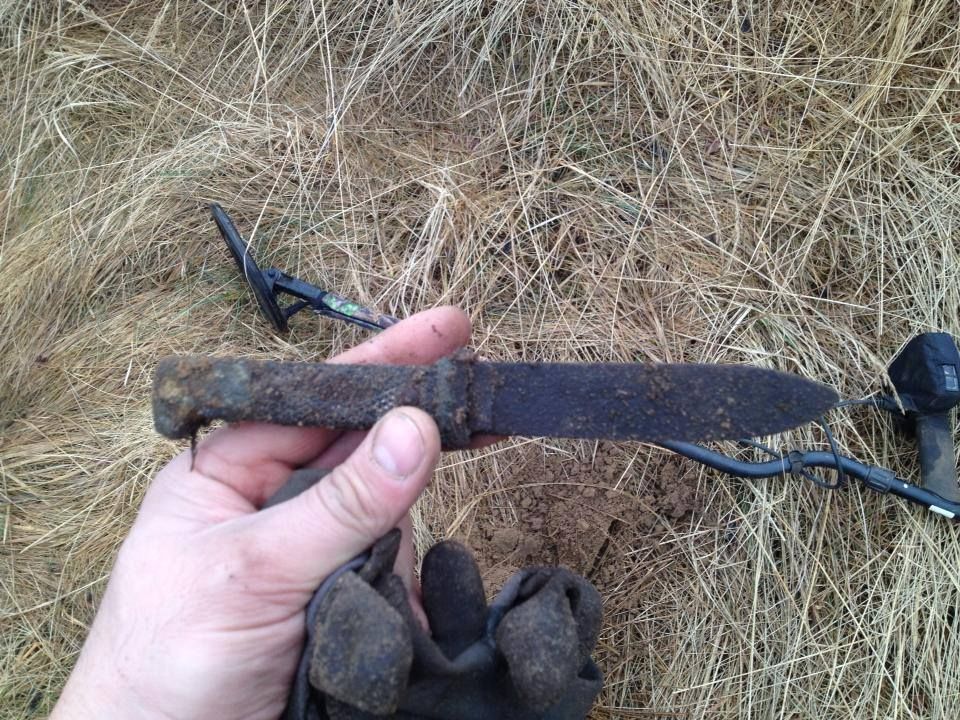
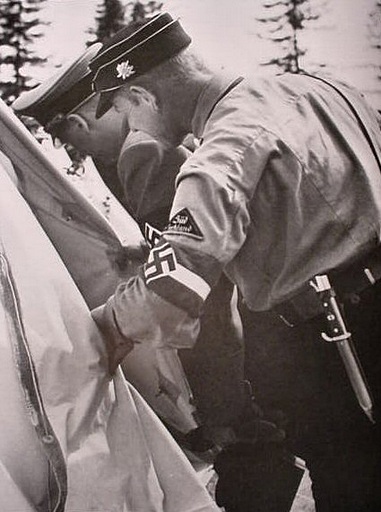
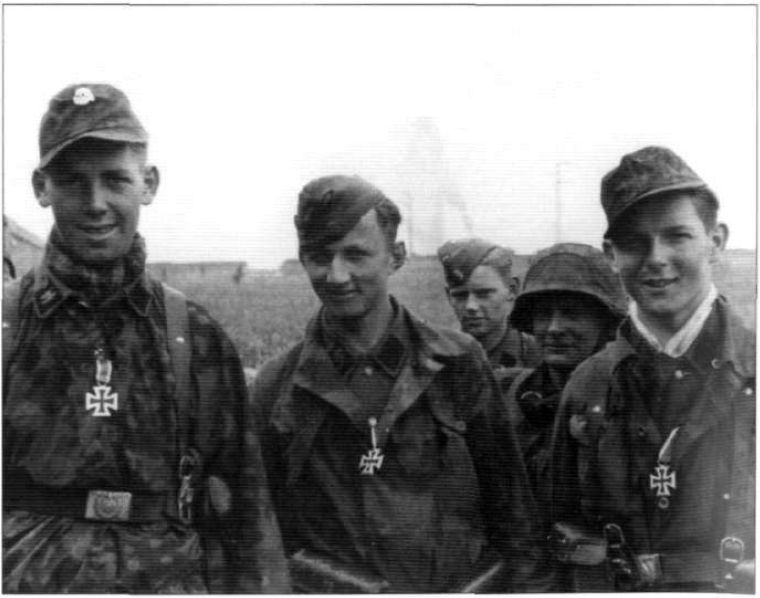
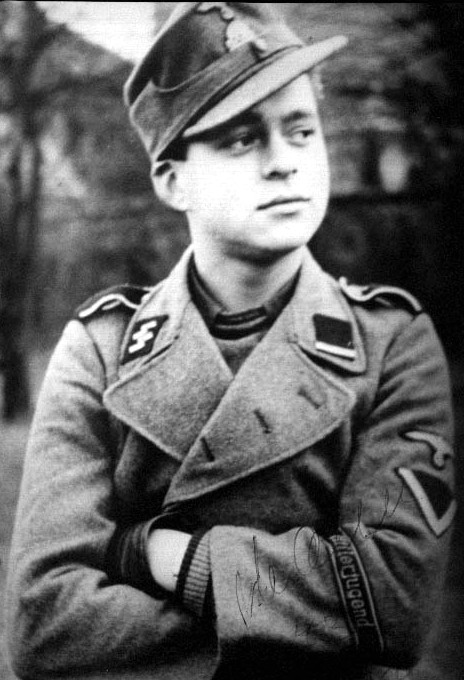
FANTASTIC "HISTORICAL"
MUSEUM WORTHY RELIC ! - Extremely Rare Battlefield Excavated Nazi German
MG42 "Hitlers Buzz-Saw" Machine Gun
( Recovered 12th SS Hitler Youth Positions, Bastogne Battle Area )
Here is a chance to own a battle damaged and ground excavated MG42 artifact
that was excavated near the positions of the 12th SS. An incredible
artifact that would truly put you in a small group outside a museum
to own. The MG is damaged in many ways as can be seen but in any condition
this piece is highly desireable and if you try to find one for sale
good luck. It displays beautifully! Don't let this historic relic get
away ! Absolutely Museum quality relic from a veteran who metal detected
Bastogne while stationed in Belgium in the 70's. Hitlerjugend was given
a brief respite, but received virtually no reinforcements or equipment.
The division was soon thrown back into battle, and took part in the
fighting withdrawal to the Franco-Belgian border. By September 1944,
the division counted less than 2,000 men, without armour or heavy equipment.
On 6 September, Kurt Meyer was captured by Belgian partisans. Meyer
had removed his SS uniform and was wearing the uniform of a regular
German army officer. In the confusion of the withdrawal, the division
was unable to undertake a rescue attempt. SS-Obersturmbannführer
Hubert Meyer was placed in command of the division.In November 1944,
the division was pulled out of the line and sent to Neinburg in Germany,
where it was to be reformed. The majority of the much-needed reinforcements
were transferred Luftwaffe and Kriegsmarine personnel, and the reformed
division would never match the elite status it had boasted in the spring
of 1944. Late in the month, Hubert Meyer was replaced by SS-Obersturmbannführer
Hugo Kraas, and the division was attached to SS-Oberstgruppenführer
Sepp Dietrich's 6.SS-Panzer-Armee, which was forming up for Operation
Wacht Am Rhein (the Second Battle of the Ardennes, popularly known as
the Battle of the Bulge), a large-scale offensive to recapture Antwerp
and halt the Allied advance.The operation opened on 16 December 1944.
Kampfgruppe Peiper from the Leibstandarte SS Adolf Hitler led the assault,
breaking through the enemy lines. The HJ, which was to follow the Kampfgruppe
and exploit the breakthrough, became bogged down in traffic jams caused
by the 12.Volksgrenadier-Division. When the division reached the front,
it was met with heavy resistance from American troops stationed on the
Elsenborn Ridge. Despite several intense efforts, the division could
not budge the American defenders. As a result, the division was ordered
to swing left and follow the advance line of the remainder of the Leibstandarte
SS Adolf Hitler. American defenders prevented the division from reaching
its objective, and after the destruction of Kampfgruppe Peiper, the
advance of Dietrich's army altogether. Near the end of the year, the
HJ was shifted south to take part in the efforts to capture Bastogne,
and saw heavy fighting around the city. By 18 January 1945, the HJ,
along with all the German forces, had been pushed back to its starting
positions. Don't let this rare opportunity get away to add historic
Bastogne SS soldier artifacts to your personal collection. Bastogne
Battlefield Recovered 12TH SS HITLER JUGEND Positions.
SOLD
.jpg)
_(2).jpg)
.jpg)
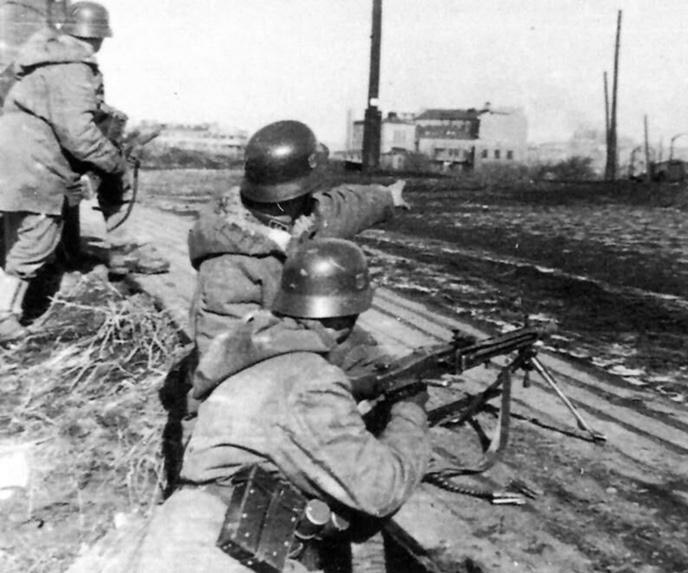
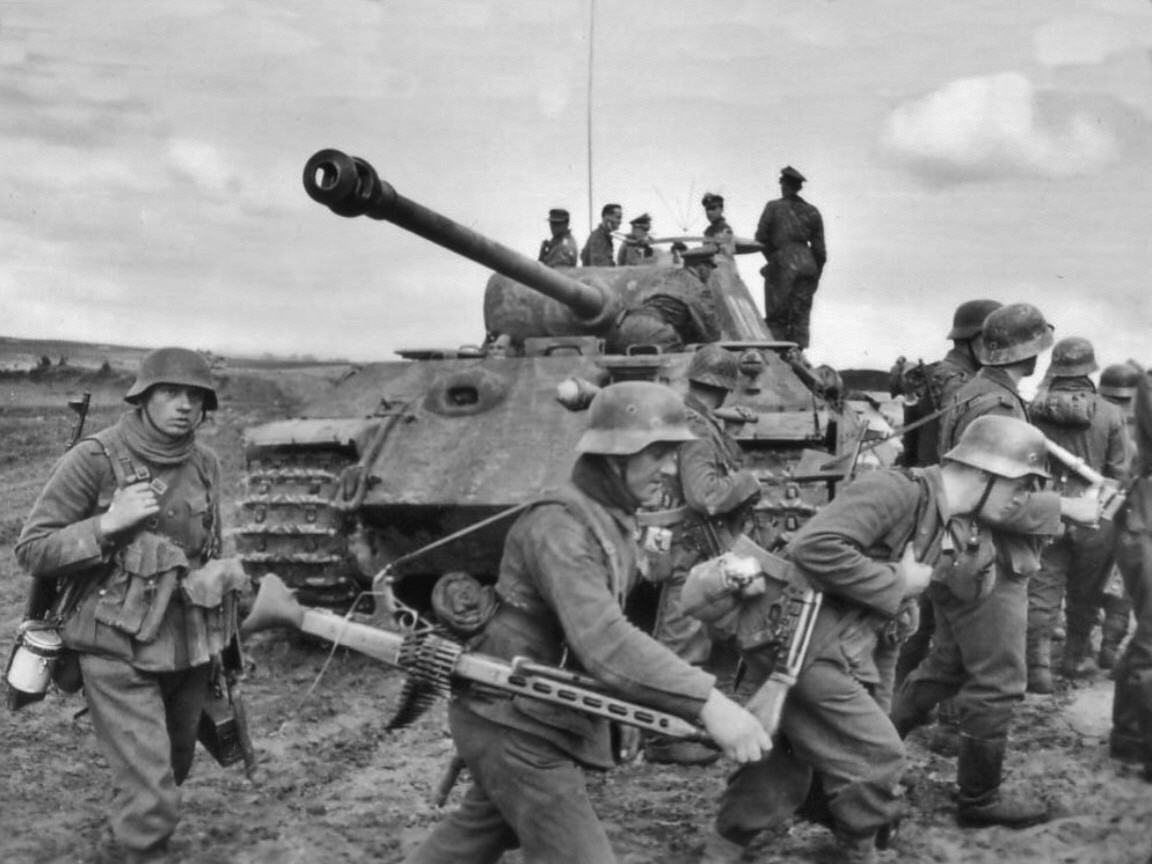
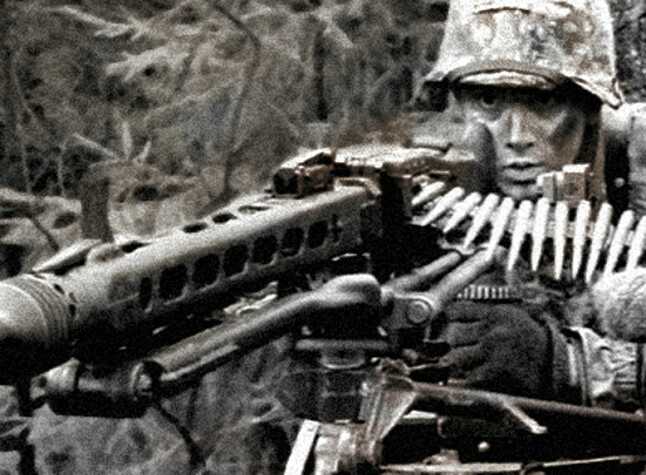
RARE and HIGHLY COLLECTIBLE WW2 German
"HJ" HITLER YOUTH BUCKLE marked and BATTLE DAMAGED - ( Recovered
Seelow Heights Battle of Berlin )
The Battle for Seelow Heights marked the beginning of the Soviet Final
Offensive for Berlin and the final major battle between Nazi Germany
and the Armies of the Soviet Union. During the three day battle both
sides would commit over a millions soldiers and nearly four thousand
tanks (a vast majority being that of the Soviets 1st, 2nd, and 3rd Belorussian
Front Armies). The German defenders turned the Seelow Heights, a hill
that raised approximately fifty meters west of the Oder River, into
a fortress honeycombed with Anti-Tank guns, Field Artillery Pieces,
Armor Field Guns, Tanks, Flak Batteries, and troop trenches. General
Gotthard Heinrici, commanding general of the German Defenders, had approximately
one hundred thousand soldiers from the Heer, Waffen-SS, Luftwaffe, Krigsmarine,
Volkstrom, and Hitler Youth spread along a fifty mile front with the
Seelow Heights at the center.For four days the German defenders held
their position against furious Soviet onslaughts of troops, aircraft,
artillery, and tanks. However without replacement troops and resupply
no matter how many Soviet troops they killed or tanks they destoryed.
With the Russians exploiting holes in the defensive lines, the German
troops were forced to abandon the heights and fell back to pre-established
defensive lines that would bring them all the way back to the Gates
of Berlin by the 22nd of April.
SOLD
.jpg)
.jpg)
.jpg)
.jpg)
.jpg)
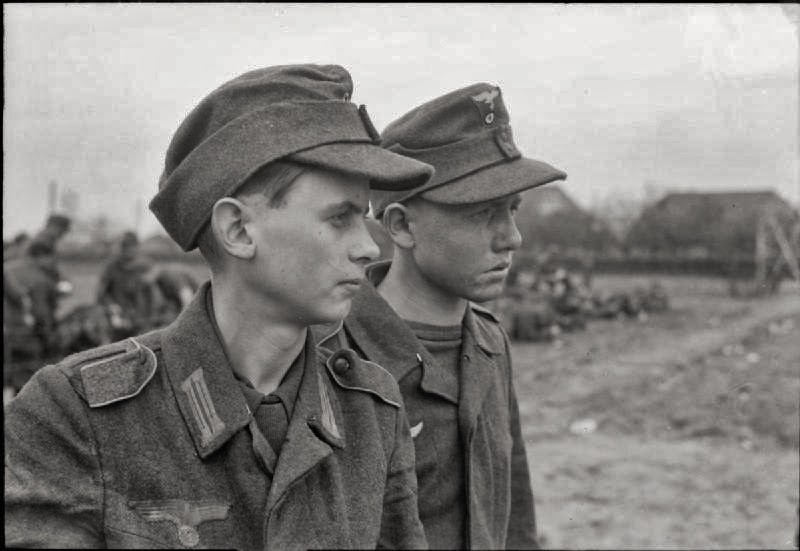

VERY COOL FIND ! Highly Cross Collectible
WW2 Battlefield Dug Relic " TRENCH ART CIGARETTE CASE " US
Currency !
( Recovered Gumrak Air Field, Stalingrad Eastern Front )
Ok here is a unique relic that I picked up from a digger in Stalingrad.
A German or Russian Soldier Cigarette Case Trench Art into a US Currency
Note ! The 2 pieces are missing the pin that joins them together but
am sure could be repaired. Fantastic WW2 Collectible from a wicked historic
battlefield. Don't let this one get away ! The Battle of Stalingrad
was a major battle of World War II in which Nazi Germany and its allies
fought the Soviet Union for control of the city of Stalingrad (now Volgograd)
in southwestern Russia. The battle took place between 23 August 1942
and 2 February 1943. It was among the largest on the Eastern Front and
was marked by its brutality and disregard for military and civilian
casualties. It was amongst the bloodiest battles in the history of warfare
with the higher estimates of combined casualties amounting to nearly
two million deaths. In its defeat, the crippling losses suffered by
Germany's military proved to be insurmountable for the war. The battle
was a turning point in the war, after which the German forces attained
no further strategic victories in the East.The German offensive to capture
Stalingrad commenced in late summer 1942, supported by intensive Luftwaffe
bombing which reduced much of the city to rubble. The German offensive
eventually became bogged down in house-to-house fighting; and despite
controlling over 90% of the city at times, the Wehrmacht was unable
to dislodge the last Soviet defenders clinging tenaciously to the west
bank of the Volga River.
LAYAWAY D.S.
.jpg)
.jpg)
.jpg)
.jpg)
.jpg)
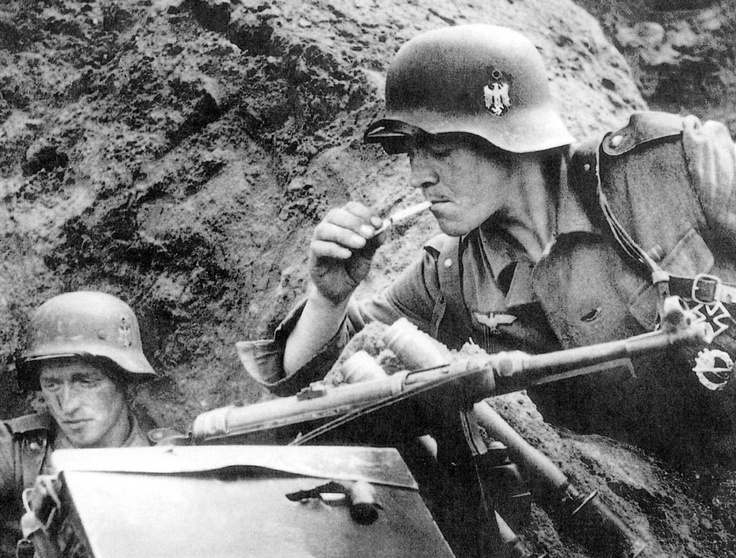
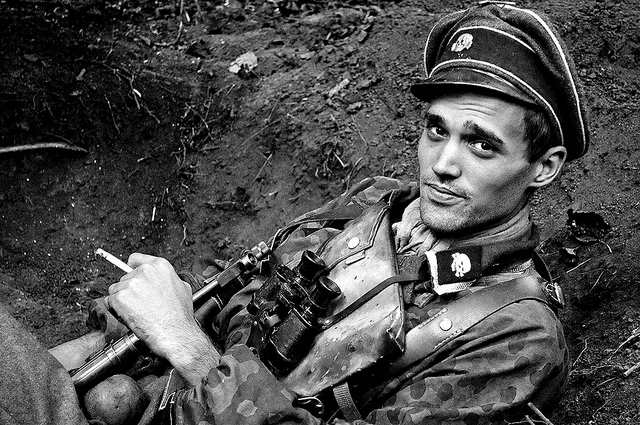
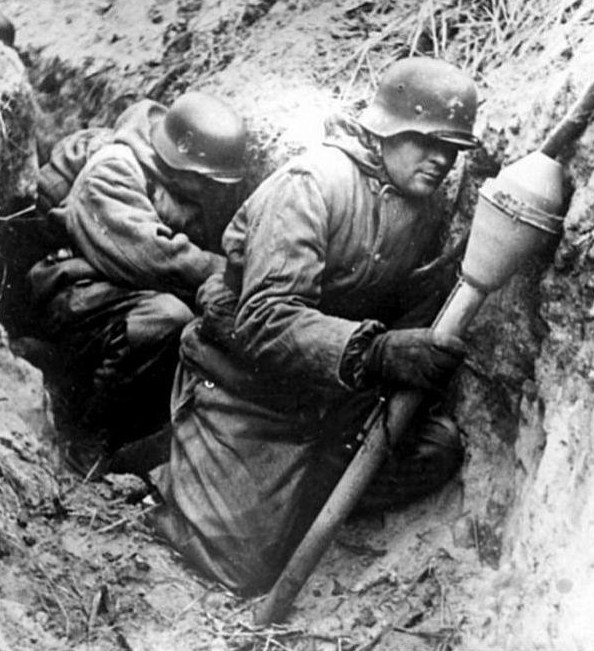
NICE Pair of German WW2 KNIGHTS CROSS
RELICS Battlefield Dug - ( Kolberg Pocket Pomerania )
Here is a cool lot of ww2 german relic knights cross at a great price
for the pair. Both were dug in Kolberg Pocket Battlefield. The German
defence forces represented various formations from the Army Group 'Vistula,'
some tasked with defending the fortress, others simply cut off in the
Kolberg pocket. The most notable units included elements of the Third
Panzer Army; the 33rd Waffen Grenadier Division of the SS Charlemagne
(1st French) and the 15th Waffen Grenadier Division of the SS (1st Latvian).
Estimates of the German defenders — including local militia and
volunteers (Volkssturm) — range from 8,000 to 15,000, supported
by some artillery (about 60 pieces), an armored train and about 18 tanks
and a dozen support vehicles of various types. The German units also
received some air and sea support (including artillery fire from pocket
battleships Lützowand Admiral Scheer).The Soviet forces attacking
the city can be divided into two waves: one of units of the Red Army
(March 4 to 7) and one of Soviet-controlled Polish units (March 8 to
14), although some Soviet units took part in the combat after March
8. The Soviet main units were the 45th Tank Brigade (engaged from March
4 to 7) and the 272nd Rifle Division (March 6 to 9). Polish units included
elements of the Polish First Army (from the 1st Belorussian Front):
Polish 6th Infantry Division (from March 7); Polish 3rd Infantry Division
(from March 9); Polish 4th Infantry Division (from March 12), and various
support units. The personnel of the Polish units numbered over 28,000.
RESERVED
.jpg)
.jpg)

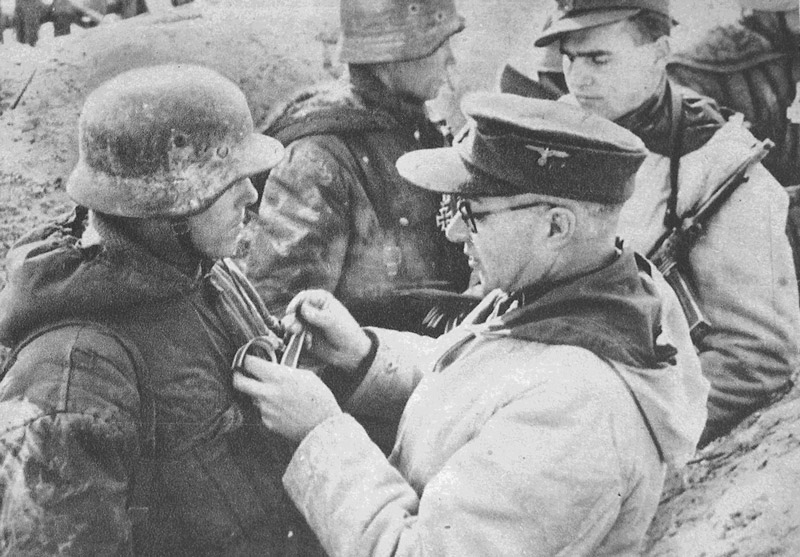
INCREDIBLE RELIC FROM STALINGRAD
! Ground Dug WWII Relic RUSSIAN BODY ARMOR
( Sniper Protection, Complete with both chest and lower extremity
sections ! )
Here is a historic and extremely rare original
WW2 relic Russian Body Armor for upper and lower, in incredible ground
dug condition and solid that was recovered from the brutal city fighting
around Stalingrad that had the Russians using WWI protection by wearing
sheets of iron to protect them from German snipers. This armor is complete
with all sections. A great display relic ! The Battle of Stalingrad
was a major battle of World War II in which Nazi Germany and its allies
fought the Soviet Union for control of the city of Stalingrad (now Volgograd)
in southwestern Russia. The battle took place between 23 August 1942
and 2 February 1943. It was among the largest on the Eastern Front and
was marked by its brutality and disregard for military and civilian
casualties. It was amongst the bloodiest battles in the history of warfare
with the higher estimates of combined casualties amounting to nearly
two million deaths. In its defeat, the crippling losses suffered by
Germany's military proved to be insurmountable for the war. The battle
was a turning point in the war, after which the German forces attained
no further strategic victories in the East.The German offensive to capture
Stalingrad commenced in late summer 1942, supported by intensive Luftwaffe
bombing which reduced much of the city to rubble. The German offensive
eventually became bogged down in house-to-house fighting; and despite
controlling over 90% of the city at times, the Wehrmacht was unable
to dislodge the last Soviet defenders clinging tenaciously to the west
bank of the Volga River.
SALE PENDING
.jpg)
.jpg)
.jpg)
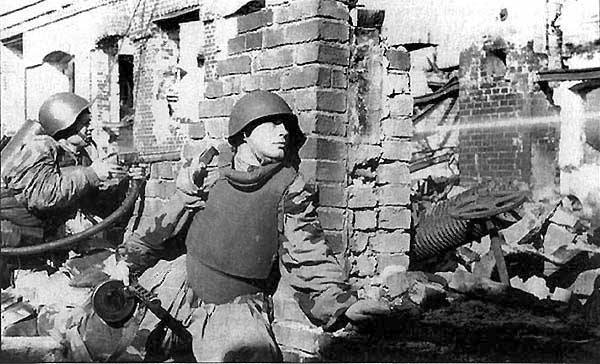
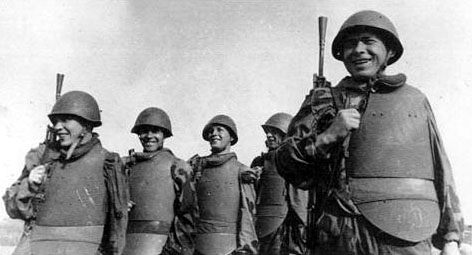
The 510th was formed June 1944 in Paderborn and in July it was sent to Lithuania, where it fought in the Kurland pocket until the end of the war, attached to the 14. Panzer-Division and 30. Infanterie-Division.Elements of the battalion were evacuated from Kurland. Via Kassel and Putlos they reached the Western Front and were engaged in the last fighting there. This group went into captivity with the Western Allies. A Kampfgruppe with the last 15 Tiger tanks did stay in Kurland
Kurland Pocket Battlefield area.At the start of Operation Barbarossa in 1941, Courland, along with the rest of the Baltic, was overrun by Army Group North headed by Field Marshal Wilhelm Ritter von Leeb. In 1944, the Red Army lifted the siege of Leningrad and re-conquered the Baltic area along with much of Ukraine and Belarus. However, some 200,000 German troops held out in Courland. With their backs to the Baltic Sea. they were trapped in what became known as the Courland Pocket, blockaded by the Red Army and the Red Baltic Fleet. Colonel-General Heinz Guderian, the Chief of the German General Staff, insisted to Adolf Hitler that the troops in Courland should be evacuated by sea and used for the defense of Germany. Hitler refused, and ordered the Wehrmacht, Waffen-SS, Luftwaffe and Kriegsmarine forces in Courland to continue the defence of the area. Hitler believed them necessary to protect Kriegsmarine submarine bases along the Baltic coast. On January 15, 1945, Army Group Courland (Heeresgruppe Kurland) was formed under Colonel-General Dr. Lothar Rendulic The blockade by elements of the Leningrad Front remained until May 8, 1945, when the Army Group Courland, then under its last commander, Colonel-General Carl Hilpert, surrendered to Marshal Leonid Govorov, the commander of the Leningrad Front (reinforced by elements of the 2nd Baltic Front) on the Courland perimeter. At this time the group consisted of the remnants of some 31 divisions. After May 9, 1945, approximately 203,000 troops of Army Group Courland began moving to Soviet prison camps in the East. The majority of them never returned to Germany.
RESERVED
.jpg)
.jpg)


RARE Original and Historic WW2 "
Battlefield " Dug Relic JAPANESE ARMY HELMET SHELL ( Pacific Island
Recovered - Battle Damaged )
Here is a great battle damaged with bullet or shrapnel strike on lower
rim that caused a shock crack on the crown. The helmet shell is in solid
condition aside from the historic battle damage. Japanese dug relic
shells are extremely rare and this one is priced low for the rarity.
The Battle of Tinian was a World War II battle fought between the Japanese
forces and the US Marines in the Pacific theater of operation. It took
place on the island of Tinian, in the Marianas, from July 24, 1944 to
August 1, 1944. It was a decisive American victory. When the Battle
of Tinian began on July 24, 1944, the Battle of Guam was still raging.
Since the battle of Guadalcanal in 1942, the American forces in the
Pacific had been leapfrogging from one Japanese-infested island to the
next: Guadalcanal and Savo island (Salomon Islands), Tarawa and Makin
(Gilbert Islands), and Saipan in the Mariana Islands. The American victory
in the Battle of Saipan made Tinian, situated 3.5 miles south of Saipan,
the next step in the Marianas campaign. The Japanese forces which defended
the island were composed of 10,000 troops, about 4,500 of them were
Marines of the Japanese Imperial Navy and 5,500 were army infantry troops.
These Japanese fighting force was commanded by Colonel Kiyochi Ogata.
LAYAWAY
.jpg)
.jpg)
.jpg)
.jpg)
.jpg)
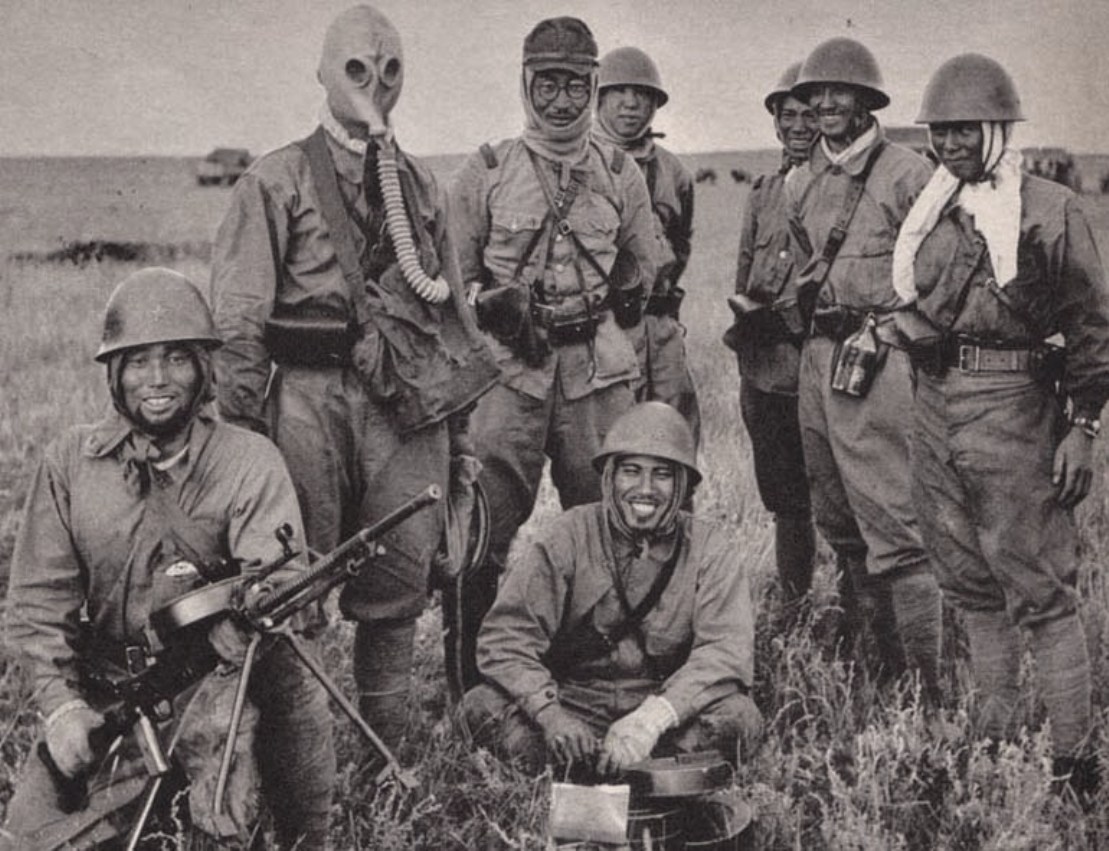
INCREDIBLE RELIC !! HUGE Single WW2
German Transport MEDIC AMBULANCE Truck FRONT FENDER with TACTICAL Paint
!
( Recovered 11th SS Panzer Grenadiers Positions Narva Battlefield )
"Impressive" Battlefield Dug German Transport Ambulance Fender
that was recovered in Transei Udriia, Narva in positions held by SS
Nordland Troops. Specifically 11th SS -Freiw. Panzer Grenadiers . The
fender has the ambulance fender has the tactical symbol and Red Cross
Symbol. It is huge and measures 15 x 29 inches ! The 11th SS, along
with the rest of III. (Germanic) SS Panzer Corps arrived at the front
near Leningrad and was almost immediately put into action against the
Red Army attacks to break the German encirclement of the city. After
they escaped from being surrounded, the Nordland effected a fighting
withdrawal over 60 kilometres to Oranienbaum. On 14 January 1944, the
Soviet Krasnoye Selo–Ropsha Offensive succeeded in collapsing
the German front, and the Nordland fought its way back again to the
city of Narva in Estonia, where a new line of defence was being organized.
In early February, Soviet forces began their attacks towards the city
and the Battle of Narva began. The battle has come to be known as the
Battle of the European SS because a large proportion of the defenders
were European volunteers. Joining the Nordland were elements from all
over Europe. The Dutchmen of the III (Germanic) SS Panzer Corps the
Walloons of the 5th SS Volunteer Sturmbrigade Wallonien, the Flemings
of the 6th SS Volunteer Sturmbrigade Langemarck, the Estonians of the
20th Waffen Grenadier Division of the SS (1st Estonian), as well as
regular German formations. Altogether, the defenders of the Narva River
line amounted to 50,000 men. Against them, the Soviets threw 200,000
soldiers of the Leningrad Front.The Kingisepp–Gdov Offensive was
launched on 13 February, with Soviet forces attacking right across the
line, as well as launching an amphibious assault from the Baltic near
Mereküla. The Nordland units were among the forces that annihilated
the Soviet landing force. Over the next five months, the Waffen SS held
out against the Soviet attacks, the Nordland seeing very heavy fighting.
On 6 March, Soviet aircraft managed to destroy the Narva bridge in the
Battle for Narva Bridgehead, cutting off the troops on the far side
of the river in Ivangorod. The men of Nordland's Pioneer Battalion quickly
rebuilt the bridge while under heavy fire. The launching of Operation
Bagration in June 1944 inspired the Narva Offensive. The highway bridge
over the Narva was blown up and the defenders were moved 16 kilometres
west to the Tannenberg Line
SOLD
.jpg)
.jpg)
.jpg)
.jpg)
.jpg)
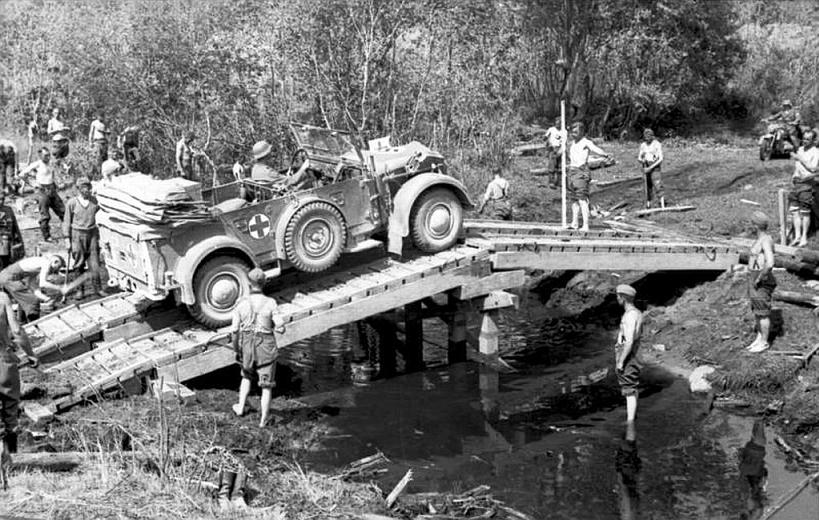
.jpg)
RARE WW2 US Engineers LAND MINE Marker
SIGN ' DANGER ' - ( Barn Find Normandy Relic )
Here is a marker used by US Engineers Signal Corps to designate the
location of a land mine as invasion forces moved inland. The Allied
invasion plans had called for the capture of Saint-Lô, Caen, and
Bayeux on the first day, with all the beaches linked except Utah, and
Sword (the last linked with paratroopers) and a front line 10 to 16
kilometres (6–10 mi) from the beaches. However, practically none
of these objectives had been achieved. It took two months for British
and Canadian troops to capture Caen, as they faced 7 heavy Panzer divisions,
while their American allies, although advancing more rapidly, faced
only 2 of these divisions. Overall the casualties had not been as heavy
as some had feared (around 10,000 compared to the 20,000 Churchill had
estimated) and the bridgeheads had withstood the expected counterattacks.Once
the beachhead was established, two artificial Mulberry harbours were
towed across the English Channel in segments and made operational around
D+3 (9 June). One was constructed at Arromanches by British forces,
the other at Omaha Beach by American forces. By 19 June, when severe
storms interrupted the landing of supplies for several days and destroyed
the Omaha harbour, the British had landed 314,547 men, 54,000 vehicles,
and 102,000 tons of supplies, while the Americans put ashore 314,504
men, 41,000 vehicles, and 116,000 tons of supplies. Around 9,000 tons
of materiel were landed daily at the Arromanches harbour until the end
of August 1944, by which time the port of Cherbourg had been secured
by the Allies and had begun to return to service.
SOLD
.jpg)
.jpg)
.jpg)
.jpg)
.jpg)
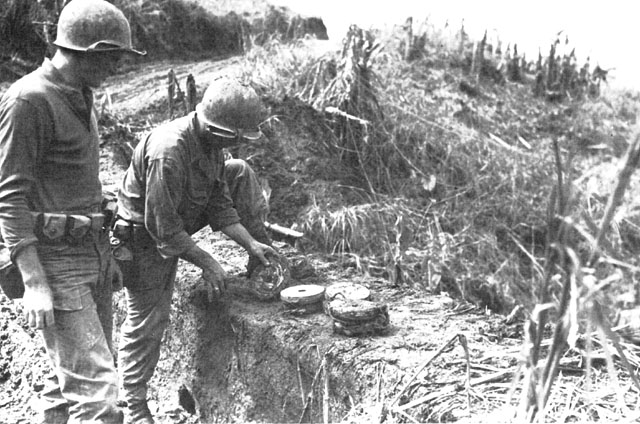
RARE WW2 German Battlefield Dug " PANZER-SS Officer 'Skull and Bones' COLLAR TAB " Relic - ( Recovered at Loshheimergraten- Rocherath, Bulge Battlefield )
The main drive against Elsenborn Ridge was launched in the forests east of the twin villages on the early morning of 17 December. This attack was begun by tank and Panzergrenadier units of the 12th SS Panzer Division Hitlerjugend. By 11:00, this attack had driven units of the U.S. 99th Infantry Division back into the area of the twin villages. These units were joined by forces of the U.S. 2nd Infantry Division moving into the villages from the north. Tanks from the U.S. 741st Tank Battalion supported the withdrawal but were quickly destroyed by German Panther tanks advancing with the Panzergrenadiers. The U.S. withdrawal was hastened by an increasing shortage of ammunition. Fortunately for the defense, three tank destroyers of the U.S. 644th Tank Destroyer Battalion arrived with a good supply of bazookas and anti-tank mines. These reinforcements were put to good use when the 12th SS Panzer Division launched a powerful tank and infantry attack on the twin villages. The U.S. forces responded with a powerful artillery barrage supported by mortar fire, bazooka rockets, and anti-tank mines that repelled the German attack by midnight. The German attack failed to clear a line of advance for the 12th SS. Immediately southeast of Elsenborn, the 1st SS Panzer Division, spearhead of the entire German 6th Panzer Army, a critical element in the German offensive, was held up for all of December 16 along its Rollbahn to the west by a single Intelligence and Reconnaissance platoon of the 394th Infantry Regiment. Dug in on a slight ridge overlooking a village of about 15 homes, in the vicinity of the Losheim Gap, the 18 man platoon, led by a 20-year old lieutenant Lyle Bouck J., inflicted 93 casualties on the Germans during a 20-hour-long fight at a key intersection southeast of Krinkelt-Rocherath.
SOLD
.jpg)
.jpg)

.jpg)
.jpg)
NICE DUG RELIC CONSIGNMENT ! - Ground
Dug RELIC M42 'Raw Edge' German Waffen-SS SD HELMET ! - ( Farm Field
Village of Foy' )
Here is a nice relic German SS SD M42 helmet RELIC that was ground dug
in a field near the village of Foy. The rare to find raw-edge helmet
still has visible runes and has no rust throughs or holes. A fine display
example from a historic area of fighting. On 16 December 1944, at 5:30
a.m., the Germans began the assault with a massive, 90-minute artillery
barrage using 1,600 artillery pieces across an 80 miles (130 km) front
on the Allied troops facing the Sixth SS Panzer Army. The Americans'
initial impression was that this was the anticipated, localized counterattack
resulting from the Allies' recent attack in the Wahlerscheid sector
to the north where the 2nd Division had knocked a sizable dent into
the Siegfried Line. In the northern sector Dietrich's Sixth SS Panzer
Army assaulted Losheim Gap and Elsenborn Ridge in an effort to break
through to Liège.Heavy snowstorms engulfed parts of the Ardennes
area. While having the desired effect of keeping the Allied aircraft
grounded, the weather also proved troublesome for the Germans because
poor road conditions hampered their advance. Poor traffic control led
to massive traffic jams and fuel shortages in forward units. In the
center, von Manteuffel's Fifth Panzer Army attacked towards Bastogne
and St. Vith, both road junctions of great strategic importance. In
the south, Brandenbergers Seventh Army pushed towards Luxembourg in
their efforts to secure the flank from Allied attacks. Only one month
before 250 members of the Waffen-SS had unsuccessfully tried to recapture
the town of Vianden with its castle from the Luxembourgish resistance
during the Battle of Vianden.
LAYAWAY
.jpg)
%20(1).jpg)
.jpg)
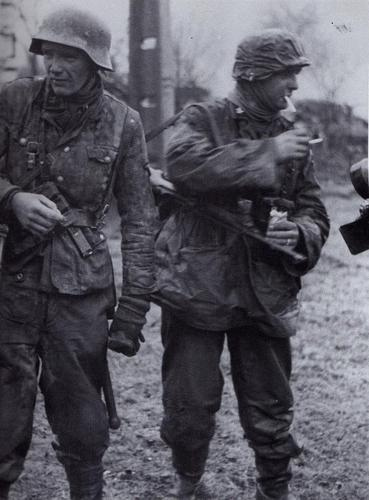
.jpg)
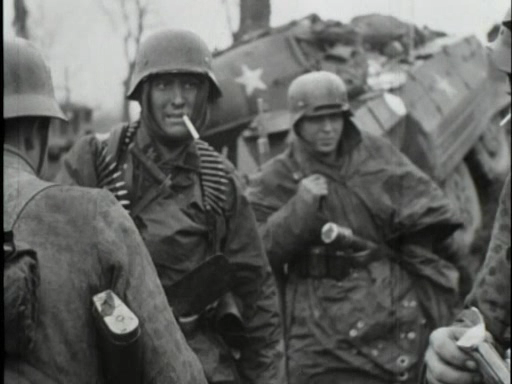
RARE WWII Ground Dug "Battlefield"
RELIC German KRIEGSMARINE or WHERMACHT MOTORCYCLE " BMW Zundapp"
Rear LICENSE PLATE !
( Recovered Kurland Pocket, Eastern front )
Here is a rare to find and always collectible and nice condition battlefield
relic wwII German Whermacht or possibly Kriegsmarine Motorcycle License
Plate with 2 inspection stamps showing through the ground action. Recovered
near remnants of a BMW Zundapp. Kurland Pocket Battlefield area.At the
start of Operation Barbarossa in 1941, Courland, along with the rest
of the Baltic, was overrun by Army Group North headed by Field Marshal
Wilhelm Ritter von Leeb. In 1944, the Red Army lifted the siege of Leningrad
and re-conquered the Baltic area along with much of Ukraine and Belarus.
However, some 200,000 German troops held out in Courland. With their
backs to the Baltic Sea. they were trapped in what became known as the
Courland Pocket, blockaded by the Red Army and the Red Baltic Fleet.
Colonel-General Heinz Guderian, the Chief of the German General Staff,
insisted to Adolf Hitler that the troops in Courland should be evacuated
by sea and used for the defense of Germany. Hitler refused, and ordered
the Wehrmacht, Waffen-SS, Luftwaffe and Kriegsmarine forces in Courland
to continue the defence of the area. Hitler believed them necessary
to protect Kriegsmarine submarine bases along the Baltic coast. On January
15, 1945, Army Group Courland (Heeresgruppe Kurland) was formed under
Colonel-General Dr. Lothar Rendulic The blockade by elements of the
Leningrad Front remained until May 8, 1945, when the Army Group Courland,
then under its last commander, Colonel-General Carl Hilpert, surrendered
to Marshal Leonid Govorov, the commander of the Leningrad Front (reinforced
by elements of the 2nd Baltic Front) on the Courland perimeter. At this
time the group consisted of the remnants of some 31 divisions. After
May 9, 1945, approximately 203,000 troops of Army Group Courland began
moving to Soviet prison camps in the East. The majority of them never
returned to Germany.
SOLD
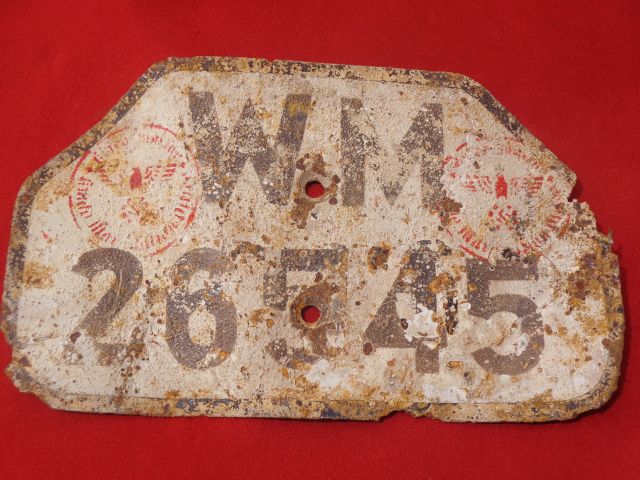
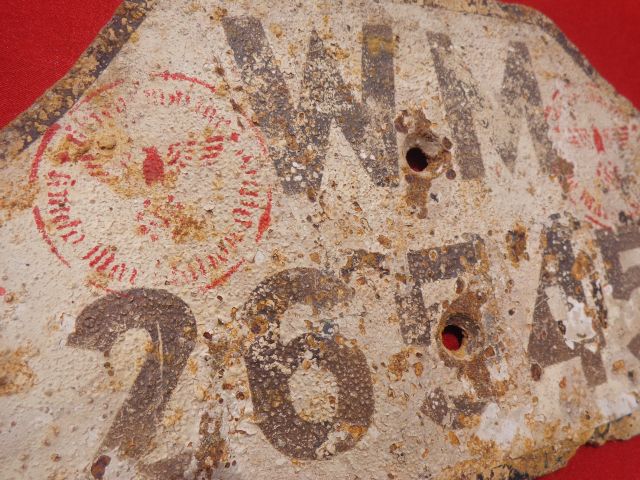
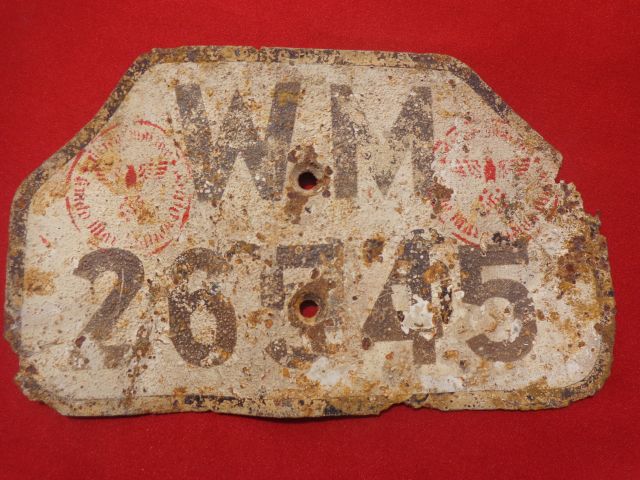
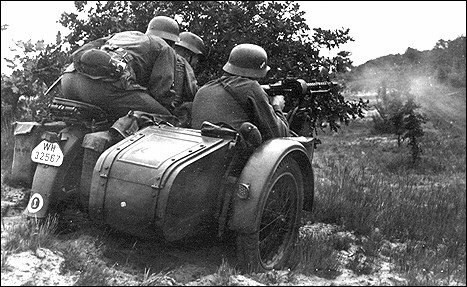
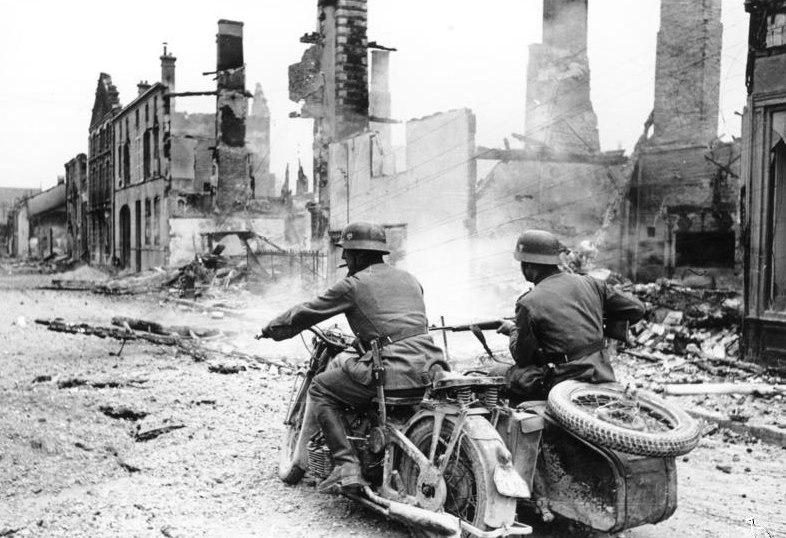
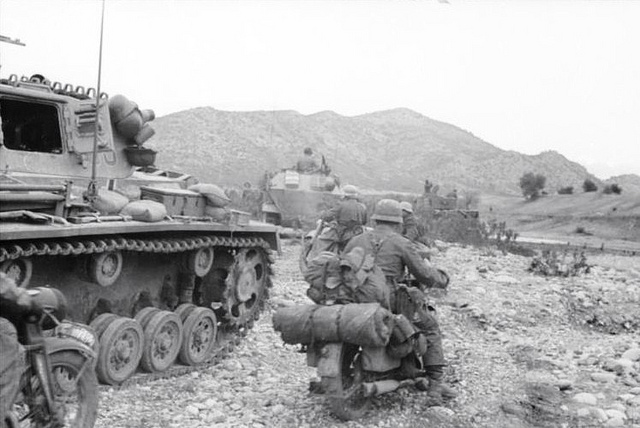
Here is a great display relic large size helmet with inner band still present that shows intense battle damage. There is a faint decal visible. The Battle of Stalingrad was a major battle of World War II in which Nazi Germany and its allies fought the Soviet Union for control of the city of Stalingrad (now Volgograd) in southwester Russia. The battle took place between 23 August 1942 and 2 February 1943. It was among the largest on the Eastern Front and was marked by its brutality and disregard for military and civilian casualties. It was amongst the bloodiest battles in the history of warfare with the higher estimates of combined casualties amounting to nearly two million deaths. In its defeat, the crippling losses suffered by Germany's military proved to be insurmountable for the war. The battle was a turning point in the war, after which the German forces attained no further strategic victories in the East.The German offensive to capture Stalingrad commenced in late summer 1942, supported by intensive Luftwaffe bombing which reduced much of the city to rubble. The German offensive eventually became bogged down in house-to-house fighting; and despite controlling over 90% of the city at times, the Wehrmacht was unable to dislodge the last Soviet defenders clinging tenaciously to the west bank of the Volga River
Reserved for Darren
.jpg)
.jpg)
.jpg)
.jpg)
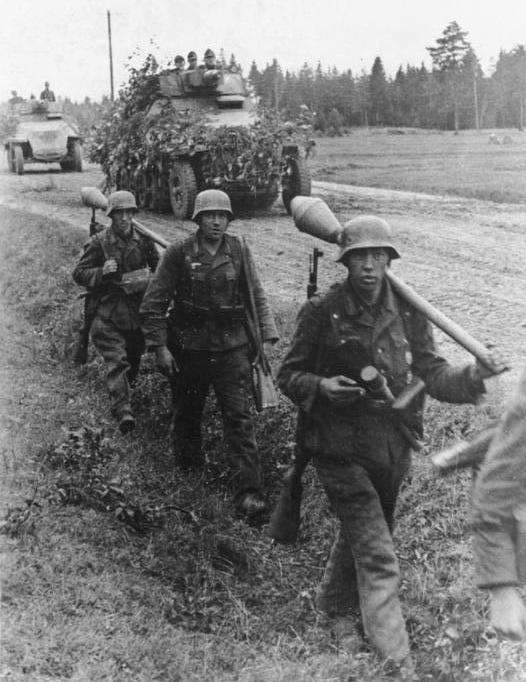
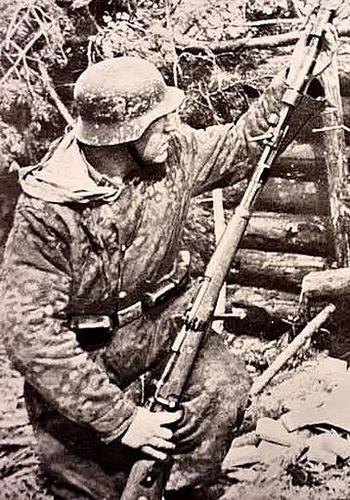
FANTASTIC LOT !! - Rare Grouping of JAPANESE
RELICS from GUADALCANAL includes T94 Pistol Relic M31 Japanese Helmet,
a Japanese Mess Kit with Soldier Art, A broken Arisaka Bayonet Scabbard,
and some recovered Rounds ! ( Pacific Islands from the Gary Kinnaman
Collection )
On 7 August 1942, Allied forces, predominantly American, landed on the
islands of Guadalcanal, Tulagi, and Florida in the southern Solomon
Islands with the objective of denying their use by the Japanese to threaten
the supply and communication routes between the US, Australia, and New
Zealand. The Allies also intended to use Guadalcanal and Tulagi as bases
to support a campaign to eventually capture or neutralize the major
Japanese base at Rabal on New Britain. The Allies overwhelmed the outnumbered
Japanese defenders, who had occupied the islands since May 1942, and
captured Tulagi and Florida, as well as an airfield (later named Henderson
Field) that was under construction on Guadalcanal. Powerful US naval
forces supported the landings.Surprised by the Allied offensive, the
Japanese made several attempts between August and November 1942 to retake
Henderson Field. Three major land battles, seven large naval battles
(five nighttime surface actions and two carrier battles), and continual,
almost daily aerial battles culminated in the decisive Naval Battle
of Guadalcanal in early November 1942, in which the last Japanese attempt
to bombard Henderson Field from the sea and land with enough troops
to retake it was defeated. In December 1942, the Japanese abandoned
further efforts to retake Guadalcanal and evacuated their remaining
forces by 7 February 1943 in the face of an offensive by the US Army's
XIV Corps, conceding the island to the Allies.
LAYAWAY
_(619x466).jpg)
.jpg)
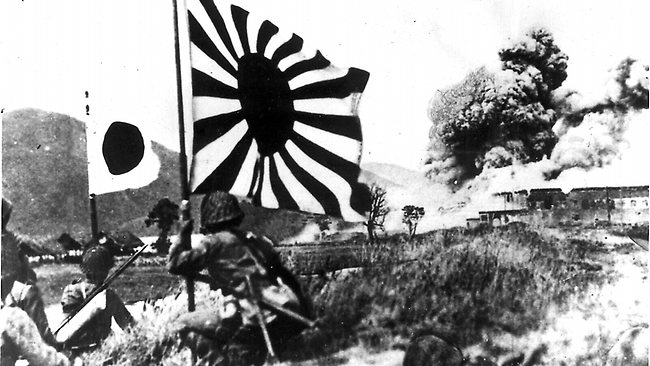
.jpg)
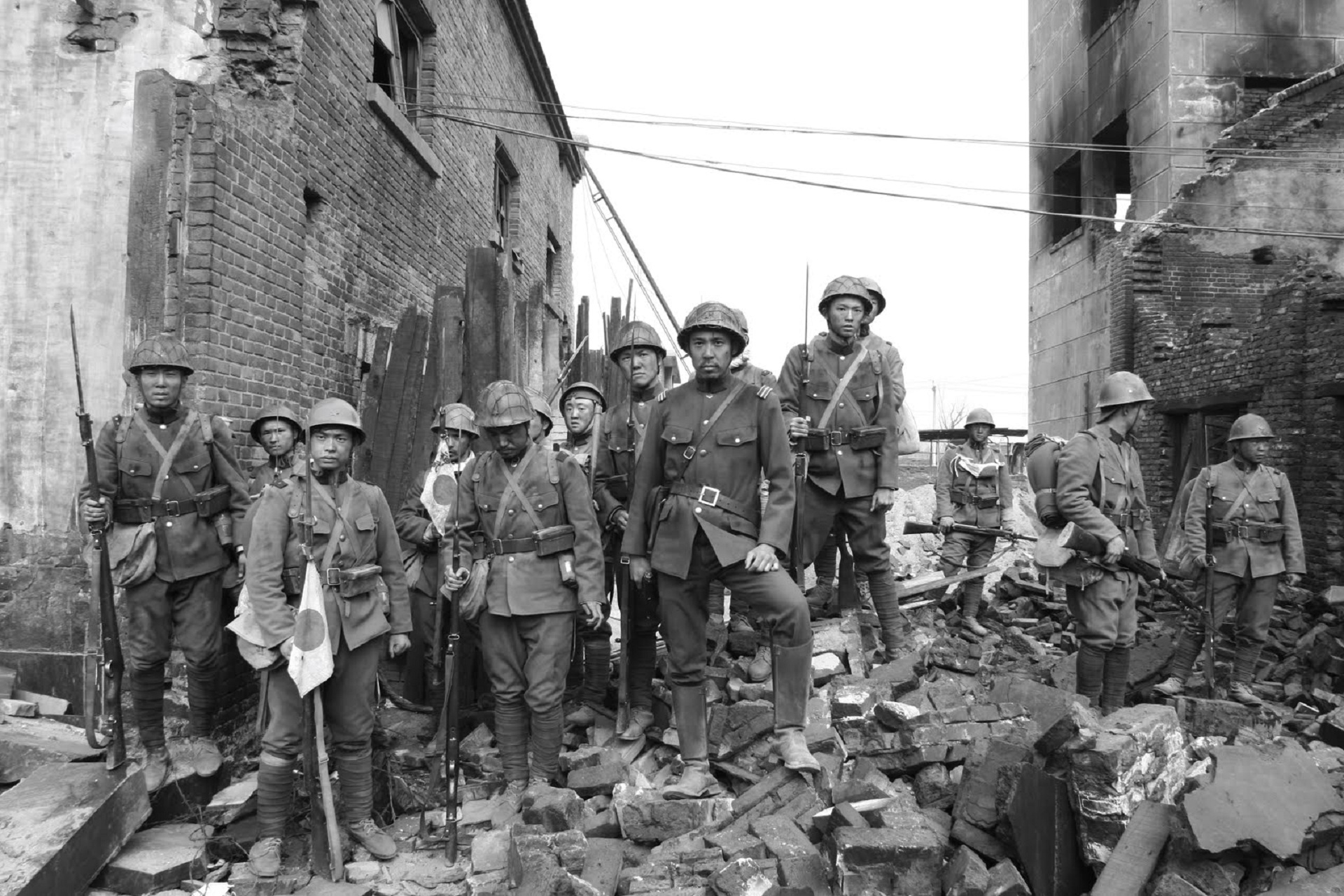
INCREDIBLE "Normandy Found"
WW2 RELIC German "Wehrmacht" MOTORCYCLE Zundapp FENDER with
LICENSE PLATE ! - ( Barn Find, Normandy )
Here is a great display relic for your war room ! I acquired
this from a UK collection and was recovered Normandy. The Fender still
has the Wehrmacht license plate intact with crisp digits. Don't let
this one get away ! By 28 July, the German defenses across the U.S.
front had largely collapsed under the full weight of VII and VIII Corps'
advance, and resistance was disorganised and patchy.VIII Corps' 4th
Armored Division—entering combat for the first time—captured
Coutances but met stiff opposition east of the town,and U.S. units penetrating
into the depth of the German positions were variously counterattacked
by elements of the 2nd SS Panzer, 17th SS Panzergrenadier, and 353rd
Infantry Divisions, all seeking to escape entrapment.A desperate counterattack
was mounted against the 2nd Armored Division by German remnants, but
this was a disaster and the Germans abandoned their vehicles and fled
on foot. An exhausted and demoralized Bayerlein reported that his Panzer
Lehr Division was "finally annihilated", with its armor wiped
out, its personnel either casualties or missing, and all headquarters
records lost.
SOLD
%20(2).jpg)
%20(2).jpg)
.jpg)
.jpg)
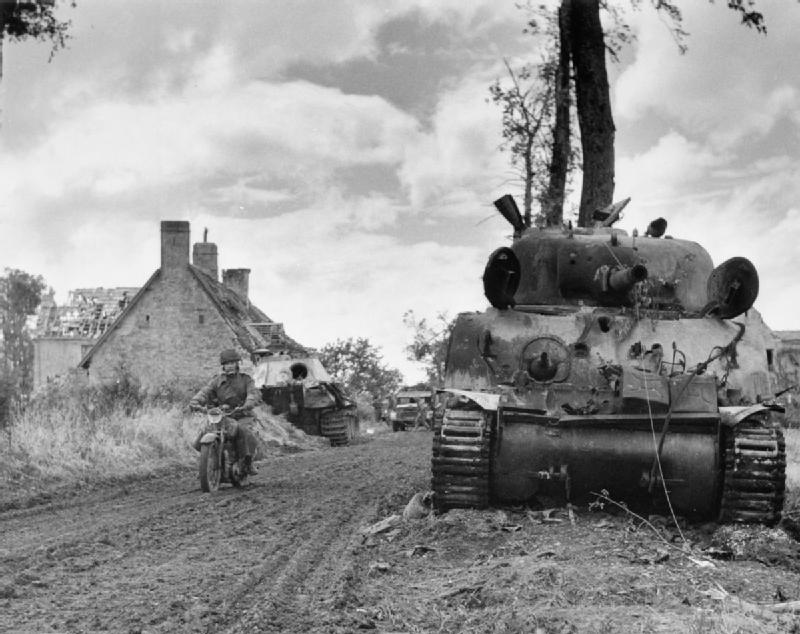
VERY RARE !! WW2 Battlefield Ground
Dug RELIC " Romanian 3rd Army HELMET SHELL ! ( Recovered "STALINGRAD"
Battlefield Eastern Front )
Here is a very hard to find and near impossible to find as a battlefield
relic Romanian Helmet shell from Stalingrad ! The helmet is the distinctive
swoop bill and would be a compliment to all historical collections.
Two Romanian armies, the Third and the Fourth, were involved in the
Battle of Stalingrad, helping to protect the northern and southern flanks
respectively of the German 6th Army as it tried to conquer the city
of Stalingrad, defended by the Soviet Red Army in mid to late 1942.
Overpowered and poorly equipped, these forces were unable to stop the
Soviet November offensive which punched through both flanks and left
the 6th Army encircled in Stalingrad. The Romanians suffered enormous
losses, which effectively ended their offensive capability on the Eastern
Front for the remainder of the war. On 19 November at 0530, in the sector
of the Third Romanian Army, artillery barrages battered the entire front
line, while blizzards, snow fall, and -20 degrees Celsius made close
air support impossible. The Soviets assaulted the positions of the 14th
Infantry Division with the 5th Tank Army and the junction between the
13th Infantry Division and the 1st Cavalry Division with the 21st Army,
with a total of 338,631 men against three weak divisions. The 37mm and
47mm AT guns were useless against Soviet tanks, so the Romanian troops
had to use grenades, anti-tank mines and Molotov cocktails. In the first
hours, they managed to delay the advance and destroy some armor, but
later they had to retreat or be encircled. The Soviets also attacked
west of Tsaritsa Valley and at Raspopinskaya, but were repulsed. In
response to the situation that developed south of Kletskaya, the 48th
Armored Corps was ordered to move towards the Soviet main thrust and
shortly afterwards, the 22nd Panzer Division was redirected to the northwest
towards Bolsoy and, reaching Petshany, it engaged Soviet armor. By evening,
the 1st Romanian Armored Division reached Sirkovsky, making preparations
to attack Bolsoy the next day. In the first day of the offensive, the
Soviet forces succeeded in making two breaches in the defences of the
Third Romanian Army: one in the center, 16–18 km wide and 15 km
deep and one in the right wing, between the Third Romanian Army and
the 6th German Army, 10–12 km wide and 35–40 km deep.
SOLD
.jpg)
.jpg)
.jpg)
.jpg)
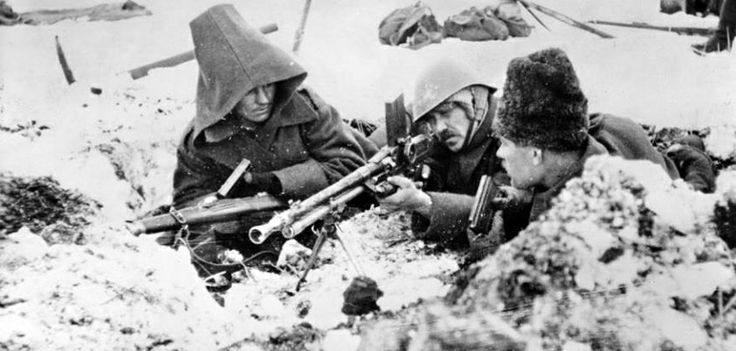
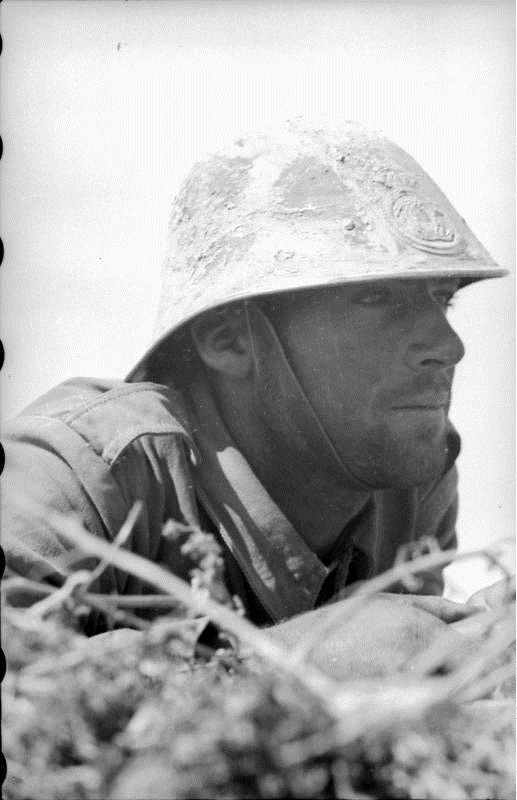
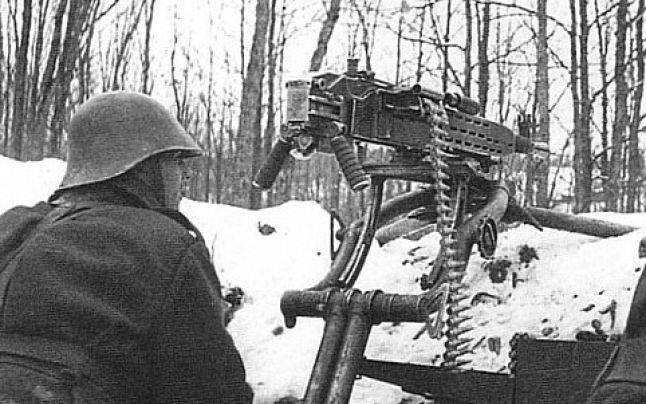
RARE WW2 German Battlefield Dug "LUGER
PISTOL HANDLE and TRIGGER RELIC" ! - ( Recovered " Fallschirmjager
" Positions MARKET GARDEN )
Here is great historic display relic from the "fighting" around
Eindhoven. At the 20th of September the British paratroopers at Arnhem
bridge surrendered to the Germans and the remainder of the British paratroopers
was encircled at Oosterbeek. Although there was also an Allied success
with the capture of Nijmegen bridge, this could not be exploited without
securing the supply lines in Brabant. At the 19th of September the Germans
moved in Panzerbrigade 107, which made a brief encounter at the bridge
just north of Eindhoven, called Son bridge. This brigade was put under
the command of Erich Walther.Panzerbrigade of Walther’s combat
command directed an attacked against Veghel’s bridge and managed
to cut of the supply corridor towards Nijmegen on the 22nd September.
It took the Allied forces the whole next day to clear out the Germans
from Veghel and restore the supply link. It was to no avail because
the next the supply route again briefly blocked by a German force south
of Veghel, consisting of Fallschirm-Jäger of FJR Von der Heydte
and a battalion ‘Jungwirth’. Not until September 26 was
the road cleared of German troops. Meanwhile the British forces north
of Nijmegen ran into stiff German resistance and the decision was taken
to evacuate the remaining British paratroops in beleaguered Oosterbeek.
Supply problems in Brabant prevented further offensive operations in
the Nijmegen area and this meant the end of Operation Market Garden,
only one week after it began. The British spend the rest of September
expanding the corridor, because although the Germans were cleared from
the roads the main supply route was still under German artillery fire.
Although the Germans had no clue about the extent of the Allied offensive,
they were aware of the direction of the attack. They reinforced their
forces near Eindhoven according to their capabilities in this stage
of the war. Units suggesting elite status like Fallschirm-Jäger
and Waffen-SS were scraped together and put under the command of Erich
Walther, a seasoned veteran with an impressive status of holding on
against overwhelming odds. The Germans were ready and waiting when the
British attacked in the morning of the September 17 1944. Walther’s
hastily formed forces were no match for the British forces but managed
to delay the advance of the relief force for the American and British
paratroops for a crucial 48 hours. Within these 48 hours the Germans
brought in reinforcements and turned the tables in Arnhem. The Germans
kept the pressure on the British supply lines in Brabant by bombarding
Eindhoven and constantly cutting the corridor, making further major
offensive operations beyond Eindhoven impossible. Arnhem was lost and
the main fighting shifted to the south.
SOLD
.jpg)
_(2).jpg)
.jpg)
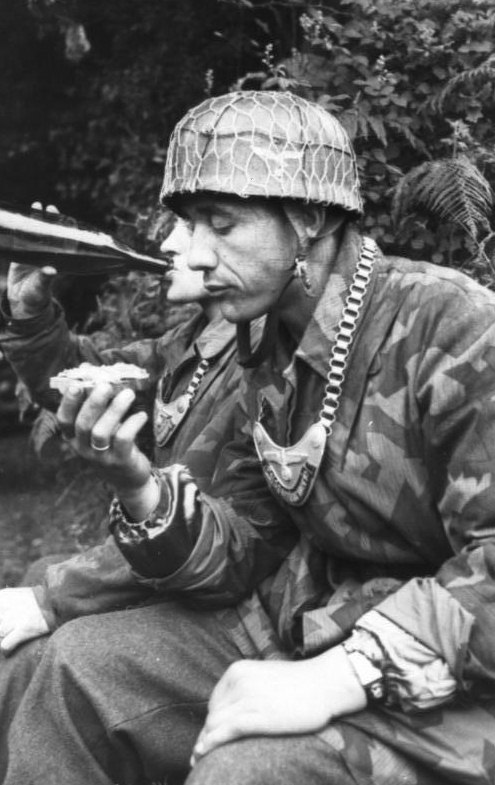
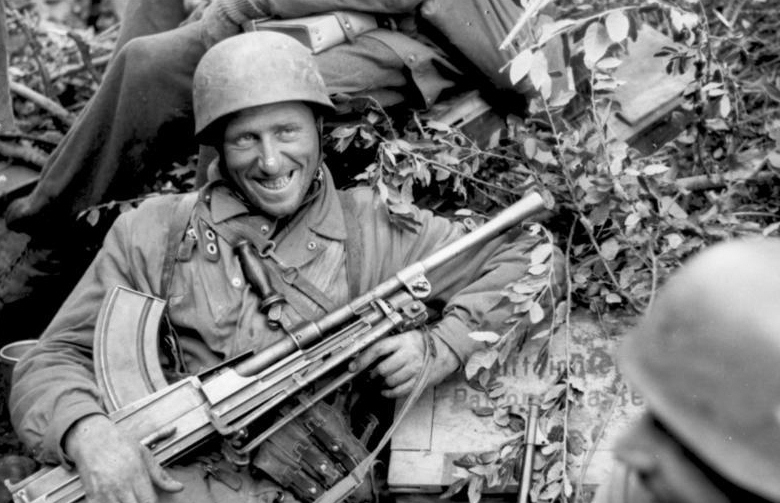
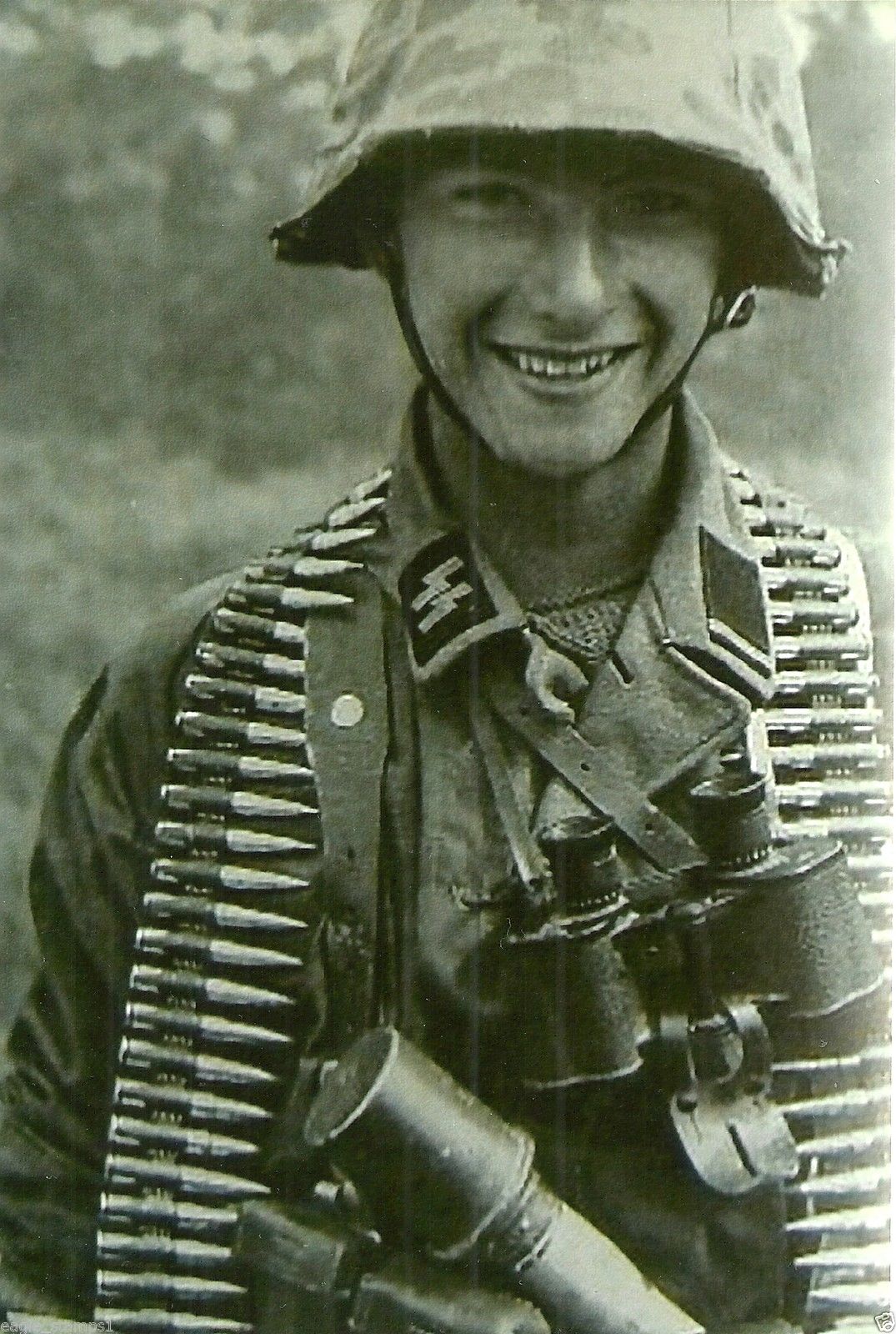
FANTASTIC FIND !! Ground Excavated Relic WWII German K98 Rifle
Grenade Mortar Launcher ! - ( Recovered Kurland Battlefield )
Here is a fantastic find ! A ground dug relic k98 rifle grenade launcher
attachment recovered on the Kurland Pocket Battlefield. At the start
of Operation Barbarossa in 1941, Courland, along with the rest of the
Baltic, was overrun by Army Group North headed by Field Marshal Wilhelm
Ritter von Leeb. In 1944, the Red Army lifted the siege of Leningrad
and re-conquered the Baltic area along with much of Ukraine and Belarus.
However, some 200,000 German troops held out in Courland. With their
backs to the Baltic Sea. they were trapped in what became known as the
Courland Pocket, blockaded by the Red Army and the Red Baltic Fleet.
Colonel-General Heinz Guderian, the Chief of the German General Staff,
insisted to Adolf Hitler that the troops in Courland should be evacuated
by sea and used for the defense of Germany. Hitler refused, and ordered
the Wehrmacht, Waffen-SS, Luftwaffe and Kriegsmarine forces in Courland
to continue the defence of the area. Hitler believed them necessary
to protect Kriegsmarine submarine bases along the Baltic coast. On January
15, 1945, Army Group Courland (Heeresgruppe Kurland) was formed under
Colonel-General Dr. Lothar Rendulic The blockade by elements of the
Leningrad Front remained until May 8, 1945, when the Army Group Courland,
then under its last commander, Colonel-General Carl Hilpert, surrendered
to Marshal Leonid Govorov, the commander of the Leningrad Front (reinforced
by elements of the 2nd Baltic Front) on the Courland perimeter. At this
time the group consisted of the remnants of some 31 divisions. After
May 9, 1945, approximately 203,000 troops of Army Group Courland began
moving to Soviet prison camps in the East. The majority of them never
returned to Germany.
SOLD
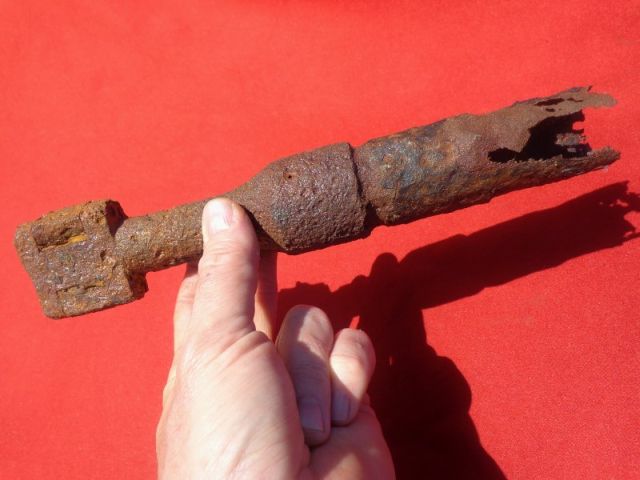
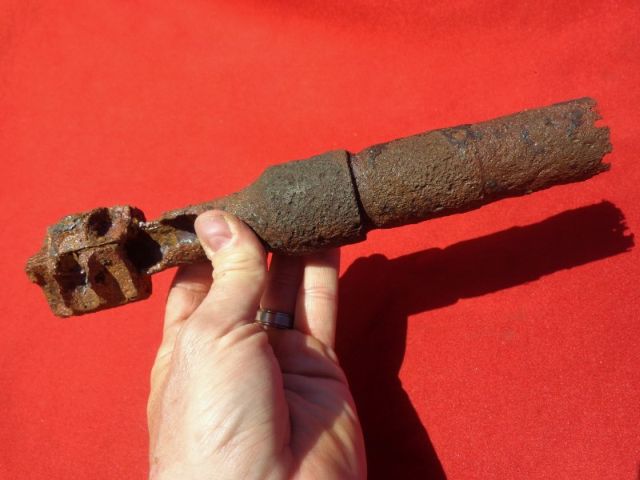
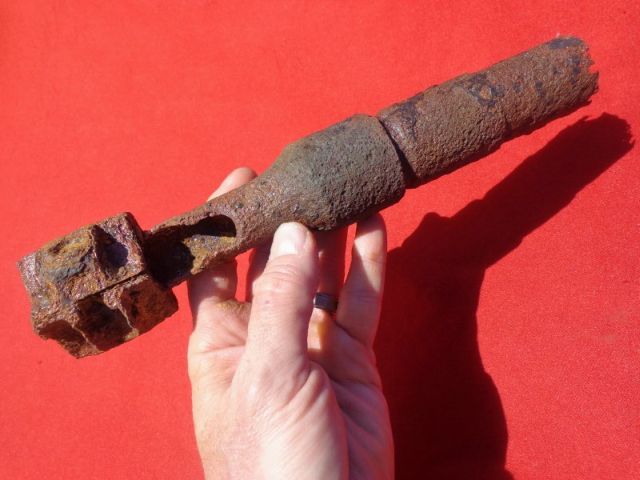
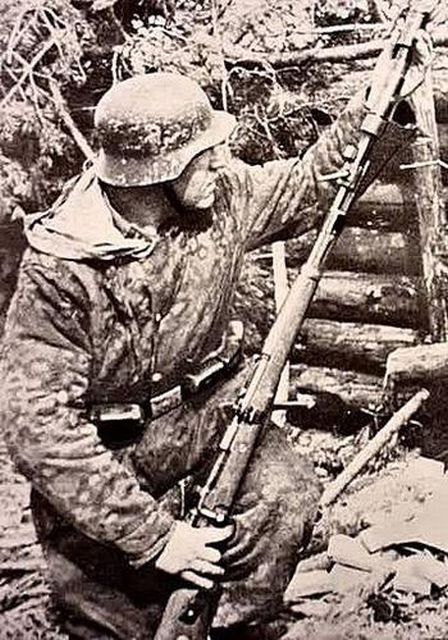
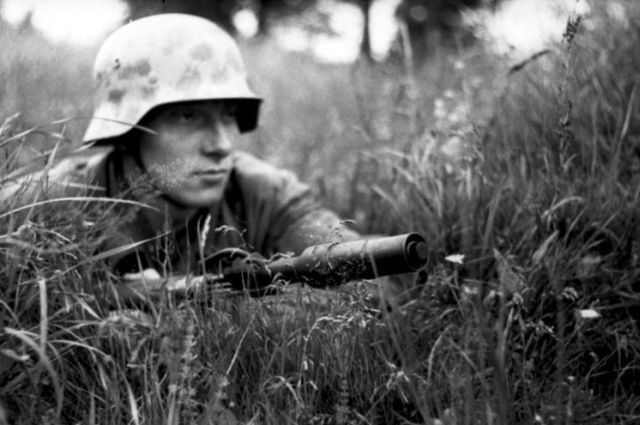
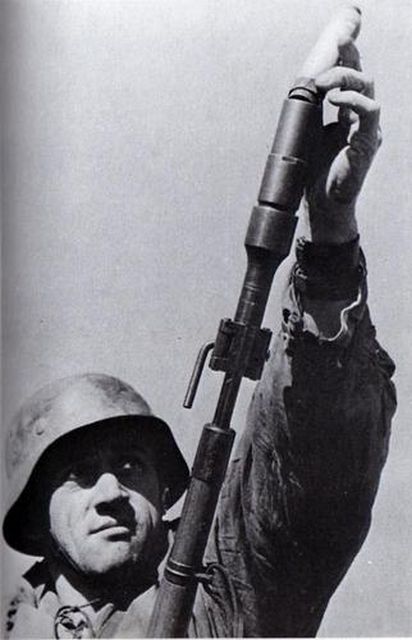
RARE WWII Ground Dug "Battlefield"
RELIC German KRIEGSMARINE or WHERMACHT MOTORCYCLE " BMW Zundapp"
LICENSE PLATE !
( Recovered Baltic Courland Pocket )
Here is a rare to find and always collectible German Whermacht
or possibly Kriegsmarine Motorcycle License Plate with inspection stamp
still showing through the ground action. Recovered near remnants of
a BMW Zundapp. Kurland Pocket Battlefield area.At the start of Operation
Barbarossa in 1941, Courland, along with the rest of the Baltic, was
overrun by Army Group North headed by Field Marshal Wilhelm Ritter von
Leeb. In 1944, the Red Army lifted the siege of Leningrad and re-conquered
the Baltic area along with much of Ukraine and Belarus. However, some
200,000 German troops held out in Courland. With their backs to the
Baltic Sea. they were trapped in what became known as the Courland Pocket,
blockaded by the Red Army and the Red Baltic Fleet. Colonel-General
Heinz Guderian, the Chief of the German General Staff, insisted to Adolf
Hitler that the troops in Courland should be evacuated by sea and used
for the defense of Germany. Hitler refused, and ordered the Wehrmacht,
Waffen-SS, Luftwaffe and Kriegsmarine forces in Courland to continue
the defence of the area. Hitler believed them necessary to protect Kriegsmarine
submarine bases along the Baltic coast. On January 15, 1945, Army Group
Courland (Heeresgruppe Kurland) was formed under Colonel-General Dr.
Lothar Rendulic The blockade by elements of the Leningrad Front remained
until May 8, 1945, when the Army Group Courland, then under its last
commander, Colonel-General Carl Hilpert, surrendered to Marshal Leonid
Govorov, the commander of the Leningrad Front (reinforced by elements
of the 2nd Baltic Front) on the Courland perimeter. At this time the
group consisted of the remnants of some 31 divisions. After May 9, 1945,
approximately 203,000 troops of Army Group Courland began moving to
Soviet prison camps in the East. The majority of them never returned
to Germany.
SOLD
.jpg)
.jpg)
.jpg)
.jpg)
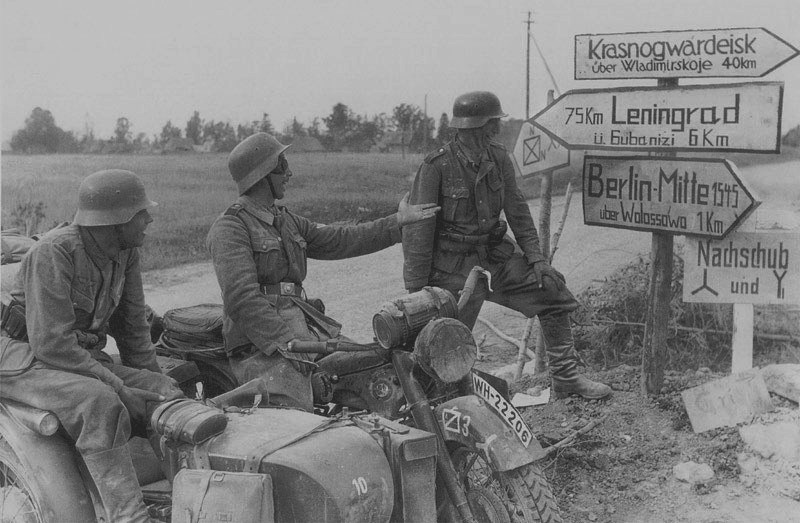
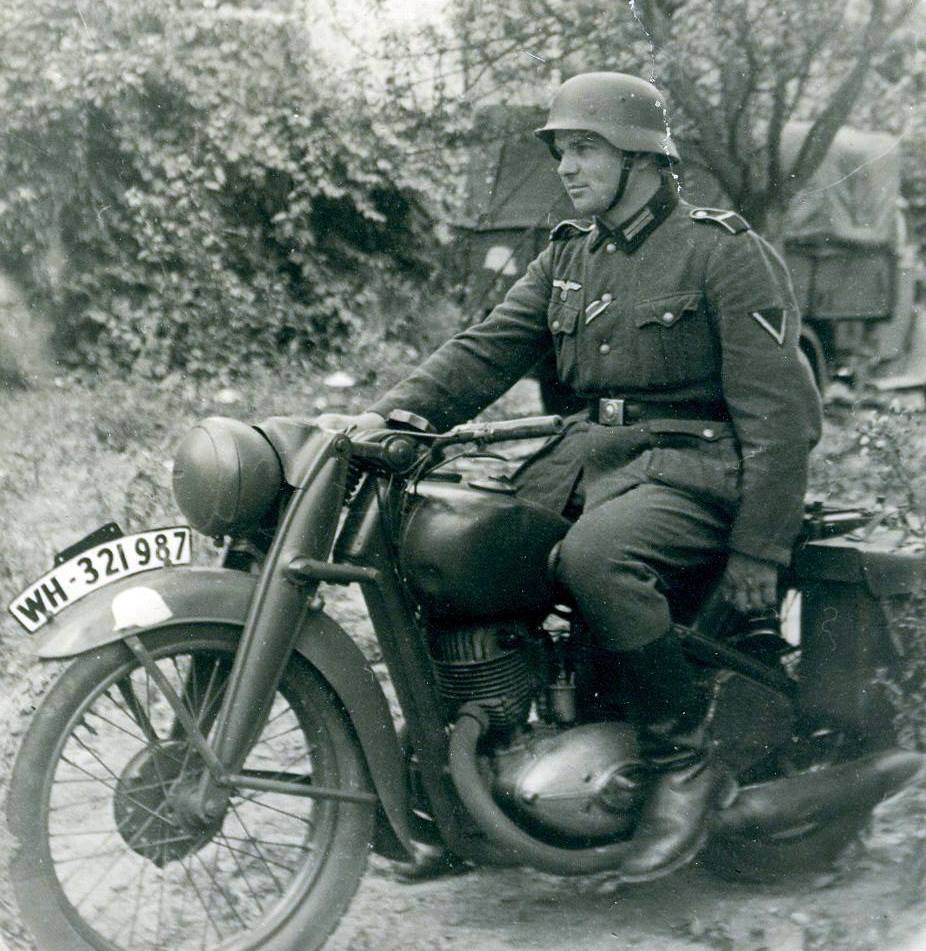
INCREDIBLE Ground Dug WWII German
Battle Damaged Waffen-SS Elite EM Maker Marked BUCKLE !
( Recovered retreat route BATTLE OF BERLIN area )
Here is a highly collectible and rare to find excavated German SS Buckle
that was ground dug in the region of the Battle of Berlin. German SS
Buckles in mint condition can fetch prices in the $700-$900 range with
excavated battle damaged examples even harder to find. This example
is maker marked as well. It is a spectacular personal item that I wish
could tell its story of those final days. It was definitely crimped
or struck at some point in battle. Starting on 16 January 1945, the
Red Army breached the German front as a result of the Vistula-Oder Offensive
and advanced westward as much as 40 kilometres a day, through East Prussia,
Lower Silesia, East Pomerania and Upper Silesia, temporarily halting
on a line 60 kilometres east of Berlin along the Oder River. During
the offensive, two Soviet fronts (army groups attacked Berlin from the
east and south, while a third overran German forces positioned north
of Berlin. The Battle in Berlin lasted from late 20 April 1945 until
the )morning of 2 May and was one of the bloodiest battles in history.
The first defensive preparations at the outskirts of Berlin were on
20 March, when the newly appointed commander of the Army Group Vistula,
General Gotthard Heinrici, correctly anticipated that the main Soviet
thrust would be made over the Oder River. Before the main battle in
Berlin commenced, the Soviets managed to encircle the city as a result
of the smaller battles of the Seelow Heights and Halbe. During 20 April
1945, the 1st Belorussian Front led by Marshal Geori Zhukov started
shelling Berlin's city centre, while Marshal Ivan Konevs 1st Ukrainian
Front had pushed in the north through the last formations of Army Group
Centre. The German defences were mainly led by Helmuth Weidling and
consisted of several depleted, badly equipped, and disorganised Wehrmacht
and Waffen-SS divisions, as well as many Volkssturm and Hitler Youth
members. Within the next days, the Soviets were rapidly advancing through
the city and were reaching the city centre, conquering the Reichstag
on 30 April after fierce fighting.
SOLD
.jpg)
.jpg)
.jpg)
.jpg)

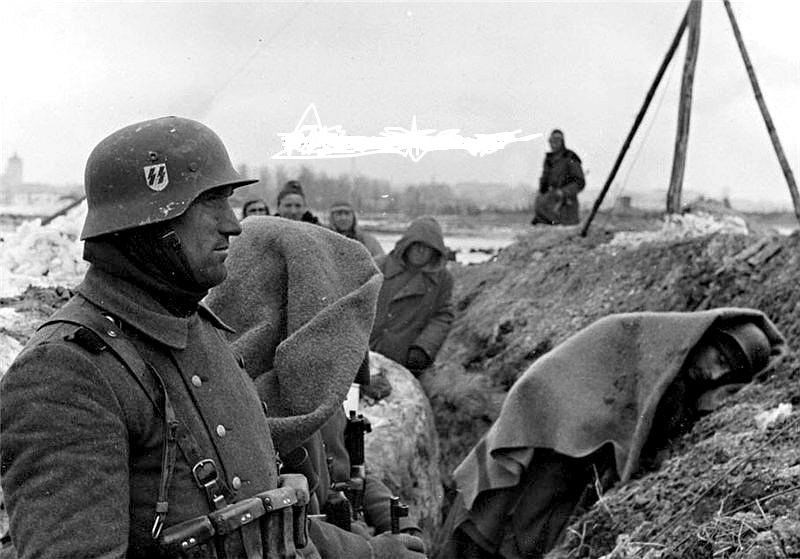
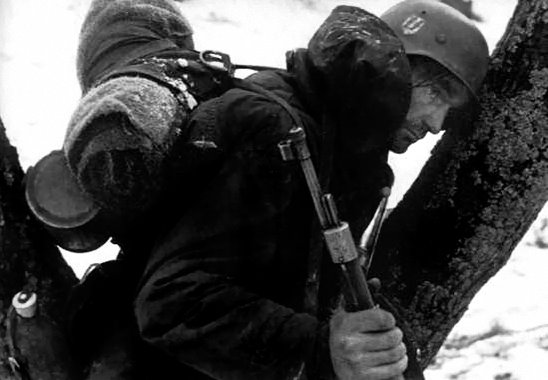
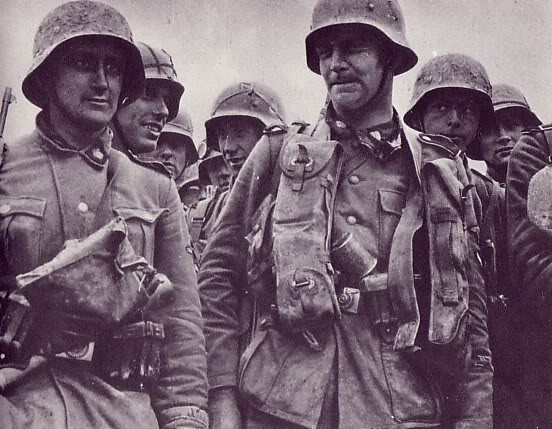
RARE Lot of German BATTLE DAMAGED
! " HJ HITLER YOUTH " Buckle and a VERY RARE " German
" MARKSMAN " Sniper Lanyard AWARD INSIGNIA ! - ( Recovered
BATTLE of BERLIN )
The forces available to General Weidling for the city's defence included
roughly 45,000 soldiers in several severely depleted German Army (Wehrmacht
Heer) and Armed SS (Waffen-SS) divisions.These divisions were supplemented
by the police force, boys in the compulsory Hitler Youth, and the Volkssturm
Many of the 40,000 elderly men of the Volkssturm had been in the army
as young men and some were veterans of World War I. Hitler appointed
SS Brigadeführer Wilhelm Mohnke the Battle Commander for the central
government district that included the Reich Chancellery and Führerbunker
He had over 2,000 men under his command. Weidling organised the defences
into eight sectors designated 'A' through to 'H' each one commanded
by a colonel or a general, but most had no combat experience.[To the
west of the city was the 20th Infantry Division. To the north of the
city was the 9th Parachute Division To the north-east of the city was
the Panzer Division Müncheberg. To the south-east of the city and
to the east of Tempelhof Airport was the 11th SS Panzergrenadier Division
Nordland The reserve, 18th Panzergrenadier Division, was in Berlin's
central district. On 23 April, Berzarin's 5th Shock Army and Katukov's
1st Guards Tank Army assaulted Berlin from the south east and, after
overcoming a counterattack by the German LVI Panzer Corps, reached the
Berlin S-Bahn ring railway on the north side of the Teltow Canal by
the evening of 24 April. During the same period, of all the German forces
ordered to reinforce the inner defences of the city by Hitler, only
a small contingent of French SS volunteers under the command of SS Brigadeführer
Gustav Krukenberg arrived in Berlin. During 25 April, Krukenberg was
appointed as the commander of Defence Sector C, the sector under the
most pressure from the Soviet assault on the city.
"Battle Damaged" HITLER YOUTH BUCKLE - SOLD
" Battlefield Dug " SNIPER / MARKSMAN AWARD - SOLD
%20(2).jpg)
.jpg)

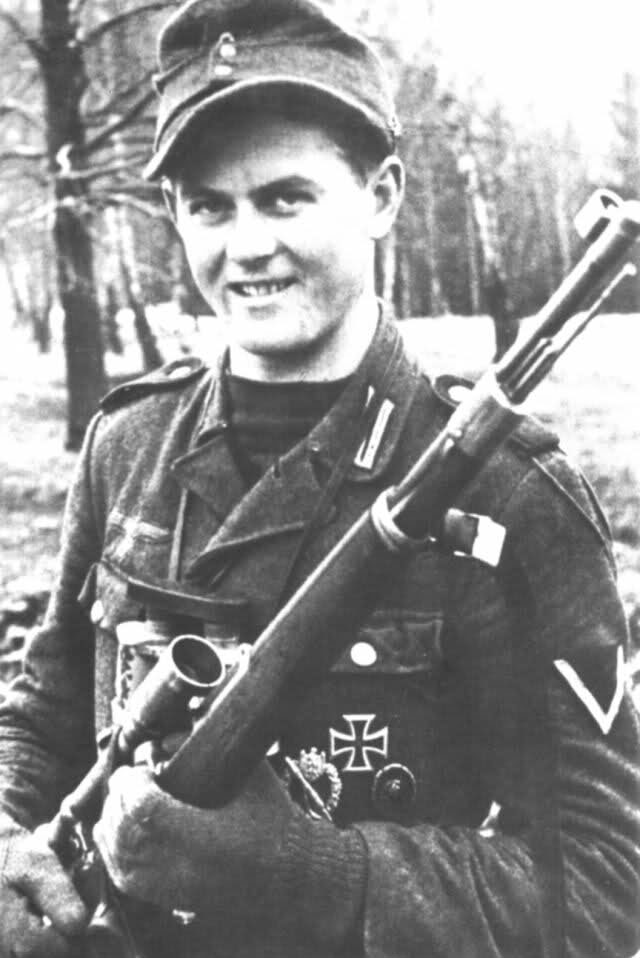
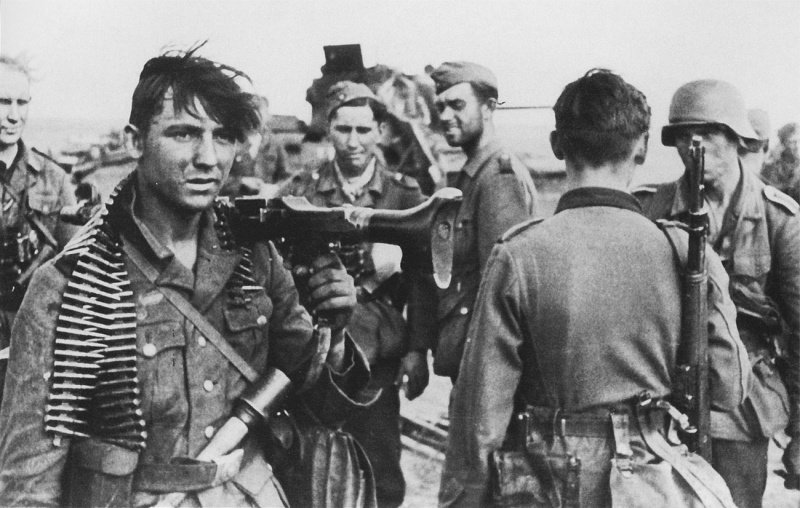
RARE WW2 Ground Dug Relic German
"Whermacht" 205th Infantry "Mushroom" Division "TRENCH
ART" Mess Kit Lid and RARE INSIGNIA Lot
( Recovered Surrender Site Army Group North Courland Battlefield )
Here is an incredible lot of soldiers trench art and his personal initials
and his Insignia of the 205th German Infantry Division that surrendered
along with Army Group North Courland Pocket. The 205th Infantry Division
(German: 205. Infanterie-Division) was a German division during the
Second World War.Initially formed as the 14th Militia Division (German:
14. Landwehr Division), the division was mobilized a few days before
the invasion of Poland in 1939, and remained on garrison duty in Germany
throughout that campaign. It was the only Landwehr unit mobilized during
1939-1945 (others that were mobilized were reorganized as 3rd-Wave-style
divisions), though the 97th Landwehr Division had been mobilized for
the 1938 Anschluss.It was renamed the 205th Infantry Division on January
1, 1940 and sent to France near the end of the western campaign. It
was demobilized in July, but mobilized again in early 1941, and served
as a garrison against potential any Allied invasion until early 1942.
It was then sent to the Russian Front, where it served with Army Group
Center in the "little Stalingrad" at Velikiye Luki over the
winter of 1942-1943. The division was transferred to Army Group North
in late 1943 and eventually trapped in the Courland Pocket, where it
surrendered to the Soviets in 1945.
SOLD
.jpg)
.jpg)
.jpg)
.jpg)
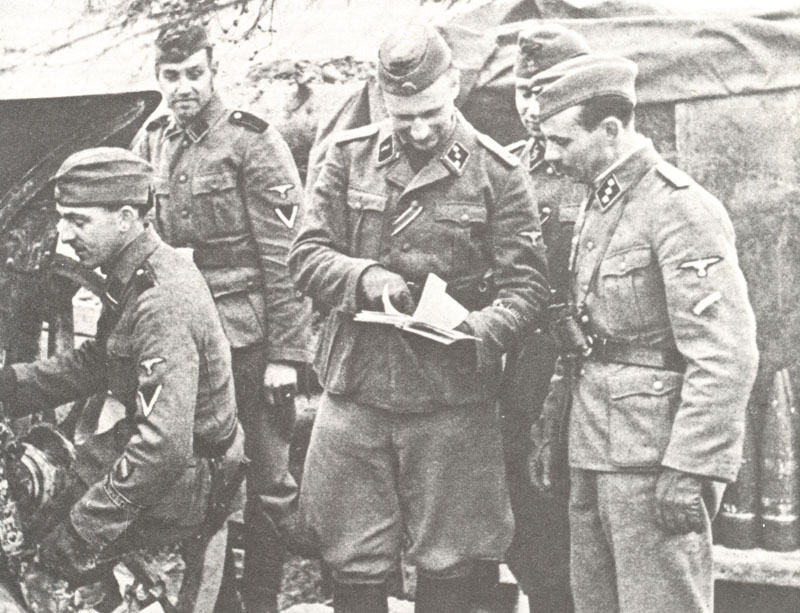
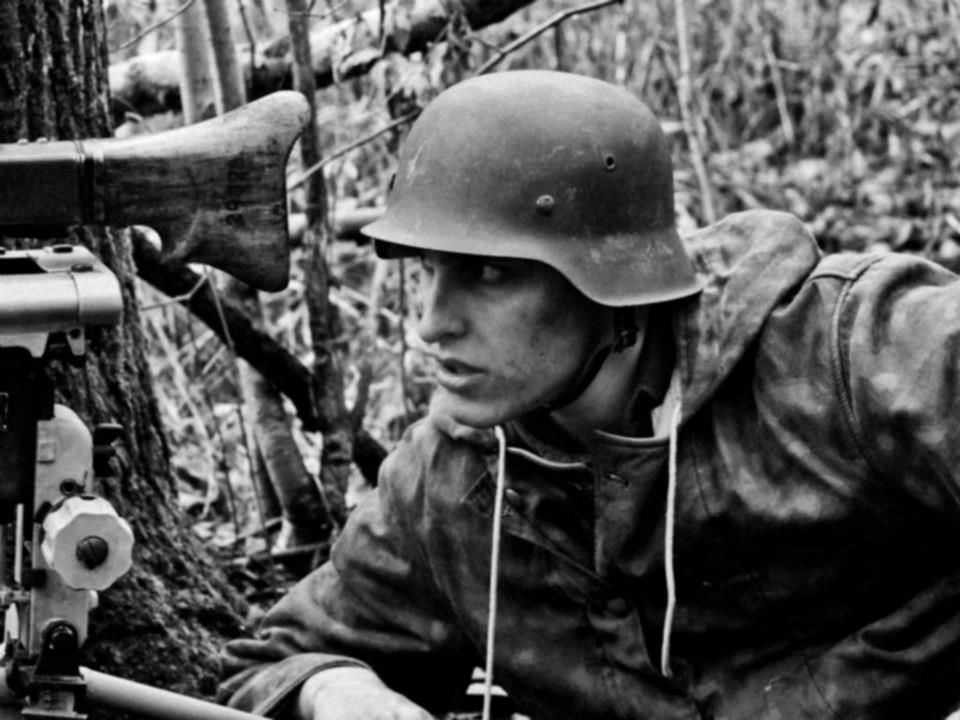
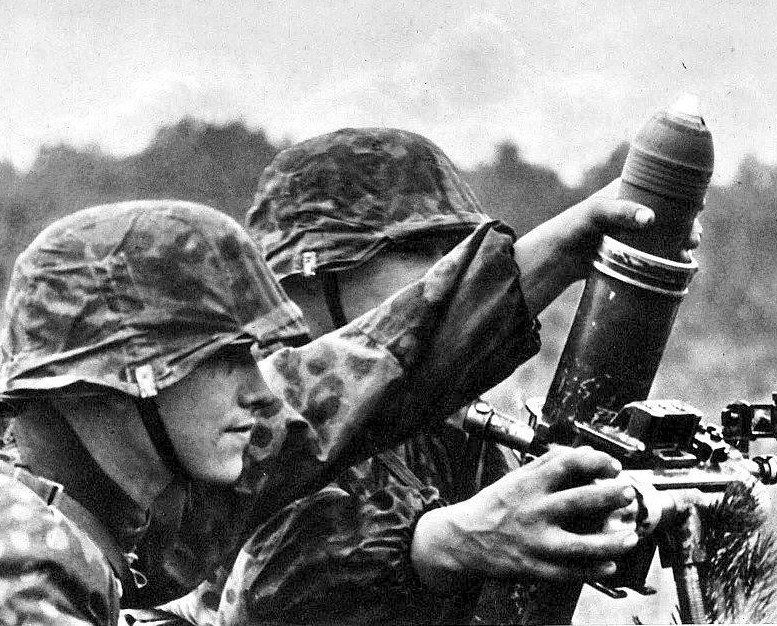
HISTORIC Relic WWII GERMAN "WHERMACHT"
Army MOTORCYCLE REAR PLATE with part of an inspection stamp visible
- IS 305719 - Unit stationed Hannover-Prussia Province ( Austrian Collection
)
Here is a neat relic German rear Motorcycle plate issued to a unit stationed
in the province of Hannover. Hannover was an important road junction,
railhead and production centre that was a target for strategic bombing
during World War II, including the Oil Campaign. Targets included the
AFA (Stöcken), the Deurag-Nerag refinery (Misburg), the Continental
plants (Vahrenwald and Limmer), the United light metal works (VLW) in
Ricklingen and Laatzen (today Hanover fairground. the Hanover/Limmer
rubber reclamation plant, the Hanomag factory (Linden) and the tank
factory M.N.H. Maschinenfabrik Niedersachsen (Badenstedt). Forced labourers
were used from the Hannover-Misburg subcamp of the Neuengamme concentration
camp. The residential areas were also targeted and more than 6,000 people
were killed in the Allied bombing raids. More than 90% of the city centre
was destroyed in 88 bombing raids. After the war, the Aegidienkirche
was not rebuilt and its ruins were kept as a war memorial.The Allied
ground advance into Germany reached Hanover in April 1945. The US 84th
Infantry Division captured the city on 10 April 1945.
SOLD
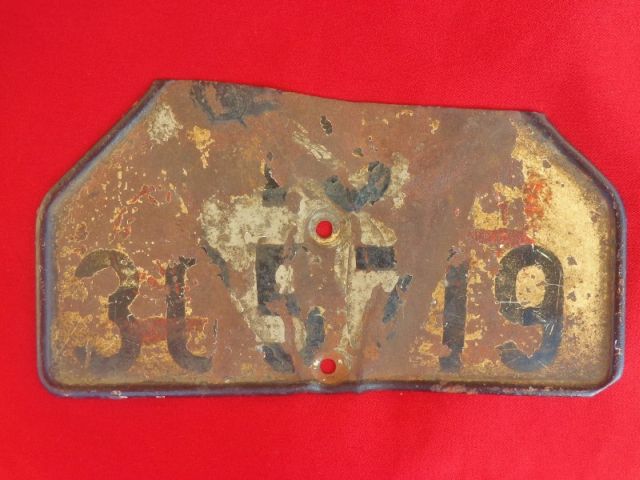
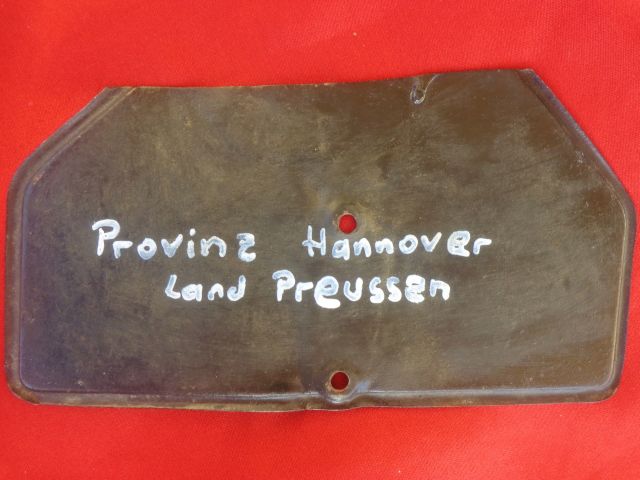
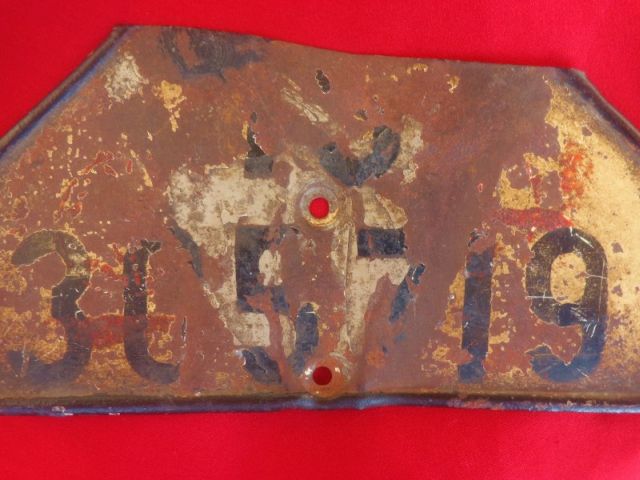
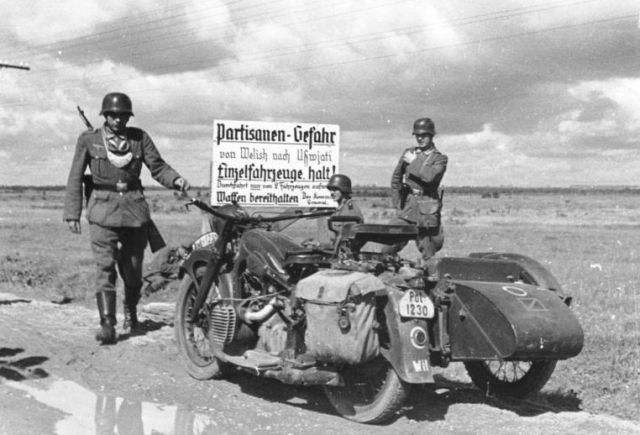
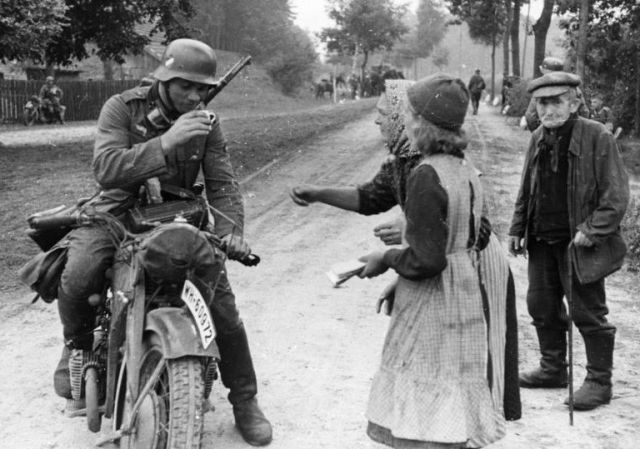
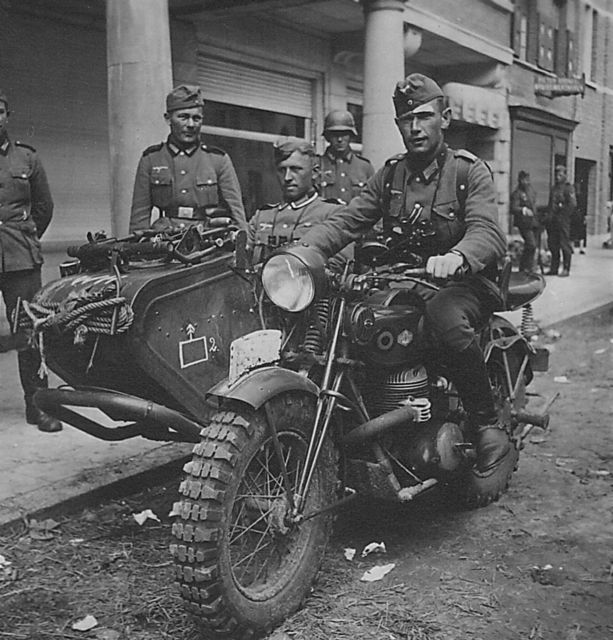
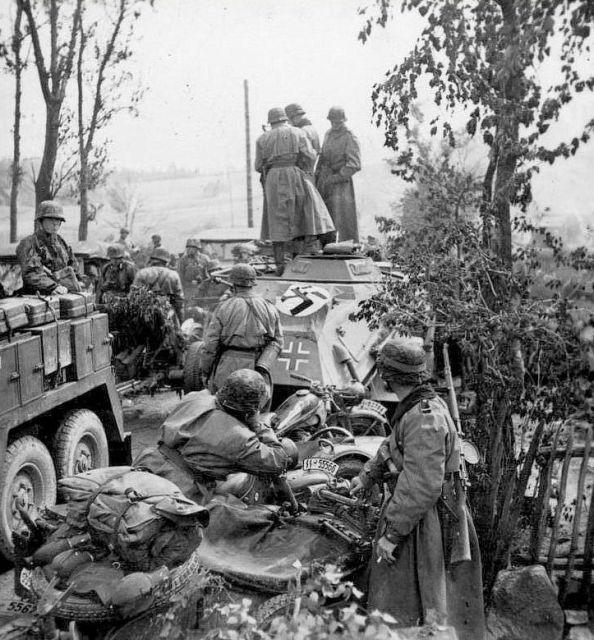
RARE "Battlefield Dug" RELIC German P38 Officers LUGER
- Incredible Condition with both Bakelite Grips intact ! - ( Recovered
BASTOGNE 12th SS Positions )
Here is a highly collectible ground dug relic German WW2 Walther p38
officers pistol Battlefield Dug Bastogne. Incredible condition with
both bakelite grips still intact ! Hitlerjugend was given a brief respite,
but received virtually no reinforcements or equipment. The division
was soon thrown back into battle, and took part in the fighting withdrawal
to the Franco-Belgian border. By September 1944, the division counted
less than 2,000 men, without armour or heavy equipment. On 6 September,
Kurt Meyer was captured by Belgian partisans. Meyer had removed his
SS uniform and was wearing the uniform of a regular German army officer.
In the confusion of the withdrawal, the division was unable to undertake
a rescue attempt. SS-Obersturmbannführer Hubert Meyer was placed
in command of the division.In November 1944, the division was pulled
out of the line and sent to Neinburg in Germany, where it was to be
reformed. The majority of the much-needed reinforcements were transferred
Luftwaffe and Kriegsmarine personnel, and the reformed division would
never match the elite status it had boasted in the spring of 1944. Late
in the month, Hubert Meyer was replaced by SS-Obersturmbannführer
Hugo Kraas, and the division was attached to SS-Oberstgruppenführer
Sepp Dietrich's 6.SS-Panzer-Armee, which was forming up for Operation
Wacht Am Rhein (the Second Battle of the Ardennes, popularly known as
the Battle of the Bulge), a large-scale offensive to recapture Antwerp
and halt the Allied advance.The operation opened on 16 December 1944.
Kampfgruppe Peiper from the Leibstandarte SS Adolf Hitler led the assault,
breaking through the enemy lines. The HJ, which was to follow the Kampfgruppe
and exploit the breakthrough, became bogged down in traffic jams caused
by the 12.Volksgrenadier-Division. When the division reached the front,
it was met with heavy resistance from American troops stationed on the
Elsenborn Ridge. Despite several intense efforts, the division could
not budge the American defenders. As a result, the division was ordered
to swing left and follow the advance line of the remainder of the Leibstandarte
SS Adolf Hitler. American defenders prevented the division from reaching
its objective, and after the destruction of Kampfgruppe Peiper, the
advance of Dietrich's army altogether. Near the end of the year, the
HJ was shifted south to take part in the efforts to capture Bastogne,
and saw heavy fighting around the city. By 18 January 1945, the HJ,
along with all the German forces, had been pushed back to its starting
positions. Don't let this rare opportunity get away to add historic
Bastogne SS soldier artifacts to your personal collection. Bastogne
Battlefield Recovered 12TH SS HITLER JUGEND Positions.
SOLD
%20(1).jpg)
.jpg)
.jpg)
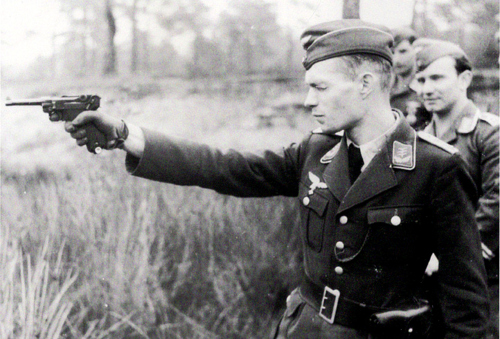

.jpg)
RARE Ground Dug RELIC German SS PANZER TANK "Commanders"
HEADPHONES / HEADSET - Excavated TANNENBERG LINE !
Here is an original relic German Tank Officer's Headset that was dug
at Tannenberg Line Battlefield on the Eastern Front. Very nice historic
relic ! The Battle of Tannenberg Line was a military engagement between
the German Army Detachment "Narwa" and the Soviet Leningrad
Front. They fought for the strategically important Narva Isthmus from
25 July to 10 August 1944. The battle was fought on the Eastern Front
during World War II. The strategic aim of the Soviet Estonian Operation
was to reoccupy Estonia as a favourable base for the invasions of Finland
and East Prussia. Several Western scholars refer to it as the Battle
of the European SS for the 24 volunteer infantry battalions from Denmark,
East Prussia, Flanders, Holland, Norway, and Wallonia within the Waffen-SS.
Roughly half of the infantry consisted of local Estonian conscripts
motivated to resist the looming Soviet re-occupation. The German force
of 22,250 men held off 136,830 Soviet troops. As the Soviet forces were
constantly reinforced, the casualties of the battle were 150,000–200,000
dead and wounded Soviet troops and 157–164 tanks.
SOLD
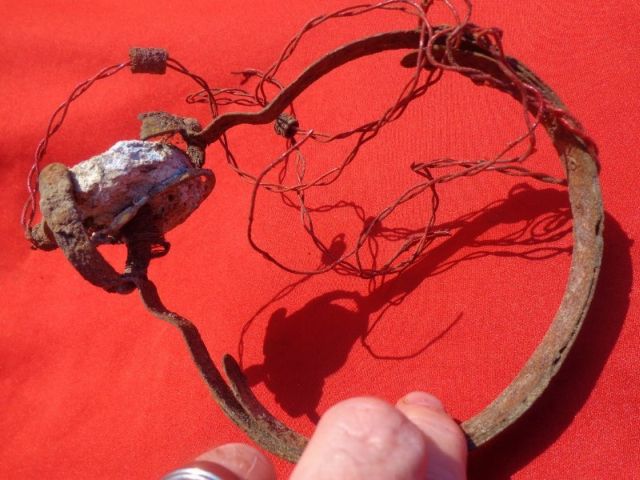
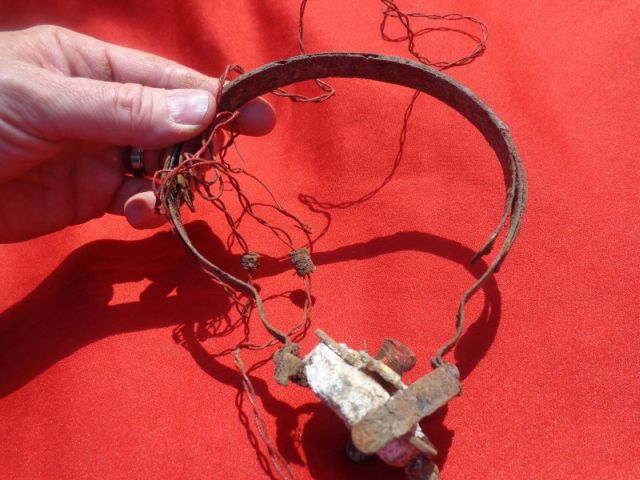
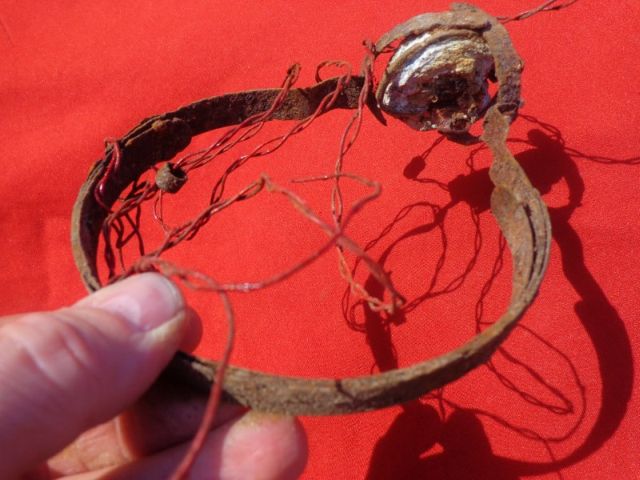
.jpg)
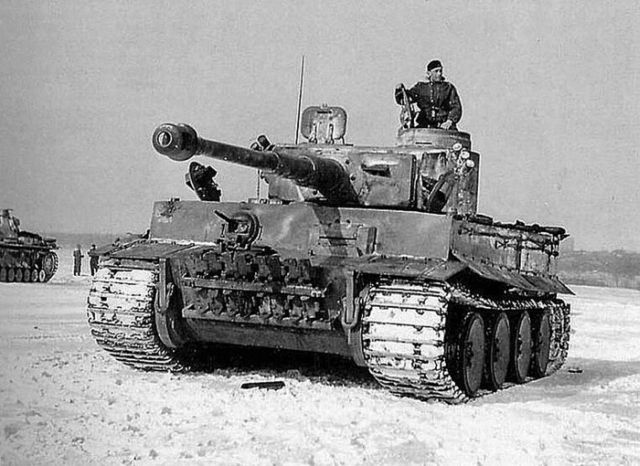
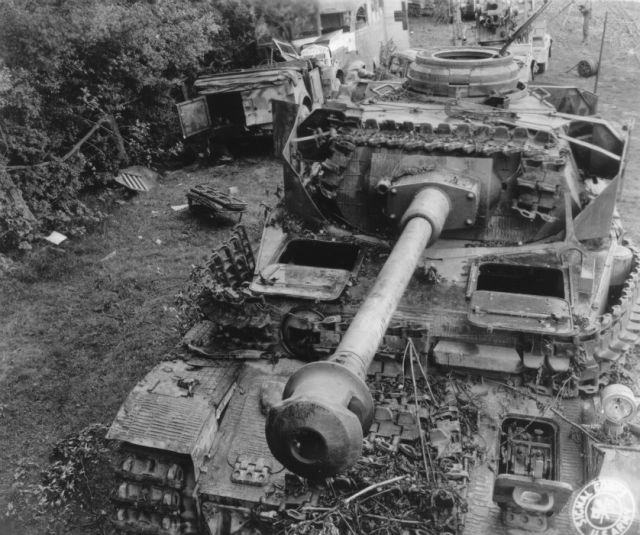
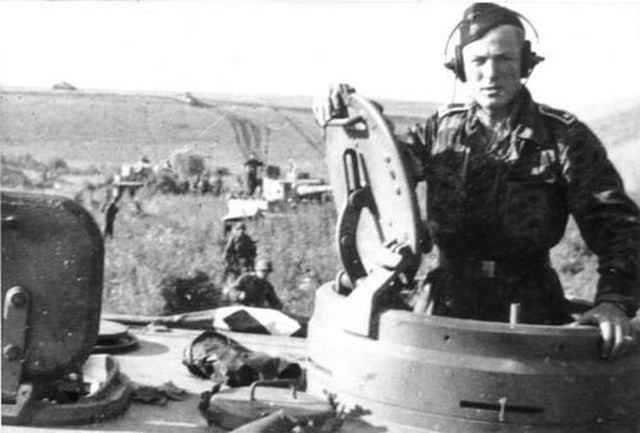
INCREDIBLE HISTORY ! Ground Dug WWII
German WHERMACHT 371st Infantry Division TROOP PLACEMENT ROAD SIGN -
( Excavated STALINGRAD-Kessel - Russian Front )
Here is a very cool relic that was excavated in condition as
shown at Stalingrad. The sign has the painted motif of the 371st Infantry
that was part of the legendary sixth army and was destroyed by Russian
troops in the brutal fighting around Stalingrad. The so-called spikes
Division was established as a division of 19 installation shaft on February
17, 1942, on the military training camp of Beverloo in Belgium by the
AOK 15 and assigned to the military district command VI headquartered
in Münster, Germany. The installation was completed on 1 June 1942.
The area became a southern Russia. The Division was formed in December
1942 the 6th Army (IV Corps) subordinate (previously 2. Pz.Armee) and
included as part of this in the battle of Stalingrad and completely
destroyed in January 1943.The Division was again raised on order of
the army high command 7 on February 17, 1943 in Brittany from convalescent
and replacement troops at Kampfgruppe strength, from June 9, 1943, again
in full Division strength. The Division was then entrusted with coastal
protection duties in Italy and in December 1943 again to the East, Croatia
moved to. From there, it went in the North Ukraine, Poland and Silesia.
The Division turned out to be the end of the war when German Brod /Moravia,
the present-day Havlickuv Brod, in Soviet captivity. About 265,000 German,
Romanian, Italian soldiers,the 369th (Croatian) Reinforced Infantry
Regiment, and other volunteer subsidiary troops including some 40,000
Soviet volunteers fighting for the Germans were surrounded. German strength
in the pocket was about 210,000 according to strength breakdowns of
the 20 field divisions (average size 9,000) and 100 battalion sized
units of the Sixth Army on 19 November 1942. Inside the pocket (German:
Kessel, literally "cauldron"), there were also around 10,000
Soviet civilians and several thousand Soviet soldiers the Germans had
taken captive during the battle. Not all of the 6th Army was trapped;
50,000 soldiers were brushed aside outside the pocket. These belonged
mostly to the other 2 divisions of the 6th Army between the Italian
and Romanian Armies: the 62nd and 298th Infantry Divisions. Of the 210,000
Germans, 10,000 remained to fight on, 105,000 surrendered, 35,000 left
by air and the remaining 60,000 died, committed suicide in the 11 weeks
after being encircled or were unable to surrender when the end was there.
SOLD
.jpg)
.jpg)
.jpg)
.jpg)

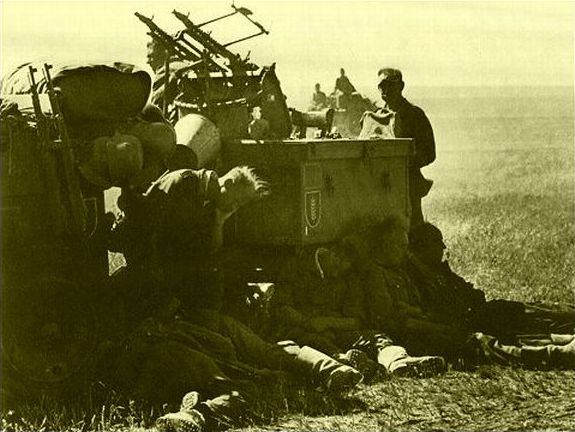
HIGHLY SOUGHT AFTER ! Original WW2
German "Whermacht" MOTORCYCLE LICENSE PLATE with INSPECTION
STAMP ! ( Berlin )
Here is a very cool WW2 German Motorcycle Plate with Inspection Stamp
in nice relic condition ! The battle in Berlin was an end phase of the
Battle of Berlin. While the Battle of Berlin encompassed the attack
by three Soviet Army Groups to capture not only Berlin but the territory
of Germany east of the River Elbe still under German control, the battle
in Berlin details the fighting and German capitulation that took place
within the city.The outcome of the battle to capture the capital of
the Third Reich was decided during the initial phases of the Battle
of Berlin that took place outside the city. As the Soviets invested
Berlin and the German forces placed to stop them were destroyed or forced
back, and the city's fate was sealed. Nevertheless, there was much heavy
fighting within the city as the Red Army fought its way, street by street,
into the centre.On 23 April 1945, the first Soviet ground forces started
to penetrate the outer suburbs of Berlin. By 27 April, Berlin was completely
cut off from the outside world. The battle in the city continued until
2 May 1945. On that date, the commander of the Berlin Defence Area,
General Helmuth Weidling, surrendered to the commander of the Soviet
8th Guards Army, Lieutenant-General Vasily Chuikov. Chuikov was a constituent
of Marshal Georgiy Zhukov's 1st Belorussian Front.
HOLD
.jpg)
.jpg)
.jpg)

.jpg)
.jpg)
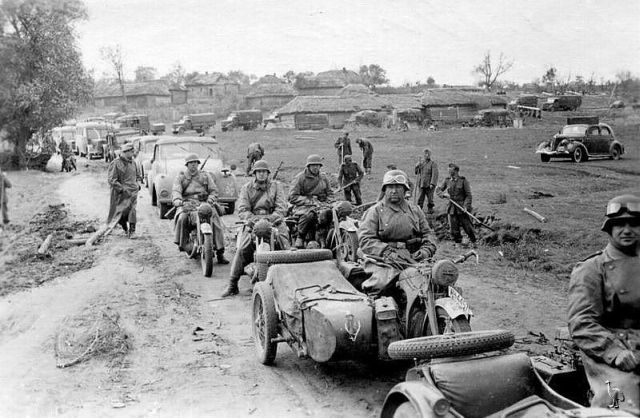
FANTASTIC HISTORIC BATTLEFIELD FIND ! Excavated WW2 German Whermacht
Army "SDKFZ" HALFTRACK ARMOURED VEHICLE License Plate !
( Recovered Stalingrad Battlefield ) "HUGE PLATE !" 13.5 X
12.5 inches
How often do you get a chance to own for
your collection a highly sought after WW2 German HALFTRACK license plate
relic that was recovered in Stalingrad. The Sd.Kfz. 251 (Sonderkraftfahrzeug
251) half-track was an armored fighting vehicle designed and first built
by the Hanomag company during World War II, and based on their earlier,
unarmored Sd.Kfz. 11 vehicle. The larger of the pair (the Sd.Kfz. 250
being the lighter one) of the fully armored wartime half-tracks of the
Wehrmacht, the Sd.Kfz. 251 was designed to transport the panzergrenadiers
of the German mechanized infantry corps into battle. Sd.Kfz. 251s were
the most widely produced German half-tracks of the war, with over 15,252
vehicles and variants produced by various manufacturers, and were commonly
referred to simply as "Hanomags" by both German and Allied
soldiers. The Battle of Stalingrad was a major battle of World War II
in which Nazi Germany and its allies fought the Soviet Union for control
of the city of Stalingrad (now Volgograd) in southwestern Russia. The
battle took place between 23 August 1942 and 2 February 1943. It was
among the largest on the Eastern Front and was marked by its brutality
and disregard for military and civilian casualties. It was amongst the
bloodiest battles in the history of warfare with the higher estimates
of combined casualties amounting to nearly two million deaths. In its
defeat, the crippling losses suffered by Germany's military proved to
be insurmountable for the war. The battle was a turning point in the
war, after which the German forces attained no further strategic victories
in the East.The German offensive to capture Stalingrad commenced in
late summer 1942, supported by intensive Luftwaffe bombing which reduced
much of the city to rubble. The German offensive eventually became bogged
down in house-to-house fighting; and despite controlling over 90% of
the city at times, the Wehrmacht was unable to dislodge the last Soviet
defenders clinging tenaciously to the west bank of the Volga River.
SOLD
.jpg)
.jpg)
.jpg)
.jpg)
.jpg)
.jpg)
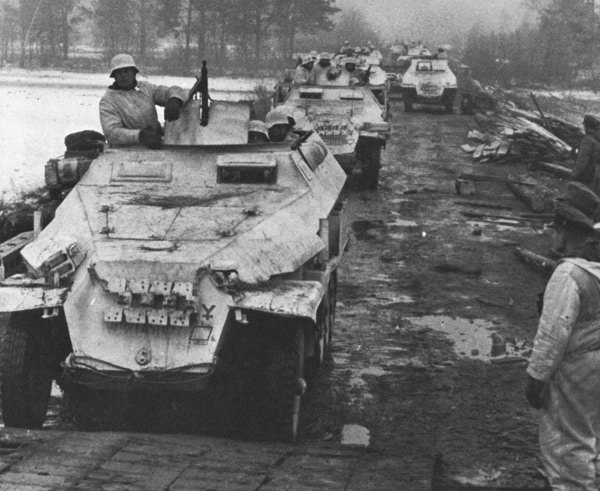
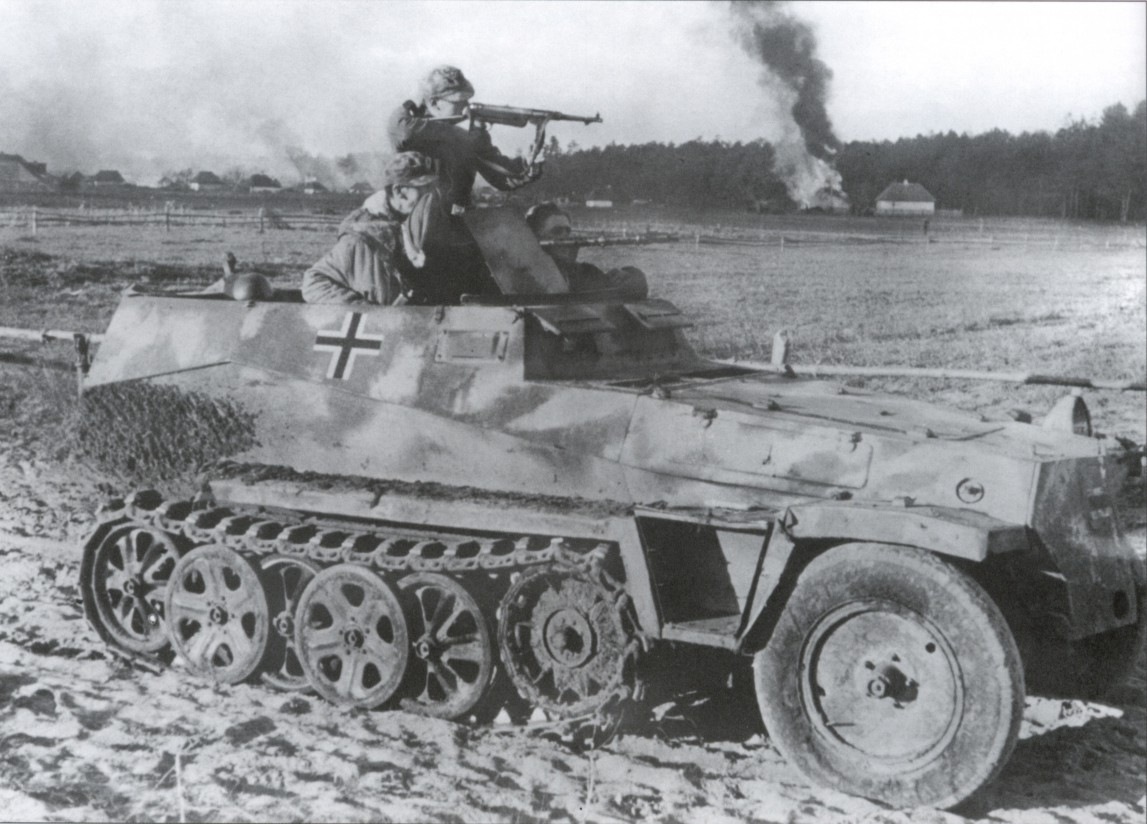
RARE HISTORIC RELIC WW2 German "LUFTWAFFE"
SD2 " Butterfly WINGS Casing " ( Excavated Luftwaffe Airbase,
Poland )
Here is an original ground dug relic WW2 German Luftwaffe SD2 or Butterfly
Bomb Casing ( 100% excavated Inert casing for historic display only
) that was dug in Poland and still retains original Luftwaffe feldgrau
paint . A Butterfly Bomb (or Sprengbombe Dickwandig 2 kg or SD2) was
a German 2 kilogram anti-personnel submunition used by the Luftwaffe
during the Second World War. It was so named because the thin cylindrical
metal outer shell which hinged open when the bomblet deployed gave it
the superficial appearance of a large butterfly. The design was very
distinctive and easy to recognise. SD2 bomblets were not dropped individually,
but were packed into containers holding between 6 and 108 submunitions
e.g. the AB 23 SD-2 and AB 250-3 submunitions dispensers. The SD2 submunitions
were released after the container was released from the aircraft and
had burst open. Because SD2s were always dropped in groups (never individually)
the discovery of one unexploded SD2 was a reliable indication that others
had been dropped nearby. This bomb type was one of the first cluster
bombs ever used in combat and it proved to be a highly effective weapon.
The bomb containers that carried the SD2 bomblets and released them
in the air were nicknamed the "Devil's Eggs" by Luftwaffe
air and ground crew.
SOLD
.jpg)
.jpg)
.jpg)
.jpg)




INCREDIBLE RELIC FROM STALINGRAD
! Ground Dug WWII Relic RUSSIAN ( Sniper Protection ) BODY ARMOR ( Complete
with both sections ! )
Here is a historic and extremely rare original WW2 relic Russian Body
Armor for upper and lower, in incredible ground dug condition and solid
that was recovered from the brutal city fighting around Stalingrad that
had the Russians using WWI protection by wearing sheets of iron to protect
them from German snipers. This armor is complete with all sections.
A great display relic ! The Battle of Stalingrad was a major battle
of World War II in which Nazi Germany and its allies fought the Soviet
Union for control of the city of Stalingrad (now Volgograd) in southwestern
Russia. The battle took place between 23 August 1942 and 2 February
1943. It was among the largest on the Eastern Front and was marked by
its brutality and disregard for military and civilian casualties. It
was amongst the bloodiest battles in the history of warfare with the
higher estimates of combined casualties amounting to nearly two million
deaths. In its defeat, the crippling losses suffered by Germany's military
proved to be insurmountable for the war. The battle was a turning point
in the war, after which the German forces attained no further strategic
victories in the East.The German offensive to capture Stalingrad commenced
in late summer 1942, supported by intensive Luftwaffe bombing which
reduced much of the city to rubble. The German offensive eventually
became bogged down in house-to-house fighting; and despite controlling
over 90% of the city at times, the Wehrmacht was unable to dislodge
the last Soviet defenders clinging tenaciously to the west bank of the
Volga River.
SOLD
.jpg)
.jpg)
.jpg)
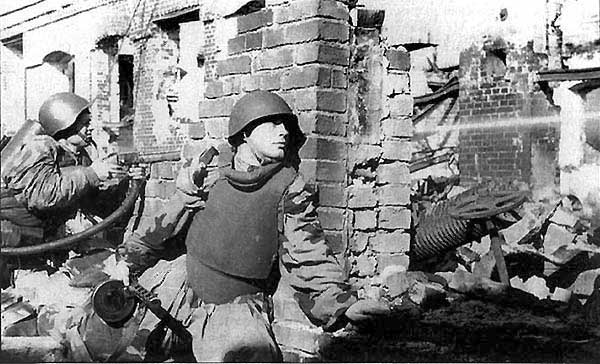
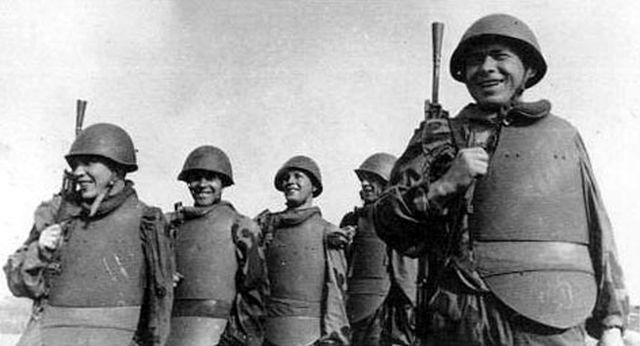
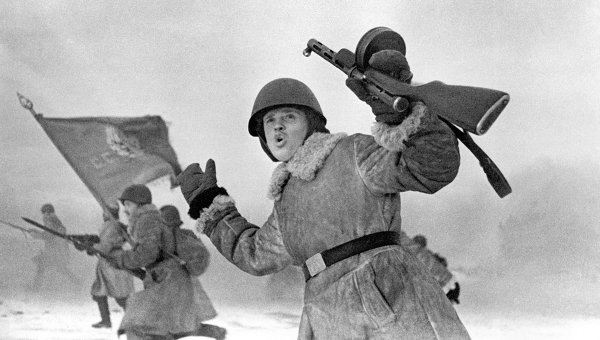
RARE TO FIND ! Battlefield "
SHRAPNEL STRUCK" Fascist ITALIAN Volunteer HELMET SHELL - ( Recovered
-GOTHIC LINE, Italy )
Here is an extremely rare to find Axis Italian WW2 helmet that is battle
damaged with an impact crack caused by shrapnel shock. After the nearly
concurrent breakthroughs at Cassino and Anzio in spring 1944, the 11
nations representing the Allies in Italy finally had a chance to trap
the Germans in a pincer movement and to realize some of Winston Churchills
strategic goals for the long, costly campaign against the Axis "underbelly".
This would have required U.S 5th Army under Lieutenant General Mark
Clark to commit most of his Anzio forces to the drive east from Cisterna,
and to execute the envelopment envisioned in the original planning for
the Anzio landing (i.e., flank the German 10th Army, and sever its northbound
line of retreat from Cassino). Instead, fearing that the 8th Army might
beat him to Rome, Clark diverted a large part of his Anzio force in
that direction in an attempt to ensure that he and the 5th Army would
have the honour of liberating the Eternal City.During the winter of
1944-1945, armed Italians were on both sides of the Gothic Line. On
the Allied side were four Italian groups of volunteers from the old
Italian army. These Italian volunteers were equipped and trained by
the British. On the Axis side were four RSI divisions. Three of the
RSI divisions, the 2nd Italian "Littorio" Infantry Division,
the 3rd Italian "San Marco" Marine Division, and the 4th Italian
"Monte Rosa Alpine Division were allocated to the LXXXXVII "Liguria"
Army under Graziani and were placed to guard the western flank of the
Gothic Line facing France. The fourth RSI division, the 1st Italian
"Italia" Infantry Division, was attached to the German 14th
Army in a sector of the Apennine Mountains thought least likely to be
attacked. On 26 December 1944, several sizeable RSI military units,
including elements of the 4th Italian "Monterosa Division"
Alpine Division and the 3rd Italian "San Marco" Marine Division,
participated in Operation Winter Storm. This was a combined German and
Italian offensive against the 92nd Infantry Division. The battle was
fought in the Apennines. While limited in scale, this was a successful
offensive and the RSI units did their part. In February 1945, the 92nd
Infantry Division again came up against RSI units. This time it was
Bersaglieri of the 1st Italian "Italia" Infantry Division.
The Italians successfully halted the US division's advance.
SOLD
.jpg)
.jpg)
.jpg)
.jpg)
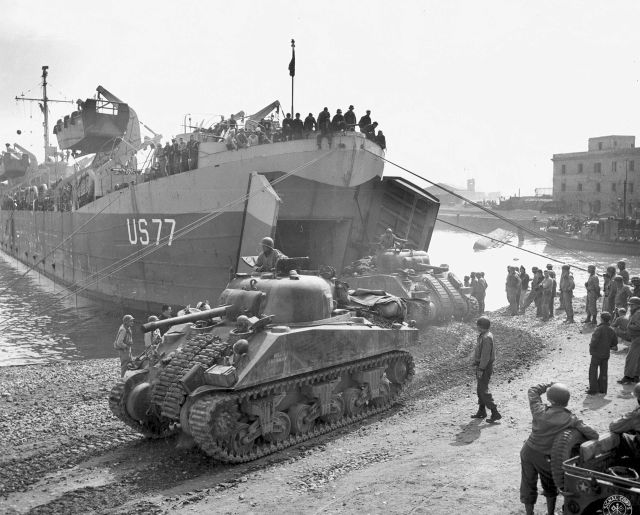
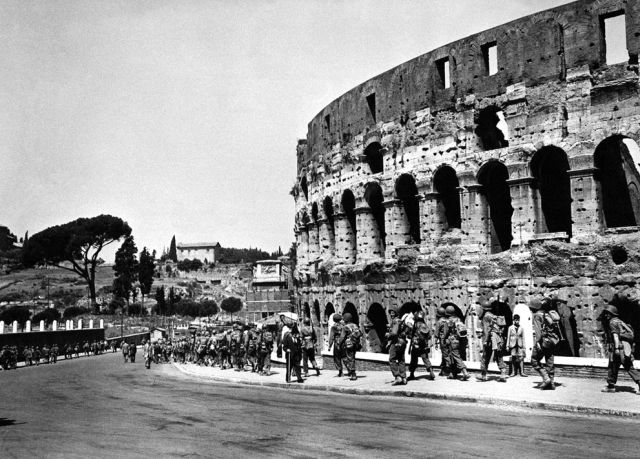
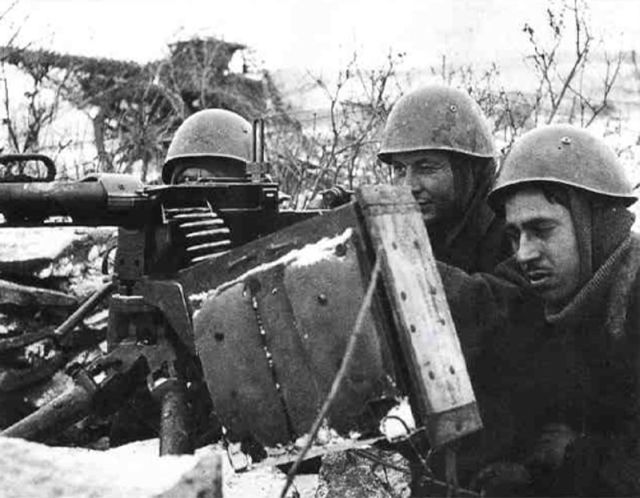
RARE Battlefield Find ! WW2 German RELIC Condition LUFTWAFFE DD
M40 HELMET ! - ( Recovered Courland Pocket )
Here is an incredible Battlefield found German Luftwaffe helmet with DD. The M40 helmet is in solid condition with both decals highly visible. At the start of Operation Barbarossa in 1941, Courland, along with the rest of the Baltic, was overrun by Army Group North headed by Field Marshal Wilhelm Ritter von Leeb. In 1944, the Red Army lifted the siege of Leningrad and re-conquered the Baltic area along with much of Ukraine and Belarus. However, some 200,000 German troops held out in Courland. With their backs to the Baltic Sea. they were trapped in what became known as the Courland Pocket, blockaded by the Red Army and the Red Baltic Fleet. Colonel-General Heinz Guderian, the Chief of the German General Staff, insisted to Adolf Hitler that the troops in Courland should be evacuated by sea and used for the defense of Germany. Hitler refused, and ordered the Wehrmacht, Waffen-SS, Luftwaffe and Kriegsmarine forces in Courland to continue the defence of the area. Hitler believed them necessary to protect Kriegsmarine submarine bases along the Baltic coast. On January 15, 1945, Army Group Courland (Heeresgruppe Kurland) was formed under Colonel-General Dr. Lothar Rendulic The blockade by elements of the Leningrad Front remained until May 8, 1945, when the Army Group Courland, then under its last commander, Colonel-General Carl Hilpert, surrendered to Marshal Leonid Govorov, the commander of the Leningrad Front (reinforced by elements of the 2nd Baltic Front) on the Courland perimeter. At this time the group consisted of the remnants of some 31 divisions. After May 9, 1945, approximately 203,000 troops of Army Group Courland began moving to Soviet prison camps in the East. The majority of them never returned to Germany.
SOLD
.jpg)
.jpg)
.jpg)
.jpg)
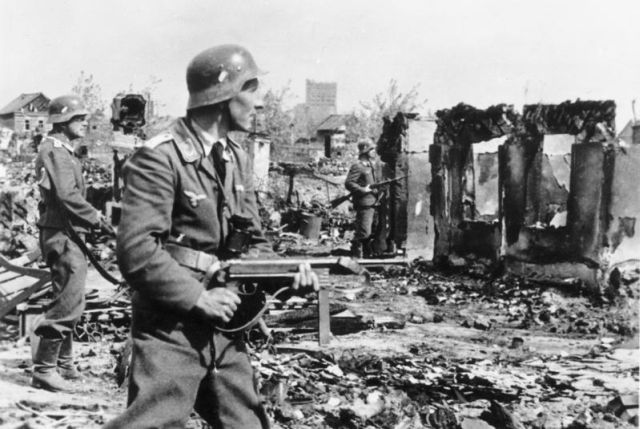
.jpg)
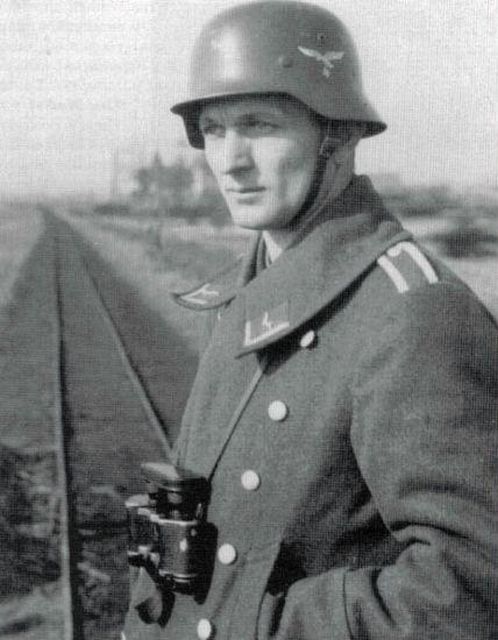
RARE WW2 Battlefield Dug Relic Large Size Model SD M42
" RAW EDGE " with metal liner German
WAFFEN-SS HELMET SHELL ! ( Recovered Courland Peninsula, Eastern
Front )
Here is an extremely nice condition relic battlefield excavated german ww2 "raw edge" model 1942 type helmet with clear SS runes SD helmet. The helmet is a large size and still retains the liner ring remnants. This is one of the better ones and almost stayed in my personal collection.The Courland Pocket referred to the Red Army's blockade or encirclement of Axis forces on the Courland Peninsula during the closing months of World War II. The Soviet commander was General Bagramyan (later Marshal Bagramyan). The pocket was created during the Red Army's Baltic Strategic Offensive Operation, when forces of the 1st Baltic Front reached the Baltic Sea near Memel during its lesser Memel Offensive Operation phases. This action isolated the German Army Group North (German: Heeresgruppe Nord) from the rest of the German forces between Tukums and Liepāja in Latvia. Renamed Army Group Courland (German: Heeresgruppe Kurland) on 25 January, the Army Group remained isolated until the end of the war. When they were ordered to surrender to the Soviet command on 8 May, they were in "blackout" and did not get the official order before 10 May, two days after the capitulation of Germany. It was one of the last German groups to surrender in Europe.
LAYAWAY
.jpg)
.jpg)
.jpg)
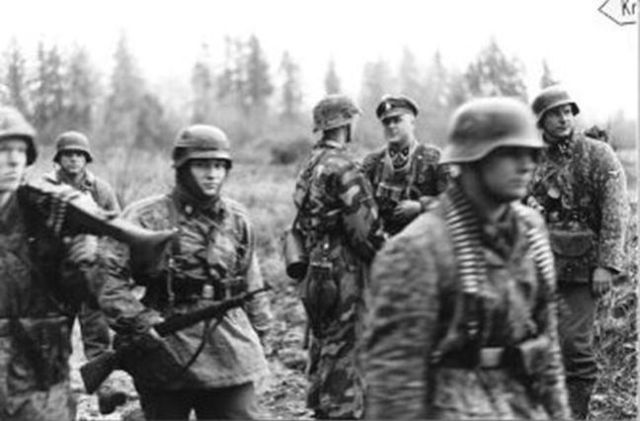
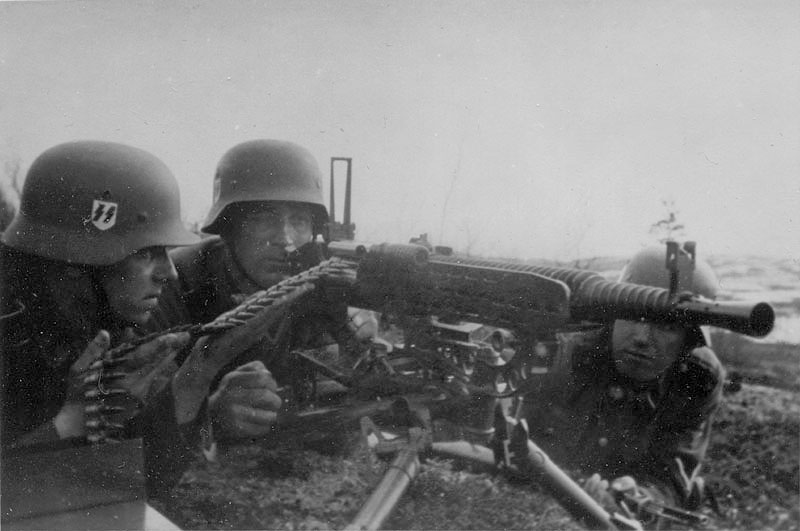
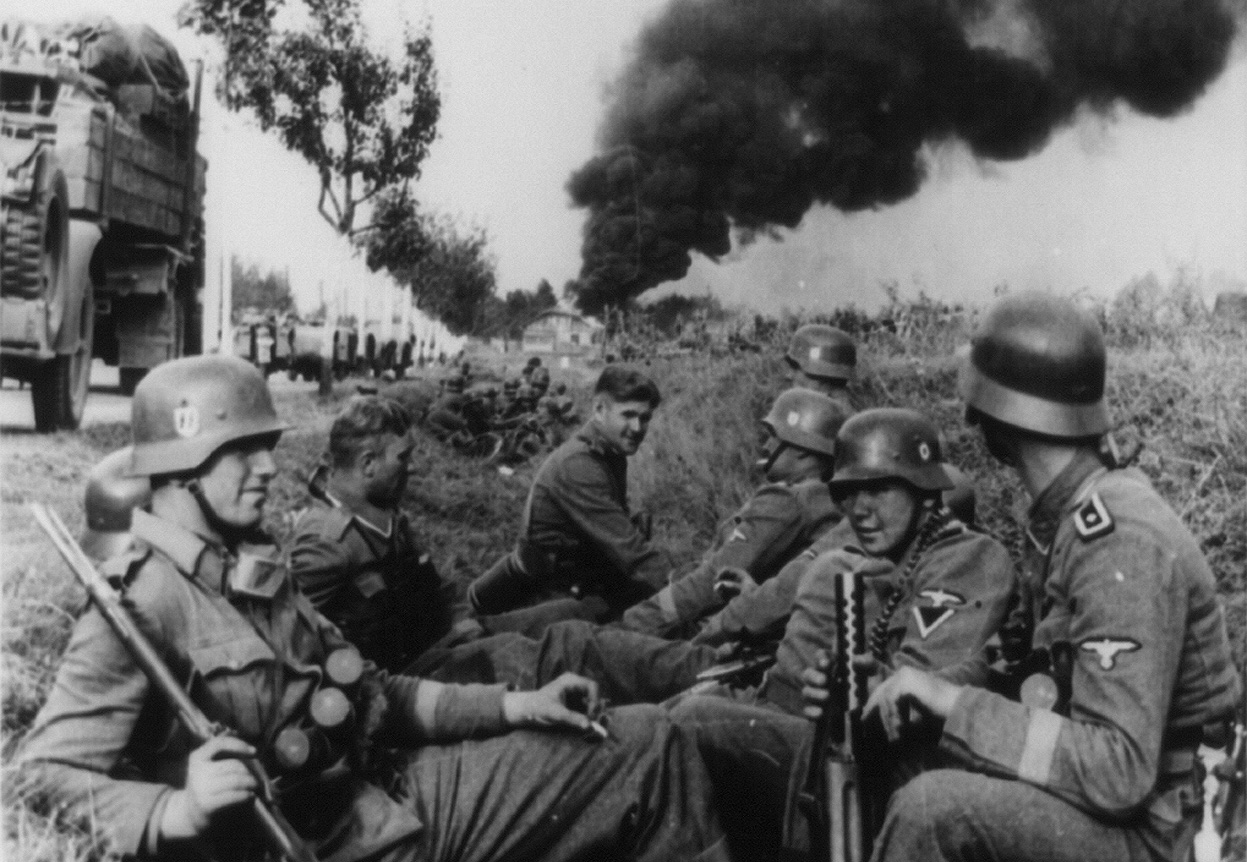
WOW ! Freshly swamp dug HISTORICAL FIND ! WW2 German SS PANZER CORPS M40 SD HELMET - ( Recovered Berlin Battlefields )
Here is the most affordable priced low original SS SD M40 large size helmet for the collector that does not want to pay the huge amounts that come with every condition grade that increases into the 10s of thousands for the pristine examples. I say give me the affordable examples always that come with the history of knowing "they were there" in the last hours on the battlefield fighting to the last ditch. This helmet was recently dug in a bog near Seelow heights. The runes became nicely visible beneath as the mud was worked away. The helmet was a crown rust through but is a learge size and solid around the base it displays incredible.... Before being encircled, the Ninth Army had already suffered heavy losses in the Battle of the Seelow Heights. It is estimated that at the start of the encirclement it had fewer than 1,000 guns and mortars, 79 tanks and probably a total of 150–200 combat-ready armoured fighting vehicles left. In all there were about 80,000 men in the pocket, the majority of whom were members of the Ninth Army consisting of the XI SS Panzer Corps, V SS Mountain Corps and the newly acquired V Corps, but there were also the Frankfurt Garrison The number of tanks reported included 36 tanks in XI SS Panzer Corps, including up to 14 King Tigers of the 502nd SS Heavy Panzer Battalion Air supply was attempted on April 25 and 26, but could not be carried out because the planes that had taken off could not find the drop point for supply, and no contact to the encircled army could be established.The pocket into which the Ninth Army had been pushed by troops of the 1st Belorussian Front and 1st Ukrainian Front was a region of lakes and forest in the Spree Forest south-east of Fürstenwalde.. The Soviets, having broken through and surrounded their primary objective of Berlin then turned to mopping up those forces pushed into the pocket. On the afternoon of April 25 the Soviet 3rd, 33rd, and 69th Armies as well as the 2nd Guards Cavalry Corps (which was a formation capable of infiltration through difficult terrain such as forests), following orders issued by Marshal Georgy Zhukov the commander of the 1st Belorussian Front, attacked the pocket from the north east. Konev knew that to break out to the west the Ninth Army would have to cross the Berlin–Dresden autobahn south of a chain of lakes starting at Teupitz and running north-east. On the same day as Zhukov's attack in the north-east, he sent the 3rd Guards Army to support the 28th Army which was ready to close the likely breakout route over the Berlin–Dresden autobahn.
SOLD
.jpg)
.jpg)
.jpg)
.jpg)
.jpg)
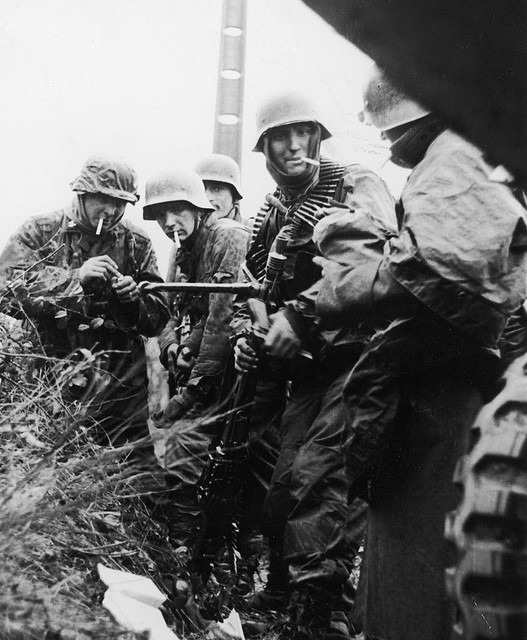
.jpg)

THIS HISTORIC MUSEUM RELIC is very hard to part with ! - Ground
Dug Relic BATTLE-DAMAGED "Heavy" Russian MAXIM MACHINE GUN
Barrel !
Bullet Riddled ! - ( Recovered STALINGRAD ! )
Incredible rare to find and Huge, Russian
Belt-Fed HEAVY MAXIM MACHINE GUN Water-cooled Barrel that was recovered
with "furious" battle damage. Machine Gun Battlefield Artifacts
are highly collectible in battle damaged condition. Russians and German
troops used the powerful Maxim Heavy MG.The Russian M1910 Maxim machine
gun was the standard military heavy machine gun through most of WWII.
The Russian Maxim was a water cooled belt fed heavy machine gun used
by both the Russian and Soviet armies. It was adopted in 1910 and was
a variant of Hiram Maxim’s Maxim gun chambered for the standard
Russian rifle ammunition. The M1910 was normally mounted on a cumbersome
wheeled mount with a bullet shield, although there were some rare light
tripod mounts that were made as well as various naval and aircrafts
mounts. With the heavy wheeled Sokolov mount, the weapon tipped the
scaled at 139 pounds, though without the mount it was considerably lighter.
Still, it was a heavy gun. It was recoil operated, and fired at 600
rounds per minute off of 250 round belts that were usually made of cloth,
or, more rarely, metal. The metal links were usually not preferred as
they were much harder on the internals of the gun and caused more wear
than the cloth belts. With a few simple tools it was possible to remove
the starting tab on one metal belt and then connect another belt together
to make a longer belt, however. A very reliable weapon, it was well
liked, but it did have many drawbacks. It was considerably heavier than
the German MG2, making it far less mobile, and did not have as fast
of a rate of fire as its counterpart either. Further, it lacked the
ability to quickly change barrels, something that is often needed in
heavy machine gun as the rate of fire can burn out barrels very quickly.
However, for what it lacked in refined features it made up for in brute
force. The gun could fire in longer bursts that many of its contemporaries
as the water contained in the tubular water jacket around the barrel
kept the barrel from burning up quicker than it would without it.
SOLD
.jpg)
.jpg)
.jpg)
.jpg)
.jpg)
.jpg)
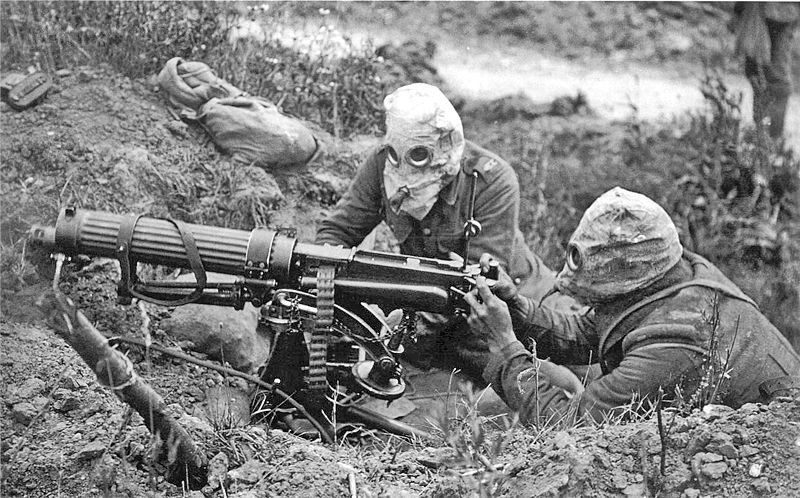
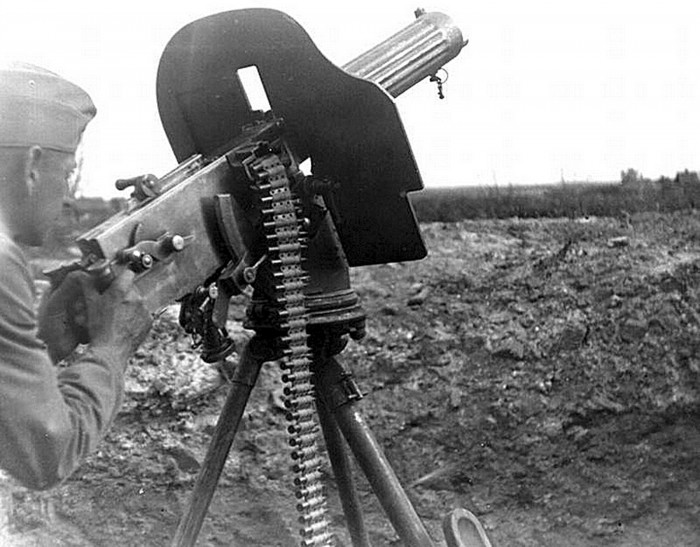
RARE Ground Dug Relic BATTLEFIELD DAMAGED German WAFFEN-SS - M35/SD - Lots of Original Paint ! ( Recovered Kurland Pocket, Eastern Front )
Here is a ground dug ww2 battlefield relic German Waffen-SS Helmet Shell from the Hewerdine Collection that was recovered at the surrender site of Army Group North. Army Group Courland (German: Heeresgruppe Kurland) was a German Army Group on the Eastern Front which was created from remnants of the Army Group North, isolated in the Courland Peninsula by the advancing Soviet Army forces during the 1944 Baltic Offensive of the Second World War. The army group remained isolated until the end of World War II in Europe. All units of the Army Group were ordered to surrender by the capitulated Wehrmacht command on 8 May 1945. At the time agreed for all German armed forces to end hostilities (see the German Instrument of Surrender, 1945), the Sixteenth and Eighteenth armies of Army Group Courland, commanded by General (of Infantry) Carl Hilpert, ended hostilities at 23:00 on 8 May 1945 surrendering to Leonid Govorov commander of the Leningrad Front. By the evening of 9 May 1945 189,000 German troops, including 42 officers in the rank of general, in the Courland Pocket had surrendered.
SOLD
.jpg)
.jpg)
.jpg)
.jpg)

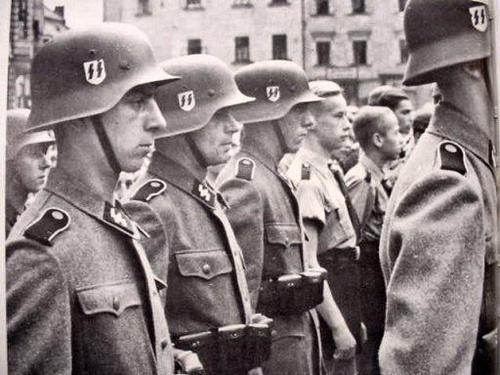
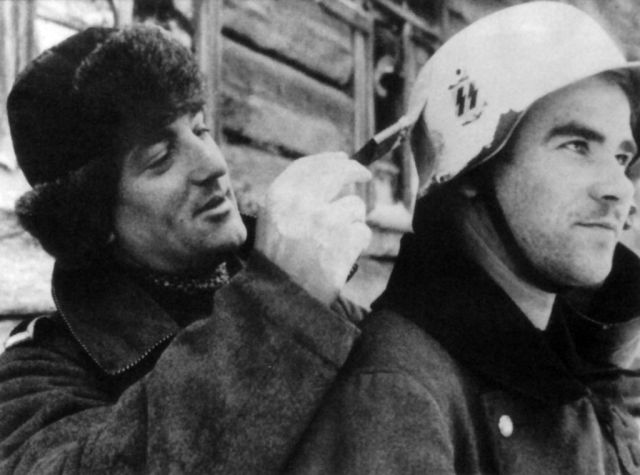
INCREDIBLE "HISTORIC" RECOVERY
! Ground Dug WW2 Battlefield GERMAN ARMY ( "Whermacht" ) "
HALFTRACK " LICENSE PLATE ! ( Courland Pocket, Eastern Front Battlefield
)
Here is an incredible large size highly sought after original WW2 German
"HALFTRACK" license plate relic from my personal collection,
that was recovered in Courland Pocket at the surrender site of Army
Group North. The Sd.Kfz. 251 (Sonderkraftfahrzeug 251) half-track was
an armored fighting vehicle designed and first built by the Hanomag
company during World War II, and based on their earlier, unarmored Sd.Kfz.
11 vehicle. The larger of the pair (the Sd.Kfz. 250 being the lighter
one) of the fully armored wartime half-tracks of the Wehrmacht, the
Sd.Kfz. 251 was designed to transport the panzergrenadiers of the German
mechanized infantry corps into battle. Sd.Kfz. 251s were the most widely
produced German half-tracks of the war, with over 15,252 vehicles and
variants produced by various manufacturers, and were commonly referred
to simply as "Hanomags" by both German and Allied soldiers.
Army Group Courland (German: Heeresgruppe Kurland) was a German Army
Group on the Eastern Front which was created from remnants of the Army
Group North, isolated in the Courland Peninsula by the advancing Soviet
Army forces during the 1944 Baltic Offensive of the Second World War.
The army group remained isolated until the end of World War II in Europe.
All units of the Army Group were ordered to surrender by the capitulated
Wehrmacht command on 8 May 1945. At the time agreed for all German armed
forces to end hostilities (see the German Instrument of Surrender, 1945),
the Sixteenth and Eighteenth armies of Army Group Courland, commanded
by General (of Infantry) Carl Hilpert, ended hostilities at 23:00 on
8 May 1945 surrendering to Leonid Govorov commander of the Leningrad
Front. By the evening of 9 May 1945 189,000 German troops, including
42 officers in the rank of general, in the Courland Pocket had surrendered.
SOLD
.jpg)
.jpg)
.jpg)
.jpg)
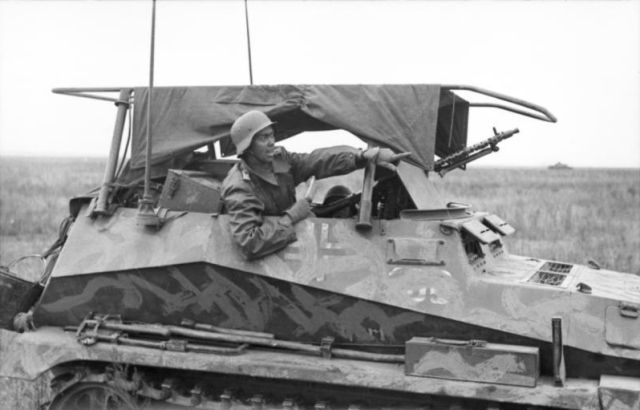
NICE Ground Dug RELIC German CLOSE COMBAT BADGE with Clasp ! - ( Recovered Courland Pocket, Surrender Site Army Group North )
Nice condition German Close Combat Award Badge excavated near the surrender site of Army Group North Courland. At the start of Operation Barbarossa in 1941, Courland, along with the rest of the Baltic, was overrun by Army Group North headed by Field Marshal Wilhelm Ritter von Leeb. In 1944, the Red Army lifted the siege of Leningrad and re-conquered the Baltic area along with much of Ukraine and Belarus. However, some 200,000 German troops held out in Courland. With their backs to the Baltic Sea. they were trapped in what became known as the Courland Pocket, blockaded by the Red Army and the Red Baltic Fleet. Colonel-General Heinz Guderian, the Chief of the German General Staff, insisted to Adolf Hitler that the troops in Courland should be evacuated by sea and used for the defense of Germany. Hitler refused, and ordered the Wehrmacht, Waffen-SS, Luftwaffe and Kriegsmarine forces in Courland to continue the defence of the area. Hitler believed them necessary to protect Kriegsmarine submarine bases along the Baltic coast. On January 15, 1945, Army Group Courland (Heeresgruppe Kurland) was formed under Colonel-General Dr. Lothar Rendulic The blockade by elements of the Leningrad Front remained until May 8, 1945, when the Army Group Courland, then under its last commander, Colonel-General Carl Hilpert, surrendered to Marshal Leonid Govorov, the commander of the Leningrad Front (reinforced by elements of the 2nd Baltic Front) on the Courland perimeter. At this time the group consisted of the remnants of some 31 divisions. After May 9, 1945, approximately 203,000 troops of Army Group Courland began moving to Soviet prison camps in the East. The majority of them never returned to Germany.
SOLD
 (2).jpg)
 (2).jpg)
 (2).jpg)
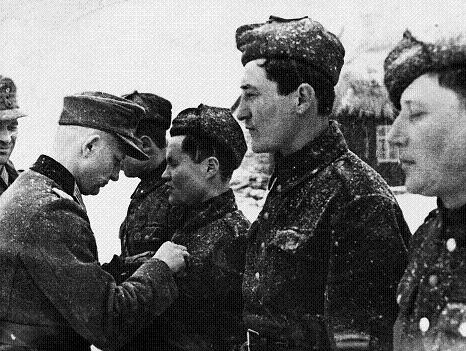
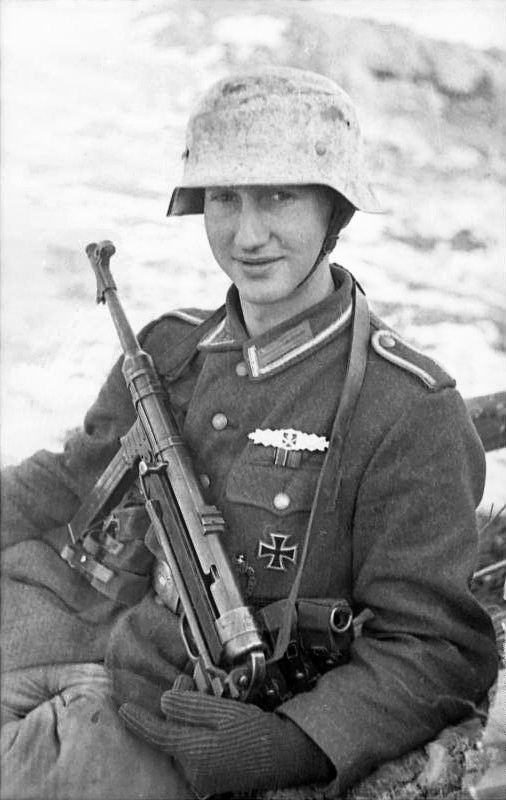
THIS HISTORIC MUSEUM
RELIC is very hard to part with ! - Ground Dug
Relic BATTLE-DAMAGED "Heavy" Russian MAXIM MACHINE GUN Barrel
!
Bullet Riddled ! - ( Recovered STALINGRAD ! )
Incredible rare to find and Huge, Russian Belt-Fed HEAVY MAXIM
MACHINE GUN Water-cooled Barrel that was recovered with "furious"
battle damage. This will most likely be the first and last one of these
I will ever see pass through. Both Russians and German troops used the
powerful Maxim Heavy MG.The Russian M1910 Maxim machine gun was the
standard military heavy machine gun through most of WWII. The Russian
Maxim was a water cooled belt fed heavy machine gun used by both the
Russian and Soviet armies. It was adopted in 1910 and was a variant
of Hiram Maxim’s Maxim gun chambered for the standard Russian
rifle ammunition. The M1910 was normally mounted on a cumbersome wheeled
mount with a bullet shield, although there were some rare light tripod
mounts that were made as well as various naval and aircrafts mounts.
With the heavy wheeled Sokolov mount, the weapon tipped the scaled at
139 pounds, though without the mount it was considerably lighter. Still,
it was a heavy gun. It was recoil operated, and fired at 600 rounds
per minute off of 250 round belts that were usually made of cloth, or,
more rarely, metal. The metal links were usually not preferred as they
were much harder on the internals of the gun and caused more wear than
the cloth belts. With a few simple tools it was possible to remove the
starting tab on one metal belt and then connect another belt together
to make a longer belt, however. A very reliable weapon, it was well
liked, but it did have many drawbacks. It was considerably heavier than
the German MG2, making it far less mobile, and did not have as fast
of a rate of fire as its counterpart either. Further, it lacked the
ability to quickly change barrels, something that is often needed in
heavy machine gun as the rate of fire can burn out barrels very quickly.
However, for what it lacked in refined features it made up for in brute
force. The gun could fire in longer bursts that many of its contemporaries
as the water contained in the tubular water jacket around the barrel
kept the barrel from burning up quicker than it would without it.
SOLD
.jpg)
.jpg)
.jpg)
.jpg)
.jpg)
.jpg)

EXTREMELY RARE WW2 "Battlefield"
Dug RELIC German "Waffen-SS" 6TH SS Volunteer Sturmbrigade
- Langemarck
Dog Tag Death ID ( Recovered Kurland Pocket - Eastern Front )
Here is a very desireable and 100% original German SS Dog tag 6th Brigade
2nd Battalion Dog Tag. Excavated Kurland.
In Bohemia, 1,700 new recruits were waiting to join the division, and
soon it was back up to strength. On 19 July 1944, Kampfgruppe Rehmann
was formed, commanded by SS-Hauptsturmführer Wilhelm Rehmann. KG
Rehmann, consisting of the Langemarck's 2nd battalion was sent to the
Narva front to become a part of Felix Steiner's III (Germanic) SS Panzer
Corps which was defending the Tannenberg Line. The Tannenberg Line was
anchored on three strategic hills. Running west to east, these were
known as Hill 69.9 (69.9-Höhe), Grenadier Hill (Grenadier-Höhe)
and Orphanage Hill (Kinderheim-Höhe). From Orphanage Hill, the
rear side of the town of Narva could be protected. KG Rehmann was tasked
with defending Orphanage Hill. Fighting alongside men of the 11. SS-Freiwilligen-Panzergrenadier
Division Nordland, the 5th SS Volunteer Sturmbrigade Wallonien, the
20th Waffen Grenadier Division of the SS (1st Estonian), the 4th SS
Volunteer Panzergrenadier Brigade Nederland and several German formations,
the Langemarck was engaged in very heavy combat against the Soviets.
An example of the fighting spirit and tenacity of the Langemarck men
can be seen by the actions of the Flemish NCO Remi Schrijnen. During
the fighting, Schrijnen singlehandedly knocked out more than a dozen
enemy tanks while wounded and cut off from his unit. In a period of
48 hours, Schrijnen personally halted several Soviet tank attacks which
threatened to encircle the Langemarck and the Estonian SS men fighting
alongside them. He even destroyed two T-34's with one shot from his
PaK anti-tank gun. For his actions, Schrijnen was awarded the Knight's
Cross of the Iron Cross Over the next few months, Langemarck, along
with the remainder of Steiner's Corps, executed a fighting withdrawal
into the Kurland Pocket, the brigade being in combat for much of the
retreat.
SOLD
.jpg)
.jpg)
.jpg)

.jpg)
FANTASTIC PIECE OF HISTORY ! Ground Dug Relic Find - GERMAN POW CAMP Issued ID TAG for a PRISONER OF STALAG VIII Section C. ( Sagan, Poland )
Here is a very cool relic dog tag issued by a German POW camp to a captured POW of one of many allied forces that were interred in Stalag VIII-C. Stalag VIII-C was a German World War II prisoner-of-war camp, near Sagan, Germany, (now Żagań, Poland). It was adjacent to the famous Stalag Luft III, and was built at the beginning of World War II, occupying 48 ha (120 acres). The camp was built in September 1939 to house several thousand Polish prisoners from the German September 1939 offensive. In a ruthless breach of the Third Geneva Convention most of these prisoners were deprived of their P.O.W. status in June 1940 and transferred to labor camps. French and Belgian soldiers taken prisoner during the Battle of France took their place, many of them from Algeria, Morocco and Senegal. In 1941 more prisoners arrived from the Balkans Campaign mostly British, Canadian, Greek and Yugoslav. These were followed by Soviet prisoners from Operation Barbarossa. In late 1941 nearly 50,000 prisoners were crowded into space designed for one third that number. Conditions were appalling, starvation, epidemics and ill-treatment took a heavy toll of lives. By early 1942 the Soviet prisoners had been transferred to other camps, particularly to Stalag VIII-E, Neuhammer. New prisoners arrived form the Western Desert Campaign in north Africa, especially after the fall of Tobruk in December 1941. These were principally Australians, South Africans (both white and black) and Poles.
SOLD
 (3).jpg)
 (2).jpg)
 (2).jpg)
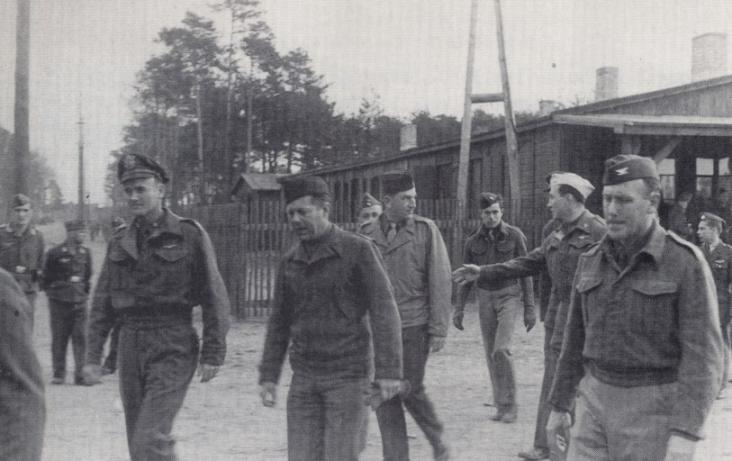
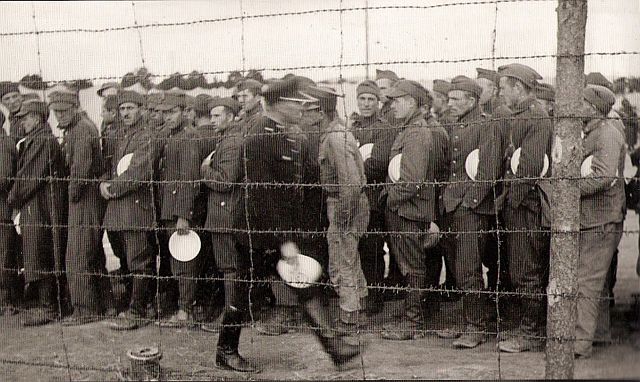
Here is a just arrived highly collectible large size troop transport vehicle license plate that would be an incredible research piece. The plate is WW2 Nazi proofmarked stamped " Leipzig Polezei " and still retains the attachment devices. The relic helmet and goggles in the picture also arrived and are sold separately. ( Please contact me if interested in these items ) During World War II, Leipzig was repeatedly attacked by British as well as American air raids. The most severe attack was launched by the Royal Air Force in the early hours of December 4, 1943 and claimed more than 1,800 lives. Large parts of the city center were destroyed, while factories experienced temporary shortfalls in production, had to move production facilities or even were decentralized. At the outbreak of the war, Leipzig had more than 700,000 inhabitants and was therefore the sixth-largest city of the “Greater German Reich” (including Vienna). Leipzig additionally had significance by hosting the leading trade fair ofthe German Empire. The Erla Maschinenwerk. aircraft factory that produced Messerschmitt Bf 109 fighter planes at the three locations of Heiterblick, Abtnaundorf and Mockau were important for warfare. Additionally, Leipzig was an important railroad intersection in Germany at that time.
SOLD
.jpg)
.jpg)
.jpg)
.jpg)
.jpg)
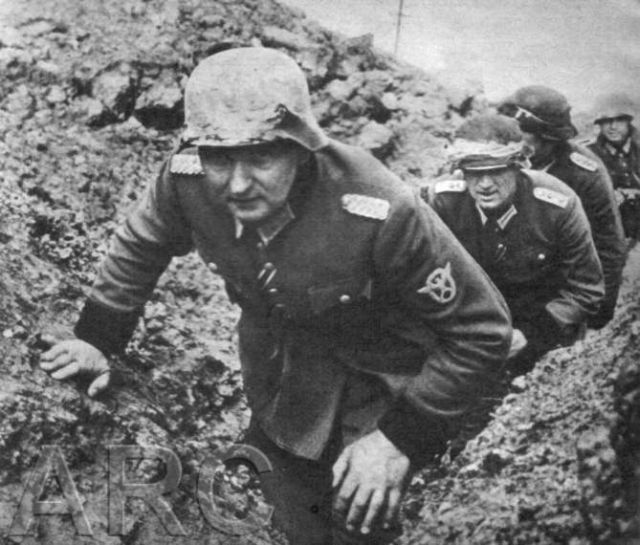
INCREDIBLE HISTORIC ARTIFACT ! -
Ground Dug BATTLEFIELD Recovered "EXPLODED" US "BROWNING
1919 Machine Gun" Section - ( Battlefield of Bastogne )
Here is a chance to own a battle damaged chunk of a Browning 1919 Machine
Gun relic that quite possibly was a tank mount, jeep mount or foxhole
MG position. An incredible chance to own a truly historic artifact.
Near-complete surprise was achieved by a combination of Allied overconfidence,
preoccupation with Allied offensive plans, and poor aerial reconnaissance.
The Germans attacked a weakly defended section of the Allied line, taking
advantage of heavily overcast weather conditions, which grounded the
Allies' overwhelmingly superior air forces. Fierce resistance on the
northern shoulder of the offensive around Elsenborn Ridge and in the
south around Bastogne blocked German access to key roads to the northwest
and west that they counted on for success; columns that were supposed
to advance along parallel routes found themselves on the same roads.
This and terrain that favoured the defenders threw the German advance
behind schedule and allowed the Allies to reinforce the thinly placed
troops. Improved weather conditions permitted air attacks on German
forces and supply lines, which sealed the failure of the offensive.
In the wake of the defeat, many experienced German units were left severely
depleted of men and equipment, as survivors retreated to the defenses
of the Siegfried Line. The battle involved about 610,000 American men,
of whom some 89,000 were casualties, including 19,000 killed. It was
the largest and bloodiest battle fought by the United States in World
War II.
LAYAWAY SOLD
.jpg)
.jpg)
.jpg)
.jpg)
.jpg)


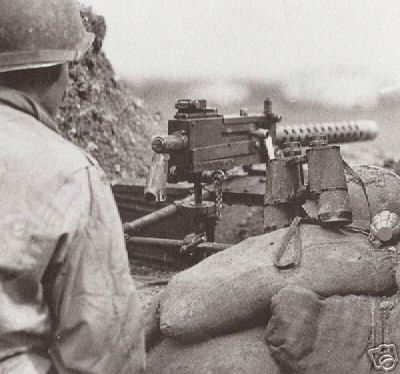
EXTREMELY RARE "Battlefield" Dug WW2 RUSSIAN ID TAG - 10th Russian Guards Regiment ( Excavation Recovered Kurland Battlefield )
On 16 October, Hitler permitted the pulling
back of the front. With this came the evacuation of Riga and the
transfer of 100,000 tons of material to the Kurland. This just
left two ports of supply, Libau at the southern edge of the Kurland
pocket and Windau in the northern half. Due to the build up of
forces for the Ardennes Offensive, Kurland did not receive reenforcments.
What resulted is the combatant force ratio of 11:1 to the disadvantage
of the German forces. The force ratio for armored vehicles was
7:1 in favor of the Russians; for artillery, it was 20:1. The
situation of the Luftwaffe was of course similar.
By order of Heeresgruppe Nord, it was forbidden to use the phrase "Kurland
pocket." Since the defeat at Stalingrad, the word "pocket"
carried connotations of impending disaster. The term "bridgehead"
was thought to be better suited since it was viewed as jumping off point
for offensives. So "Kurland bridgehead" became the official
name. There were a total of six battles of Kurland. It was
during these battles the 10th Guards of the 11th Division would become
known as a staple "fire-brigade" of the Kurland front. The
sixth battle began on 18 March 1945 when the Red Army artillery opened
up on the front between Dangas and Skutini. The Soviet 10th Guards
Army concentrated their attack on the positions in the middle of this
barrage with armored formations & support of the Red Air Force which
was used to cripple German supply lines and communication. The
Russian onslaught broke through at several locations. Some German
strong points were cut off and these troops had to fight their way back
to the new German positions. In spite of the local Russian successes,
the Germans were able to hold a defensive line and denied the Russians
a victory. It was reported that 92 enemy armored vehicles were
knocked out in this fightingThe Russian 10th Guards Army repeatedly
attempted in the following days to force a breakthrough and capture
the port city of Libau. The German Army now known as Heeresgruppe
Kurland continued to successfully hold back the red tide, but were
forced to give ground in certain sectors to form a new line of resistance.
Despite being outnumbered in men and weapons, the Germans showed that
they are able to match in combat the massive Russian formations
SOLD
.jpg)
.jpg)
.jpg)
.jpg)
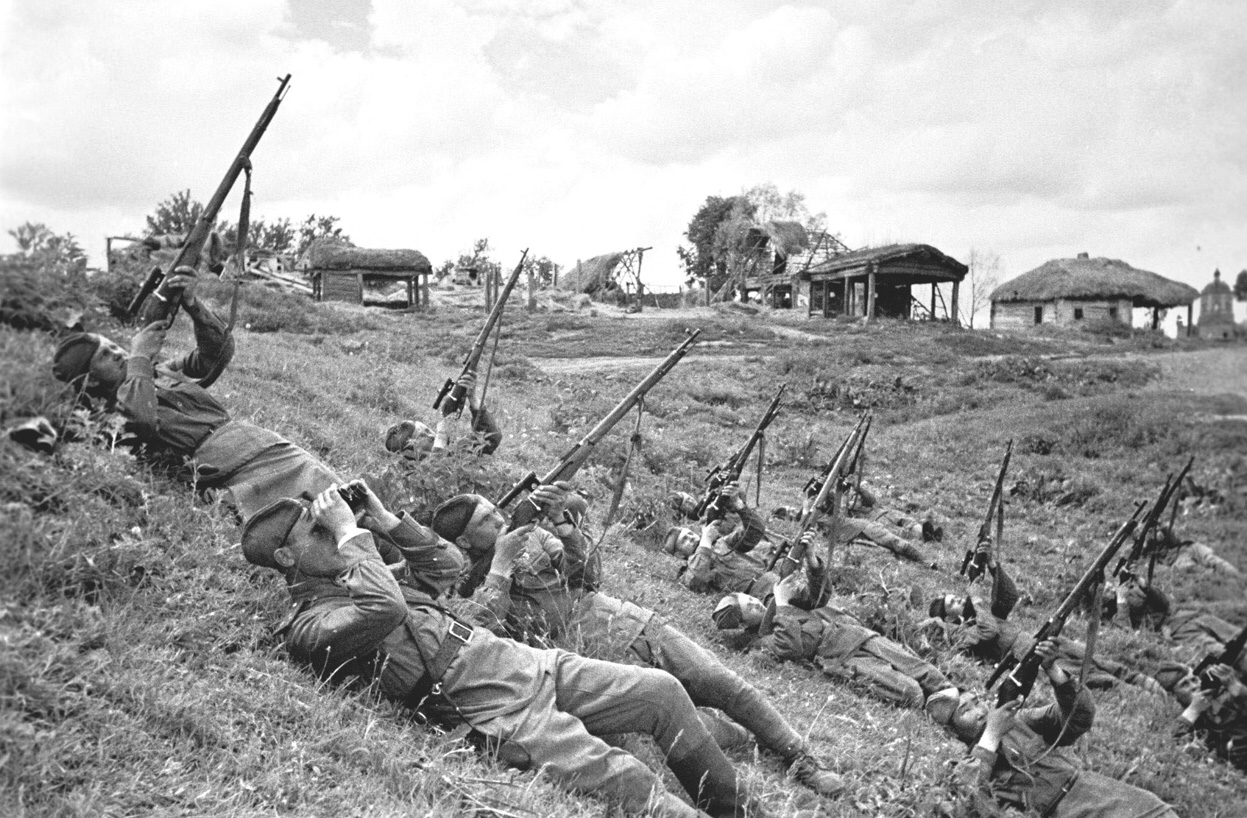

.jpg)
EXTREMELY RARE Ground Dug Lot of
WWI POLISH ARMY EAST Headquarters Breast Award ! and a RARE WWI 1ST
BRIGADE POLISH LEGION Breast Award !
Ground Dug WARSAW !
Here is a great opportunity to own highly desireable original and rare
WWI Polish Awards in ground dug condition. The Headquarters Eastern
Front award has the Knedler screwback secure and the 1st Brigade Polish
Legion is incredible still retaining the decorative crimson padding.
Both awards are in very ice dug condition.The First Brigade was formed
on December 19, 1914, as part of the Polish Legions in World War I.
Until October 1916 the First Brigade was commanded by Józef Pilsudski
thereafter by Marian Zegota-Januszajtis. The First Brigade and the Third
Brigade were disbanded after the 1917 Oath Crisis. In mid-1916, after
the Battle of Kostiuchnówka in which the Polish Legions delayed
a Russian offensive at a cost of over 2,000 casualties,The Battle of
Kostiuchnówka was a World War I battle that took place July 4–6,
1916, near the village of Kostiuchnówka (Kostyukhnivka) and the
Styr River in the Volhynia region of modern Ukraine, then part of the
Russian Empire. It was a major clash between the Russian Army and the
Polish Legions (part of the Austro-Hungarian Army) during the opening
phase of the Brusilov Offensive.Polish forces, numbering 5,500–7,300,
faced Russian forces numbering over half of the 46th Corps of 26,000.
The Polish forces were eventually forced to retreat, but delayed the
Russians long enough for the other Austro-Hungarian units in the area
to retreat in an organized manner. Polish casualties were approximately
2,000 fatalities and wounded. The battle is considered one of the largest
and most vicious of those involving the Polish Legions in World War
IPilsudski demanded that the Central Powers issue a guarantee of independence
for Poland. He backed this demand with his own proffered resignation
and that of many of the Legions' officers. On 5 November 1916 the Central
Powers proclaimed the "independence" of Poland, hoping to
increase the number of Polish troops that could be sent to the eastern
front against Russia, thereby relieving German forces to bolster the
western front. Pilsudski agreed to serve in the Regency Kingdom of Poland
created by the Central Powers, and acted as minister of war in the newly
formed Polish Regency government; as such he was responsible for the
Polnische Wehrmacht.
Polish Army WWI Headquarters Eastern Front Award - $ 150
Polish Legion WWI 1st Brigade Award - $190
SOLD
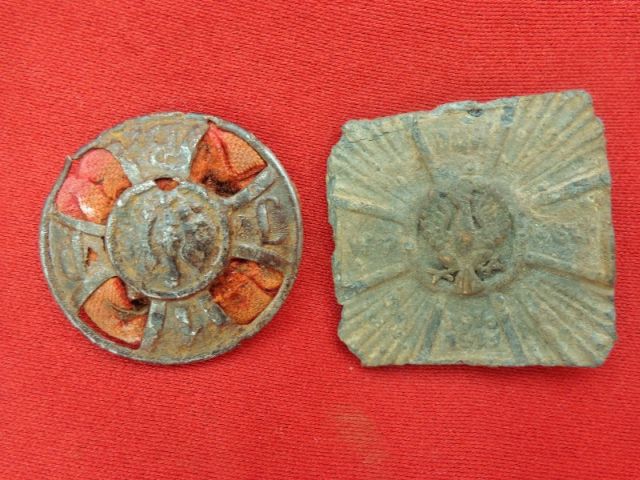
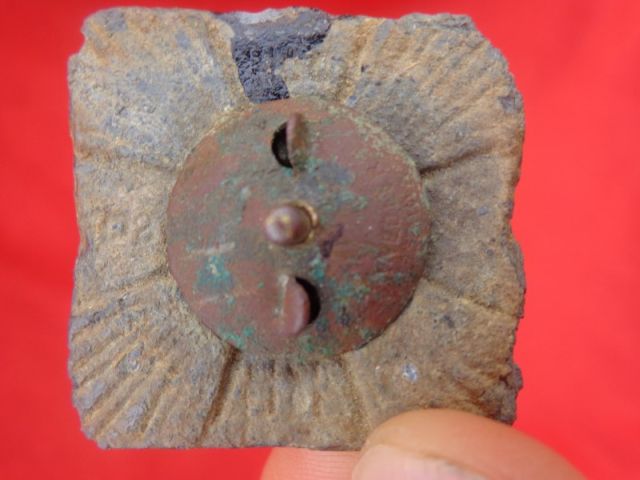
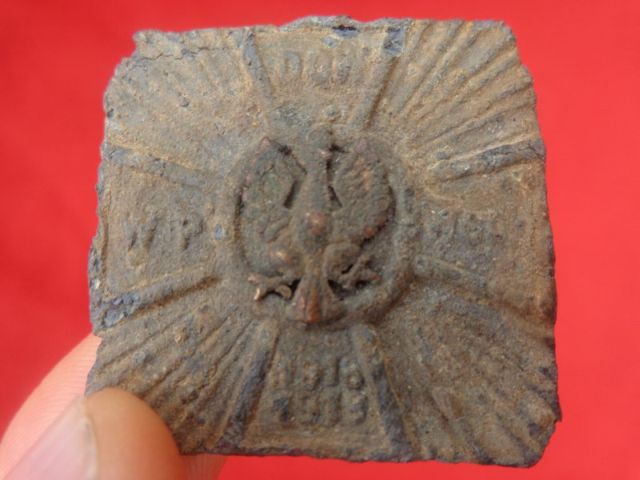
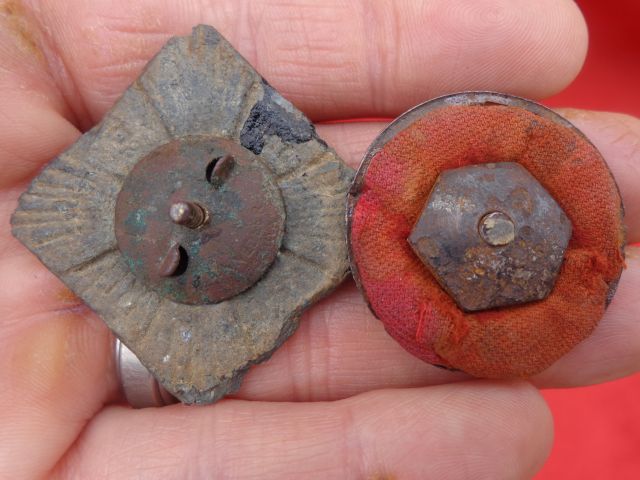
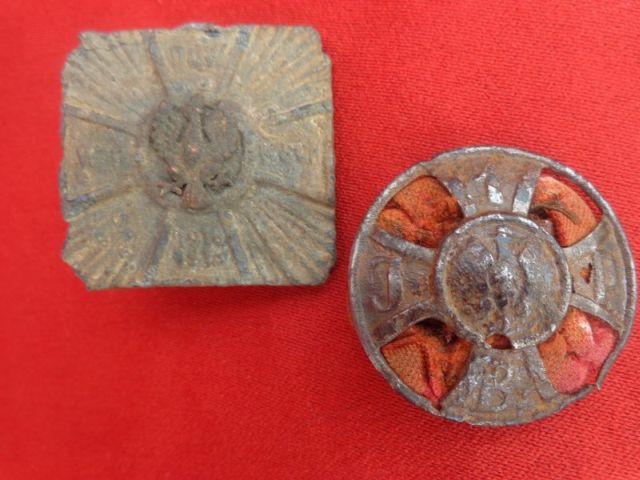
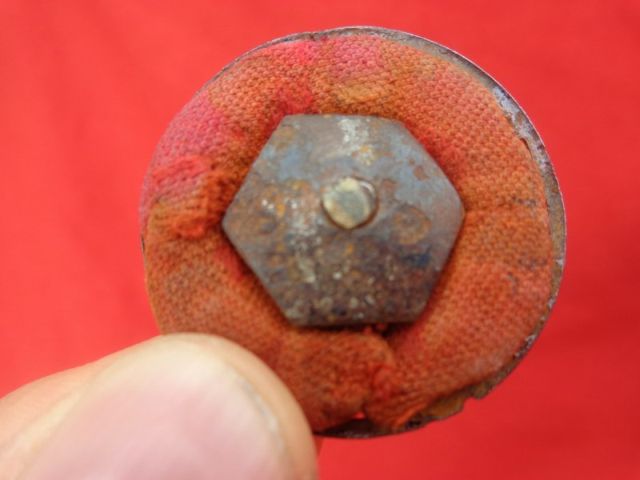
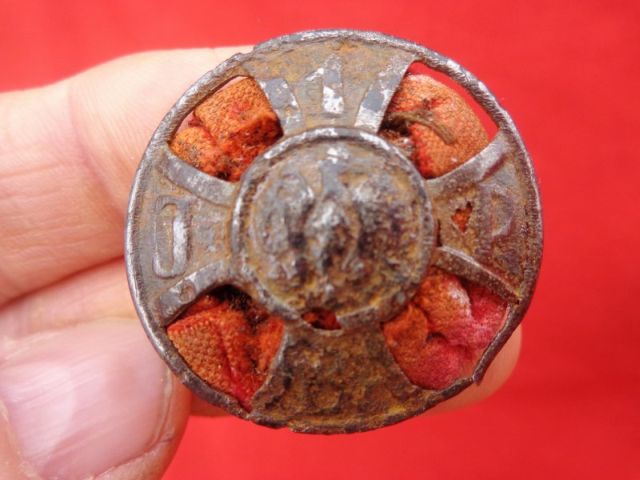
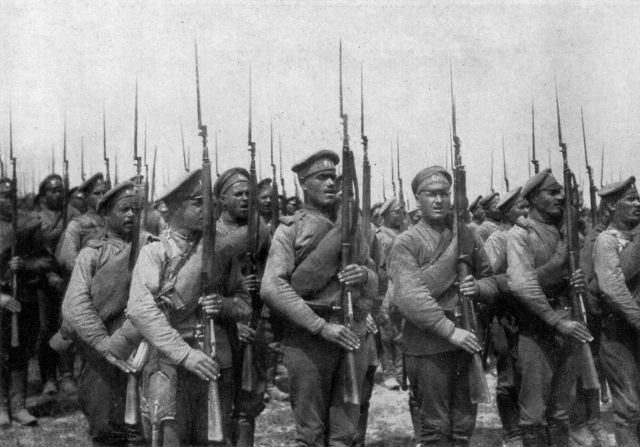
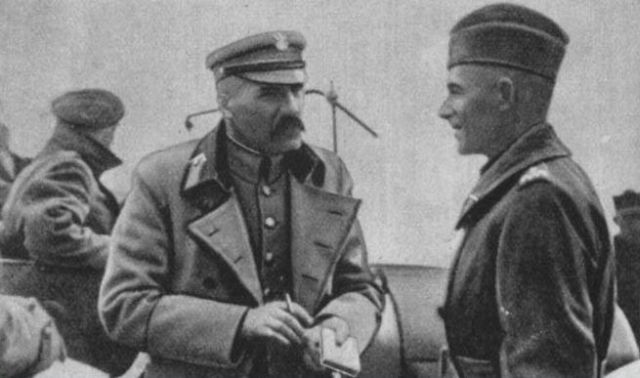
HISTORIC "BATTLEFIELD" FIND ! Ground Dug AMERICAN Relic US M1 GARAND RIFLE CLIP - ( Excavated Bastogne, BATTLE OF THE BULGE )
Incredible Find ! These Authentic Ground
Dug Relic ( for display only ) This US M1 Garand Rifle Clip that was
excavated near Bastogne by a serviceman stationed in Belgium during
the 1980's. Incredible historic find of US history.By 21 December the
Germans had surrounded Bastogne, which was defended by the 101st Airborne
Division and Combat Command B of the 10th Armored Division. Conditions
inside the perimeter were tough—most of the medical supplies and
medical personnel had been captured. Food was scarce, and by 22 December
artillery ammunition was restricted to 10 rounds per gun per day. The
weather cleared the next day, however, and supplies (primarily ammunition)
were dropped over four of the next five days.Despite determined German
attacks, however, the perimeter held. The German commander, Lt. Gen.
Heinrich Freiherr von Lüttwitz requested Bastogne's surrender.
When Brig. Gen. Anthony McAuliffe, acting commander of the 101st, was
told of the Nazi demand to surrender, in frustration he responded, "Nuts!"
After turning to other pressing issues, his staff reminded him that
they should reply to the German demand. One officer, Lt. Col. Harry
Kinnard, noted that McAuliffe's initial reply would be "tough to
beat." Thus McAuliffe wrote on the paper, which was typed up and
delivered to the Germans, the line he made famous and a morale booster
to his troops: "NUTS!" That reply had to be explained, both
to the Germans and to non-American Allies. Both 2nd Panzer and Panzer
Lehr moved forward from Bastogne after 21 December, leaving only Panzer
Lehr's 901st Regiment to assist the 26th Volksgrenadier Division in
attempting to capture the crossroads. The 26th VG received one panzergrenadier
regiment from the 15th Panzergrenadier Division on Christmas Eve for
its main assault the next day. Because it lacked sufficient troops and
those of the 26th VG Division were near exhaustion, the XLVII Panzer
Corps concentrated its assault on several individual locations on the
west side of the perimeter in sequence rather than launching one simultaneous
attack on all sides. The assault, despite initial success by its tanks
in penetrating the American line, was defeated and all the tanks destroyed.
The next day, 26 December, the spearhead of Gen. Patton's 4th Armored
Division broke through and opened a corridor to Bastogne. Don't let
this chance get away to add to your collection authentic Battle of the
Bulge Relics !
SOLD
.jpg)
.jpg)
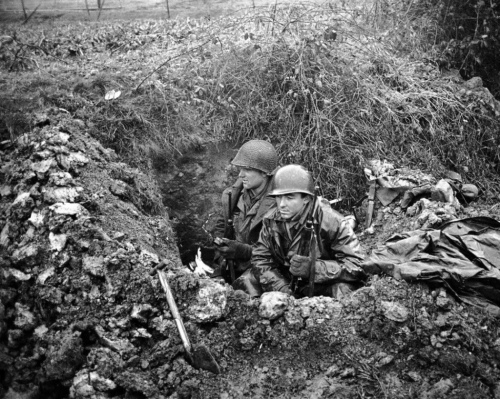
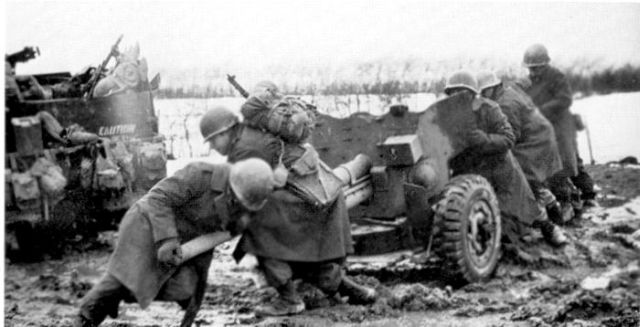
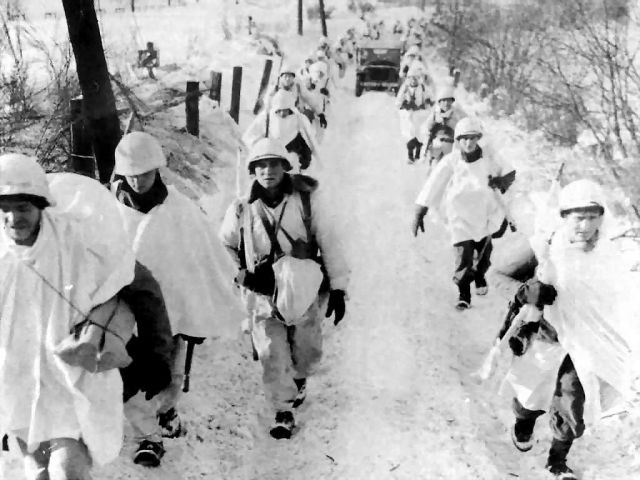
RARE "HISTORIC" Ground
Dug Relic Battlefield GERMAN MP40 "Schmeisser" Sub-Machine
GUN Artifact - ( Recovered Battle of the Bulge - Ardennes )
Here is a very historic metal detection find that was recovered Bulge
Battlefield. The MG Relic MP40 "Schmeisser" is in
sections and rough but could with some care restore it for display.
A rare opportunity to add a historic WWII battlefield relic weapon to
your collection.The Battle of the Bulge (also known
as Ardennenoffensive, Ardennes Counteroffensive,
and Rundstedtoffensive, Von Rundstedt Offensive
to the Germans) (16 December 1944 – 25 January 1945) was a major
German offensive launched through the densely forested Ardennes mountain
region of Wallonia in Belgium, and France and Luxembourg on the Western
Front towards the end of World War II. The Wehrmachts code
name for the offensive was Unternehmen Wacht
am Rhein ("Operation Watch on the Rhine"),
after the German patriotic hymn Die Wacht am Rhein. The French
name for the operation is Bataille des Ardennes.There are several
American names for this battle. The first was the description given
to the way the Allied front line bulged inward on wartime news maps,
which was reported in the contemporary press as the Battle of the Bulge.
The battle was militarily defined as the Ardennes Counteroffensive,
which included the German drive and the American effort to contain and
later defeat it. Following the war, the U.S. Army issued a campaign
citation for its units fighting in northwest Europe at the time. This
was called the Ardennes-Alsace campaign and included the Ardennes sector
(of the Ardennes Counteroffensive fighting) and units further south
in the Alsace sector. The latter units were not involved except for
elements sent northward as reinforcements. While the Ardennes Counteroffensive
is correct military parlance, because the official Ardennes-Alsace campaign
covers much more than the Ardennes battle region, the most popular description
remains simply the Battle of the Bulge.
SOLD
.jpg)
.jpg)
.jpg)
.jpg)
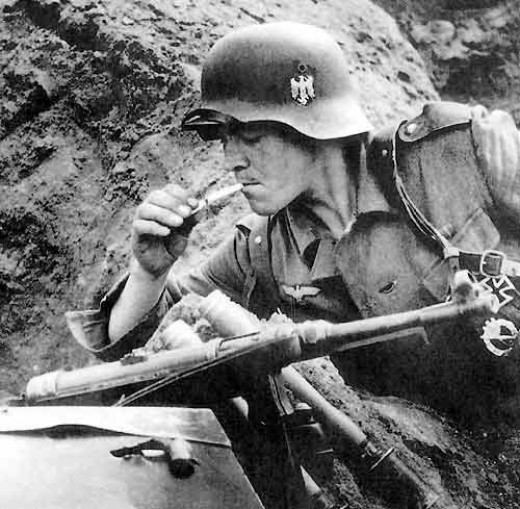

SPECTACULAR FIND ! A Battle
Damaged " MEMORIAL ID'D and BATTLE DAMAGED TRENCH ART Relic Russian
Canteen - RUSSIAN SNIPER HISTORY !
( Recovered EASTERN FRONT Battlefield of Narva )
This WW2 Battlefield Found Russian Army Issue Flask that was recovered in Estonia from the eastern front battlefield of Narva in Russian held positions. The flask is ID'd to a Russian Sniper by the name of Ivan Bulatov. The etching on the flask details that he was drafted into the Russian Army in Nizneydinsk, Siberia. His time training camp was in 1944 before being sent to the front. I am assuming from the 2 sniper bullet strikes that he met his demise by possibly his opposite a German sniper. ? The trench art etching is incredible with the Russian Sniper shield Insignia and crosses rifles along with his dates of service. An absolutely incredible relic and research piece for your collection. Don't let this one get away or for me to decide to hold onto it .. : )
SOLD
.jpg)
.jpg)
.jpg)
.jpg)
.jpg)

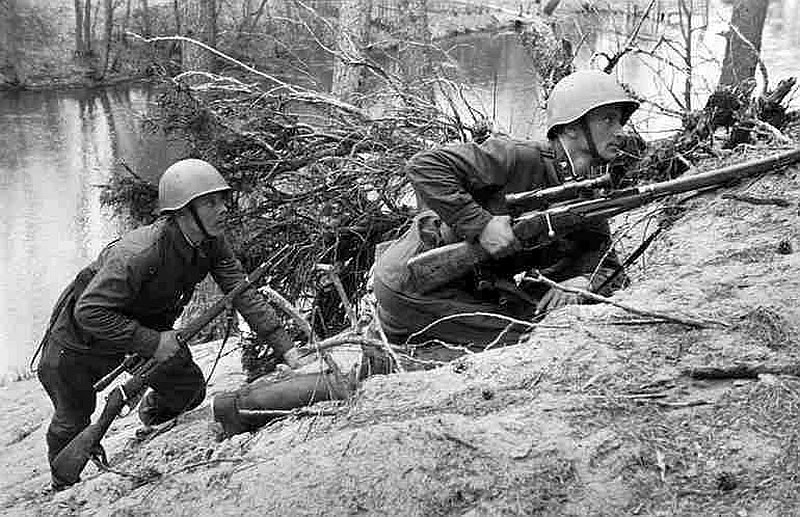
.jpg)
EXTREMELY RARE ! WWII Ground
Excavated Relic - GERMAN DRK "HEWER" DAGGER with Scabbard
and RED CROSS BUCKLE ! - ( Recovered Battle of Berlin - Seelow
Heights )
Here is an incredibly hard to find ground dug relic WW2 German
DRK Dagger and Buckle that were recovered near the Seelow Heights Battlefield.
The Battle of the Seelow Heights (German: Schlacht um die "Seelower
Höhen"), was a part of the Seelow-Berlin Offensive Operation
(16 April-2 May 1945), one of the last assaults on large entrenched
defensive positions of World War II. It was fought over three days,
from 16–19 April 1945. Close to one million Soviet soldiers of
the 1st Belorussian Front (including 78,556 soldiers of the Polish 1st
Army), commanded by Marshal Georgi Zhukov, attacked the position known
as the "Gates of Berlin". They were opposed by about 110,000
soldiers of the German 9th Army, commanded by General Theodor
Busse, as part of the Army Group Vistula.This battle is often incorporated
into the Battle of the Oder-Neisse. Seelow Heights was where the most
bitter fighting in the overall battle took place, but it was only one
of several crossing points along the Oder and Neisse rivers where the
Soviets attacked. The Battle of the Oder-Neisse was itself only the
opening phase of the Battle of Berlin.The result was the encirclement
of the German 9th Army and the Battle of Halbe.
SOLD
.jpg)
.jpg)
.jpg)
.jpg)
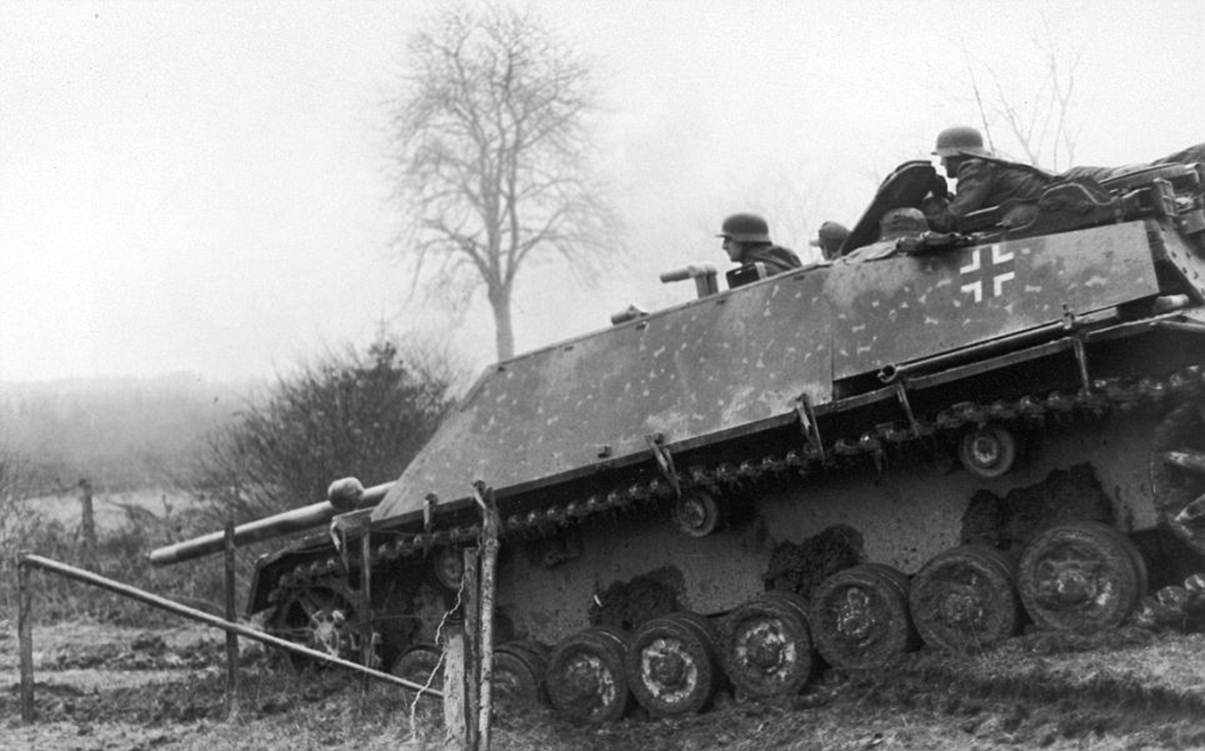
.jpg)
RARE Ground Dug WW2 RELIC
GERMAN " FELDGENDARMERIE " GORGET Decoration ! - ( Recovered
France, in the 1970's by Alain Rodeoux )
Here is an extremely rare to find excavated German Gorget that was recovered
without its chain, in a Normandy hedgerow by Alain Rodeoux in the early
70's. Halfway hoping this one doesnt sell to quick as it looks killer
in a shadowbox. A beautiful war relic for insignia collectors. These
in nice condition all book in the $1000 plus range.. Fighting in Normandy
was fierce and bloody. The Germans knew that there was only one chance
of pushing the Allies out of France and that was in Normandy itself.
The further inland the Allies got, the weaker the German position would
be – hence the ferocity of the fighting. For men such as Marshal
Kluge, the battles fought in Normandy were literally make or break for
the German army. Defeat in Normandy would almost certainly mean the
loss of France before the Allies turned on Nazi Germany itself. Both
sides saw control of Caen as being pivotal to success in Normandy. The
Allies launched various attacks on the city, which eventually fell but
only after Allied bombing had all but destroyed the Old City. Equally
fierce fighting took place just three miles to the south of Caen at
Verrières Ridge – a place of great strategic importance
for whoever held it as the ridge gave a commanding view over the surrounding
terrain. The Germans faced an army that had access to a seemingly
endless supply of fuel and equipment. While the Mulberry Harbour had
not lasted long, it had served its purpose. With the beaches secured,
with the port of Cherbourg captured and with effective control of the
English Channel, supplying the Allied forces in Normandy was not a huge
issue. The Germans were not in the same position. Regardless of this,
fighting in Normandy was fierce and progress inland was slow. German
resistance was invariably strong. German resistance culminated in mid-August
1944 when the Allies trapped 150,000 German soldiers in and around the
town of Falaise. Thousands of Germans did escape via the Falaise Gap
(Falaise Pocket) before it was closed. But many thousands were captured
along with their equipment. The loss of such a large force was a disaster
for the Germans and one the German Army in France did not recover from.
.jpg)
.jpg)
.jpg)
.jpg)
.jpg)
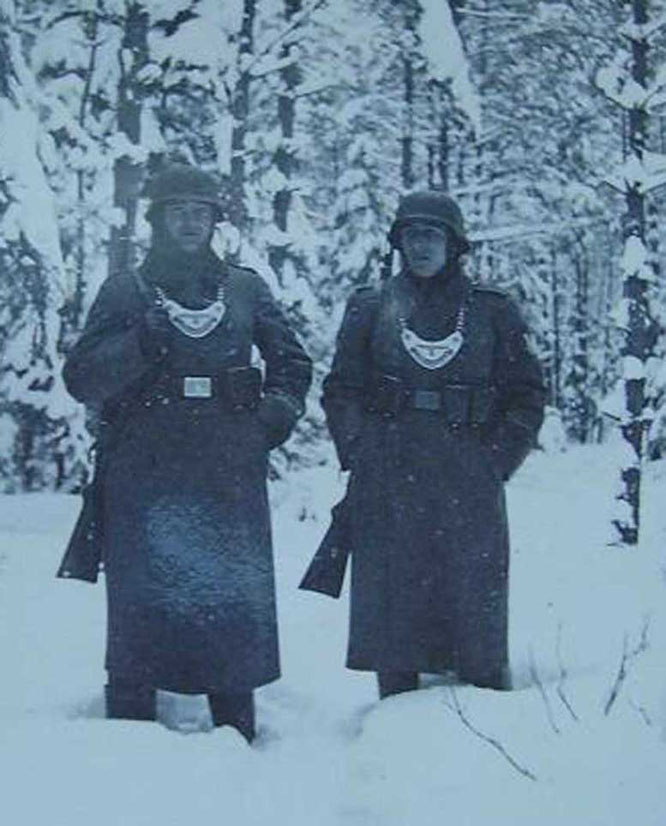
RARE Ground Dug Battlefield Relic German Waffen-SS SD M35 Helmet - ( Recovered Tannenberg Line , Russian Front )
Here is a rough but rare relic condition SD SS Waffen Helmet Shell Battlefield recovery from Tannenberg Line, Eastern Front. The helmet has some wicked battle damage and bullet strikes and displays incredible. The runes are faint but nicely visible. The Battle of Tannenberg Line (German: Die Schlacht um die Tannenbergstellung; Estonian: Sinimägede lahing; Russian: Битва за линию «Танненберг») was a military engagement between the German Army Detachment "Narwa" and the Soviet Leningrad Front fought for the strategically important Narva Isthmus from 25 July to 10 August 1944. The battle was fought on the Eastern Front during World War II. The strategic aim of the Soviet Estonian Operation was to reoccupy Estonia as a favourable base for invasions of Finland and East-Prussia. Several Western scholars refer to it as the Battle of the European SS for the 24 volunteer infantry battalions from Denmark, East Prussia, Flanders, Holland, Norway, and Wallonia within the Waffen-SS. Roughly a half of the infantry consisted of the local Estomia conscripts motivated to resist the looming Soviet re-occupation. The German force of 22,250 men held off the Soviet advance of 136,830 troops. As the Soviet forces were constantly reinforced, the casualties of the battle were 150,000–200,000 wounded and dead Soviet troops and 157–164 Soviet tanks.
LAYAWAY
.jpg)
.jpg)
.jpg)

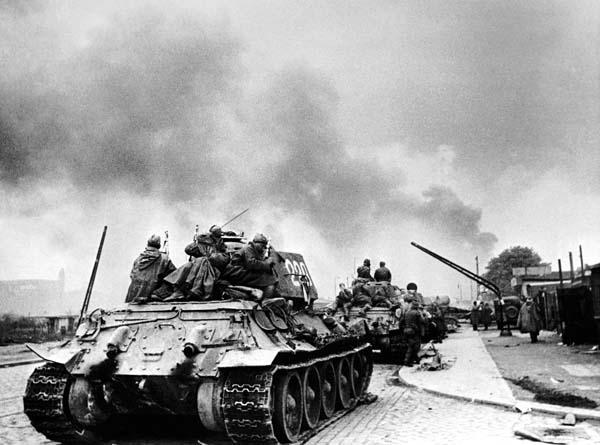
.jpg)
HISTORIC RECOVERY !! Ground Dug RELIC German WW2 "OST FRONT" Winter Award Medals - ( Recovered Surrender Site of Army Group North )
Here is a nice lot sold individually of Ground Dug WW2 German medal Winterschlacht im Osten 1941-42 awarded medals for survival of winter campaigns in Russia. These incredible award medals were rocovered all together in a pit at the surrender site of the German Army Group North trapped inside the Courland Pocket and are in various condition of dug. Army Group Courland (German: Heeresgruppe Kurland) was a German Army Group on the Eastern Front which was created from remnants of the Army Group North, isolated in the Courland Peninsula by the advancing Soviet Army forces during the 1944 Baltic Offensive of the Second World War. The army group remained isolated until the end of World War II in Europe. All units of the Army Group were ordered to surrender by the capitulated Wehrmacht command on 8 May 1945. At the time agreed for all German armed forces to end hostilities (see the German Instrument of Surrender, 1945), the Sixteenth and Eighteenth armies of Army Group Courland, commanded by General (of Infantry) Carl Hilpert, ended hostilities at 23:00 on 8 May 1945 surrendering to Leonid Govorov commander of the Leningrad Front. By the evening of 9 May 1945 189,000 German troops, including 42 officers in the rank of general, in the Courland Pocket had surrendered. Priced low for each medal !
SOLD
.jpg)
.jpg)
.jpg)
.jpg)
FANTASTIC COLLECTIBLE WW2 GERMAN
MOTORCYCLE RELIC ! German Kradschützen) from the WAFFEN- SS Division
"Totenkopf" MOTORCYCLE SEAT - Maker marked - DRILASTIC ! (
Recovered "Demjansk" Pocket )
Here is a fantastic relic from my personal collection. An original German
sidecar Motorcycle seat by Drilastic that was recovered in Demjansk
in positions occupied by SS troops Totenkopf. along with other parts
that have since sold. In April 1941, the division was ordered East to
join Generalfeldmarschall Wilhelm Ritter von Leeb's Army Group North.
Leeb's force was tasked with advancing on Leningrad and formed the northern
wing of Operation Barbarossa. Totenkopf saw action in Lithuania and
Latvia, and by July had breached the vaunted Stalin Line. The division
then advanced past Demjansk to Leningrad where it was involved in heavy
fighting from 31 July to 25 August.
During the autumn and winter of 1941, the Soviets launched a number
of operations against the German lines in the northern sector of the
Front. During one, the Division was encircled for several months near
Demjansk in what would come to be known as the Demjansk Pocket. During
these kessel (cauldron) battles, Totenkopf suffered so greatly, that
due to its reduced size, it was re-designated Kampfgruppe "Eicke".
The division was involved in ferocious fighting to hold the pocket.
SS-Hauptsturmführer Erwin Meierdress of the Sturmgeschütze-Batterie
(Assault Gun) Totenkopf formed a Kampfgruppe of about 120 soldiers and
held the strategic town of Bjakowo despite repeated determined enemy
attempts to capture it. During these battles, Meierdress personally
destroyed several enemy tanks in his StuG III. He was awarded the Iron
Cross for his actions during this period. In April 1942, the division
broke out of the pocket and managed to reach friendly territory. At
Demjansk, about 80% of its soldiers were killed, wounded or missing
in action. The remnants of the Division were pulled out of the line
in late October, 1942 and sent to France to be refitted. While there,
the Division took part in Case Anton, the takeover of Vichy France in
November 1942. For this operation, the division was supplied with a
Panzer battalion and redesignated 3.SS-Panzergrenadier-Division Totenkopf.
The division remained in France until February, 1943, when their old
commander, Theodor Eicke, resumed control.
SOLD
.jpg)
.jpg)
.jpg)
.jpg)
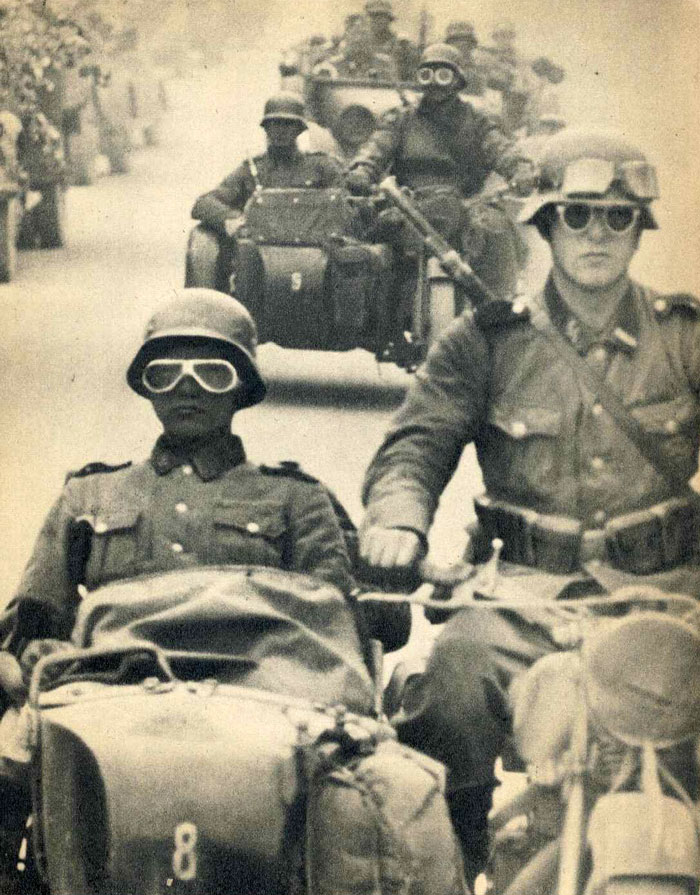
.jpg)
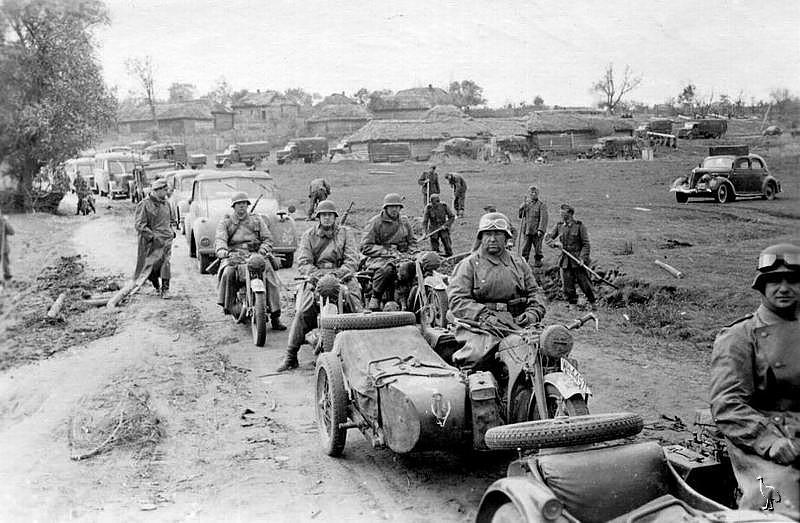
.jpg)
NICE WW2 Relic Condition Battle Damaged GERMAN " NORMANDY CAMO Pattern " HELMET Shell
The helmet has a clear bullet strike in the
helmet forward. Rommel's defensive measures were also frustrated by
a dispute over armoured doctrine. In addition to his two army groups,
von Rundstedt also commanded the headquarters of Panzer Group West
under General Leo Geyr vor Schweppenburg (usually referred to as
von Geyr). This formation was nominally an administrative HQ
for von Rundstedt's armoured and mobile formations, but it was later
to be renamed Fifth Panzer Army and brought into the line in Normandy.
Von Geyr and Rommel disagreed over the deployment and use of the vital
Panzer divisions.Rommel recognised that the Allies would possess air
superiority and would be able to harass his movements from the air.
He therefore proposed that the armoured formations be deployed close
to the invasion beaches. In his words, it was better to have one Panzer
division facing the invaders on the first day, than three Panzer divisions
three days later when the Allies would already have established a firm
beachhead. Von Geyr argued for the standard doctrine that the Panzer
formations should be concentrated in a central position around Paris
and Rouen, and deployed en masse against the main Allied beachhead
when this had been identified.The argument was eventually brought before
Hitler for arbitration. He characteristically imposed an unworkable
compromise solution. Only three Panzer divisions were given to Rommel,
too few to cover all the threatened sectors. The remainder, nominally
under Von Geyr's control, were actually designated as being in "OKW
Reserve". Only three of these were deployed close enough to intervene
immediately against any invasion of Northern France; the other four
were dispersed in southern France and the Netherlands. Hitler reserved
to himself the authority to move the divisions in OKW Reserve, or commit
them to action. On 6 June many Panzer division commanders were unable
to move because Hitler had not given the necessary authorisation, and
his staff refused to wake him upon news of the invasion.
SOLD
.jpg)
.jpg)
.jpg)
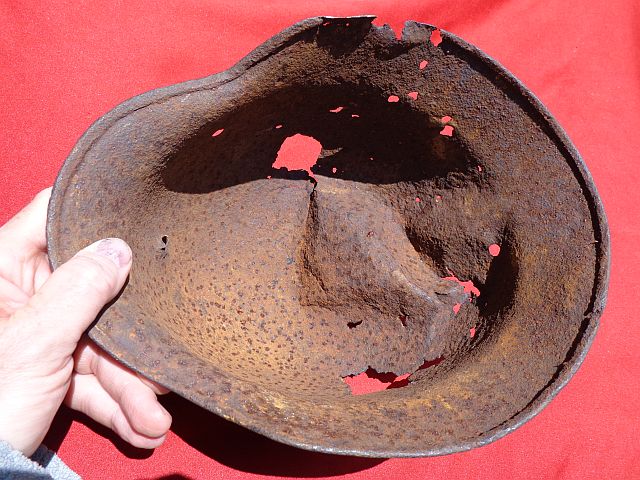
.jpg)
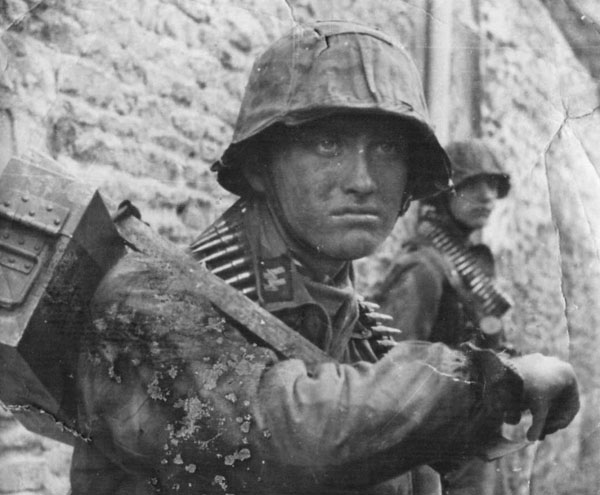
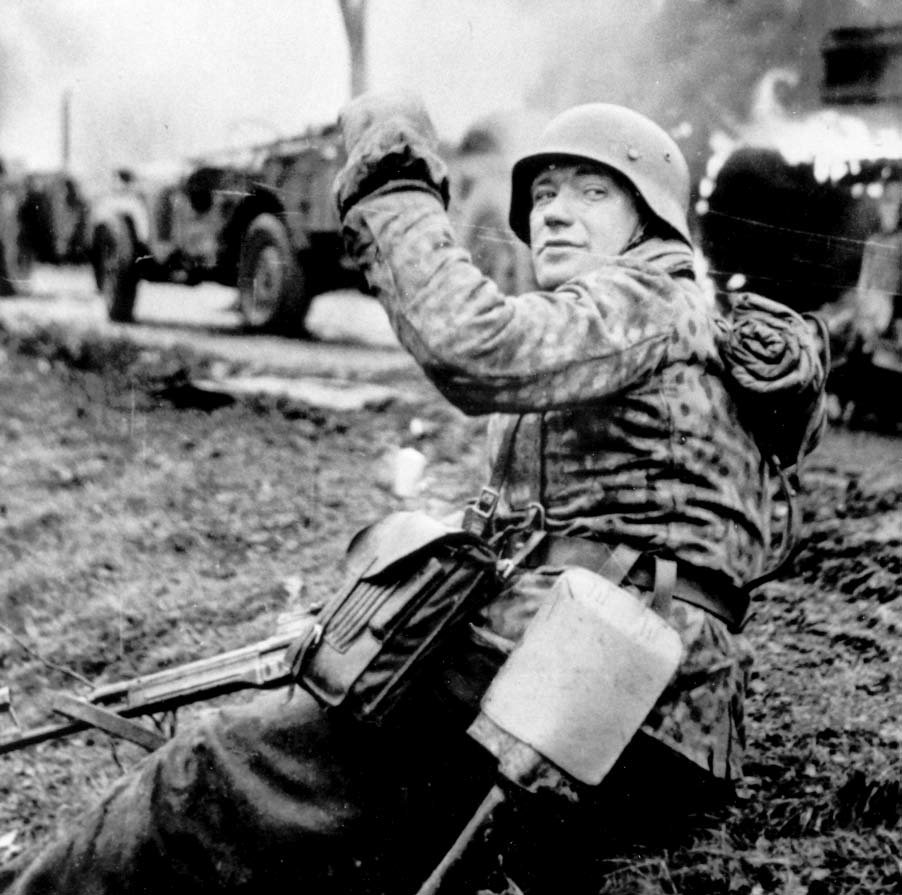
FANTASTIC HISTORIC BATTLEFIELD FIND
! Excavated WW2 German Whermacht Army "SDKFZ" HALFTRACK ARMOURED
VEHICLE License Plate !
( Recovered Stalingrad Battlefield )
How often do you get a chance to own for your collection a highly sought
after WW2 German HALFTRACK license plate relic that was recovered in
Stalingrad. The Sd.Kfz. 251 (Sonderkraftfahrzeug 251) half-track was
an armored fighting vehicle designed and first built by the Hanomag
company during World War II, and based on their earlier, unarmored Sd.Kfz.
11 vehicle. The larger of the pair (the Sd.Kfz. 250 being the lighter
one) of the fully armored wartime half-tracks of the Wehrmacht, the
Sd.Kfz. 251 was designed to transport the panzergrenadiers of the German
mechanized infantry corps into battle. Sd.Kfz. 251s were the most widely
produced German half-tracks of the war, with over 15,252 vehicles and
variants produced by various manufacturers, and were commonly referred
to simply as "Hanomags" by both German and Allied soldiers.
The Battle of Stalingrad was a major battle of World War II in which
Nazi Germany and its allies fought the Soviet Union for control of the
city of Stalingrad (now Volgograd) in southwestern Russia. The battle
took place between 23 August 1942 and 2 February 1943. It was among
the largest on the Eastern Front and was marked by its brutality and
disregard for military and civilian casualties. It was amongst the bloodiest
battles in the history of warfare with the higher estimates of combined
casualties amounting to nearly two million deaths. In its defeat, the
crippling losses suffered by Germany's military proved to be insurmountable
for the war. The battle was a turning point in the war, after which
the German forces attained no further strategic victories in the East.The
German offensive to capture Stalingrad commenced in late summer 1942,
supported by intensive Luftwaffe bombing which reduced much of the city
to rubble. The German offensive eventually became bogged down in house-to-house
fighting; and despite controlling over 90% of the city at times, the
Wehrmacht was unable to dislodge the last Soviet defenders clinging
tenaciously to the west bank of the Volga River.
LAYAWAY SOLD
D.S.
.jpg)
.jpg)
.jpg)
.jpg)


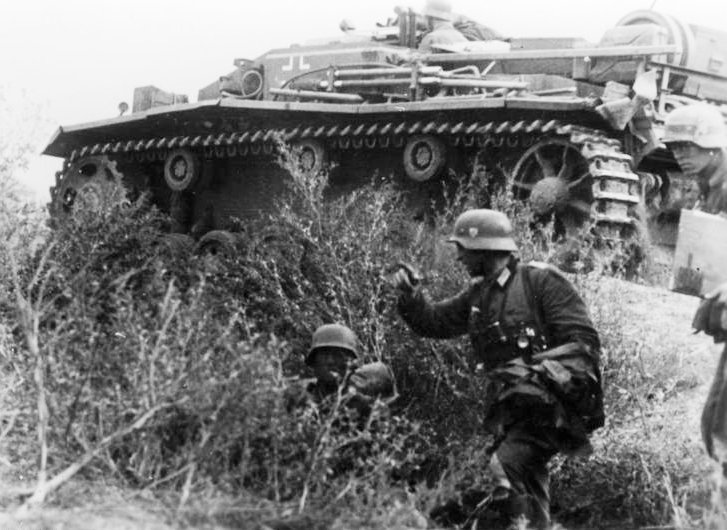
RARE ! WW2 German WAFFEN-SS
-"Nordland " MOTORCYCLE 2-Sided Official Stamped VEHICLE
LICENSE PLATE Relic ! - ( Recovered Kurland Pocket Battlefield )
Here is a recovered German Motorcycle Vehicle License Plate - 2 sided
with faint but visible eagle and swastika military stamp. These have
always been and scarce and are now highly collectible. Recoveredat the
surrender site of the German Army Group North trapped inside the Courland
Pocket and are in various condition of dug. Army Group Courland (German:
Heeresgruppe Kurland) was a German Army Group on the Eastern
Front which was created from remnants of the Army Group North, isolated
in the Courland Peninsula by the advancing Soviet Army forces during
the 1944 Baltic Offensive of the Second World War. The army group remained
isolated until the end of World War II in Europe. All units of the Army
Group were ordered to surrender by the capitulated Wehrmacht command
on 8 May 1945. At the time agreed for all German armed forces to end
hostilities (see the German Instrument of Surrender, 1945), the Sixteenth
and Eighteenth armies of Army Group Courland, commanded by General (of
Infantry) Carl Hilpert, ended hostilities at 23:00 on 8 May 1945 surrendering
to Leonid Govorov commander of the Leningrad Front. By the evening of
9 May 1945 189,000 German troops, including 42 officers in the rank
of general, in the Courland Pocket had surrendered.
SOLD
.jpg)
.jpg)
.jpg)
.jpg)
.jpg)
.jpg)

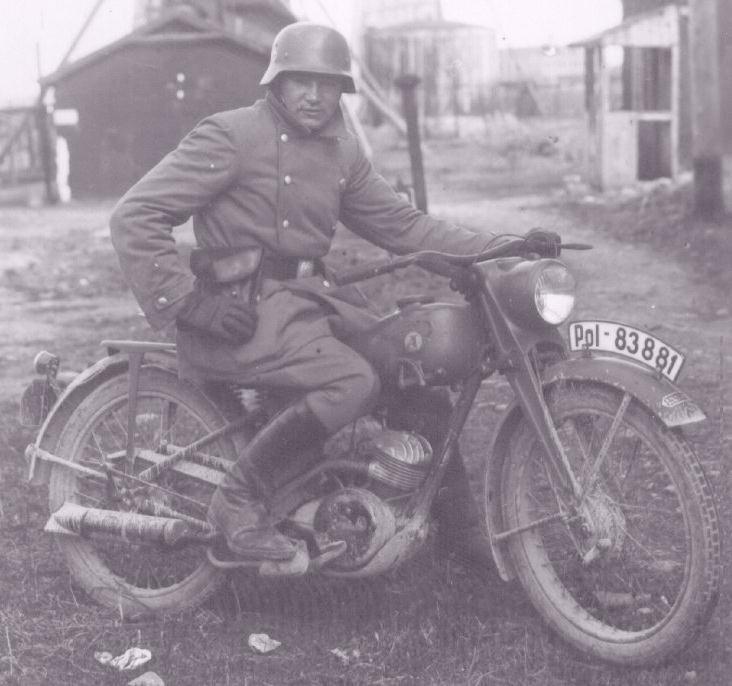
INCREDIBLE RARE German ID TAG - Waffen
-SS Nazi 1st SS-Freiwilligen-Panzergrenadier-Division NARVA -
( Recovered Tannenberg Line Battlefield )
Highly Desireable Ground Dug German Waffen-SS ID TAG 1st SS-Freiwilligen
Panzergrenadier Division Narwa. Solid Condition with blood type and
serial number visible. The Battle of Narva was a military
campaign between the German Army Detachment "Narwa" and the
Soviet Leningrad Front fought for possession of the strategically important
Narva Isthmus on 2 February – 10 August 1944 during World War
II.The campaign took place in the northern section of the Eastern Front
and consisted of two major phases: the Battle for Narva Bridgehead (February
to July 1944) and the Battle of Tannenberg Line (July–August 1944).
The Soviet Kingisepp–Gdov Offensive and Narva Offensives (15–28
February, 1–4 March and 18–24 March) were part of the Red
Army Winter Spring Campaign of 1944. Following Joseph Stalin's "Broad
Front" strategy, these battles coincided with the Dnieper–Carpathian
Offensive (December 1943 – April 1944) and the Lvov–Sandomierz
Offensive (July–August 1944). A number of foreign volunteers and
local Estonian conscripts participated in the battle as part of the
German forces. By giving its support to the German illegal conscription
call, the Estonian resistance movement had hoped to recreate a national
army and restore the independence of the country. As a continuation
of the Leningrad–Novgorod Offensive of January 1944, the Soviet
Estonian operation pushed the front westward to the Narva River, aiming
to destroy the Army Detachment "Narwa" and to thrust deep
into Estonia. The Soviet units established a number of bridgeheads on
the opposite bank of the river in February. Subsequent attempts failed
to expand their toehold. German counterattacks annihilated the bridgeheads
to the north of Narva and reduced the bridgehead south of the town,
stabilizing the front until July 1944. The Soviet Narva Offensive (July
1944) led to the capture of the city forcing the German troops to retreat
to their prepared Tannenberg Defence Line in the Sinimäed hills
16 kilometres from Narva. In the ensuing fierce Battle of Tannenberg
Line, the German army group held its ground. Stalin's main strategic
goal — a quick recovery of Estonia as a base for air and seaborne
attacks against Finland and an invasion of East Prussia — was
not achieved. As a result of the tough defence of the German forces.
SOLD
.jpg)
.jpg)
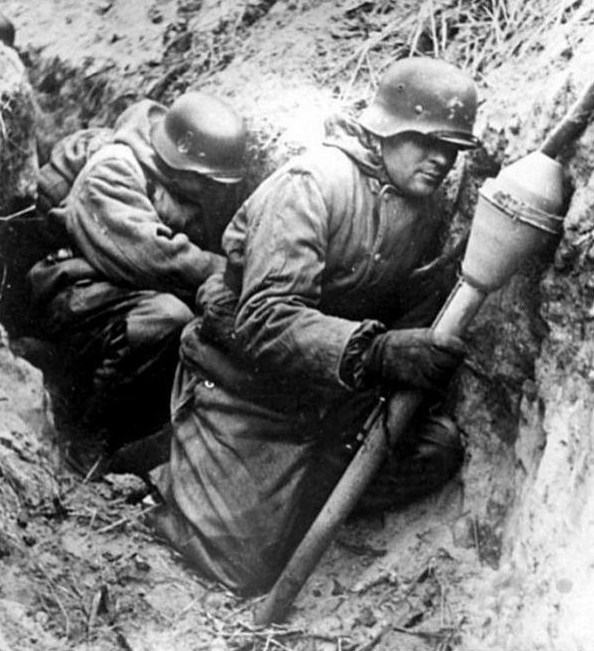

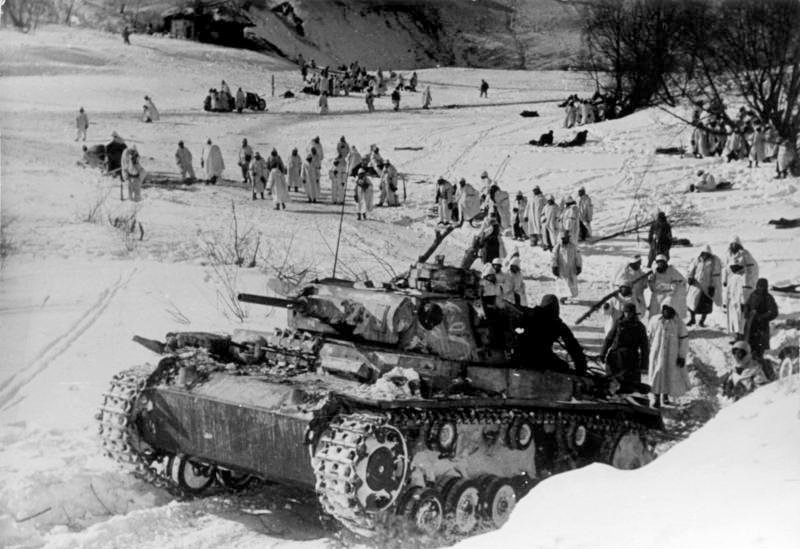
RARE Pacific Island Recovery - JAPANESE IMPERIAL ARMY HELMET Type 90 RELIC Condition !
The Battle of Okinawa, codenamed
Operation Iceberg, was fought on the Ryukyu Islands
of Okinawa and was the largest amphibious assault in the Pacific War
of World War II.The 82-day-long battle lasted from early April until
mid-June 1945. After a long campaign of island hopping, the Allies were
approaching Japan, and planned to use Okinawa, a large island only 340
mi (550 km) away from mainland Japan, as a base for air operations on
the planned invasion of Japanese mainland (coded Operation Downfall).
Four divisions of the U.S. 10th Army (the 7th, 27th, 77th, and 96th)
and two Marine Divisions (the 1st and 6th) fought on the island while
the 2nd Marine Division remained as an amphibious reserve and was never
brought ashore. The invasion was supported by naval, amphibious, and
tactical air forces. The battle has been referred to as the "Typhoon
of Steel" in English.The nicknames refer to the ferocity
of the fighting, the intensity of kamikaze attacks from the
Japanese defenders, and to the sheer numbers of Allied ships and armored
vehicles that assaulted the island. The battle resulted in the highest
number of casualties in the Pacific Theater during World War II. Japan
lost over 100,000 soldiers, who were either killed, captured or committed
suicide, and the Allies suffered more than 65,000 casualties of all
kinds. Simultaneously, tens of thousands of local civilians were killed,
wounded, or committed suicide. The atomic bombings of Hiroshima and
Nagasaki caused Japans surrender just weeks after the end of the fighting
at Okinawa.
SOLD
.jpg)
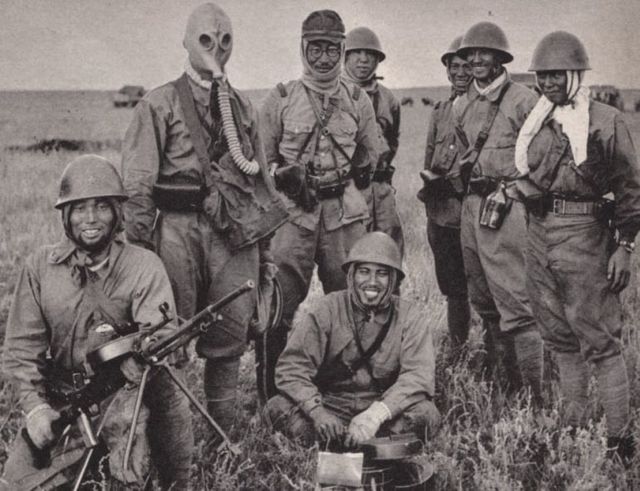
.jpg)
HISTORIC WW2 German Battlefield Dug
Relic IRON CROSS 2nd Class AWARD - ( Recovered Battlefield of Berlin
)
The forces available to General Weidling for the city's defence included
roughly 45,000 soldiers in several severely depleted German Army (Wehrmacht
Heer) and Armed SS (Waffen-SS) divisions.These divisions were supplemented
by the police force, boys in the compulsory Hitler Youth, and the Volkssturm
Many of the 40,000 elderly men of the Volkssturm had been in the army
as young men and some were veterans of World War I. Hitler appointed
SS Brigadeführer Wilhelm Mohnke the Battle Commander for the central
government district that included the Reich Chancellery and Führerbunker
He had over 2,000 men under his command. Weidling organised the defences
into eight sectors designated 'A' through to 'H' each one commanded
by a colonel or a general, but most had no combat experience.[To the
west of the city was the 20th Infantry Division. To the north of the
city was the 9th Parachute Division To the north-east of the city was
the Panzer Division Müncheberg. To the south-east of the city and
to the east of Tempelhof Airport was the 11th SS Panzergrenadier Division
Nordland The reserve, 18th Panzergrenadier Division, was in Berlin's
central district. On 23 April, Berzarin's 5th Shock Army and Katukov's
1st Guards Tank Army assaulted Berlin from the south east and, after
overcoming a counterattack by the German LVI Panzer Corps, reached the
Berlin S-Bahn ring railway on the north side of the Teltow Canal by
the evening of 24 April. During the same period, of all the German forces
ordered to reinforce the inner defences of the city by Hitler, only
a small contingent of French SS volunteers under the command of SS Brigadeführer
Gustav Krukenberg arrived in Berlin. During 25 April, Krukenberg was
appointed as the commander of Defence Sector C, the sector under the
most pressure from the Soviet assault on the city.
SOLD
.jpg)
.jpg)
.jpg)

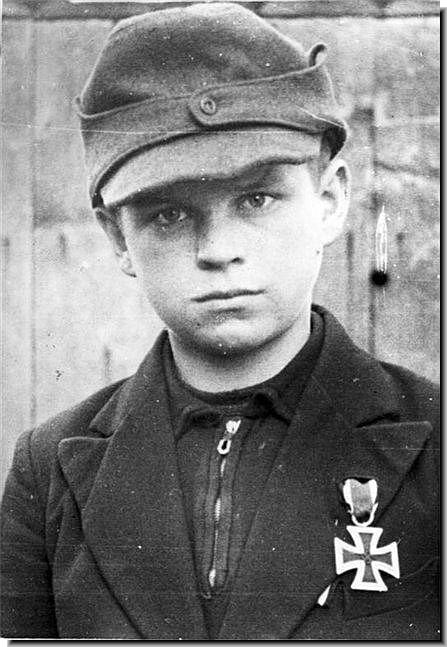
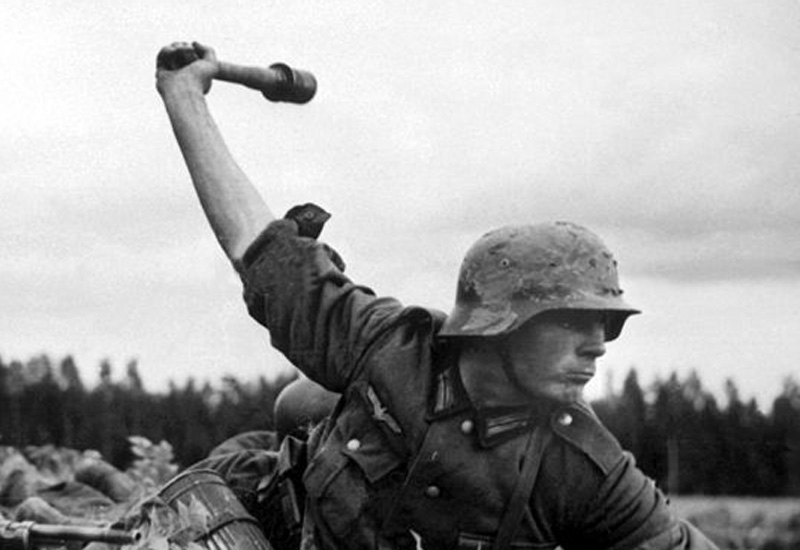
NICE Ground Battlefield Excavated
WW2 German "LUFTWAFFE" Ground Troops RELIC - ( Stalingrad
Battlefield Recovery )
Here is a nice German Luftwaffe Buckle Recovered Stalingrad Battlefield.
The Battle of Stalingrad was a major battle of World War II in which
Nazi Germany and its allies fought the Soviet Union for control of the
city of Stalingrad (now Volgograd) in southwestern Russia. The battle
took place between 23 August 1942 and 2 February 1943. It was among
the largest on the Eastern Front and was marked by its brutality and
disregard for military and civilian casualties. It was amongst the bloodiest
battles in the history of warfare with the higher estimates of combined
casualties amounting to nearly two million deaths. In its defeat, the
crippling losses suffered by Germany's military proved to be insurmountable
for the war. The battle was a turning point in the war, after which
the German forces attained no further strategic victories in the East.The
German offensive to capture Stalingrad commenced in late summer 1942,
supported by intensive Luftwaffe bombing which reduced much
of the city to rubble. The German offensive eventually became bogged
down in house-to-house fighting; and despite controlling over 90% of
the city at times, the Wehrmacht was unable to dislodge the
last Soviet defenders clinging tenaciously to the west bank of the Volga
River.
SOLD
.jpg)
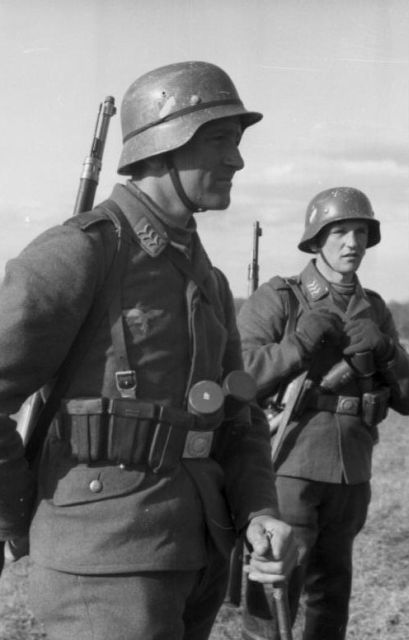
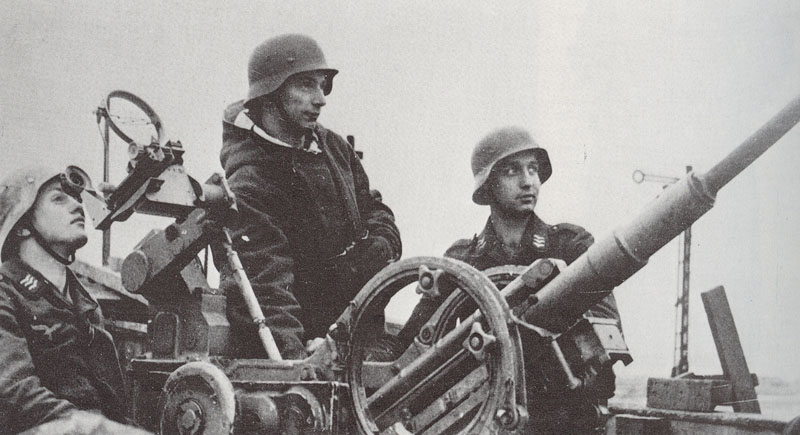
VERY
RARE WW2 Ground Dug Relic German ANTI-TANK "Panzerschreck Shield"
! ( Kursk Battlefield Recovery )
Here is a nice ground dug relic german anti-tank panzerschreck shield
that was excavated near Kursk Eastern front.The Battle of Kursk
took place when German and Soviet forces confronted each other on the
Eastern Front during World War II in the vicinity of the city of Kursk,
(450 kilometers / 280 miles south of Moscow) in the Soviet Union in July
and August 1943. It remains both the largest series of armored clashes,
including the Battle of Prokhorovka, and the costliest single day of aerial
warfare in history. It was the final strategic offensive the Germans were
able to mount in the east. The resulting decisive Soviet victory gave
the Red Army the strategic initiative for the rest of the war. The Germans
hoped to shorten their lines by eliminating the Kursk salient (also known
as the Kursk bulge), created in the aftermath of their defeat at the Battle
of Stalingrad. They envisioned pincers breaking through its northern and
southern flanks to achieve a great encirclement of Red Army forces. The
Soviets, however, had intelligence of the German Army's intentions, provided
in part by the British. This and German delays to wait for new weapons,
mainly the Tiger heavy tank and what would become the first significant
battlefield appearance of the new Panther medium tank,gave the Red Army
time to construct a series of dense lines and gather large reserve forces
for a strategic counterattack..
SOLD
.jpg)
.jpg)
.jpg)
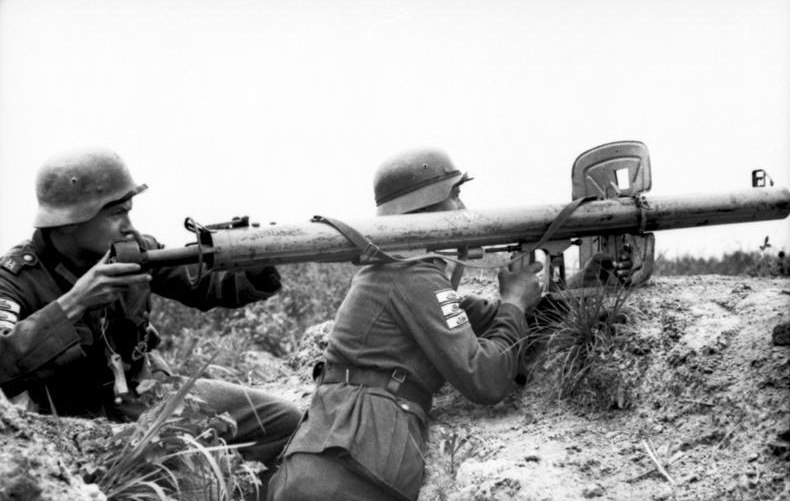
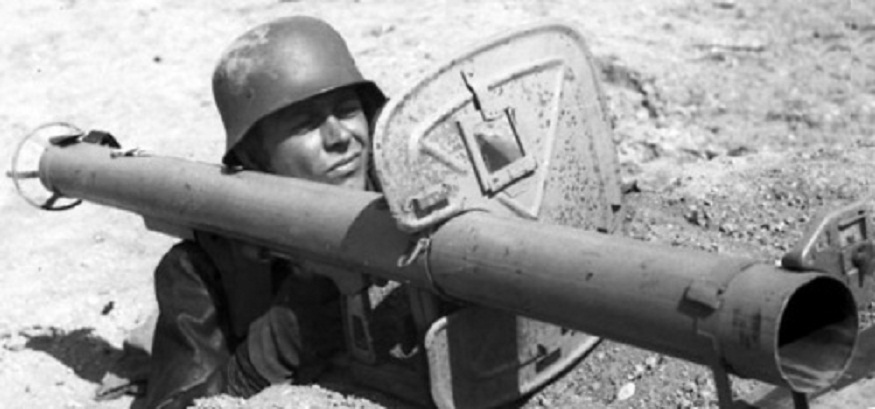
RARE Lot of German LUFTWAFFE FLYING
PERMITS - Ground Dug Relics - Recovered STALINGRAD POCKET
Here is an original pair of ground dug Luftwaffe Flying Permit Chits
that were recovered Stlingrad. The permits allowed night flying only
to prevent further loss of valuable aircraft. Because of the Soviet
pincer attack, about 230,000 German and Romanian soldiers, as well as
the Croatian 369th Reinforced Infantry Regiment and other volunteer
subsidiary troops, found themselves trapped inside the resulting pocket.
Inside the pocket (German: kessel) there also were the surviving
Soviet civilians—around 10,000, and several thousand Soviet soldiers
the Germans had taken captive during the battle. Not all German soldiers
from Sixth Army were trapped; 50,000 were brushed aside outside the
pocket. The encircling Red Army units immediately formed two defensive
fronts: a circumvallation facing inward, to defend against any breakout
attempt, and a contravallation facing outward, to defend against any
relief attempt. The Sixth Army was the largest unit of this type in
the world, almost twice as large as a regular German army. Also trapped
in the pocket was a corps of the Fourth Panzer Army. It should have
been clear that supplying the pocket by air was impossible -- the maximum
117.5 tons they could deliver a day was less than the 800 tons/day needed
by the pocket. To supplement the limited number of Junkers Ju 52 transports,
the Germans equipped aircraft wholly inadequate for the role, such as
the bomber He-177 (some bombers performed adequately -- the Heinkel
He-111 proved to be quite capable and was a lot faster than the Ju 52).
But Hitler backed Göring's plan and reiterated his order of "no
surrender" to his trapped armies.The air supply mission failed.
Appalling weather conditions, technical failures, heavy Soviet anti-aircraft
fire and fighter interceptions led to the loss of 488 German aircraft.
The Luftwaffe failed to achieve even the maximum supply capacity of
117 tons that it was capable of. An average of 94 tons of supplies per
day was delivered to the trapped German Army. Even then, it was often
inadequate or unnecessary; one aircraft arrived with 20 tonnes of Vodka
and summer uniforms, completely useless in their current situation.
The transport aircraft that did land safely were used to evacuate technical
specialists and sick or wounded men from the besieged enclave (some
42,000 were evacuated in all). The Sixth Army slowly starved. Pilots
were shocked to find the troops assigned to offloading the planes too
exhausted and hungry to unload food. General Zeitzler, moved by the
troops' plight at Stalingrad, began to limit himself to their slim rations
at meal times. After a few weeks of such a diet he'd grown so emaciated
that Hitler, annoyed, personally ordered him to start eating regular
meals again.The expense to the Transportgruppen was heavy.
Some 266 Junkers Ju 52s were destroyed, one-third of the fleets strength
on the Soviet-German front. The He 111 gruppen lost 165 aircraft
in transport operations. Other losses included 42 Junkers Ju 86s, nine
Fw 200 "Condors", five He 177 bombers and a single Ju 290.
The Luftwaffe also lost close to 1,000 highly experienced bomber crew
personnel.
SOLD
.jpg)
.jpg)
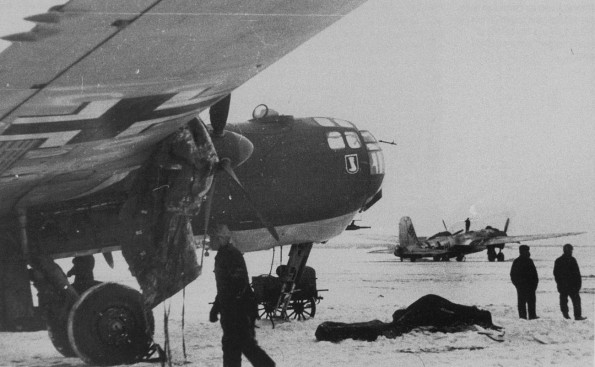
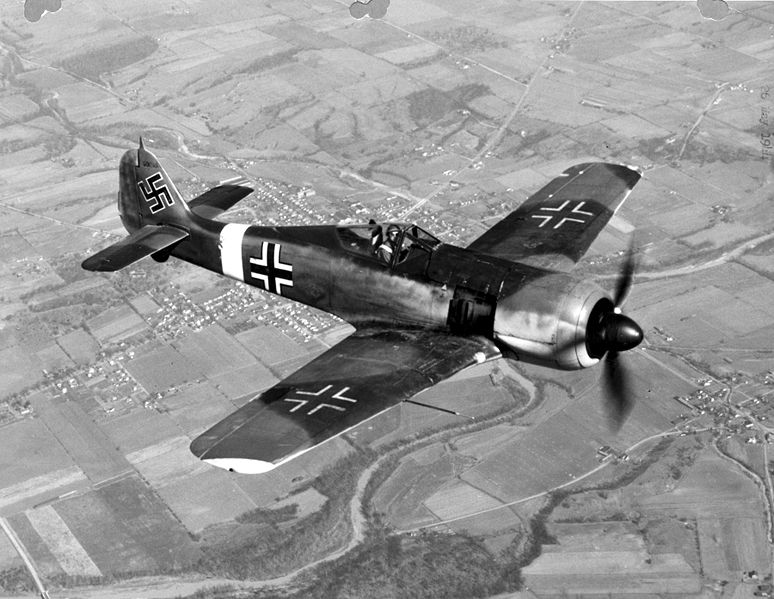
EXTREMELY RARE Ground Dug Condition BATTLEFIELD ARTIFACT - WWII German CC CLOSE COMBAT BADGE - FLL PEEKHAUS - ( Recovered BATTLE OF BERLIN )
Here is an extremely rare badge recovered from Seelow Heights. The badge is the zinc variety maker marked Peekhaus Berlin FLL in Circles.Broken bar pin and some oxidation of zinc but incredible relic that displays well. These are highly desireable in dug condition. The Battle of Berlin, designated the Berlin Strategic Offensive Operation by the Soviet Union, was the final major offensive of the European Theatre of World War II Starting on 16 January 1945, the Red Army breached the German front as a result of the Vistula–Oder Offensive and advanced westward as much as 40 kilometres a day, through East Prussia, Lower Silesia, East Pomerania, and Upper Silesia, temporarily halting on a line 60 kilometres east of Berlin along the Oder River. During the offensive, two Soviet fronts (army groups attacked Berlin from the east and south, while a third overran German forces positioned north of Berlin. The Battle in Berlin lasted from 20 April 1945 until the morning of 2 May.The first defensive preparations at the outskirts of Berlin were on 20 March, when the newly appointed commander of the Army Group Vistula, General Gotthard Heinrici correctly anticipated that the main Soviet thrust would be made over the Oder River. Before the main battle in Berlin commenced, the Soviets managed to encircle the city as a result of the battles of the Seelow Heights and Halbe. During 20 April 1945, the 1st Belorussian Front led by Marshal Georgy Zhukov started shelling Berlin's city centre, while Marshal Ivan Konev's 1st Ukrainian Front had pushed in the north through the last formations of Army Group Centre. The German defences were mainly led by Helmuth Weidling and consisted of several depleted, badly equipped, and disorganised Wehrmacht and Waffen-SS divisions, as well as many Volkssturm and Hitl Youth members. Within the next days, the Soviets were rapidly advancing through the city and were reaching the city centre, conquering the Reichstag on 30 April after fierce fighting. Before the battle was over, German Führer Adolf Hitler and a number of his followers committed suicide. The city's defenders finally surrendered on 2 May. However, fighting continued to the north-west, west and south-west of the city until the end of the war in Europe on 8 May (9 May in the Soviet Union) as German units fought westward so that they could surrender to the Western Allies rather than to the Soviets.
SOLD
.jpg)
.jpg)
.jpg)
.jpg)
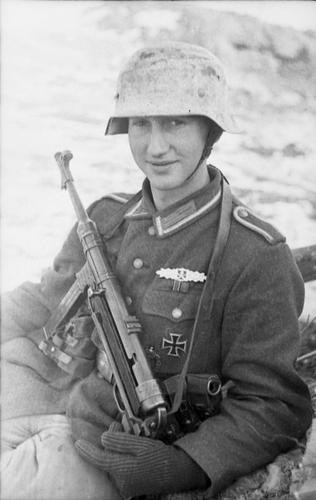
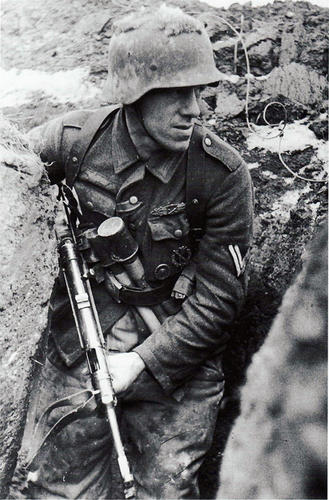
RARE Ground Dug Battlefield Relic
German Waffen-SS SD M35 Helmet - ( Recovered Tannenberg Battle Line
, Russian Front )
Here is a rare relic condition DD SS Waffen Helmet Shell Battlefield
recovery from Tannenberg Line, Eastern Front. The helmet has some wicked
battle damage and bullet strikes and displays incredible. The runes
are faint but nicely visible. The Battle of Tannenberg Line (German:
Die Schlacht um die Tannenbergstellung; Estonian: Sinimägede
lahing; Russian: Битва за
линию «Танненберг»)
was a military engagement between the German Army Detachment "Narwa"
and the Soviet Leningrad Front fought for the strategically important
Narva Isthmus from 25 July to 10 August 1944. The battle was fought
on the Eastern Front during World War II. The strategic aim of the Soviet
Estonian Operation was to reoccupy Estonia as a favourable base for
invasions of Finland and East-Prussia. Several Western scholars refer
to it as the Battle of the European SS for the 24 volunteer
infantry battalions from Denmark, East Prussia, Flanders, Holland, Norway,
and Wallonia within the Waffen-SS. Roughly a half of the infantry consisted
of the local Estomia conscripts motivated to resist the looming Soviet
re-occupation. The German force of 22,250 men held off the Soviet advance
of 136,830 troops. As the Soviet forces were constantly reinforced,
the casualties of the battle were 150,000–200,000 wounded and
dead Soviet troops and 157–164 Soviet tanks.
SOLD
.jpg)
.jpg)
.jpg)
.jpg)

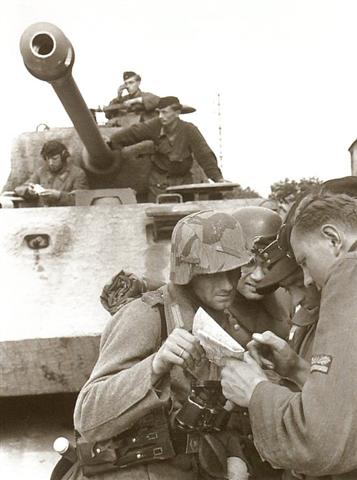
ABSOUTELY STUNNING ! Veteran
GI Bringback RELIC Large Size German M35/40 SS DD Solid Condition
with Liner and Leather !
( Bunker Recovered Manneheim/Sandhofen )
Here is a fascinating German SS DD Helmet Model M35/40 Large Size Helmet
complete with metal and leather liner. Quite possibly an Allgemeine-SS
Helmet with concentration camp unit ties. The helmet was taken
in trade by a GI from a German worker who found it in an abandoned
bunker in Sanadhofen/Mannheim.The airfield in Sandhofen was closed to
the public and rebuilt as the Fliegerhorst-Kaserne in 1937
as a Luftwaffe base. At the beginning of World War II, the II/JG 53
(2nd Group, Jagdgeschwader 53) fighter unit "Pik-As" (Ace
of Spades) was based here, commanded by one of Germany's top combat
pilots, Hans Moelders. This unit operated 43 new Bf109 E-1's fighter
aircraft at the start of the war. Also stationed at the airbase on the
first day of the war was one staffel (squadron) of JG 72 operating 16
of the older Ar68 biplane fighters then being used as a primitive night
fighter. In September 1944 a concentration camp was installed on the
site which was operated and guarded by the SS, holding 80 POWs from
Poland, Luxembourg and Russia.
SOLD
.jpg)
.jpg)
.jpg)
.jpg)
.jpg)

.jpg)
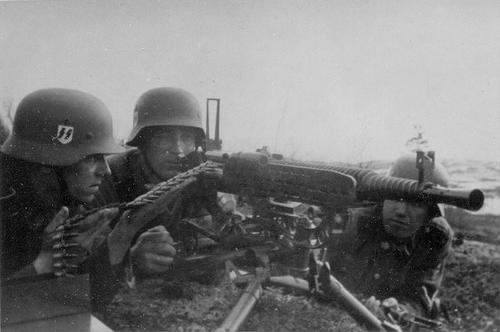
WOW ! HISTORICALLY IMPORTANT WW2 MUSEUM LOT ! - Museum Provenance Tagged US 88TH ( BLUE DEVILS ) Division Battlefield Relic Lot - US M1 Helmet Shell and Liner along with a battle damaged mess kit lot ( Recovered Laiatico, Italy )
Here is an incredible offering. A museum lot of 88th Division items of the famed Blue Devil Division a Battlefield recovered Helmet and liner along with a battle damaged mess lit that was picked up in 1964 by a Staff Sergeant serving in Laiatico, Italy.The 88th Infantry Division was one of the first all draftee divisions to enter the war. Formed at Camp Gruber, Oklahoma, the division arrived at Casablanca, French Morocco, 15 December 1943, and moved to Magenta, Algeria, on the 28th for intensive training. It arrived at Naples, Italy, 6 February 1944, and concentrated around Piedimonte d'Alife for combat training. An advance element went into the line before Cassino, 27 February, and the entire unit relieved British elements along the Garigliano River in the Minturno area, 5 March. A period of defensive patrols and training followed.On 11 May, the 88th drove north to take Spigno, Mount Civita, Itri, Fondi, and Roccagorga, reached Anzio, 29 May, and pursued the enemy into Rome, being the first American unit into the city on 4 June, after a stiff engagement on the outskirts of the city. An element of the 88th is credited with being first to enter the Eternal City. After continuing across the Tiber to Bassanelio the 88th retired for rest and training, 11 June. The Division went into defensive positions near Pomerance, 5 July, and launched an attack toward Volterra on the 8th, taking the town the next day. Laiatico fell on the 11th, Villamagna on the 13th, and the Arno River was crossed on the 20th although the enemy resisted bitterly.After a period of rest and training, the Division opened its assault on the Gothic Line, 21 September 1944, and advanced rapidly along the Firenzuola-Imola road, taking Mount Battaglia (Casola Valsenio, RA) on the 28th. The enemy counterattacked savagely and heavy fighting continued on the line toward the Po Valley. The strategic positions of Mount Grande and Farnetto were taken, 20 and 22 October. From 26 October 1944 to 12 January 1945, the 88th entered a period of defensive patrolling in the Mount Grande-Mount Cerrere sector and the Mount Fano area. From 24 January to 2 March 1945, the Division defended the Loiano-Livergnano area and after a brief rest returned to the front. The drive to the Po Valley began on 15 April. Monterumici fell on the 17th after an intense barrage and the Po River was crossed, 24 April, as the 88th pursued the enemy toward the Alps. The cities of Verona and Vicenza were captured on the 25th and 28th and the Brenta River was crossed, 30 April. The 88th was driving through the Dolomite Alps toward Innsbruck, Austria where it linked up with the 103rd Infantry Division, when the hostilities ended on 2 May 1945.The unit was in combat for 344 days and sustained 15,173 casualties (killed, wounded or missing).
SOLD
.jpg)
.jpg)
.jpg)
.jpg)
.jpg)
.jpg)
.jpg)
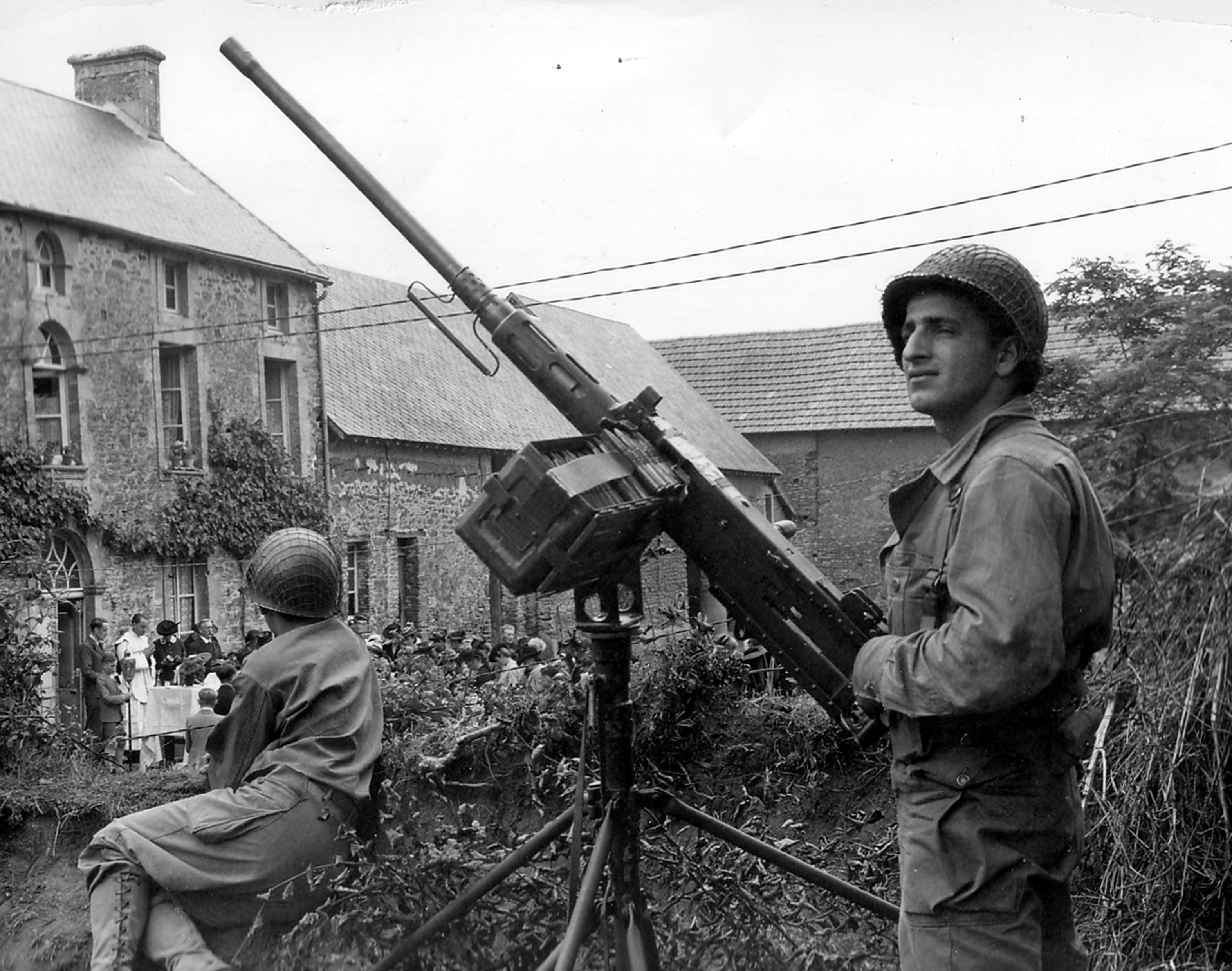
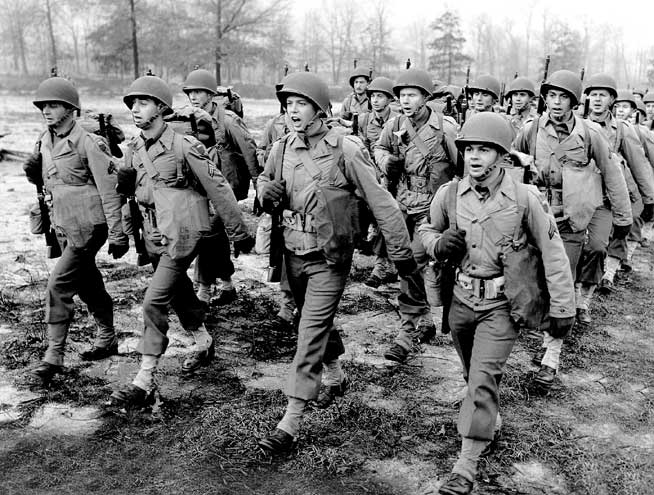
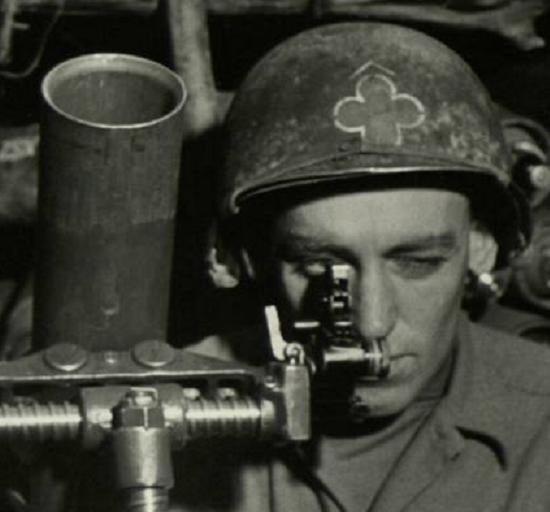
RARE and HIGHLY COLLECTIBLE ! - Ground
Dug German CC Close Combat Badge Award with t-bar pinback intact - (
Recovered Surrender Site Army Group North Courland Pocket Eastern Front )
Here is a nice recent find from the Courland Battlefield. A ground
dug German WW2 close combat badge award zinc/silver, in nice condition
with pin and catch still intact. Army Group Courland (German: Heeresgruppe
Kurland) was a German Army Group on the Eastern Front which was
created from remnants of the Army Group North, isolated in the Courland
Peninsula by the advancing Soviet Army forces during the 1944 Baltic
Offensive of the Second World War. The army group remained isolated
until the end of World War II in Europe. All units of the Army Group
were ordered to surrender by the capitulated Wehrmacht command on 8
May 1945. At the time agreed for all German armed forces to end hostilities
(see the German Instrument of Surrender, 1945), the Sixteenth and Eighteenth
armies of Army Group Courland, commanded by General (of Infantry) Carl
Hilpert, ended hostilities at 23:00 on 8 May 1945 surrendering to Leonid
Govorov commander of the Leningrad Front. By the evening of 9 May 1945
189,000 German troops, including 42 officers in the rank of general,
in the Courland Pocket had surrendered.
SOLD
.jpg)
.jpg)
.jpg)



Here is a historic find. A ground dug relic US M1 Captains Helmet recovered in the area of Stavelot. Stavelot and its bridge were open for the taking. The only combat troops in town at this time were a squad from the 291 Engineer Combat Bn., which had been sent from Malmedy to construct a roadblock on the road leading to the bridge. For some reason Peiper's advance guard halted on the south side of the river, one of those quirks in the conduct of military operations. Months after the event, Peiper told interrogators that his force had been checked by American antitank weapons covering the narrow approach to the bridge, that Stavelot was "heavily defended". But his detailed description of what happened when the Germans attacked to take the town and bridge shows he was confused in his chronology and he was thinking of events which transpired on Mon., Dec. 18. It is true that during the early evening of the 17th (Sun.) that three German tanks made a rush for the bridge, but when the leader hit a hasty mine field laid by American engineers the others turned back - nor were they seen for the rest of the night. Perhaps the sight of the numerous American vehicles parked in the streets left Peiper to believe that the town was held in force and that a night attack held the only chance of taking the bridge intact. If so, the single effort made by the German point is out of keeping with Peiper's usual ruthless drive and daring. Whatever the reason - Peiper's Kampfgruppe came to a halt on Sun. night, Dec. 17 at the Stavelot bridge.
SOLD
.jpg)
.jpg)
.jpg)
.jpg)
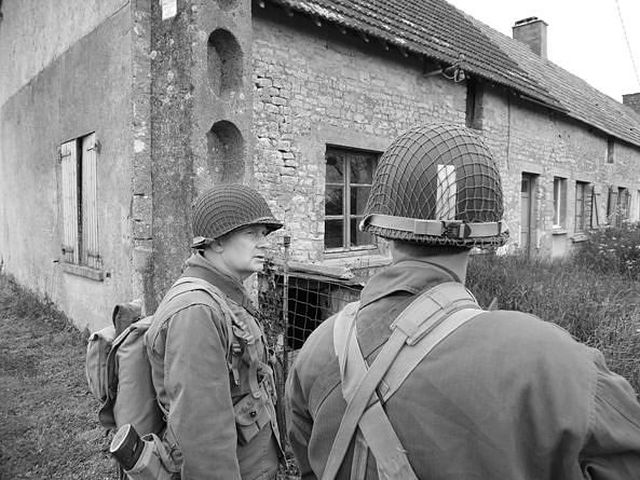
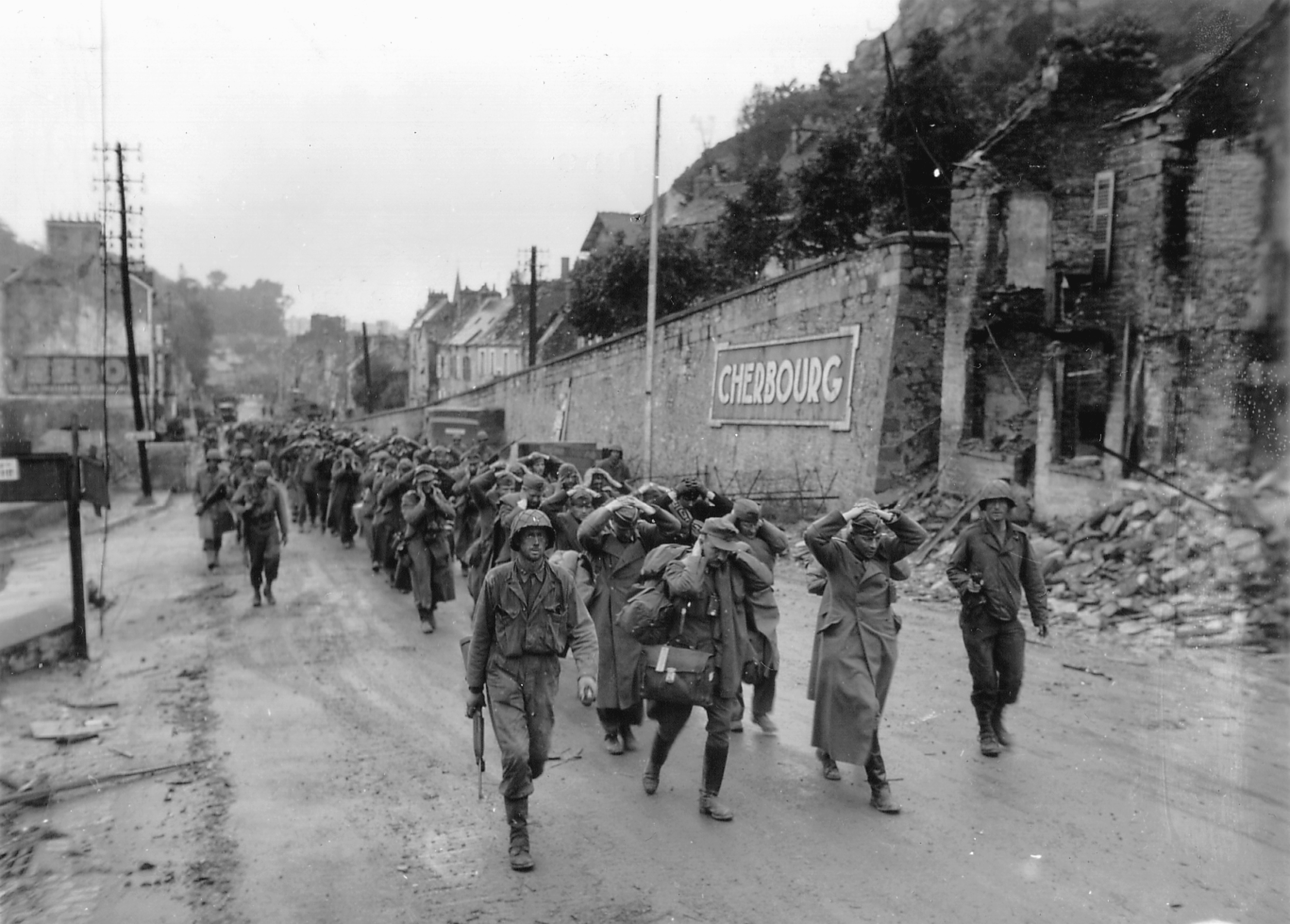

FANTASTIC WW2 " Battlefield Dug"
RELIC German Waffen-SS DD M40 HELMET SHELL - ( Recovered Tannenberg
Line Eastern Front )
Here is a rough but rare relic condition SD SS Waffen Helmet Shell Battlefield
recovery from Tannenberg Line, Eastern Front. The helmet has some wicked
battle damage and bullet strikes and displays incredible. The runes
are faint but nicely visible. The Battle of Tannenberg Line (German:
Die Schlacht um die Tannenbergstellung; Estonian: Sinimägede lahing;
Russian: ????? ?? ????? «??????????») was a military engagement
between the German Army Detachment "Narwa" and the Soviet
Leningrad Front fought for the strategically important Narva Isthmus
from 25 July to 10 August 1944. The battle was fought on the Eastern
Front during World War II. The strategic aim of the Soviet Estonian
Operation was to reoccupy Estonia as a favourable base for invasions
of Finland and East-Prussia. Several Western scholars refer to it as
the Battle of the European SS for the 24 volunteer infantry battalions
from Denmark, East Prussia, Flanders, Holland, Norway, and Wallonia
within the Waffen-SS. Roughly a half of the infantry consisted of the
local Estomia conscripts motivated to resist the looming Soviet re-occupation.
The German force of 22,250 men held off the Soviet advance of 136,830
troops. As the Soviet forces were constantly reinforced, the casualties
of the battle were 150,000–200,000 wounded and dead Soviet troops
and 157–164 Soviet tanks.
SOLD
.jpg)
.jpg)
.jpg)
.jpg)


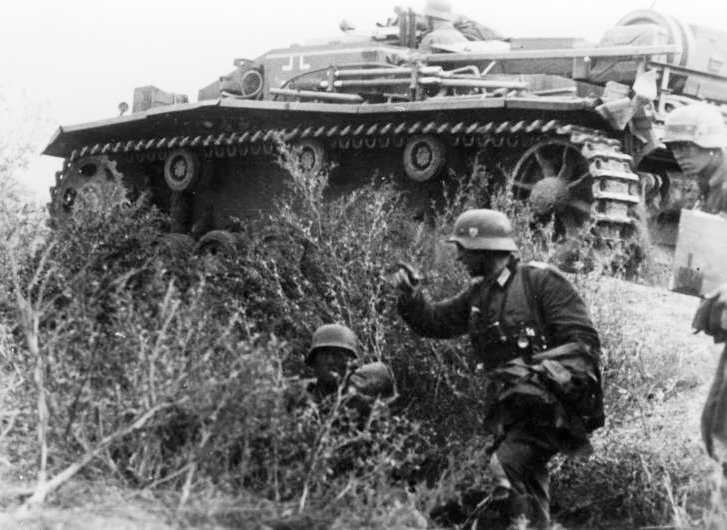
RARE Ground Dug Relic German Waffen-SS DD M35 Helmet - ( Recovered Tannenberg Line , Russian Front )
Here is a rough but rare relic condition recovery from Tannenberg Line, Eastern Front. The helmet has some minor battle damage some rust through on crown but displays incredible. The runes are faint but nicely visible. The Battle of Tannenberg Line (German: Die Schlacht um die Tannenbergstellung; Estonian: Sinimägede lahing; Russian: Битва за линию «Танненберг») was a military engagement between the German Army Detachment "Narwa" and the Soviet Leningrad Front fought for the strategically important Narva Isthmus from 25 July to 10 August 1944. The battle was fought on the Eastern Front during World War II. The strategic aim of the Soviet Estonian Operation was to reoccupy Estonia as a favourable base for invasions of Finland and East-Prussia. Several Western scholars refer to it as the Battle of the European SS for the 24 volunteer infantry battalions from Denmark, East Prussia, Flanders, Holland, Norway, and Wallonia within the Waffen-SS. Roughly a half of the infantry consisted of the local Estomia conscripts motivated to resist the looming Soviet re-occupation. The German force of 22,250 men held off the Soviet advance of 136,830 troops. As the Soviet forces were constantly reinforced, the casualties of the battle were 150,000–200,000 wounded and dead Soviet troops and 157–164 Soviet tanks.
SOLD
.jpg)
.jpg)

.jpg)

INCREDIBLE !! RARE WW2 Large Size " NAMED" GERMAN WAFFEN-SS SD with partial liner remains and visible paint HELMET Shell ( Eastern Front Recovery )
Extract from the memoirs of the Eastern Front
by Wolfram von Beck On 9th November 1943, General Student came to see
us and on a sports field near Rome he issued orders for us to move to
Russia. The next day we boarded a train from Rome to Zitomir. When we
finally arrived in Russia, we received orders to relieve a Waffen SS
unit, which had almost been destroyed during the fighting. I was the
staff runner for Leutnant Bickel’s 1.Kompanie. He told me to go
and obtain a situation report from the Waffen SS commander. In order
to reach the SS command post quickly I decided not to use the road but
to follow the sound of guns through a wooded area. When I finally reached
the commander he reprimanded me about the absence of my unit. He then
showed me which part of the frontline we were supposed to occupy. In
front of his command post sat a Kubelwagen. It was full of men just
about ready to leave. I asked the driver if I too could jump on to his
vehicle and hitch a ride. He replied that it would not be a problem
but asked if I could lift the Unterscharfuehrer so he would not fall
off the rear of the vehicle. I was under the impression that these men
were wounded. They were not, they were all dead. The Waffen SS never
left their dead on the battlefield. Even their wounded men had to march.
I was glad to finally leave this hearse behind me and after reporting
back to Leutnant Bickel the Kompanie moved forward into the line. Our
position was near a so-called runway, a clearing in the middle of a
large forest. On the other side of the runway, Ivan was waiting.
After a day or so we made a dawn attack and drove the Russians from
in front of our positions. Suddenly, we received well aimed fire from
a thicket of trees. I quickly noticed the source of fire: the Russians
had removed the lowest branches from the trees so they not only had
a good field of fire but also a good view of any attacker. Myself and
a comrade, turned their flank and finished them off from behind. My
comrade, a machine gunner was hit. While he was dying he passed me his
wallet. All he could say was “Mama, Mama”. I took the wallet
and handed it in to Battalion. I do not know if it ever reached “Mama”.
We were rolling up the whole Russian trench line but we stopped in front
of a soil covered bunker which had not been inspected yet. For good
measure we threw in two grenades and after the detonation, three smiling
unbruised Russians came out. We were surprised that anyone could
survive such an attack but we naturally took them prisoner. Our unit
continued the offensive toward the direction of Kirovgrad. Before Novgorodka
we found ourselves alone, without friendly units on our flanks. Leutnant
Bickel ordered us to build a defensive perimeter on a nearby hilltop
for the night. I was now a number 2 machine gunner and the number 1
was my friend Gefreiter Fritz. We dug an emplacement for our machine
gun at the front of the hill. The Russians suddenly fired several shells
from an anti-tank gun, (called a Ratschbumm by the Landser, because
the sound of the shot and the hit were almost one). We joked that the
Russians certainly needed some target practice when after one detonation
I found an arm and half of my comrades chest in my lap. I lifted Gefreiter
Fritz to see if I could help him but he was already dead. I now dug
faster and deeper in order to get my machine gun in place. During this
same night, myself and Obergefreiter Zischka, who spoke fluent Russian,
crept up on the enemy positions so he could overhear the russians talking.
We noted the position of the enemy MG nests and the next morning we
attacked, driving the Russians out of Novgorodka.
SOLD
.jpg)
.jpg)
.jpg)
.jpg)
.jpg)


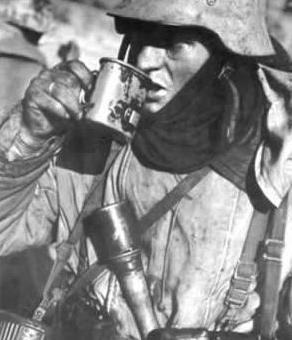
RARE AND HISTORIC Lot of Edged WEAPONS - 12th SS German Officers DAGGER
and a USGI Garand BAYONET - ( Recovered Bastogne, Battle of the Bulge
)
Here is a ghostly lot of "Edged Weapons" of opposing
armies from Bastogne. Ok even to find an excavated SS dagger is a needle
in a haystack, but to find one from Bastogne is fantastic even in this
rough a condition. The Officer Dagger was recovered 12th SS positions.
The USGI Garand Bayonet also from Bastogne makes a nice display lot.
The 12th SS Panzer Division Hitlerjugend ("Hitler Youth")
was a German Waffen-SS armoured division during World War II. The Hitlerjugend
was unique because the majority of its junior enlisted men were drawn
from members of the Hitler Youth, while the senior NCOs and officers
were generally veterans of the Eastern Front.The division, with 20,540
personnel, first saw action on 7 June 1944 as part of the German defense
of the Caen area during the Normandy campaign. The battle for Normandy
took its toll on the division and it came out of the Falaise pocket
with a divisional strength of 12,000 men.Following the invasion battles,
the division was sent to Germany for refitting. On 16 December 1944,
the division was committed against the US Army in the Battle of the
Bulge. After the failure of the Ardennes offensive the division was
sent east to fight the Red Army near Budapest. The 12th SS eventually
withdrew into Austria; on 8 May 1945, the surviving 10,000 men surrendered
to the US Army at Enns. At 7:20 am, Captain McLean reported that two
lieutenant colonels and a major approached troops of Major General Stanley
Eric Reinhart, announcing that within two hours the end of their column
would reach the city.The reputation of the division has been affected
by war crimes committed by members of the division during the early
battles in Normandy. Hitlerjugend was given a brief respite, but received
virtually no reinforcements or equipment. The division was soon thrown
back into battle, and took part in the fighting withdrawal to the Franco-Belgian
border. By September 1944, the division counted less than 2,000 men,
without armour or heavy equipment. On 6 September, Kurt Meyer was captured
by Belgian partisans. Meyer had removed his SS uniform and was wearing
the uniform of a regular German army officer. In the confusion of the
withdrawal, the division was unable to undertake a rescue attempt. SS-Obersturmbannführer
Hubert Meyer was placed in command of the division.In November 1944,
the division was pulled out of the line and sent to Neinburg in Germany,
where it was to be reformed. The majority of the much-needed reinforcements
were transferred Luftwaffe and Kriegsmarine personnel, and the reformed
division would never match the elite status it had boasted in the spring
of 1944. Late in the month, Hubert Meyer was replaced by SS-Obersturmbannführer
Hugo Kraas, and the division was attached to SS-Oberstgruppenführer
Sepp Dietrich's 6.SS-Panzer-Armee, which was forming up for Operation
Wacht Am Rhein (the Second Battle of the Ardennes, popularly known as
the Battle of the Bulge), a large-scale offensive to recapture Antwerp
and halt the Allied advance.The operation opened on 16 December 1944.
Kampfgruppe Peiper from the Leibstandarte SS Adolf Hitler led the assault,
breaking through the enemy lines. The HJ, which was to follow the Kampfgruppe
and exploit the breakthrough, became bogged down in traffic jams caused
by the 12.Volksgrenadier-Division. When the division reached the front,
it was met with heavy resistance from American troops stationed on the
Elsenborn Ridge. Despite several intense efforts, the division could
not budge the American defenders. As a result, the division was ordered
to swing left and follow the advance line of the remainder of the Leibstandarte
SS Adolf Hitler. American defenders prevented the division from reaching
its objective, and after the destruction of Kampfgruppe Peiper, the
advance of Dietrich's army altogether. Near the end of the year, the
HJ was shifted south to take part in the efforts to capture Bastogne,
and saw heavy fighting around the city. By 18 January 1945, the HJ,
along with all the German forces, had been pushed back to its starting
positions. Don't let this rare opportunity get away to add historic
Bastogne SS soldier artifacts to your personal collection. Bastogne
Battlefield Recovered 12TH SS HITLER JUGEND Positions.
SOLD
.jpg)
.jpg)
.jpg)


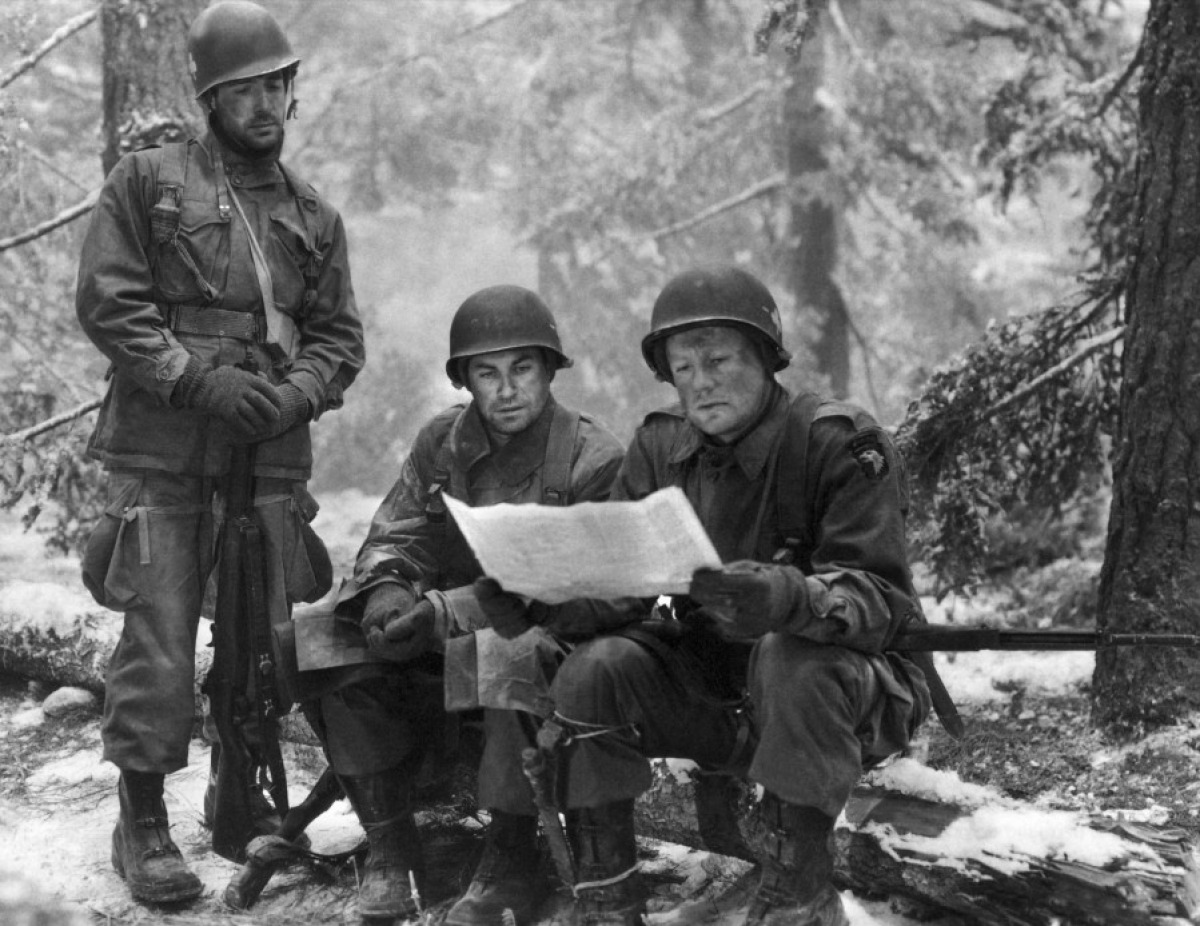

RARE WW2 Battlefield Recovered "
BATTLE DAMAGED " German M35/40 LUFTWAFFE SUMMER CAMO "Named
ID Painted " HELMET !
The Second Battle of Kharkov, so named by Wilhelm Keitel
was an Axis counter-offensive against the Red Army Izium bridgehead
offensive conducted 12–28 May 1942, on the Eastern Front during
World War II Its objective was to eliminate the Izium bridgehead (Russian:
Изюмский плацдарм)
over Seversky Donets, or the "Barvenkovo bulge" (Russian:
Барвенковский
выступ) which was one of the Soviet
offensive's staging areas. After a successful winter counter-offensive
that drove German troops away from Moscow, and also depleted the Red
Army's reserves, the Kharkov offensive was a new Soviet attempt to expand
upon their strategic initiative, although it failed to secure a significant
element of surprise Hitler immediately turned to the Luftwaffe
to help blunt the offensive. At this point, its premier close support
Korps was deployed in the Crimea, taking part in the siege
of Sevastopol. Fliegerkorps VIII (8th Air Corps) under the
command of Wolfram von Richthofen was ordered to deploy to Kharkov from
the Crimea, but the order was rescinded. In an unusual move, Hitler
kept it in the Crimea, but did not put the corps under the command of
Generaloberst Alexander Löhr’s Luftflotte 4
(Air Fleet 4), which already contained General der Flieger
Kurt Pflugbeil's Fliegerkorps VI (6th Air Corps) and Oberst
Wolfgang von Wild’s Fliegerführer Süd (Flying
Command South), a small anti-shipping command based in the Crimea. Instead,
he allowed von Richthofen to take charge of all operations over Sevastopol.
The siege in the Crimea was not over, and the Battle of the Kerch Peninsula
had not yet been won. Still, Hitler was pleased with the progress there
and content to keep von Richthofen where he was and withdraw air support
from Fligerkorps VIII in order to prevent a Soviet breakthrough
at Kharkov. The use of the Luftwaffe to compensate for the
German Army's lack of firepower indicated that the OKW saw the Luftwaffe
primarily as a ground support arm. This angered von Richthofen who complained
that the Luftwaffe "was the army’s whore".Now
that he was not being redeployed to Kharkov, Richthofen also complained
about the withdrawal of his units to the region, arguing that the Kerch
and Sevastopol battles were ongoing and owing to the transfer of aerial
assets to Kharkov, victory in the Crimea was no longer guaranteed. In
reality, the Soviet units at Kerch were already routed and the Axis
position at Sevastopol was comfortable.The news that powerful air support
was on its way to bolster the 6th Army boosted German morale. Army commanders,
such as Paulus and von Bock, placed so much confidence in the Luftwaffe
that they ordered their forces not to risk an attack without air support.
In the meantime, Fliegerkorps VI under the command of Pflugbeil,
was forced to use every available aircraft to stem the tide. Although
meeting more numerous Soviet air forces, he succeeded in winning air
superiority and limited the German ground forces' losses to Soviet aviation.
But the toll on crews was hard. Often, they flew from dawn until dusk.
Some crews flew more than 10 missions per day. By 15 May, Pflugbeil
was heavily reinforced and he received Kampfgeschwader 27 (Bomber
Wing 27, or KG 27), Kampfgeschwader 51 (KG 51), Kampfgeschwader
55 (KG 55) and Kampfgeschwader 76 (KG 76) equipped with
Junkers Ju 88 and Heinkel He 111 bombers. Sturzkampfgeschwader 77
(Dive Bomber Wing 77, or StG 77) also arrived to add direct ground support.
Pflugbeil now had 10 bomber, six fighter and four Junkers Ju 87 Stuka
Gruppen (Groups). Logistical difficulties meant that only 54.5
per cent were operational.
SOLD
.jpg)
.jpg)
.jpg)
.jpg)
.jpg)
RARE German WW2 Battle Damaged " Luftwaffe" RELIC HELMET Recovered Eastern Front - Courland Pocket !
Nice ground recovered German Luftwaffe battle damaged M42 Helmet Shell. Luftwaffe ground support helmets are incredibly rare to find in relation to other service branches. Especially in ground dug condition. The divisions were originally authorized in October 1942, following suggestions that the German Army, the Heer, could be bolstered by transferring personnel from other services. The head of the Luftwaffe, Hermann Göring, formulated an alternative plan to raise his own infantry formations under the command of Luftwaffe officers; this was at least partly due to political differences with the Heer. Goering took great pride in the degree of political commitment and indoctrination of the air force men (he went as far as to describe the air-force paratroopers as "political soldiers") while the Army was considered (by Nazi standards) too "conservative" (linked to traditions and ideals harking back to the Imperial days of the Kaiser).
The plan was approved, and the divisions
were raised from 200,000–250,000 Luftwaffe ground, support
and other excess personnel. They were initially organized with two Jäger
regiments of three battalions each, along with an artillery battalion
and other support units, but were substantially smaller than equivalent
Heer divisions, and by Göring's personal order were intended
to be restricted to defensive duties in quieter sectors. Most of the
units spent much of their existence on the Eastern Front: Luftwaffe
Field Divisions were present at actions such as the "Little Stalingrad
of the North", the attempt to relieve Velikiye Luki; the attempted
defence of Vitebsk during Operation Bagration, and the fighting in the
Courland Pocket, though they also fought in other theatres. The Luftwaffe
Field Divisions initially remained under Luftwaffe command,
but late in 1943 those that had not already been disbanded were handed
over to the Heer and were reorganized as standard infantry
divisions with three two-battalion rifle regiments (retaining their
numbering, but with Luftwaffe attached to distinguish them
from similarly numbered divisions already existing in the Heer)
and army officers.Until taken over by the Heer (and in many
cases for some time afterwards) these units were issued with standard
Luftwaffe feldblau uniforms, and being so easily identifiable
were said to often be singled out by opposing forces. Their reputation
as combat troops was poor, despite the high standard of Luftwaffe
recruits, at least in part from being required to perform roles (ground
warfare) for which they as airmen had little training. They were frequently
used for rear echelon duties to free up front line troops.
SOLD
.jpg)
.jpg)
.jpg)

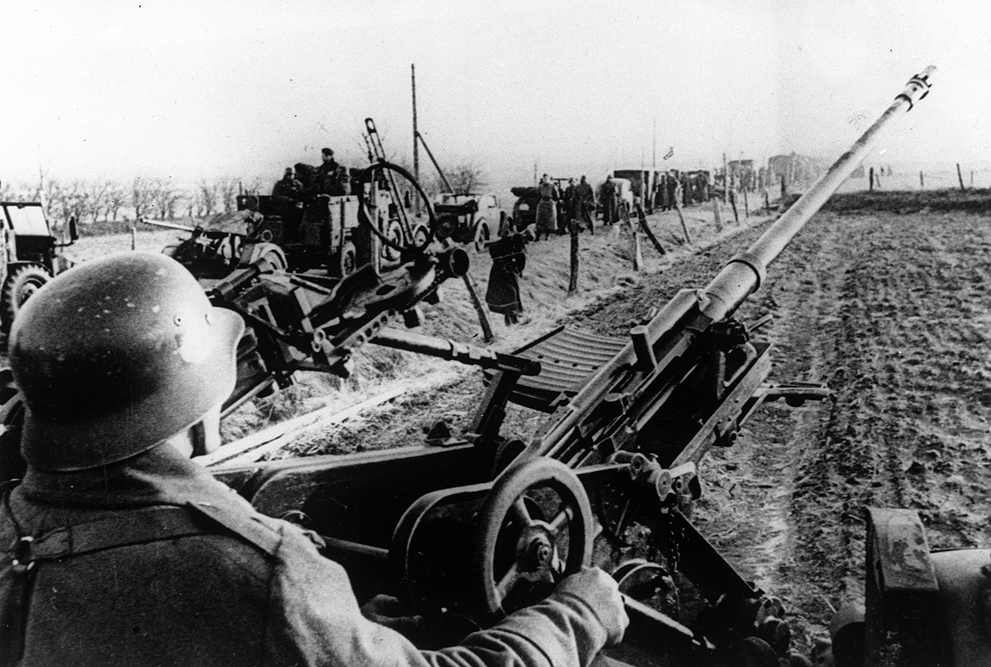

INCREDIBLE ! WWII Hedgerow Dug RELIC German WALTHER P038 Officers
PISTOL - ( Battlefield recovered near Villers-Bocage )
Here is a very cool relic German P38 Pistol that was recovered in the Vilers Bocage area. The pistol is inert and displays very nice missing the handle frame the clip which was dug nearby fits and makes the pistol appear complete. A fine display relic of a rare to find and nontheless to find a Battlefield example. Dont miss this chance ! BAt around 13:00 tanks of the Panzer Lehr Division advanced into Villers-Bocage, but unsupported by infantry found the going difficult. A group of four Panzer IV's attempted to push into the town's southern edge where they found a previously disabled Panzer IV, but as they moved further two tanks were knocked out by British anti-tank gunfire. Some of the Waffen-SS Tiger tanks were brought up and in an exchange of fire they silenced the anti-tank position. SS-Hauptsturmführer Möbius ordered the main counterattack to be launched in two thrusts; the first would advance down the main highway through Villers-Bocage while the second would cut through the southern section of the town parallel to the main road. The objective was to secure the town centre.The Tigers moving along the main road advanced slowly, their commanders confident that they could intimidate the British into withdrawing. However, as they reached the town square they ran into Cotton's ambush. The Firefly, commanded by Sergeant Bramall,opened fire on the lead tank and missed, but the anti-tank gun supporting the position knocked it out.Now alerted to the ambush, a following group of three Tigers split up. Picking their way through the back streets in an attempt to flank the British, one was engaged by an anti-tank gun and destroyed. The other two were tackled by infantry using PIAT anti-tank weapons; one was knocked out and the other immobilisedoth the Panzer Lehr and 2nd Panzer Divisions were in action across the entire sector on 13 June and did not count the casualties sustained at Villers-Bocage separately from all losses incurred that day. However, the 101st SS Heavy Panzer Battalion was only engaged at Villers-Bocage, so this unit's losses are available. Taylor gives nine men killed and 10 wounded in the 1st Company and one killed and three wounded in the 2nd. Sources differ widely on the number of German tanks lost during 13 June—in part because elements of the Panzer Lehr Division were committed piecemeal making it impossible to be certain of the number of Panzer IVs knocked out. German tank losses are generally placed at between eight and fifteen tanks, including six Tiger Is. Chester Wilmot notes what a costly loss this was, as there were only 36 Tiger tanks in Normandy at that time. However, Taylor concedes that the numbers claimed by the British probably include tanks that were immobilised but subsequently recovered.
SOLD
.jpg)
.jpg)
.jpg)
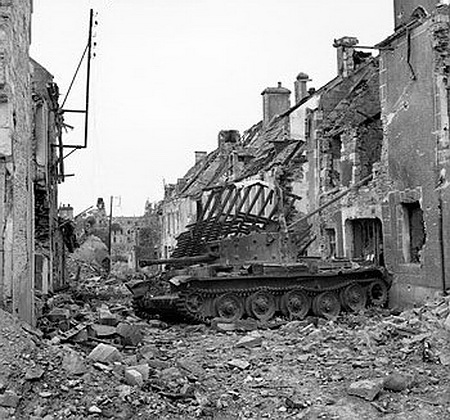
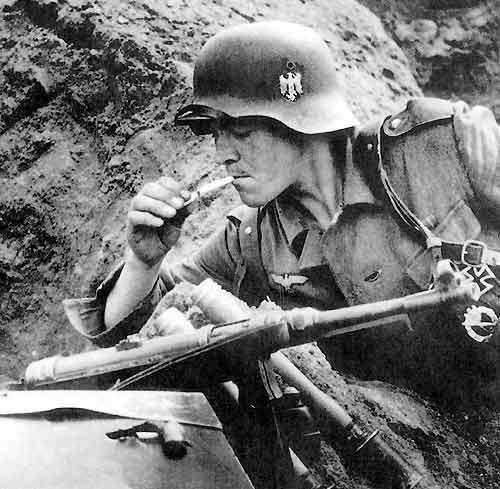
RARE Dug WW2 GERMAN WAFFEN SS ID
TAG - WAFFEN-SS PRINZ EUGEN - 7TH Mountain Division 5th Artillery -
Menumos Estate
The title Prinz Eugen comes from the German spelling of the name Francois
Eugene, Prince of Savoy, who lived from 1663 to 1736. Born in Paris,
France, Eugene is known to history as being one of the greatest European
soldiers of all time. After being refused a commission in the French
army by King Louis XIV, Eugene entered the service of the Holy Roman
Emperor Leopold I in 1683, to fight against the Ottoman Turks Made field
marshal in 1693, Prince Eugene was the commander and diplomat who led
the military campaigns that would lay the foundations for Habsburg power
in central Europe. He fought the Turks at Vienna, and helped to establish
the Austrio-Hungarian empire. He also fought against France in two wars,
and while in command of the imperial army he helped Marlborough in several
battles during the War of the Spanish succession. Later, Prince Eugene
won several further victories against the Turks, capturing Belgrade
in 1718. After a fairly long process of attempting to form an SS Division
from the rather large Volksdeutsche community living outside of Germany,
and not to meerly incorporate them into other various Wermacht units,
Gottlob Berger (As head of the SS recruiting office) managed to help
secure the 7th Division of the SS. The 7th Division of the SS was formed
from the Volksdeutsche living in the Serbian and Croatian areas of Yugoslavia
through volunteers, and then through conscription. The Division was
initially established in March of 1942 from a SS Selbstschutz (SS Protection
Force) and the Einsatz-Staffel (Also called Prinz Eugen) from Croatia.
German combat groups "North", "West", and "South"
proceeded along a front through the Chetnik territory in the direction
of combat group "East", which was assigned the role of forming
a wall to stop the Chetniks. However, Keserović had intelligence
about the preparations and the movement of large German forces for an
attack, and did not consider it useful to meet the German and Bulgarian
forces on a wide front. He ordered his units to regroup into smaller
squads for easy maneuvering and penetration. His tactic meant the Chetnik
Rasina Corps was able to escape from the ring of enemy soldiers. The
Germans and Bulgarians committed reprisals against the civilian population
and burned several villages. The village of Kriva Reka, the location
of Keserović's headquarters, suffered the most: 120 civilians were
locked in the village church and burned to death by members of the 7th
SS Division. In other villages in Kopaonik 300 civilians were killed;
in the villages on Mount Goč 250 civilians were executed. The Germans
killed a total of 670 civilians during this operation.The division's
next action was in the Serbian-Montenegro border in the mountains east
of the Ibar River and afterwards it took part in the Fourth anti-Partisan
Offensive in the Zagreb-Karlovac area, where together with Italian forces
attempted to defeat the Partisans commanded by Josip Broz Tito, the
operation failed and most of the Partisans managed to evade the main
attack.
SOLD
.jpg)
.jpg)
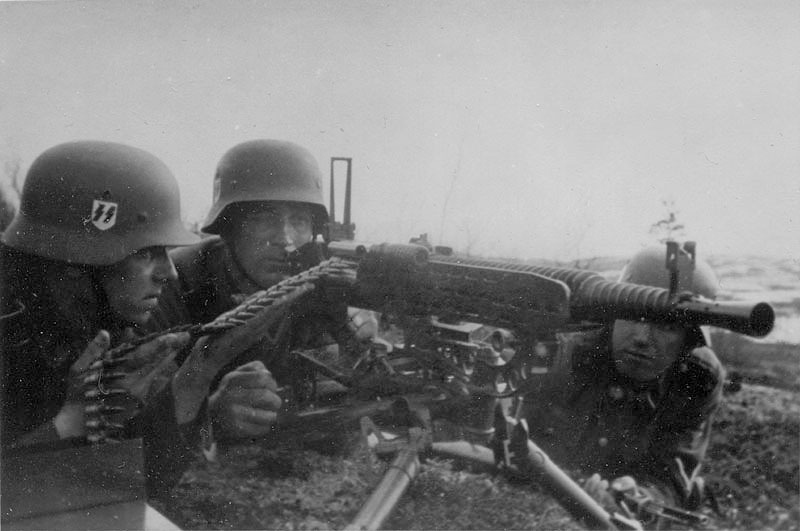
.jpg)

RARE HISTORIC Original Ground Dug
"Battlefield Relic" lot of German "6th ARMY" WEHRMACHT
"ARMY" HEADQUARTERS Bunker KEYS - ( Excavated in a Bunker
- STALINGRAD / GUMRAK )
Here is a relic that you will rarely ever see ! This lot of WW2 German
BUNKER KEYS was ground excavated STALINGRAD ! A fantastic unique WW2
artifact to add to your collection. The Battle of Stalingrad (23 August
1942 – 2 February 1943) was a major battle of World War II in
which Nazi Germany and its allies fought the Soviet Union for control
of the city of Stalingrad (now Volgograd) in the south-western Soviet
Union. Marked by constant close quarters combat and direct assaults
on civilians by air raids, it is the single largest and bloodiest battle
in the history of warfare. The heavy losses inflicted on the Wehrmacht
make it arguably the most strategically decisive battle of the whole
war. It was a turning point in the European theatre of World War II–the
German forces never regained the initiative in the East and withdrew
a vast military force from the West to replace their losses.The German
offensive to capture Stalingrad began in late summer 1942 using the
6th Army and elements of the 4th Panzer Army. The attack was supported
by intensive Luftwaffe bombing that reduced much of the city to rubble.
The fighting degenerated into building-to-building fighting, and both
sides poured reinforcements into the city. By mid-November 1942, the
Germans had pushed the Soviet defenders back at great cost into narrow
zones generally along the west bank of the Volga River. On 19 November
1942, the Red Army launched Operation Uranus, a two-pronged attack targeting
the weaker Romanian and Hungarian forces protecting the German 6th Army's
flanks. The Axis forces on the flanks were overrun and the 6th Army
was cut off and surrounded in the Stalingrad area. Adolf Hitler ordered
that the army stay in Stalingrad and make no attempt to break out; instead,
attempts were made to supply the army by air and to break the encirclement
from the outside. Heavy fighting continued for another two months. By
the beginning of February 1943, the Axis forces in Stalingrad had exhausted
their ammunition and food. The remaining elements of the 6th Army surrendered.
The battle lasted five months, one week, and three days.
SOLD
_(640x480).jpg)
.jpg)
.jpg)
.jpg)
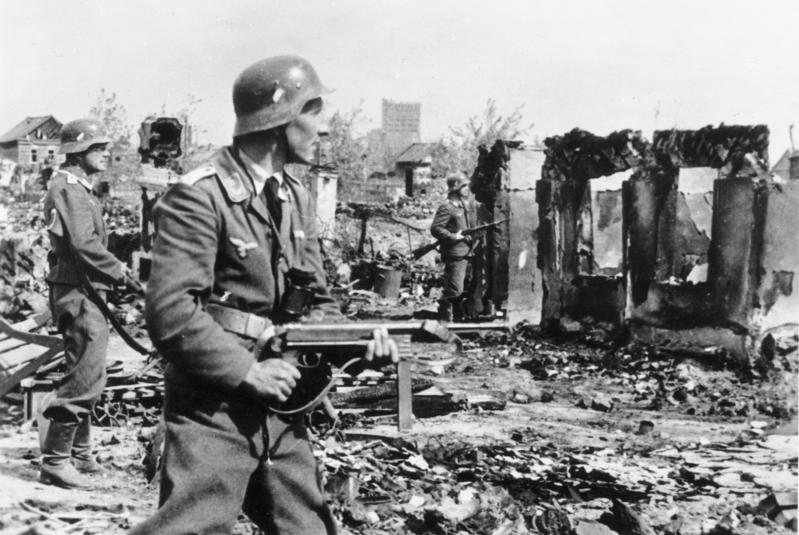
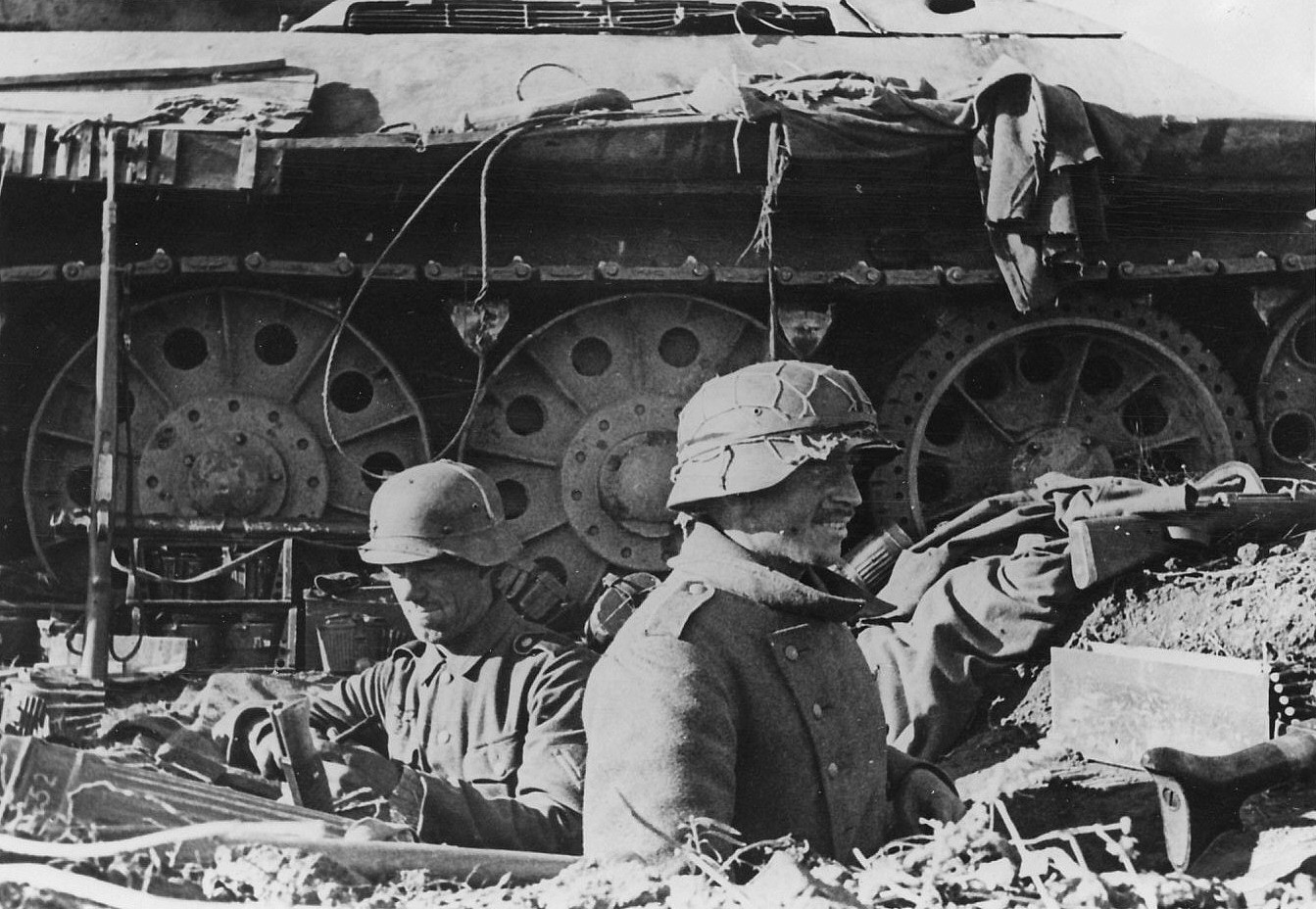
VERY RARE Ground Dug Relic German ANTI-TANK
"Panzerschreck Shield" ! ( Stalingrad Recovery )
Here is a nice ground dug relic german anti-tank panzerschreck shield
that was excavated near Stalingrad. The Battle of Stalingrad was a major
battle of World War II in which Nazi Germany and its allies fought the
Soviet Union for control of the city of Stalingrad (now Volgograd) in
southwestern Russia. The battle took place between 23 August 1942 and
2 February 1943. It was among the largest on the Eastern Front and was
marked by its brutality and disregard for military and civilian casualties.
It was amongst the bloodiest battles in the history of warfare with
the higher estimates of combined casualties amounting to nearly two
million deaths. In its defeat, the crippling losses suffered by Germany's
military proved to be insurmountable for the war. The battle was a turning
point in the war, after which the German forces attained no further
strategic victories in the East.The German offensive to capture Stalingrad
commenced in late summer 1942, supported by intensive Luftwaffe
bombing which reduced much of the city to rubble. The German offensive
eventually became bogged down in house-to-house fighting; and despite
controlling over 90% of the city at times, the Wehrmacht was
unable to dislodge the last Soviet defenders clinging tenaciously to
the west bank of the Volga River.
SOLD
.jpg)
.jpg)
.jpg)
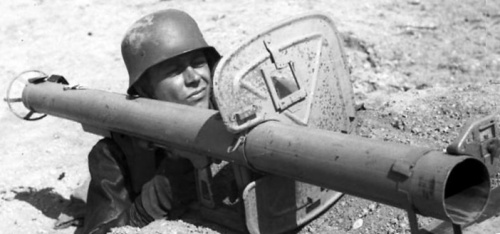
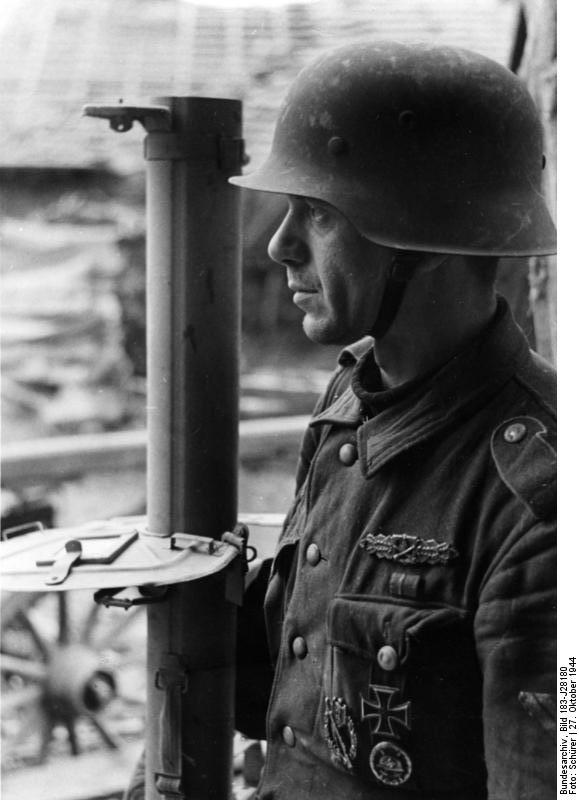
FANTASTIC WW2 Relic "Battlefield Recovered" WINTER CAMO MEDICS "Battle Damaged" RUSSIAN Helmet ! - ( Demyansk Pocket Eastern Front )
Incredible Demjansk "battlefield
recovered" Russian Winter Camo Medics helmet with horrific "battle
damage" being strafed with MG fire as can be seen by the pattern.
The paint is in excellent preserved condition. A fine example of an
extremely rare helmet .On 21 March 1942, German forces under the command
of Generalleutnant Walther von Seydlitz-Kurzbach attempted
to leave through the "Ramushevo corridor". Over the next several
weeks, this corridor was widened. A battle group was able to break out
of the siege on 21 April, but the fighting had taken a heavy toll. Out
of the approximately 100,000 men trapped, there were 3,335 lost and
over 10,000 wounded. However, their strong resistance had tied up numerous
Soviet units at a critical moment, units that could have been used elsewhere.
Instrumental in the German breakout, was the first time use of the Mkb-42(H),
which would later be re-designated the MP-43 and then finally the StG-44.Between
the forming of the pocket in early February to the virtual abandonment
of Demyansk in May, the two pockets (including Kholm) received 65,000
short tons (59,000 t) of supplies (both through ground and aerial delivery),
31,000 replacement troops, and 36,000 wounded were evacuated. However,
the cost was significant. The Luftwaffe lost 265 aircraft,
including 106 Junkers Ju 52, 17 Heinkel He 111 and two Junkers Ju 86
aircraft. In addition, 387 airmen were lost. The Soviet Air Forces lost
408 aircraft, including 243 fighters, in a bid to crush the pocketFighting
in the area continued until 28 February 1943. The Soviets did not liberate
Demyansk until 1 March 1943, with the retreat of the German troops.
For his excellence in command and the particularly fierce fighting of
his elite unit, 3. SS Division Totenkopf, SS-Obergruppenführer
Theodor Eicke was the 88th person to be awarded the Oak Leaves to the
Knight's Cross on 20 May 1942. The success of the Luftwaffe
convinced Reichsmarschall Hermann Göring and Hitler that
they could conduct effective airlift operations on the Eastern front.[Göring
later proposed a similar "solution" to supply the 6. Armee
when it was surrounded in Stalingrad. In theory, the outcome could be
equally advantageous; with the 6. Armee trapped, but still
in fighting condition, the Soviet army would have to use up much of
its strength to keep the pocket contained. This could allow other German
forces to re-group and mount a counterattack. However, the scale of
the forces trapped in the two operations differed greatly. While a single
corps (about ⅓ of an army) with about six divisions was encircled
in Demyansk, in Stalingrad, an entire and greatly reinforced army was
trapped. Whereas the Demyansk and Kholm pockets together needed around
265 t (292 short tons) of supplies per day, the 6. Armee required
an estimated daily minimum of 800 t (880 short tons), delivered over
a much-longer distance and faced by a much better organised Red Air
Force. The air transport force had already suffered heavy losses, and
was much further away from good infrastructure. The Luftwaffe
simply did not have the resources needed to supply Stalingrad.
SOLD
.jpg)
.jpg)
.jpg)
.jpg)
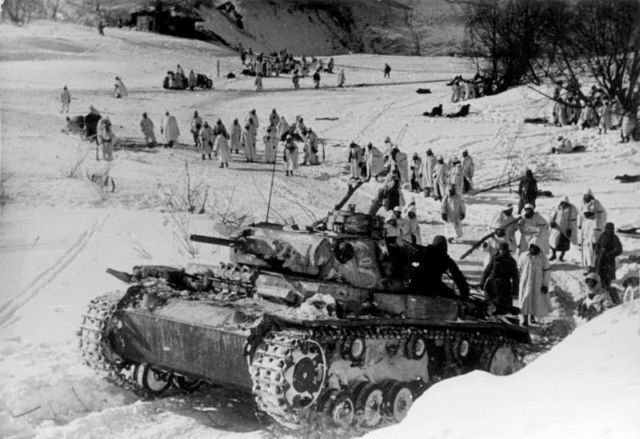
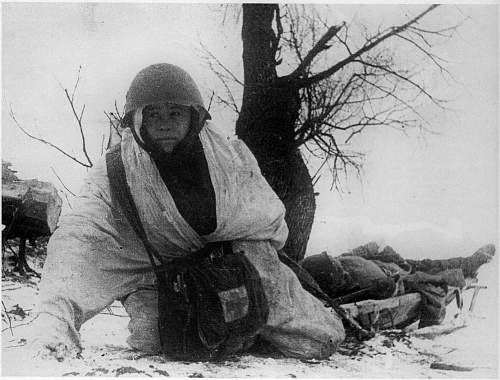
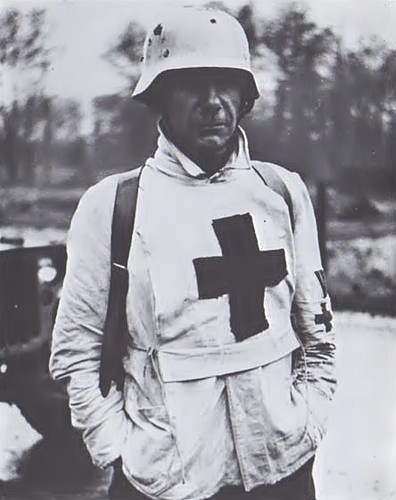

BEAUTIFUL RELIC CONDITION German WW2 SS SD Model 35/40 large Size Helmet Shell - ( Barn Find Near Walomim, Poland Battle Site )
Here is a nice solid with minimal ground action German SS M35/40 SD with faint but visible runes. A fine example. In response to Vedeneev's thrust, the Germans started a tactical counter-attack near Radzymin on July 31. The offensive, carried out by 4 understrength Panzer divisions,was to secure the eastern approaches to Warsaw and Vistula crossings, and aimed to destroy the three tank corps of the Second Tank Army in detail. Under the leadership of German Field Marshal Model, the 4th, 19th, Hermann Göring, and 5th SS Panzer Divisions were concentrated from different areas with their arrival in the area of Wołomin occurring between July 31 and August 1, 1944. Although the 3rd Tank Corps gamely defended the initial assaults of the Hermann Göring and 19th Panzer Divisions, the arrival of the 4th Panzer and 5th SS Panzer Divisions spelled doom for the isolated and outnumbered unit Already on August 1, the leading elements of the 19th and 5th SS Panzer Divisions, closing from the west and east respectively, met at Okuniew, cutting the 3rd Tank Corps off from the other units of the Second Tank Army. Pressed into the area of Wołomin, the 3rd Tank Corps was pocketed and destroyed on August 3, 1944. Attempts to reach the doomed tank corps by the 8th Guards Tank Corps and the 16th Tank Corps failed, with the 8th Guards Tank Corps taking serious losses in the attempt. Although Model had planned to attack the 8th Guards Tank Corps next, the withdrawal of the 19th and Hermann Göring Panzer Divisions to shore up the German defenses around the Magnuszew bridgehead forced the remaining German forces around Okuniew to go on the defensive For unknown reasons, on August 2, 1944 all armies that were to assault Warsaw had their orders changed. The 28th, 47th and 65th Armies were ordered to turn northwards and seize the undefended town of Wyszków and the Liwiec river line. The 2nd Tank Army was left in place and had to fight the Germans alone, without support of the infantry. Also, 69th Army was ordered to stop while the 8th Guards Army under Vasily Chuikov was ordered to halt the assault and await a German attack from the direction of Garwolin. Further combat lasted until August 10, when the Germans finally withdrew. Soviet losses were heavy, but not heavy enough to affect the overall course of their thrust to the vicinity of Warsaw. The 3rd Tank Corps was destroyed, the 8th Guards Tank Corps took heavy losses, and the 16th Tank Corps took significant losses as well. Overall, the Second Tank Army's losses were significant enough that it was withdrawn from the front lines by August 5, 1944.
SOLD
.jpg)
.jpg)
.jpg)
.jpg)
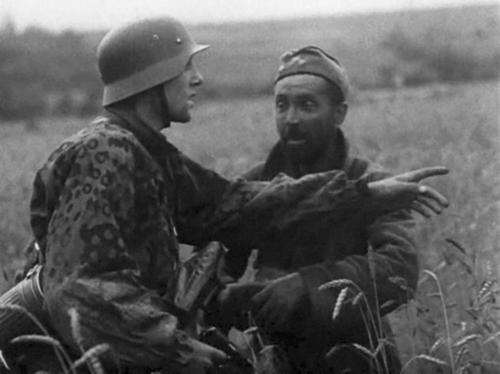
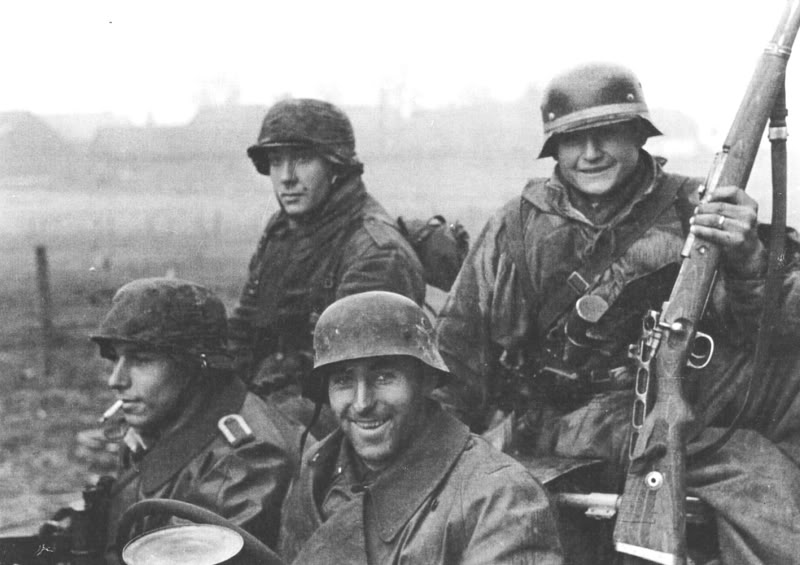

EXTREMELY RARE ! "Battle Damaged"
WW2 German Waffen-SS DD M35/40 Helmet Shell - ( Recovered NARVA Battle
Area )
Here is a rare battle damaged German Model 35/40 DD SS Helmet shell
with both decals faint but visible. Nice Battle Damage and the plus
is the inner liner ring still in place as dug. A very historic artifact
with a great look ! Launching the Kingisepp–Gdov Offensive on
1 February, the 2nd Shock Army's 109th Rifle Corps captured the town
of Kingisepp on the first day. The 18th Army was forced into new positions
on the eastern bank of the Narva River.Forward units of the 2nd Shock
Army crossed the river and established several bridgeheads on the west
bank to the north and south of the city of Narva on 2 February. The
2nd Shock Army expanded the bridgehead in the Krivasoo Swamp south of
Narva five days later, temporarily cutting the Narva–Tallinn Railway
behind the III SS Panzer Corps. Govorov was unable to encircle the smaller
German Army Group, which called in reinforcements. These came mostly
from the newly mobilised Estonians, motivated to resist the looming
Soviet return. At the same time, the Soviet 108th Rifle Corps landed
units across Lake Peipus 120 kilometres south of Narva and established
a bridgehead around the village of Meerapalu. By a coincidence, the
I.Battalion, SS Volunteer Grenadier Regiment 45 (1st Estonian), which
was headed for Narva, reached the same area. A battalion of the 44th
Infantry Regiment (consisting of personnel from East Prussia), the I.Battalion,
1st Estonian and an air squadron destroyed the Soviet bridgehead on
15–16 February. The Mereküla Landing Operation was conducted
as the 517-strong 260th Independent Naval Infantry Brigade landed at
the coastal borough of Mereküla behind the Sponheimer Group lines.
However, the unit was almost completely.annihilated. Dont let this one
get away !
SOLD - LAYAWAY
.jpg)
.jpg)
.jpg)
.jpg)
.jpg)
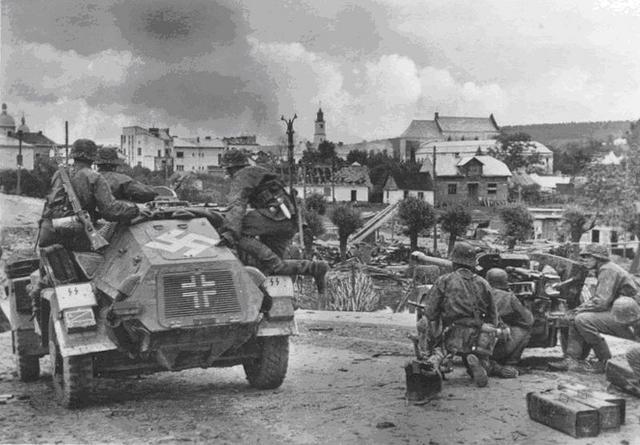
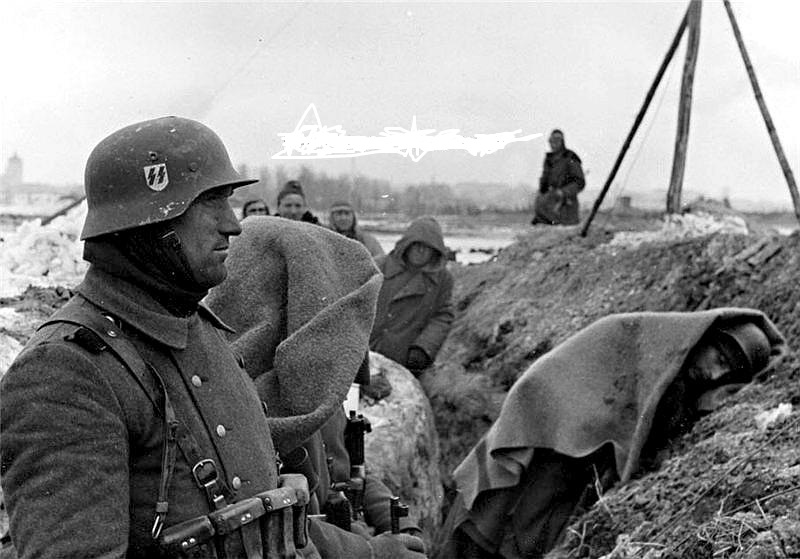
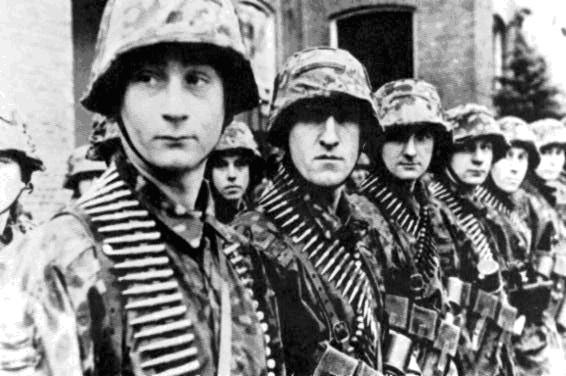
RARE ADDITION ! Ground Dug German WAFFEN-SS SD M35/40 Relic HELMET SHELL - ( Recovered Huertgenwald )
Here is one of the final helmets from my personal collection. A ground dug but clear dug metallic runes M35/40 SD Shell that was recovered in Huertgewald. A wonderful relic that will be the highlight of your collection. The Battle of Hürtgen Forest is the name given to the series of fierce battles fought between U.S. and German forces in the Hürtgen Forest, which became the longest battle on German ground during World War II, and the longest single battle the U.S. Army has ever fought in its history. The battles took place between September 14, 1944, and February 10, 1945, over barely 50 square miles, east of the Belgian–German border. In early December, the Division moved north to the Hurtgen Forest in Germany to relieve elements of the 4th Infantry Division which was fighting within the Siegfried Line. Despite ankle-deep mud, heavy enemy artillery barrages and fanatical Nazi resistance, the 83rd slugged its way out of the dense forest and seized the western bank of the Roer River in the vicinity of Duren. Seven key villages guarding the approaches to the Roer fell to the 83rd as the enemy retreated. Stiffest resistance was met in the villages of Gey, Gurzenich, and Strass. The 331st Infantry broke the backbone of the resistance at Gey, while in Strass the 3rd Battalion of the 330th Infantry was cut off for three days and subjected to heavy enemy counterattacks. Despite their precarious position, the men of the battalion fought off the Germans and took more than 150 prisoners during the siege. Finally the 3rd Battalion of the 329th hammered its way into the village and routed the Germans. Patrols from the 329th Infantry entered Duren after the regiment took the village of Gurzenich directly opposite the city. This was the deepest penetration of German soil made by any American force during 1944.
SOLD
.jpg)
.jpg)
.jpg)
.jpg)
.jpg)
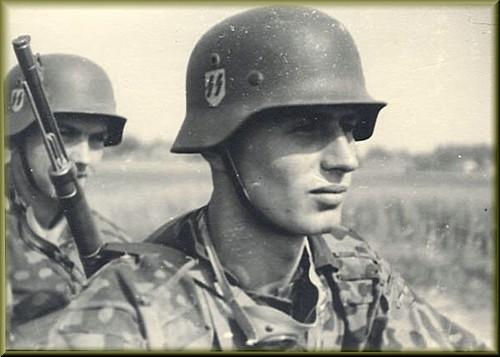
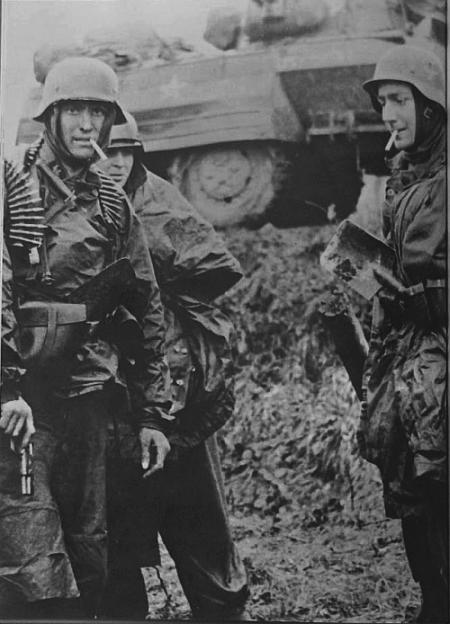
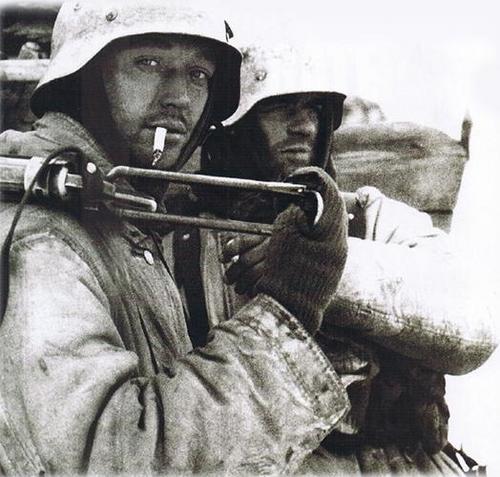
RARE and HISTORIC WW2 M40/SD German
Wehrmacht "Battlefield Battle-Damaged" Machine Gun Riddled
HELMET
( Recovered 295th Infantry Division Positions, Stalingrad )
Here is great display M40 SD German Infantry helmet with brutal bullet
strikes and still retains the SD Wehrmacht from Stalingrad 295th Infantry
Positions. November the 9th the harsh Russian winter arrived in earnest,
as the temperature dropped to -18°C. The Volga, one of the last
rivers in Russia to freeze began to clog with ice flows. On the 11th
of November the final German assault began. Battle groups assembled
from the 71st, 79th, 100th, 295th, 305th and 389th Infantry Divisions
attacked the remaining pockets of resistance. An airel bombardment opened
the offensive, which thrust towards the Lazur Chemical factory and the
Mamayev Kurgan. While the Russian 138th Infantry Division fought desperately
to hold on to their position to the east of the Barrikady plant the
95th Rifle Division counter attacked to the plants south east, but was
halted by heavy German shelling.Within 48 hours the main thrust of the
attack had disintigrated into a series of isolated battles. Small groups
of German infantry reached the Volga, but were then cut off themselves
as Russian forces infiltrated their rear. By the 18th exhaustion and
a lack of ammunition saw the attack come to an end. The division lost
16 NCOs/enlisted killed in action; two officers and 42 NCOs/enlisted
were wounded in action. The division reported that of its seven infantry
battalions, four were weak and three were exhausted in combat power;
the division rated its combat engineer battalion as average.
$ 190
.jpg)
.jpg)
.jpg)
.jpg)
.jpg)


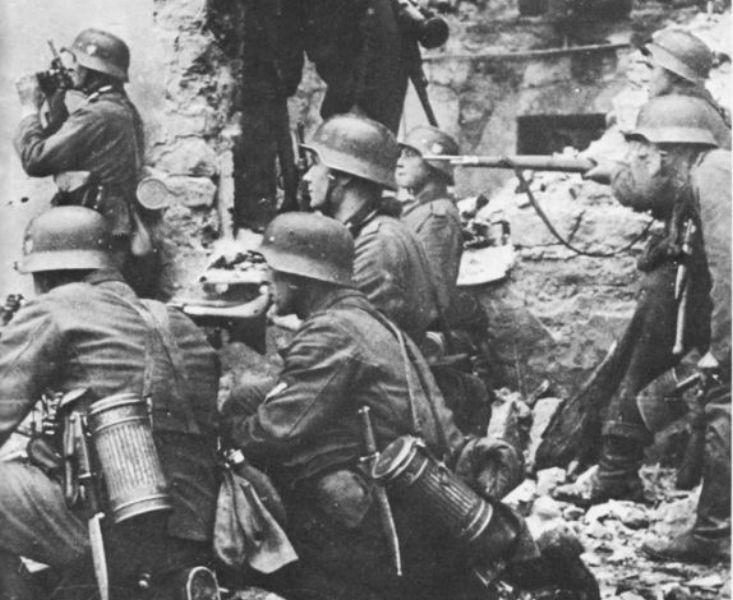

RARE HISTORIC Battlefield "BATTLE-DAMAGED" Pair of ARTILLERY SHELLS and a Large TAIL FIN SECTION of PROJECTILE ( Recovered Bastogne )
Here is a chance to own a historic and incredible US artifacts dug up from Bastogne. These were found with a metal detector near Bastogne. A pair of "battle damaged" artillery shells and a tail fin section from a projectile. Panzer columns took the outlying villages and widely separated strongpoints in bitter fighting, and advanced to points near Bastogne within four days. The struggle for the villages and American strongpoints, plus transport confusion on the German side, slowed the attack sufficiently to allow the 101st Airborne Division (reinforced by elements from the 9th and 10th Armored Divisions) to reach Bastogne by truck on the morning of 19 December. The fierce defense of Bastogne, in which American paratroopers particularly distinguished themselves, made it impossible for the Germans to take the town with its important road junctions. The panzer columns swung past on either side, cutting off Bastogne on 20 December but failing to secure the vital crossroads. In the extreme south, Brandenberger's three infantry divisions were checked by divisions of the U.S. VIII Corps after an advance of 6.4 km (4 mi); that front was then firmly held. Only the 5th Parachute Division of Brandenberger's command was able to thrust forward 19 km (12 mi) on the inner flank to partially fulfill its assigned role. Eisenhower and his principal commanders realized by 17 December that the fighting in the Ardennes was a major offensive and not a local counterattack, and they ordered vast reinforcements to the area. Within a week 250,000 troops had been sent. General Gavin of the 82nd Airborne Division arrived on the scene first and ordered the 101st to hold Bastogne while the 82nd would take the more difficult task of facing the SS Panzer Divisions; it was also thrown into the battle north of the bulge, near Elsenborn Ridge.
$ 240 for all !
.jpg)
.jpg)
%20(1).jpg)
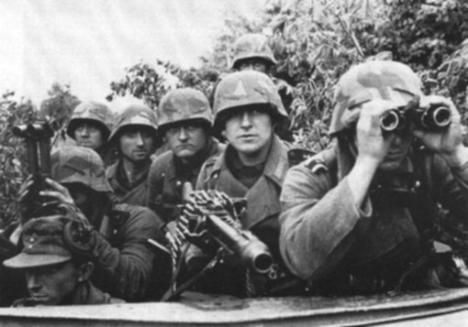
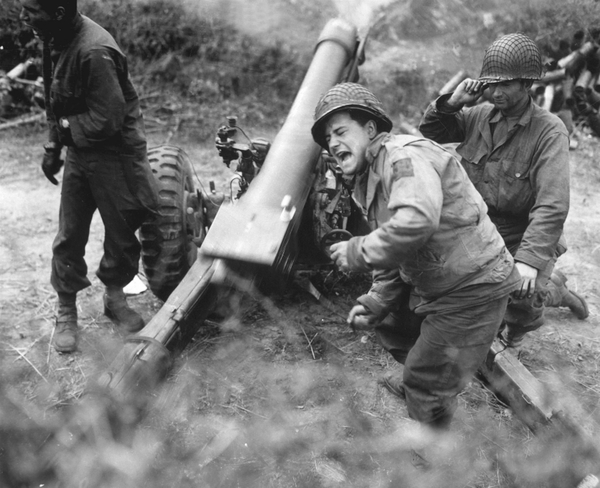
RARE WWII German NAZI Relic MAUSER HSC Officers PISTOL - ( Recovered Falaise Pocket "The Corridor of Death" )
Here is an awesome relic. A Nazi ground dug HSC MAUSER PISTOL. This relic was ground dug in the Falaise area. Known as the "Corridor of Death". The battle of the Falaise Pocket, fought during the Second World War from 12–21 August 1944, was the decisive engagement of the Battle of Normandy. Taking its name from the area around the town of Falaise within which the German Seventh and Fifth Panzer Armies became encircled by the advancing Western Allies, the battle is also referred to as the Falaise Gap after the corridor which the Germans sought to maintain to allow their escape. The battle resulted in the destruction of the bulk of Germany's forces west of the River Seine, and opened the way to Paris and the German border.Following Operation Cobra, the successful American breakout from the Normandy beachhead, rapid advances were made to the south, the south-east, and into Brittany. Despite lacking the resources to cope with both the US penetration and simultaneous British and Canadian offensives around Caen, Field Marshal Günther von Kluge, in overall command of German armed forces on the Western Front, was not permitted by Adolf Hitler to withdraw; instead he was ordered to counterattack the Americans around Mortain. However, the remnants of four panzer divisions, which was all that von Kluge could scrape together, were not strong enough to make any impression on the United States First Army, and Operation Lüttich was a disaster that merely served to drive the Germans deeper into the Allied lines, leaving them in a highly dangerous position.
SOLD






.jpg)
.jpg)
.jpg)
.jpg)
.jpg)

.jpg)
.jpg)
.jpg)

.jpg)
.jpg)
.jpg)
















.jpg)
.jpg)
.jpg)
.jpg)


.jpg)
.jpg)
.jpg)










.jpg)
.jpg)
.jpg)















.jpg)
.jpg)
.jpg)
.jpg)
.jpg)
.jpg)









.jpg)
.jpg)




.jpg)
.jpg)
.jpg)
.jpg)
.jpg)


.jpg)
.jpg)
.jpg)
.jpg)


.jpg)
.jpg)
.jpg)
.jpg)


.jpg)

.jpg)
.jpg)
.jpg)
.jpg)



.jpg)
.jpg)
.jpg)

.jpg)


.jpg)
.jpg)
.jpg)
.jpg)


.jpg)
.jpg)
.jpg)




.jpg)
.jpg)
.jpg)
.jpg)
.jpg)
.jpg)
.jpg)

.jpg)
.jpg)
.jpg)
 (1).jpg)



.jpg)
.jpg)


.jpg)
.jpg)
.jpg)




.jpg)
.jpg)
.jpg)
.jpg)
.jpg)


.jpg)
.jpg)
.jpg)


.jpg)
.jpg)
.jpg)


.jpg)
.jpg)
.jpg)
.jpg)
.jpg)






.jpg)
.jpg)

.jpg)
.jpg)
.jpg)
.jpg)
.jpg)
.jpg)
.jpg)
.jpg)
.jpg)

.jpg)
.jpg)
.jpg)

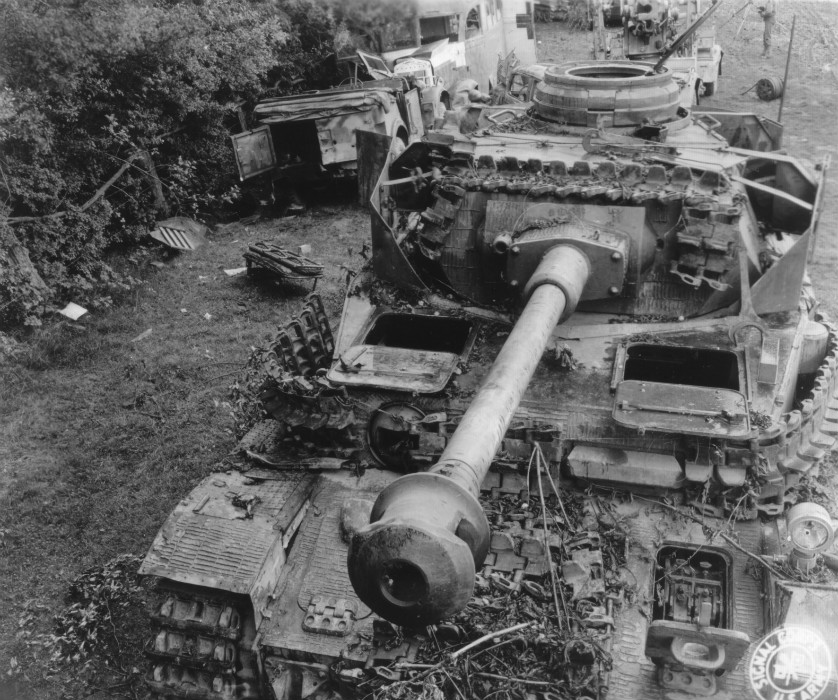
.jpg)
.jpg)
.jpg)
.jpg)
.jpg)
.jpg)

.jpg)
.jpg)
.jpg)
.jpg)



.jpg)
.jpg)
.jpg)
.jpg)

.jpg)
.jpg)
.jpg)
.jpg)
.jpg)
.jpg)



.jpg)
.jpg)
.jpg)
.jpg)
.jpg)
.jpg)
.jpg)
 (1).jpg)
.jpg)
.jpg)
.jpg)
.jpg)
.jpg)



.jpg)
.jpg)
.jpg)
.jpg)
.jpg)



.jpg)
.jpg)
.jpg)
.jpg)
.jpg)
.jpg)



.jpg)
.jpg)
.jpg)
.jpg)



.jpg)
.jpg)
.jpg)
.jpg)
.jpg)
.jpg)
.jpg)


.jpg)
.jpg)
.jpg)
.jpg)
.jpg)
.jpg)

.jpg)
.jpg)
.jpg)
.jpg)
.jpg)

.jpg)
.jpg)
.jpg)
.jpg)
.jpg)


.jpg)


.jpg)
.jpg)
.jpg)
.jpg)
.jpg)
.jpg)
.jpg)
.jpg)

.jpg)
.jpg)
.jpg)
.jpg)



.jpg)
.jpg)
.jpg)
.jpg)


.jpg)
.jpg)

.jpg)







.jpg)
.jpg)
.jpg)

